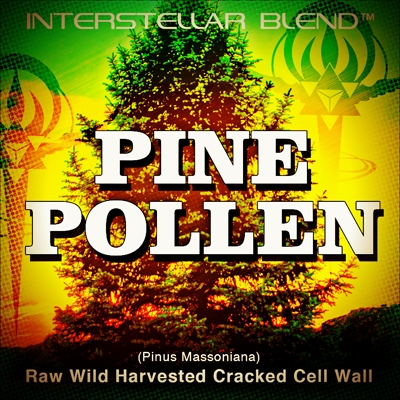
INTERSTELLAR PINE POLLEN FREE GIFT
November 28, 2022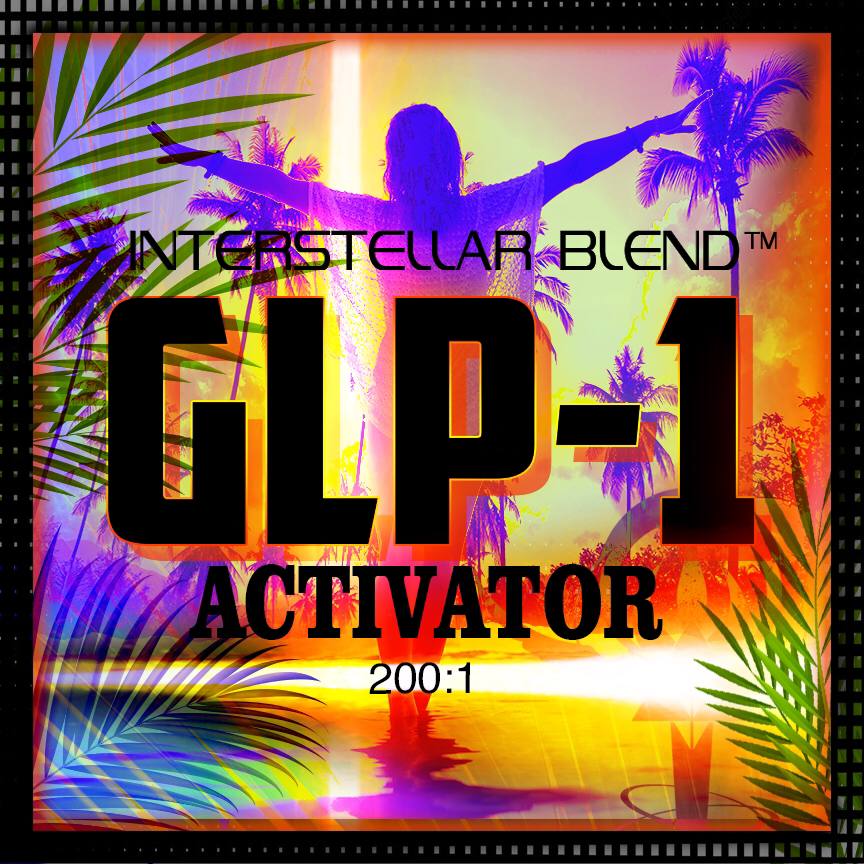
GLP-1 ACTIVATOR 200:1
August 14, 2023LUNG POWER 200:1 New!
$275.00
INTRODUCING
INTERSTELLAR BLEND™
LUNG
POWER
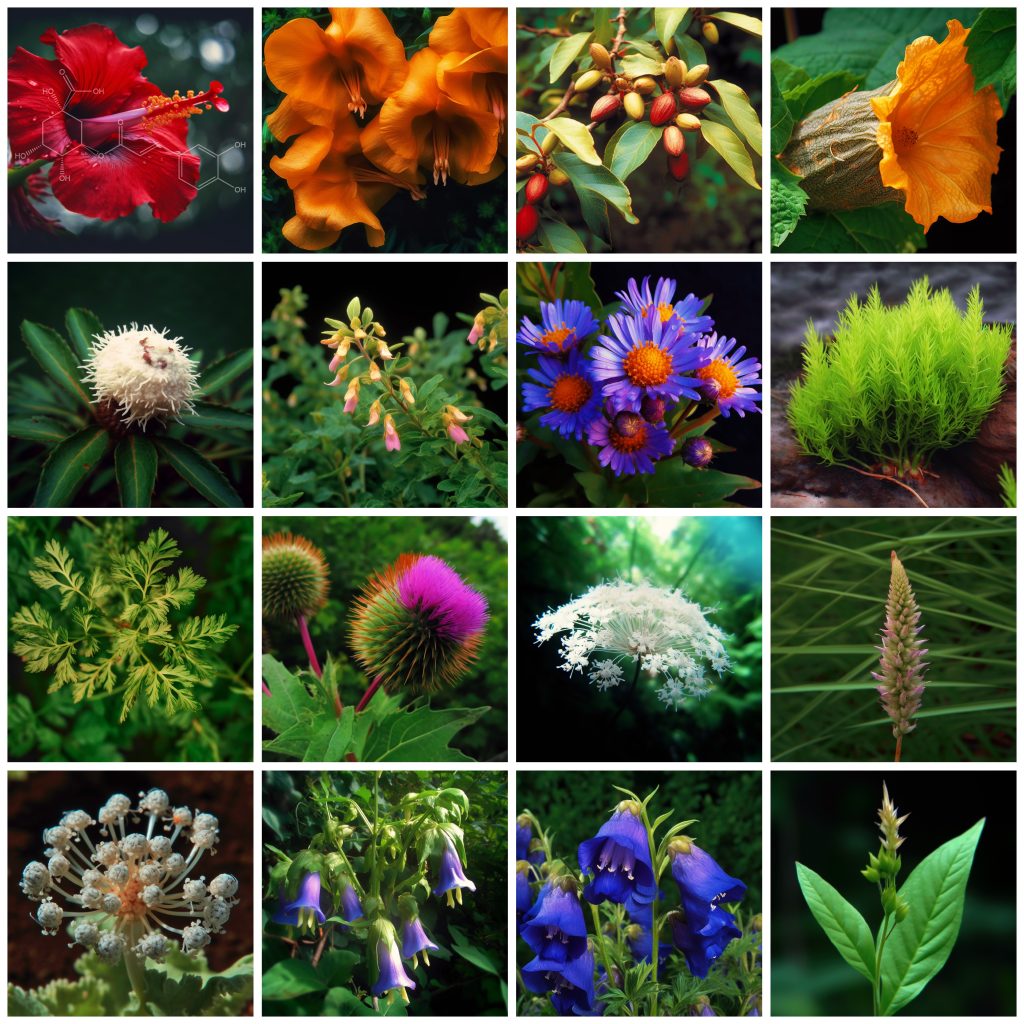
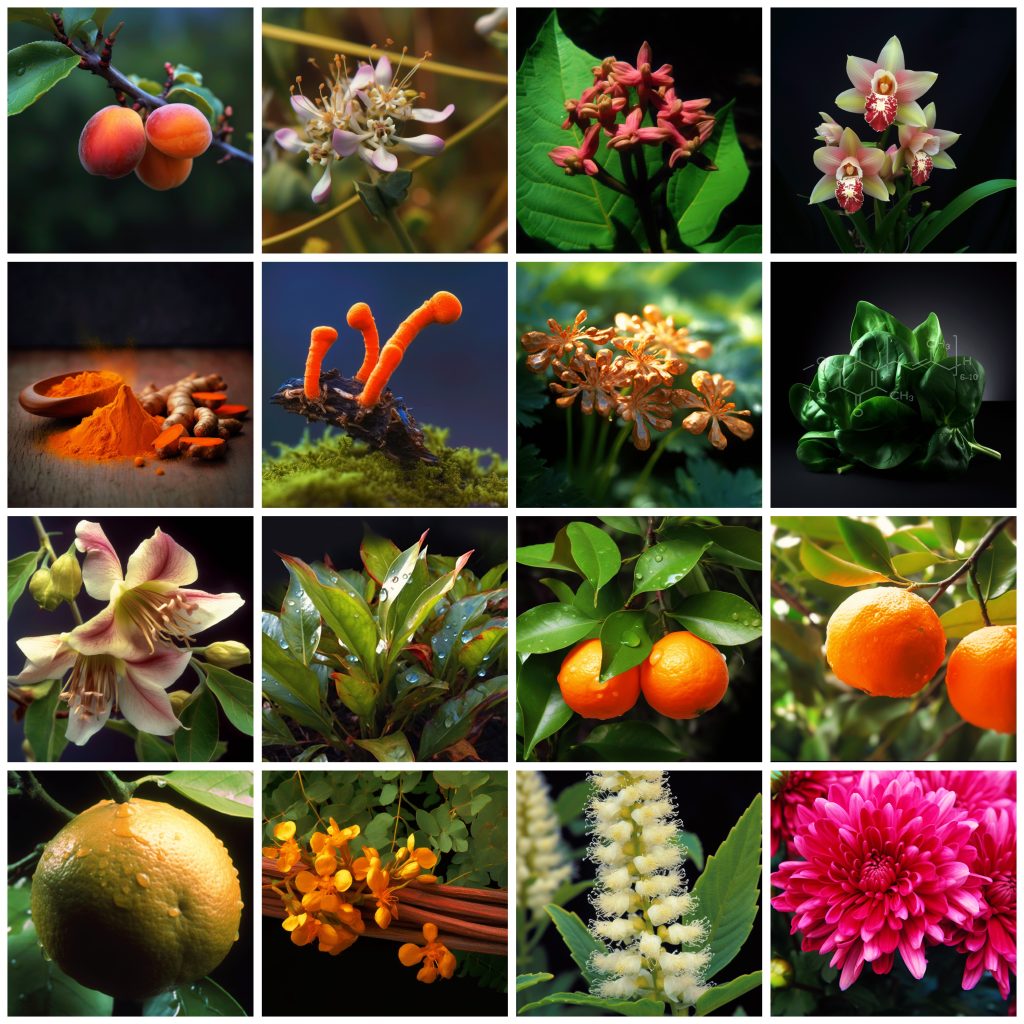


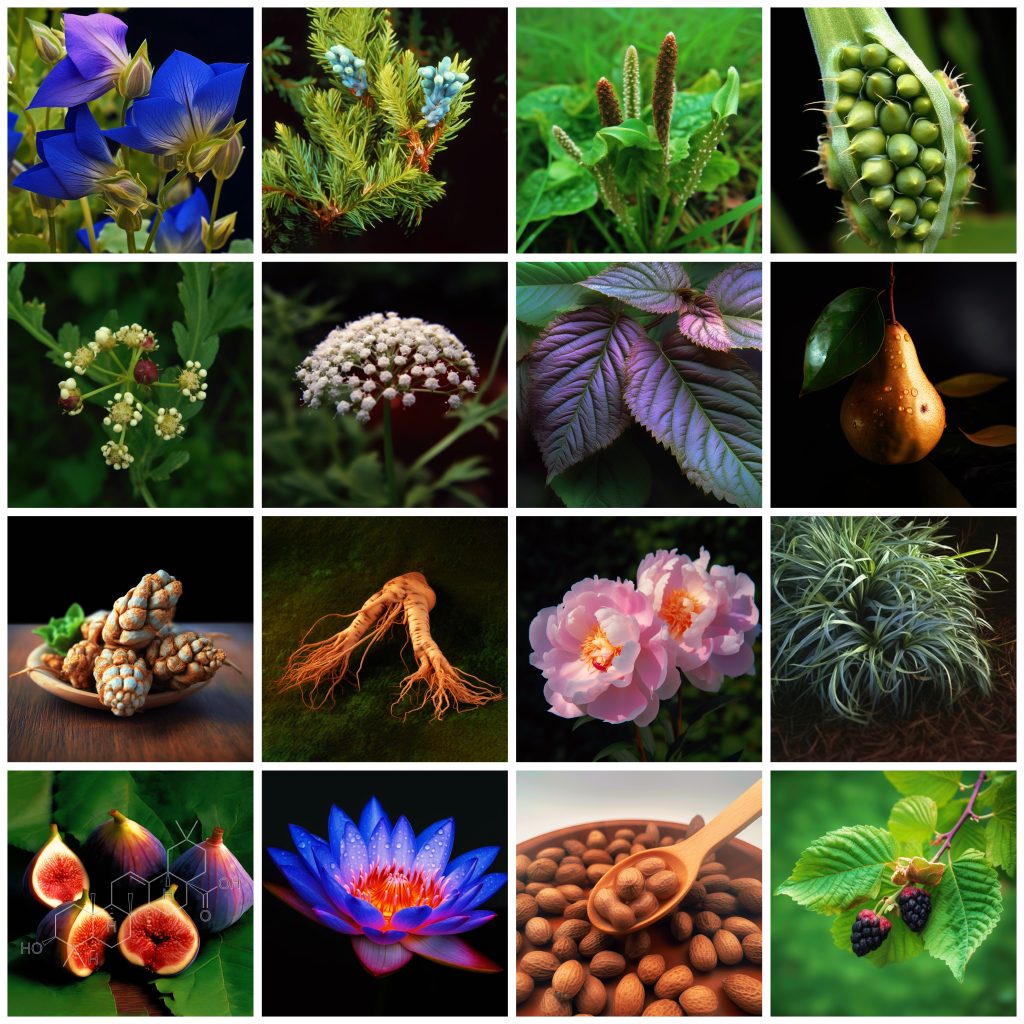
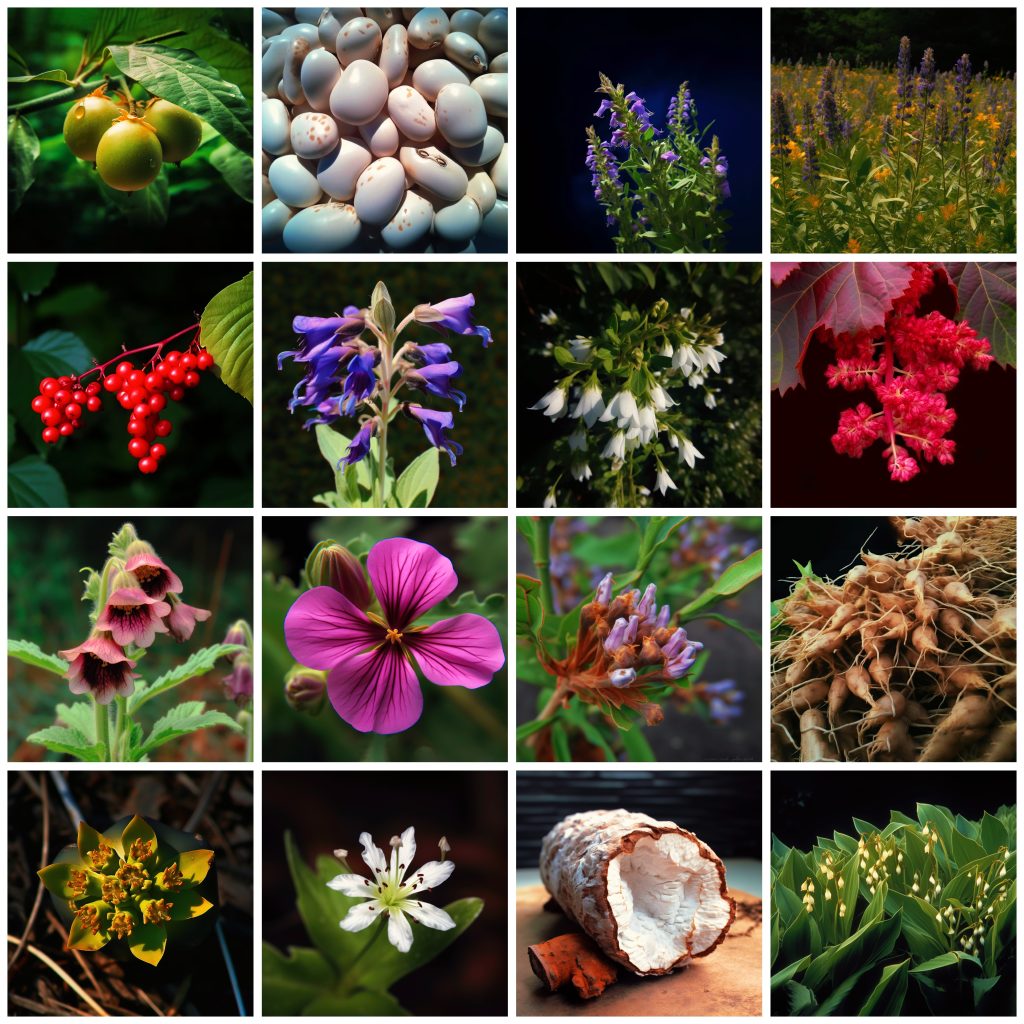
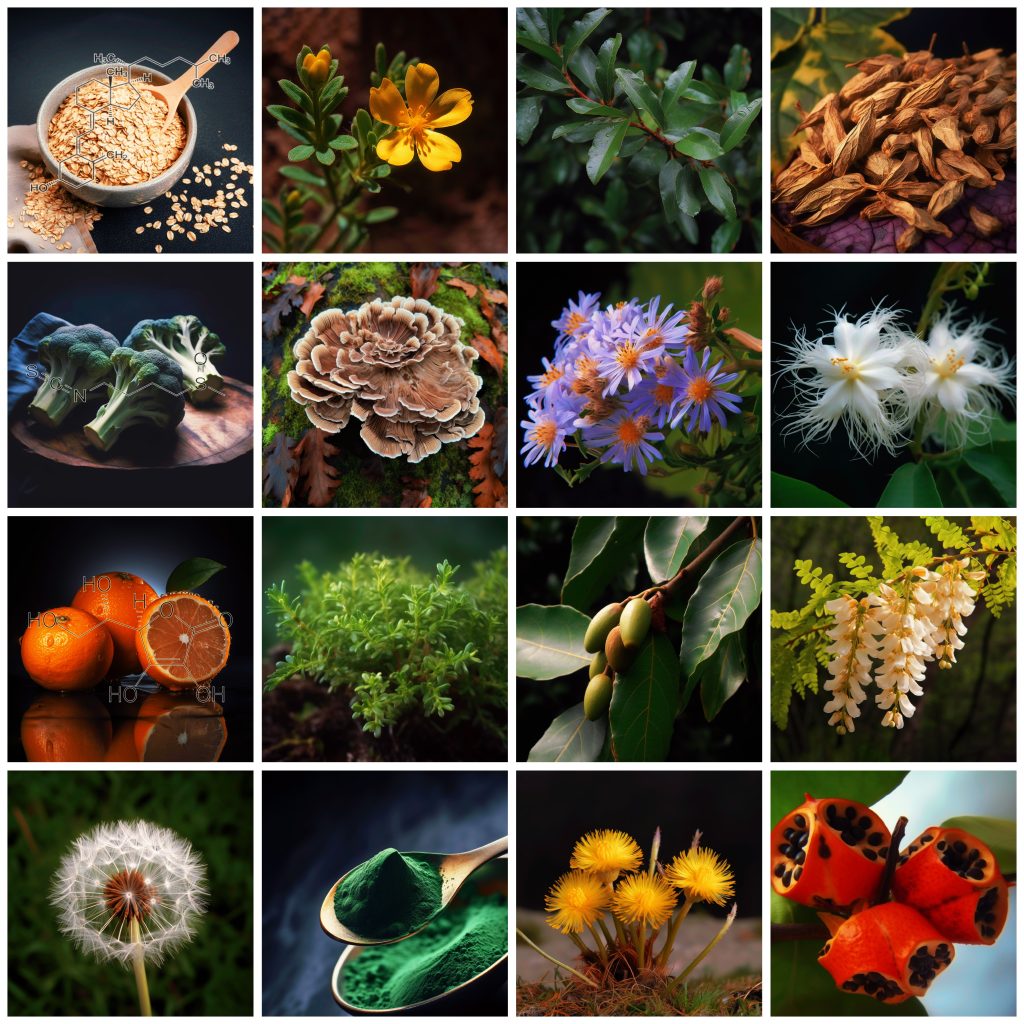 200:1 Concentration
200:1 Concentration
Featuring: Achyranthes Bidentata • Aconitum Carmichaelii Debx • Adenophora Tetraphylla • Adenophorae Radix • Anemarrhena Asphodeloides • Angelicae Sinensis Radix • Arctium Lappa L • Artemisiae Annuae Herba Artemisinin • Asparagus Cochinchinensis • Aster Tataricus • Astragalus Mongholicus Bunge • Atractylodes Macrocephala • Benincasa Hispida • Canarium Album • Cat’s Claw • Chlorogenic Acid • Chrysanthemum • Cimicifuga Heracleifolia • Cinnamomum Cassia • Citri Grandis Exocarpium • Citrus Aurantium • Citrus Reticulata Blanco Peel • Cmnamomi Ramulus • Codonopsis Pilosula . • Coenzyme Q10 • Coptidis Rhizoma Berberine • Cordyceps • Curcumin • Cymbidium Ensifolium • Cynanchum Atratum Bunge • Cynanchum Glaucescens • Dark Plum Fruit • Dendrobium Nobile Lindl • Dictamnus Dasycarpus Turcz. • Dioscorea Polystachya Turczaninow • Epicatechin • Eriobotrya Japonica • Eriobotryae Folium Leaves • Fagopyri Dibotryis Rhizoma • Farfarae Flos • Folium Hibisci Mutabilis • Forsythiae Fructus • Fritillaria Cirrhosa D. Don • Fructus Ligustri Lucidi • Ginkgo Biloba L.Fruit • Ginkgo Biloba Leaf • Glehnia Littoralis Roots • Glycyrrhiza Uralensis • Glycyrrhizae Radix • Great Burdock Achene Arctigenin • Hedyotis Diffusa • Hibiscus Mutabilis Linn. • Inula Japonica Thunb • Radix Isatidis • Juglans Regia • N-Acetyl Cysteine (Nac) • Lasiosphaera Seu Calvatia • Lignum Aquilariae Resinatum • Lilii Bulbus • Lilium Lancifolium Thunb. • Lonicerae Japonicae Flos (Honeysuckle) • Magnolia Officinalis • Mori Cortex • Morus Alba Peel • Moutan Cortex • Mulberry Leaf • Myristicae Semen • Nelumbo Nucifera Gaertn Seed • Oleanolic Acid • Ophiopogon Japonicus • Paeonia Lactiflora Pall • Panax Ginseng • Panax Notoginseng • Pear • Perillae Folium • Peucedani Radix • Peucedanum Praeruptorum Dunn • Pinellia Ternata • Plantago Asiatica L. • Platycladus Orientalis • Platycodon Grandiflorus • Polygonatum Odoratum • Poria Cocos Wolf • Prunus Armeniaca • Pseudostellaria Heterophylla • Radix Bupleuri • Radix Ophiopogonis • Radix Rhizoma Glycyrrhizae Glycyrrhizic Acid • Raphanus Sativus • Rehmannia Glutinosa • Rheum Palmatum • Rhinacanthus Nasutus• Rheum Palmatum, L • Saccharum Officinarum • Salvia Miltiorrhiza Bge. • Schisandra Chinensis • Schizonepetae Herba • Scutellaria Baicalensis Georgi • Semen Dolichoris Album • Siraitia Grosvenorii • Small Centipeda Herb • Sophora Japonica • Spriulina Polysacchrides • Stemonae Radix • Sterculiae Lychnophorae Semen • Sulforaphane • Taraxacum Mongolicum • Tatarian Aster Root Shionone • Terminalia Chebula Retz • Thorny Elaeagnus Leaves • Trametes Orentalis • Tremella Fuciformis • Tribulus Terrestris • Trichosanthes Kirilowii Root • Tussilago Farfara • Vitamin C • Vitamin D
The Role of Adaptogens in Prophylaxis and Treatment of Viral Respiratory Infections
The aim of our review is to demonstrate the potential of herbal preparations, specifically adaptogens for prevention and treatment of respiratory infections, as well as convalescence, specifically through supporting a challenged immune system, increasing resistance to viral infection, inhibiting severe inflammatory progression, and driving effective recovery. The evidence from pre-clinical and clinical studies with Andrographis paniculata, Eleutherococcus senticosus, Glycyrrhiza spp., Panaxspp., Rhodiola rosea, Schisandra chinensis, Withania somnifera, their combination products and melatonin suggests that adaptogens can be useful in prophylaxis and treatment of viral infections at all stages of progression of inflammation as well as in aiding recovery of the organism by (i) modulating innate and adaptive immunity, (ii) anti-inflammatory activity, (iii) detoxification and repair of oxidative stress-induced damage in compromised cells, (iv) direct antiviral effects of inhibiting viral docking or replication, and (v) improving quality of life during convalescence.
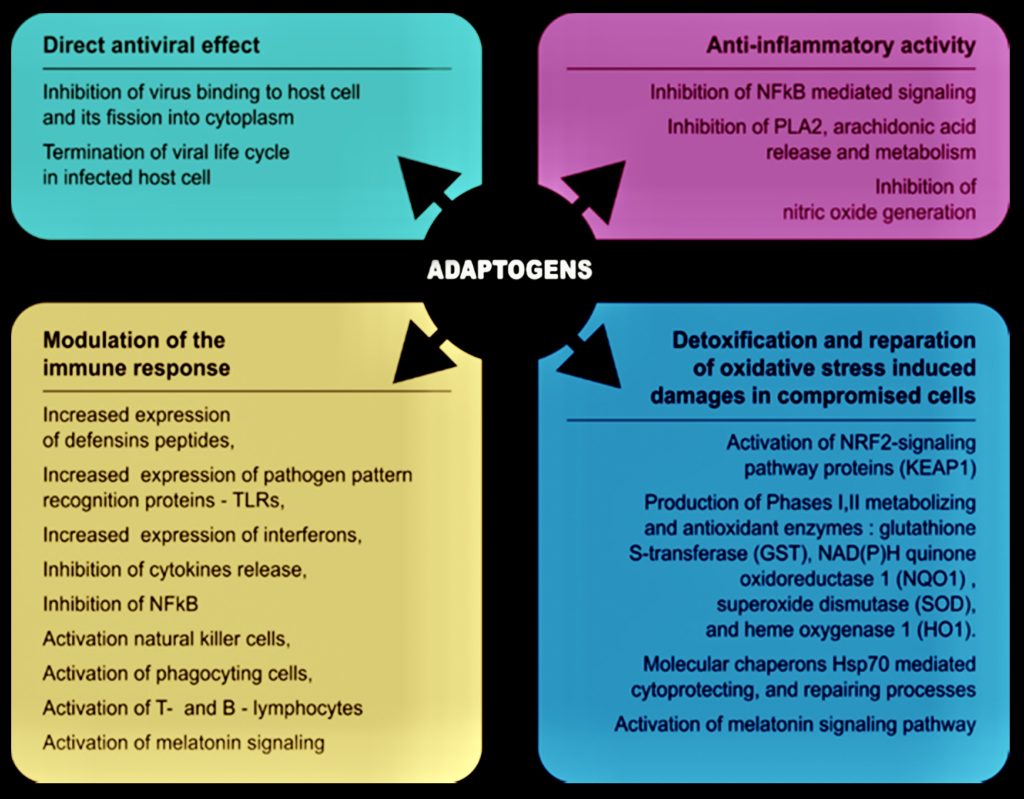
Therapeutic role of flavonoids in lung inflammatory disorders
Pulmonary inflammation has got direct correlation with the progression of various respiratory inflammatory disorders. Numerous respiratory chronic disorders such as acute bronchitis, chronic obstructive pulmonary diseases (COPD), pulmonary emphysemaprogresses because of long term lung inflammation in and around the involved tissue. Several plant extracts and their polyphenolic constituents exhibited therapeutic effects on numerous preclinical lung inflammatory models. Flavonoids are the most studied polyphenolic composites, and their classification in different forms have been significantly investigated in relation to respiratory ailments. Presently, over 8000 flavonoids from different plants particularly have been explored for having anticancer, antioxidant, and anti-inflammatory potential.
Molecular Insights into Potential Contributions of Natural Polyphenols to Lung Cancer Treatment

Naturally occurring polyphenols are believed to have beneficial effects in the prevention and treatment of a myriad of disorders due to their anti-inflammatory, antioxidant, antineoplastic, cytotoxic, and immunomodulatory activities documented in a large body of literature. In the era of molecular medicine and targeted therapy, there is a growing interest in characterizing the molecular mechanisms by which polyphenol compounds interact with multiple protein targets and signaling pathways that regulate key cellular processes under both normal and pathological conditions.
Numerous studies suggest that natural polyphenols have chemopreventive and/or chemotherapeutic properties against different types of cancer by acting through different molecular mechanisms. The present review summarizes recent preclinical studies on the applications of bioactive polyphenols in lung cancer therapy, with an emphasis on the molecular mechanisms that underlie the therapeutic effects of major polyphenols on lung cancer.
Asthma is a chronic disease, characterized by airway inflammation, airflow limitation, hyper-reactivity and airway remodeling. It is believed that asthma is caused by the interaction between genetic and environmental factors. The prevalence of allergic diseases, including asthma, has increased worldwide during the past two decades. Although the precise reasons that have caused this increase remain unknown, dietary change is thought to be one of the environmental factors. Flavonoids, which are polyphenolic plant secondary metabolites ubiquitously present in vegetables, fruits and beverages, possess antioxidant and anti-allergic traits, as well as immune-modulating activities.
Flavonoids are powerful antioxidants and anti-allergic nutrients that inhibit the release of chemical mediators, synthesis of Th2 type cytokines, such as interleukin (IL)-4 and IL-13, and CD40 ligand expression by high-affinity immunoglobulin E (IgE) receptor-expressing cells, such as mast cells and basophils. They also inhibit IL-4-induced signal transduction and affect the differentiation of naïve CD4+ T cells into effector T-cells through their inhibitory effect on the activation of the aryl hydrocarbon receptor. Various studies of flavonoids in asthmatic animal models have demonstrated their beneficial effects. The results of several epidemiological studies suggest that an increase in flavonoid intake is beneficial for asthma. Moreover, clinical trials of flavonoids have shown their ameliorative effects on symptoms related to asthma.
Polyphenols, flavonoids and COPD
Phytochemicals including polyphenols and flavonoids have phyto-medicinal benefits in CS-COPD. Here, we review published articles from the last decade regarding the known associations between inflammasome-mediated responses and ameliorations in pre-clinical manifestations of CS-COPD via polyphenol and flavonoid treatment, with a focus on the underlying mechanistic insights.
Flavonoids are promising safe therapy against COVID-19
Flavonoids are a class of phenolic natural products, well-identified in traditional and modern medicines in the treatment of several diseases including viral infection. Flavonoids showed potential inhibitory activity against coronaviruses including the current pandemic outbreak caused by the severe acute respiratory syndrome coronavirus 2 (SARS-CoV-2) and designated as COVID-19. Here, we have collected all data related to the potential inhibitory mechanisms of flavonoids against SARS-CoV-2 infection and their significant immunomodulatory activities. The data were mapped and compared to elect major flavonoids with a promising role in the current pandemic. Further, we have linked the global existence of flavonoids in medicinal plants and their role in protection against COVID-19. Computational analysis predicted that flavonoids can exhibit potential inhibitory activity against SARS-CoV-2 by binding to essential viral targets required in virus entry and/ or replication.
Flavonoids also showed excellent immunomodulatory and anti-inflammatory activities including the inhibition of various inflammatory cytokines. Further, flavonoids showed significant ability to reduce the exacerbation of COVID-19 in the case of obesity via promoting lipids metabolism. Moreover, flavonoids exhibit a high safety profile, suitable bioavailability, and no significant adverse effects. For instance, plants rich in flavonoids are globally distributed and can offer great protection from COVID-19. The data described in this study strongly highlighted that flavonoids particularly quercetin and luteolin can exhibit promising multi-target activity against SARS-CoV-2, which promote their use in the current and expected future outbreaks. Therefore, a regimen of flavonoid-rich plants can be recommended to supplement a sufficient amount of flavonoids for the protection and treatment from SARS-CoV-2 infection.

Major flavonoids identified with potential inhibition activity against SARS-CoV-2
Natural Products for the Prevention and Treatment of Common Cold and Viral Respiratory Infections
INGREDIENTS & SCIENce:
Achyranthes bidentata
Conclusion: The expressions of the genes fas and bcl-2 mRNA in EOS were changed evidently and the ratio of EOS apoptotosis reduced greatly. (2) ABPS could enhance the apoptosis of EOS by upregulating the expression of the genes fas and bcl-2 mRNA.
Conclusion: STAT6 protein and STAT6 mRNA were found strongly expressed in rat asthma model, the epithelial cells were the chief expression cells. ABPS had an inhibitory effect on airway inflammation cells infiltration such as EOS, it significantly depressed STAT6 and its mRNA expression, thus reduced the synthesis of IL-4 might be key in modulating mechanism of asthma.
Accumulating evidence reveals that the embryo implantation into the endometrium and CTCs adhesion–invasion to vascular endothelium are similar. Thus, those traditional contraceptives with safe anti-implant ability could be used as cancer metastasis chemoprevention agents. The roots of A. bidentata have been used for abortion in China for a long history. In the present study, we tried to find the safe and effective pre-metastatic chemoprevention from these TCM. We here demonstrate that ABP, which was isolated from A. bidentata, is a natural EGFR inhibitor that can safely and effectively prevent cancer metastasis via blocking cell adhesion to vascular endothelium and EMT process. Importantly, ABP acts as a competitive inhibitor and accommodates between domains I and III of EGFR (Fig. 1h), thereby inhibiting EGF-induced dimerization of EGFR and activation of downstream signaling pathways by directly blocking ligand binding (Fig. 1l).
These findings suggest the clinical implication of ABP for EGFR-related Non-Small Cell Lung Cancer as a metastasis chemoprevention agent. This study sets up a model to screen and repurpose many safe and effective TCM for cancer metastasis chemo-prevention.
Aconitum carmichaelii
Conclusion: AEACD administration protects mice against sepsis-induced ALI through the regulation of oxidative stress and inflammatory responses in lung tissues. The underlying mechanism occurs by inhibiting TLR4/NF-κB signaling pathway.
Fuzi Enhances Anti-Tumor Efficacy of Radiotherapy on lung cancer
In traditional Chinese medicine, Fuzi is widely used as an antitumor agent or an adjuvant medication combined with radiotherapy and chemotherapy, but its mechanism remains unclear. In this study, we investigated anti-tumor and immunoregulation efficacy of Fuzi combined with radiotherapy in mice with Lewis lung cancer (LLC). We found that Fuzi combined with radiotherapy significantly inhibited the growth of LLC, promoted the apoptosis of cancer cells, and prolonged the survival of mice with LLC. Mechanistically, we found that Fuzi decreased the proportion of Treg cells, reduced serum levels of cytokines such as interleukin (IL)-10 and transforming growth factor (TGF)-β, and downregulated the expression of programmed death ligand-1 in mice with LLC subjected to radiotherapy. This study suggests that Fuzi has immunomodulation function to act as radiosensitizer and improve radiotherapy against lung cancer.
Adenophora tetraphylla
The Omicron variant of severe acute respiratory syndrome coronavirus 2 remains a global problem. Current data indicate that the Omicron variant causes mild clinical symptoms and few severe cases and deaths. Traditional Chinese medicine (TCM) has demonstrated definite efficacy and distinct advantages in the prevention and treatment of coronavirus disease 2019 (covid-19). Thus, by focusing on the pathogenic characteristics of the Omicron variant, the Emergency Professional Committee of the World Federation of Chinese Medicine Societies, Emergency and Critical Care Institute of the Shanghai University of Traditional Chinese Medicine, and American Traditional Chinese Medicine Society have brought together clinical experts on the TCM prevention and control of covid-19 to formulate an expert consensus on the prevention and treatment of Omicron variant infections based on the Diagnosis and Treatment Protocol for covid-19 (Trial Version 9).
This review provides a comprehensive disease 2019″>Coronavirus disease 2019 (covid-19) is an acute respiratory infectious disease caused by severe acute respiratory syndrome coronavirus 2 (SARS-CoV-2). The main symptoms of interpretation of this expert consensus, covering topics such as discussing the pathogenic characteristics of the Omicron variant from the TCM perspective of “epidemic disease of pathogenic wind,” prevention plans for vulnerable populations, and stratified treatment plans for infected populations. We hope that this review can serve as a reference for the clinical prevention and treatment of the Omicron variant.
Our study has several shortcomings that may need to be addressed. First, this is a multi-center randomized controlled trial conducted over a 12-month period. Therefore, the long-term outcome of the treatment and control groups may not be obtained in a short time. Second, the components of TCM are complex and diverse, and these components are used as a mixture. Hence, it is difficult to identify or separate single chemical compounds from the complex mixture of herbs that are used to treat pulmonary fibrosis.
Additionally, the mechanism of TCM in the prevention and treatment of pulmonary fibrosis is complex, and the mechanism of the interaction between TCM and modern medicines remain unclear. Hence, a large-sample, longstanding, double-blind RCT may have to be conducted to determine the long-term outcomes for different treatment plans. In addition, the principal components responsible for activity will have to be identified and extracted from herbs and further developed, following which, their efficacy in treating pulmonary fibrosis should be examined in future RCTs.
Adenophorae
In summary, RAE and CsA have profound effects on airway inflammation and AHR in a murine model of asthma through suppression of IL-13, IL-5, IgE, eosinophils CCR3 expression, and CD11b cells expression. The therapeutic activity of RAE on asthma in oriental medicine may be partly related tothe following. (a) Immunomodulatory agents contained in RAE reduce Th2 cells immune responses. (b) Reduced production of IgE will make a marked decrease for asthma attack occurring in individuals. (c) RAE may have an effect of suppressing eosinophils activity and decrease airway damage.
The Effects of lung-Moistening Herbal Medicines on Bleomycin-Induced pulmonary Fibrosis Mouse Model
In traditional medicine, lung-moistening herbal medicines (LMHM) are regarded as a major option for treating symptoms of pulmonary fibrosis (PF) including dry cough and dyspnea. As PF agents are being applied to the development of lung cancer agents, PF and lung cancer are reported to have high pathological and pharmacological relationships. This study was proposed to identify candidates for the treatment of PF via investigating the effect of LMHM on PF mouse model. PF was induced by intratracheal instillation of bleomycin. Six water extracts of LMHM such as Farfarae Flos (FAF), Trichosanthis Semen (TRS), Lilii Bulbus (LIB), Adenophorae Radix (ADR), Asteris Radix (ASR), and Scrophulariae Radix (SCR) were prepared and administered (300 mg/kg) orally for 10 days after induction.
The changes in body weight, histopathology, and immune cell of bronchoalveolar lavage fluid (BALF) were investigated. Among those, LIB and ADR significantly decreased the deposition of collagen and septal thickness of alveolar and terminal bronchiole. Moreover, SCR, TRS, LIB, and ADR decreased total cells, macrophages, and lymphocytes in BALF. Taken together, ADR and LIB could be the candidates to reduce PF. Further studies on their effects at different doses and analysis of their underlying molecular mechanisms are needed.
antitussive, expectorant, and anti-inflammatory effects of Adenophorae Radix powder in ICR mice
Conclusion: The results obtained in this study suggest that AR powder exerts dose-dependent, favorable antitussive, expectorant, and anti-inflammatory activities achieved through modulation of the activity of mast cells and respiratory mucous production. Therefore, AR powder may serve as a therapeutic agent in various respiratory disorders, especially those that occur as a result of environmental toxicants.
Conclusion: This study will evaluate the efficacy and safety of CRF in the treatment covid-19 residual symptoms in a scientifically rigorous design.
Anemarrhena asphodeloides
Investigations into the development of new therapeutic agents for lung inflammatory disorders have led to the discovery of plant-based alternatives. The rhizomes of Anemarrhena asphodeloides have a long history of use against lung inflammatory disorders in traditional herbal medicine. However, the therapeutic potential of this plant material in animal models of lung inflammation has yet to be evaluated. In the present study, we prepared the alcoholic extract and derived the saponin-enriched fraction from the rhizomes of A. asphodeloides and isolated timosaponin A-III, a major constituent. lung inflammation was induced by intranasal administration of lipopolysaccharide (LPS) to mice, representing an animal model of acute lung injury (ALI). The alcoholic extract (50–200 mg/kg) inhibited the development of ALI. Especially, the oral administration of the saponin-enriched fraction (10–50 mg/kg) potently inhibited the lung inflammatory index. It reduced the total number of inflammatory cells in the bronchoalveolar lavage fluid (BALF).
Histological changes in alveolar wall thickness and the number of infiltrated cells of the lung tissue also indicated that the saponin-enriched fraction strongly inhibited lung inflammation. Most importantly, the oral administration of timosaponin A-III at 25–50 mg/kg significantly inhibited the inflammatory markers observed in LPS-induced ALI mice. All these findings, for the first time, provide evidence supporting the effectiveness of A. asphodeloides and its major constituent, timosaponin A-III, in alleviating lung inflammation.
Asthma is a chronic inflammatory disorder of the airways characterized by excess production of Th2 cytokines and eosinophil accumulation in the lungs. Fritillaria cirrhosa, Anemarrhena asphodeloides and Lee-Mo-Tang are well-known herbs used in oriental medicine for the treatment of asthma and bronchial inflammation. To clarify the anti-asthmatic effects of Fritillaria cirrhosa bulbus, Anemarrhena rhizoma and Lee-Mo-Tang, we examined the development of pulmonary eosinophilic accumulation, control of Th2 cytokine, immunoglobulin E (IgE) and histamine productions in a murine model of asthma. Eosinophil cell proliferation was performed by [3H]thymidine uptake, eosinophilic accumulation. Cell counts in bronchoalveolar lavage fluid were investigated by means of fluorescence activated cell sorter analysis and control of Th2 cytokine, IgE and histamine productions were investigated by RT-PCR and ELISA.
Moreover, lung tissue was histologically analysed. The suppressive effects of Fritillaria cirrhosa bulbus, Anemarrhena rhizoma and Lee-Mo-Tang on eosinophil recruitment and airway inflammation were demonstrated throughout the reduction of eosinophil numbers. This result correlated with a marked reduction IL-5, IL-13 and IL-4 levels in the bronchoalveolar lavage fluid. Ovalbumin-specific IgE levels were also decreased in serum. Fritillaria cirrhosa bulbus, Anemarrhena rhizoma and Lee-Mo-Tang have deep inhibitory effects on airway inflammation by suppression of Th2 cytokines (IL-4, IL-5 and IL-13), IgE, histamine production, reduction eosinophilic accumulation and increase of interferon-γ production.
Angelicae Sinensis
In conclusion, we demonstrate here that the combined therapy of Astragalus membranaceus and Angelica sinensis can suppress oxidative stress, inflammation, tumor proliferation, and angiogenesis. In addition, this herbal combination is able to modulate the host immunity and thus inhibits cancer growth and corresponding cachexia. In the development of new anti-cancer agents, we consider that this herbal combination stands a good position to be reformulated to the maximum anti-cancer effect on the basis of the information provided herein as a short-term goal.
Pulmonary fibrosis is a common delayed side effect of radiation therapy, and it has a poor prognosis. Tgfb1 is a potent chemoattractant for fibroblasts and stimulates the production of collagen, the protein that contains hydroxyproline. Since collagen is by far the most abundant protein in the lung, comprising 60–70% of the tissue mass, analysis of the hydroxyproline content in lung tissues provides a reliable quantitative index for pulmonary fibrosis. Thus hydroxyproline and Tgfb1 may be involved in the development of fibrosis. In this study, we investigated radiation-induced pulmonary fibrosis in a mouse model. C57BL/6 mice were assigned into four groups: no treatment, treated with Angelica sinensis treated only, X-irradiated only (a single fraction of 12 Gy to the thorax), and Angelica sinensis treatment plus radiation. We assayed expression of hydroxyproline and the mRNA and protein of Tgfb1 in the four groups.
We found that Angelica sinensis down-regulated the production of Tgfb1 and hydroxyproline in mice with radiation-induced pulmonary fibrosis. This study has demonstrated for the first time that Angelica sinensis inhibits the progress of radiation-induced pulmonary fibrosis, possibly by down-regulating the expression of the proinflammatory cytokine Tgfb1. These data suggest that Angelica sinensis may be useful in preventing and/or treating radiation-induced pulmonary fibrosis in the clinic.
Angelicae Sinensis Radix, with nourishing Yin, promoting blood circulation, and moisturizing dryness functions, is commonly used in clinical medicine. In order to investigate the effects and mechanism of Angelica sinensis(AS) on Th1/Th2 and Th17/Treg in mice with asthma and Yin deficiency syndrome, asthmatic and Yin deficiency syndrome Balb/c mice models were established by injecting and inhaling ovalbumin(OVA) and thyroxin. The models were treated with dexamethasone(DXM), AS extract and AS extract+DXM, respectively. Pathological examination of lung tissues was conducted by HE staining, and ELISA was used to detect the levels of IL-4, IL-17, IFN-γ, TGF-β as well as retinoic acid receptor-related orphan receptor (RORγt). Results showed that AS could significantly improve the situation of inflammation infiltration, increase ratios of IFN-γ/IL-4 and TGF-β/IL-17, decrease the levels of RORγt in lung tissues. The AS+DXM group showed a best treatment effect. The results indicated that AS played a therapeutic role for asthma with Yin deficiency syndrome and improved airway inflammation by inhibiting the expression of RORγt in lung tissues and regulating the balance of Th1/Th2 and Th17/Treg.
Conclusions: Combined administration of RASI and hydrocortisone have obvious anti-asthma effects and one of the mechanisms is to inhibit protein synthetization of HMGB1, TLR4 and NF-κB.The combined administration of RASI and hydrocortisone has stronger improvement of lung function than that of RASI and hydrocortisone alone, and it may be related to the inhibition of TLR4 and NF-κB synthetization. The combined administration of RASI can alleviate abnormal changes of hemorheology induced by hydrocortisone in treatment of asthma.
Acute lung injury (ALI), a clinical syndrome of acute respiratory failure due to acute lung inflammation, remains a substantial public health problem in the worldwide. Ligusticum Chuanxiong Rhizoma and Angelicae Sinensis Radix was herb-pair of the traditional Chinese medicine. Modern pharmacological studies have shown that volatile oil extracted from Chuanxiong Rhizome and Angelicae Sinensis Radix is identified as an important active ingredient, which has good antipyretic, analgesic and anti-inflammatory effects. However, whether their volatile oil combination (CA-VO), has effects on the prevention and treatment of ALI has not been reported yet. Due to poor water solubility and low oral bioavailability of CA-VO, CA -VO-loaded microemulsion (CA-VO-ME) was formulated to enhance its oral bioavailability.
The physical properties of CA-VO-ME were characterized. The pharmacokinetic parameters and the effect on ALI were evaluated. The particle size, polydispersity index, zeta potential, and encapsulation efficiency of CA-VO-ME were 20.19 ± 0.08 nm, 0.091 ± 0.01, 36.33 ± 4.29%, and 93.75%, respectively. CA-VO-ME had a greater bioavailability (214%) than CA-VO. CA-VO-ME reduced the lipopolysaccharide (LPS)-induced increase in levels of nitric oxide (NO), tumor necrosis factor-α (TNF-α), interleukin-6 (IL-6), interleukin-1β (IL-1β), inducible nitric oxide synthase (iNOS), and cyclooxygenase-2 (COX-2) in vitro and/or in vivo. Moreover, CA-VO-ME treatment notably decreased the lung index, ameliorated histopathological changes and prolonged the survival of ALI mice. By comparison, CA-VO-ME exerted a better effect on ALI than CA-VO, suggesting that CA-VO-ME is a promising drug for the treatment of ALI.
Arctium lappa
In conclusion, this study demonstrates that AFE or F-AFE exert anti-allergic effects, and that the fermentation process enhances the anti-allergic effects of AFE by converting arctiin, a lignan glycoside, to arctigenin, an aglycone. These findings reveal a novel feature of F-AFE in allergic reactions. The mechanisms responsible for its anti-allergic effects may involve various targets, such as Lyn, Fyn, Syk and cPLA2, as well as pro-inflammatory mediators. Such effects may be due to several compounds in the Arctium lappa fruit, and may aid in the development of a functional food or a preventive agent for allergic diseases.
Anti-allergic and anti-inflammatory effects of butanol extract from Arctium Lappa L
Conclusions: These results suggest that ALBE inhibits the expression of IL-4 and IL-5 by downregulating MAPKs and NF-κB activation in ConA-treated splenocytes and supports the hypothesis that ALBE may have beneficial effects in the treatment of allergic diseases, including atopic dermatitis.
The effects of four medicinal herbs (Arctium lappa, Plantago major, Mikania glomerata Spreng and Equisetum arvense) with anti-inflammatory properties were evaluated in a chronic obstructive pulmonary disease (COPD) model. Wistar rats were exposed to cigarette smoke during 8 weeks and one of the groups was orally given a solution containing 4% of each alcoholic herbal extracts during the exposure period. Control group was not exposed to smoke or treated. Histopathological, immunohistochemical and biochemical analyzes were performed. Normal blood plasma levels of gamma glutamyl transferase indicated no toxicity of the administered herbal extracts. The treatment reduced leukocytes influx in bronchoalveolar lavage, mast cell and macrophages numbers in lungs, as well as prevented pulmonary congestion and tracheal metaplasia. Herbal mixture also decreased plasma inflammatory mediator levels and pulmonary expression of annexin A1 and nuclear factor-kβ. Our data indicate synergistic and protective effects of the used herbal medicines in animals exposed to cigarette smoke as a potential therapeutic strategy.
There are numerous trials underway to find treatment for the covid-19 through testing vaccines as well as existing drugs. Apart from the many synthetic chemical compounds, plant-based compounds could provide an array of \suitable candidates for testing against the virus. Studies have confirmed the role of many plants against respiratory viruses when employed either as crude extracts or their active ingredients in pure form. The purpose of this review article is to highlight the importance of phytomedicine against covid-19. The main aim is to review the mechanistic aspects of most important phytochemical compounds that have showed potential against coronaviruses. Glycyrrhizin from the roots of Glycyrrhiza glabra has shown promising potential against the previously epidemic coronavirus, SARS-CoV.
Other important plants such as Artemisia annua, Isatis indigotica, Lindera aggregate, Pelargonium sidoides, and Glychirrhiza spp. have been employed against SARS-CoV. Active ingredients (e.g. emodin, reserpine, aescin, myricetin, scutellarin, apigenin, luteolin, and betulonic acid) have shown promising results against the coronaviruses. Phytochemicals have demonstrated activity against the coronaviruses through mechanisms such as viral entry inhibition, inhibition of replication enzymes and virus release blockage. However, compared to synthetic drugs, phytomedicine are mechanistically less understood and should be properly evaluated before application. Nonetheless, phytochemicals reduce the tedious job of drug discovery and provide a less time-consuming alternative for drug testing. Therefore, along with other drugs currently tested against covid-19, plant-based drugs should be included for speedy development of covid-19 treatment.
Artemisiae Annuae
Artemisia and Artemisia-based products for covid-19 management: current state and future perspective
The search for a potent anti-coronavirus therapy for severe acute respiratory syndrome coronavirus type-2 (SARS-CoV-2) remains an overwhelming task since the outbreak of covid-19. It is more evident that most of the existing antiviral and immune-boosting drugs are non-promising and ineffective for the treatment of coronavirus infected patients while the safety of a few drugs/vaccines that have demonstrated high potential remains unclear. With daily records of confirmed infectious cases across the world, it is crucial to emphasize the need for repurposed therapies with a validated ethnomedicinal base focused on well-known active medicines with traceable biochemical, pharmacological and safety profiles for viral infection management.
In the present study, recent literature on Artemisia and Artemisia-based products for the management of covid-19 are reviewed. Artemisia-based products have demonstrated a broad spectrum of biological ability including antiviral properties. Besides its antiviral activity, Artemisia annua have shown to contain appreciable amounts of minerals such as zinc, gallium and selenium among others.
Dihydroartemisinin suppresses ovalbumin-induced airway inflammation in a mouse allergic asthma model
Asthma is a complex disease characterized by reversible airway obstruction, airway hyper-responsiveness (AHR) and chronic inflammation of the airways. Dihydroartemisinin (DHA), a semi-synthetic derivative of artemisinin isolated from the traditional Chinese herb Artemisia annua, has been shown to possess antimalarial and antitumor activities, but whether it can be used in asthma treatment has not been investigated. In this study, we attempted to determine whether DHA regulates inflammatory mediators in the ovalbumin (OVA)-induced mouse asthma model. BALB/c mice were sensitized and challenged by OVA to induce chronic airway inflammation. The intragastrical administration of DHA at 30 mg/kg significantly decreased the number of infiltrating inflammatory cells, T-helper type 2 (Th2) cytokines, OVA-specific immunoglobulin E (IgE) and AHR. Treatment with DHA also attenuated OVA-induced mRNA expression of Muc5ac and chitinase 3-like protein 4 (Ym2) in lung tissues. In addition, lung histopathological studies revealed that DHA inhibited inflammatory cell infiltration and mucus hypersecretion. Then signal transduction studies showed that DHA significantly inhibited extracellular signal-regulated protein kinase (ERK), p38 mitogen-activated protein kinase phosphorylation. DHA also inhibited nuclear factor-κB (NF-κB) activation via the inhibition of phosphorylation of IκBα. These findings provide new insight into the immunopharmacological role of DHA in terms of its effects in a mouse model of asthma.
Is the traditional Chinese herb “Artemisia annua” possible to fight against covid-19?
To conclude the above information, the traditional Chinese herb “Artemisia annua” is possible to combat covid-19. However, much more work needs to be done for supporting the evidence including its safety and efficacy to fight against covid-19.
Aster tataricus
Aster tataricus L.f.: Ethnomedicinal Uses, Phytochemistry, and Pharmacological Activities
Aster tataricus L.f. (family: Asteraceae) is an important medicinal plant that had been used in traditional Chinese medicine for many centuries. This plant is used in treating asthma, tuberculosis, and bronchitis-related disease to relieve the cough. The main aim of this book chapter is to collect and critically analyze the available information and updates on chemical constituents and medicinal properties of A. tataricus. The scientific information was collected from different online database such as Scopus, SciFinder, PubMed, Google Scholar, and books. The active phytochemicals were peptides, flavonoids, phenols, coumarins, etc. These phytochemicals possess different biological activities such as anti-cancer, anti-inflammatory, anti-asthma, and anti-diabetic.
Asparagus cochinchinensis
Asthma is a chronic inflammatory disease characterized by T-lymphocyte and eosinophil infiltration, mucus overproduction and airway hyper-responsiveness. The present study examined the therapeutic effects and action mechanism of a saponin-enriched extract of Asparagus cochinchinensis (SEAC) on airway inflammation and remodeling in an ovalbumin (OVA)-induced asthma model. To accomplish this, alterations of the nitric oxide (NO) level, inducible nitric oxide synthase (iNOS) and cyclooxygenase-2 (COX-2) expression levels, as well as variations in immune cell numbers, immunoglobulin E (IgE) concentration, histopathological structure and inflammatory cytokine levels were measured in lipopolysaccharide (LPS)-activated RAW264.7 cells or an OVA-induced mouse model of asthma treated with SEAC. The concentration of NO and mRNA levels of COX-2 and iNOS were significantly decreased in the SEAC + LPS-treated RAW264.7 cells compared with the vehicle + LPS-treated RAW264.7 cells.
Additionally, in the OVA-induced asthma model, the number of immune cells in the bronchoalveolar lavage fluid, the concentration of OVA-specific IgE, the infiltration of inflammatory cells, the bronchial thickness and the levels of the inflammatory mediators interleukin-4 (IL-4), IL-13 and COX-2 were significantly lower in the OVA + SEAC‑treated group compared with the OVA + vehicle‑treated group. In addition, a significant reduction in goblet cell hyperplasia, peribronchiolar collagen layer thickness and VEGF expression for airway remodeling was detected in the OVA + SEAC‑treated group compared with the OVA + vehicle‑treated group. These findings indicate that SEAC is a suppressor of airway inflammation and remodeling, and may therefore be useful as an anti-inflammatory drug for the treatment of asthma.
Conclusion: Overall, these findings are the first to provide evidence that the therapeutic effects of BAW can prevent airway inflammation and remodeling through the recovery of cholinergic regulation in structural cells and inflammatory cells of the chronic asthma model.
The butanol extract of Asparagus cochinchinensis roots fermented with Weissella cibaria (BAW) effectively prevents inflammation and remodeling of airway in the ovalbumin (OVA)-induced asthma model. To characterize biomarkers that can predict the anti-asthmatic effects induced by BAW treatment, we measured the alteration of endogenous metabolites in the serum of OVA-induced asthma mice after administration of low concentration BAW (BAWLo, 250 mg/kg) and high concentration BAW (BAWHi, 500 mg/kg) using 1H nuclear magnetic resonance (1H-NMR) spectral data. The number of immune cells and serum concentration of IgE as well as thickness of the respiratory epithelium and infiltration of inflammatory cells in the airway significantly recovered in the OVA+BAW treated group as compared to the OVA+Vehicle treated group.
In the metabolic profile analysis, the pattern recognition showed completely separate clustering of serum analysis parameters between the OVA+Vehicle and OVA+BAW treated groups. Of the total endogenous metabolites, 19 metabolites were upregulated or downregulated in the OVA+Vehicle treated group as compared to the Control treated group. However, only 4 amino acids (alanine, glycine, methionine and tryptophan) were significantly recovered after BAWLo and BAWHi treatment. This study provides the first results pertaining to metabolic changes in the asthma model mice treated with OVA+BAW. Additionally, these findings show that 4 metabolites can be used as one of biomarkers to predict the anti-asthmatic effects.
Asthma is a chronic inflammatory disease characterized by T-lymphocyte and eosinophil infiltration, mucus overproduction and airway hyper-responsiveness. The present study examined the therapeutic effects and action mechanism of a saponin-enriched extract of Asparagus cochinchinensis (SEAC) on airway inflammation and remodeling in an ovalbumin (OVA)-induced asthma model. To accomplish this, alterations of the nitric oxide (NO) level, inducible nitric oxide synthase (iNOS) and cyclooxygenase-2 (COX-2) expression levels, as well as variations in immune cell numbers, immunoglobulin E (IgE) concentration, histopathological structure and inflammatory cytokine levels were measured in lipopolysaccharide (LPS)-activated RAW264.7 cells or an OVA-induced mouse model of asthma treated with SEAC. The concentration of NO and mRNA levels of COX-2 and iNOS were significantly decreased in the SEAC + LPS-treated RAW264.7 cells compared with the vehicle + LPS-treated RAW264.7 cells.
Additionally, in the OVA-induced asthma model, the number of immune cells in the bronchoalveolar lavage fluid, the concentration of OVA-specific IgE, the infiltration of inflammatory cells, the bronchial thickness and the levels of the inflammatory mediators interleukin-4 (IL-4), IL-13 and COX-2 were significantly lower in the OVA + SEAC‑treated group compared with the OVA + vehicle‑treated group. In addition, a significant reduction in goblet cell hyperplasia, peribronchiolar collagen layer thickness and VEGF expression for airway remodeling was detected in the OVA + SEAC‑treated group compared with the OVA + vehicle‑treated group. These findings indicate that SEAC is a suppressor of airway inflammation and remodeling, and may therefore be useful as an anti-inflammatory drug for the treatment of asthma.
The present study was designed to find pharmacologically active compound against airway inflammation from the roots of Asparagus cochinchinensis. The 70% ethanol extract of the roots of A. cochinchinensis (ACE) was found to inhibit IL-6 production from IL-1β-treated lung epithelial cells (A549) and the major constituent, methyl protodioscin (MP), also strongly inhibited the production of IL-6, IL-8, and tumor necrosis factor- (TNF-) α from A549 cells at 10–100 μM. This downregulating effect of proinflammatory cytokine production was found to be mediated, at least in part, via inhibition of c-Jun N-terminal kinase (JNK) and c-Jun activation pathway.
When examined on an in vivo model of airway inflammation in mice, lipopolysaccharide- (LPS-) induced acute lung injury, ACE, and MP significantly inhibited cell infiltration in the bronchoalveolar lavage fluid by the oral treatment at doses of 100–400 mg/kg and 30–60 mg/kg, respectively. MP also inhibited the production of proinflammatory cytokines such as IL-6, TNF-α, and IL-1β in lung tissue. All of these findings provide scientific evidence supporting the role of A. cochinchinensis as a herbal remedy in treating airway inflammation and also suggest a therapeutic value of MP on airway inflammatory disorders.
Which East Asian herbal medicines can decrease viral infections?
Whilst Western research for the covid-19 crisis focuses on vaccination, in East Asia traditional herbal prescriptions are studied for SARS-CoV2 therapy. In Japan, Maoto (Ephedrae herba 4 g, Armeniacae semen 4 g, Cinnamomi cortex 3 g, and Glycyrrhizae radix 2 g, JPXVII) is used based on clinical evidence for its effect on early phase influenza (also caused by RNA viruses) comparable to that of oseltamivir. The health Ministry of Thailand has approved Andrographis paniculata (Jap. Senshinren) extracts for treatment of covid-19. Its combination (4 g) with Maoto, Maoto-ka-senshinren, seems most promising for the treatment of viral pandemics.
In China, the official guideline for covid-19 treatment contains TCM medications with antiviral, as well as immunmodulatory and anti-inflammatory effects such as: Qing-Fei-Pai-Du-Tang (Jap. Seihai-haidokuto) contains 21 drugs; Shufeng Jiedu Jiaonang (Bupleuri radix 8 g, Forsythiae fructus 8 g, Glycyrrhizae radix 4 g, Isatidis radix 8 g, Patriniae herba 8 g, Phragmitis rhizoma 6 g, Polygoni cuspidati rhizoma 10 g, Verbenae herba 8 g); Fufang Yuxingcao Heiji (Forsythiae fructus 0.6 g, Houttuyniae herba 6 g, Isatidis radix 1.5 g, Lonicerae flos 0.6 g, Scutellariae radix 1.5 g) first gained prominence during the 2002 SARS epidemic. With no Western medicine available, the following overview discusses efficacy and mechanisms in view of viral entry and replication of different East Asian herbal remedies for covid-19 treatment.
Aster tataricus
Asthma is an airway chronic inflammatory disease with significant morbidity, mortality and huge social economic burden. Previous research demonstrated that the root of Aster tataricus (RA) may have the potential to treat asthma, but the efficacy and mechanism were not clear. In this study, preliminary results in vitro showed that Fr-75 eluted from RA extract could not only completely inhibit the tracheal ring contraction raised by KCl in 20 min, but also effectively affect the tracheal ring contraction induced by KCl-, Ach- and His in a concentration-dependent manner (3.91−250 μg/mL). Further results on cells exhibited that Fr-75 could decrease the concentration of intracellular Ca2+ as well.
These results revealed the underlying mechanism in vitro that the inhibition of tracheal ring contraction might be due to the decline of the intracellular Ca2+ concentration, which caused by suppressing calcium channel, antagonizing the muscarinic and histamine receptors. Also, results in vivo exhibited that Fr-75 could distinctly ease the symptoms of ovalbumin-sensitized mice, including relieving the pathological injury, increasing the latency to preconvulsive dyspnea and to enhanced pause, reducing the inflammatory cells, chemokines and cytokines in BALF and lung tissue. In general, it could be speculated that RA fraction may attenuate asthma through dilating the tracheal ring contraction and alleviating the lung inflammation simultaneously.
Acute lung injury (ALI) is a common clinical condition that badly influences people’s health. Recent studies indicated that Aster tataricus (RA) had potential effects on ALI, but the effective components and their mechanism is not clear. In this study, we found that the Fraction-75 eluted from RA extract could significantly protect the lipopolysaccharide (LPS)-induced ALI in mice, including alleviating the severity of lung pathology, attenuating the pulmonary edema, and reducing the release of inflammatory cells. Further ingredient analyses demonstrated that there were mainly 16 components in it, among which 10 components were collected according to their relative peak area and oral bioavailability. Next, the components-disease targets network suggested that the candidate components had extensive associations with 49 known therapeutic targets of ALI, among which 31 targets could be regulated by more than one component.
Herein, GO functional and pathway analysis revealed that the common targets were associated with four biological processes, including the inflammatory response to stimulus, cellular process, chemokine biosynthetic process and immune system process. Furthermore, the ELISA validation indicated that the candidate components in RA extract may protect the LPS-induced ALI mainly through inhibiting the release of inflammatory cytokines and promoting the repair of vascular endothelial.
Identification of chemical constituents in Aster tataricus by UHPLC-Q-TOF-MS
The root of Aster tataricus L. f. (RA) has been widely used in the clinic for moistening lung, dispelling phlegm and relieving cough because of its significant therapeutic effects on respiratory diseases. In this study, a systematic data acquisition and mining strategy was established aimed at solving the complexity of the traditional Chinese medicine using ultra high performance liquid chromatography coupled with quadruple time of flight mass spectrometry (UHPLC-Q-TOF-MS). A total of 132 chemical constituents, including 43 terpenes, 31 flavonoids, 22 organic acids, 18 peptides, 9 coumarins, 3 steroids, 3 anthraquinones and 3 aldehydes were identified or tentatively characterized, among which 59 components were confirmed by comparison with the standard references. Meanwhile, the accurate mass measurements of the identified components were all with ±5 ppm error. Therefore, this work provided not only reliable data supports for the comprehensive analysis of the chemical constituents in RA, but also provided an efficient data acquisition and mining strategy to profile the chemical constituents for other traditional Chinese medicine complex system.
Astragalus mongholicus
Astragalus Membranaceus prevents airway hyperreactivity in mice related to Th2 response inhibition
Conclusions: Our results indicate Astragalus Membranaceus has a potential role in treating allergic asthma.
Inhibitory effects of astragaloside IV on ovalbumin-induced chronic experimental asthma
Astragaloside IV, a new cycloartane-type triterpene glycoside extract of Astragalus membranaceus Bunge, has been identified for its potent immunoregulatory, antiinflammatory, and antifibrotic actions. Here we investigated whether astragaloside IV could suppress the progression of airway inflammation, airway hyperresponsiveness, and airway remodeling in a murine model of chronic asthma. BALB/c mice sensitized to ovalbumin (OVA) were chronically challenged with aerosolized OVA for 8 weeks. Astragaloside IV was orally administered at a dose of 50 mg·kg–1·day–1 during each OVA challenge.
Astragaloside IV treatment resulted in significant reduction of eosinophilic airway inflammation, airway hyperresponsiveness, interleukin (IL)-4 and IL-13 levels in bronchoalveolar lavage fluid, and total immunoglobulin E levels in serum. Furthermore, astragaloside IV treatment markedly inhibited airway remodeling, including subepithelial fibrosis, smooth muscle hypertrophy, and goblet cell hyperplasia. In addition, the expression of transforming growth factor-β1 in the lung was also reduced by astragaloside IV. These data indicate that astragaloside IV may mitigate the development of characteristic features in chronic experimental asthma.
Anti-inflammatory and immunoregulatory effects of Yupingfeng powder on chronic bronchitis rats
Conclusions: YPF demonstrated anti-inflammatory and immuno-regulatory effects in a rat model of CB, and time dependent relationships were demonstrated in vitro.
A REVIEW OF ASTRAGALUS SPECIES AS FOODSTUFFS, DIETARY SUPPLEMENTS, A TRADITIONAL CHINESE MEDICINE AND A PART OF MODERN PHARMACEUTICAL SCIENCE
Astragalus is a common Traditional Chinese Medicinal plant and is a widely used herbal product in China and other countries. Saponins, polysaccharides, amino acids, flavonoids, organic acid, glycosides, alkaloid, and trace elements, are the major classes of chemical compounds occurring in the species of Astragalus genus. In Traditional Chinese Medicine, Astragalus is considered to be effective in the treatment of diabetes, mellitus, nephritis, leukemia, uterine cancer, besides its tonic agent and diuretic effects.
Some uses of Astragalus are in the treatment of kidney and urinary problems, digestion, liver problems, female reproductive system problems, muscular, skin problems, cardiovascular and blood related issues, immune and lymphatic system, nervous system, respiratory system, and for some specific diseases. It helps protect the body against various types of stress such as physical and emotional stress. Astragalus root has anti-aging properties, and also help in the prevention of bone loss.
Atractylodes macrocephala
Anti-inflammatory and immunoregulatory effects of Yupingfeng powder on chronic bronchitis rats
Conclusion: YPF demonstrated anti-inflammatory and immunoregulatory effects in a rat model of CB, and time dependent relationships were demonstrated in vitro.
Yupingfeng Pulvis Regulates the Balance of T Cell Subsets in asthma Mice
Conclusion: HFBP could treat the asthma through impacting the balance of Th17 cells and Treg cells as well as the levels of related inflammatory cytokines in asthma mice.
Benincasa hispida (ash gourd)
Clinical Significance of Drinking Ash Gourd Juice: A Review Article
Pharmacological studies have revealed that Benincasa hispida plays important roles in central nervous system (as anxiolytic, muscle relaxant and antidepressant agent, in Alzheimer’s disease and for decreasing opiate withdrawal symptoms) with antioxidant, anti-inflammatory, anti-asthmatic, diuretic, nephroprotective, antidiabetic, hypolipidemic and antimicrobial effects. In addition, ash gourd juice improves gut health by changing the intestinal microbiota, which plays important roles in the health benefits. Thus, consumption of ash gourd juice can be adopted as a part of healthy diets.
The purpose of this study was to fabricate biostable inorganic silver nanoparticles (AgNPs) using fresh peel (aqueous) extract of Benincasa hispida. A fast, robust, and eco-friendly approach was used for the synthesis of AgNPs, where bioactive components of peel extract of B. hispida acted as reducing and stabilizing agents. Synthesized AgNPs were characterized using a UV–Vis spectrophotometer, Fourier-transform infrared spectroscopy (FTIR), dynamic light scattering (DLS), and electron microscopy. The synthesized nanoparticles exhibited maximum absorption at 418 nm under the typical AgNPs surface plasmon resonance band range. They depicted a mean size of 26 ± 2 nm with a spherical shape. Their therapeutic prospective was determined by evaluating their antimicrobial and anti-cancer potential.
The bio-synthesized silver nanoparticles exhibited strong antimicrobial activity with minimum inhibitory concentration (MIC 50) values of 14.5, 8.6, 6.063, and 13.4 μg/mL against Staphylococcus aureus (ATCC 25923), Micrococcus luteus (ATCC 14593), Escherichia coli (ATCC 25922), and Klebsiella pneumonia (ATCC 13883), respectively. The biosynthesized AgNPs showed potent in vitro cytotoxicity against human cervical cancer cell line with a half maximal inhibitory concentration (IC50) value of 0.066 μg/mL; however, no cytotoxic effect was observed on normal human primary osteoblasts cell line. This study explored B. hispida extract and confirmed its effectiveness as a promising source in producing AgNPs that could be employed for several therapeutic applications.
Effect of Benincasa hispida Extract on Mucus Secretion in Rat Tracheo-bronchial Lumen
Mucus in the respiratory system is a factor to cause not only respiratory diseases but also chronic diseases. In this regard, this study is to investigate whether Benincasa hispida extracts (BHE) would stimulate secreting mucus in trachea and trache-bronchial lumen of rats. As a result, effect of stimulating the mucus secretion into trachea and trache-bronchial lumen of rats is significantly increased in accordance with the administration concentration of Benincasa hispida seed extracts (BHSE). The secretion amounts of phenol red (PR) and sodium fluoreseceine (NaFI) are significantly increased by 25% and 34%, respectively, when 70% EtOH extracts of Benincasae pericarpium (BPE) are administrated to rats at the concentration of 200 mg/kg. In addition, the secretion amounts of PR and NaFI are significantly increased when BuOH fraction and water fraction are intraperitoneally administrated to rats at the concentration of 200 mg/kg.
Canarium album
Anti-influenza mechanism of phenolic phytochemicals from Canarium album (Lour.) DC. leaf extract
Conclusion: Six phytochemicals were isolated from GLY aqueous extract and found to inhibit influenza A strains. They were found to interact with hemagglutinin or neuraminidase and canaroleosides 1–3 could interact with Arg152 of the viral neuraminidase. This study provided more evidence on the anti-influenza effect of Ganlan and laid the foundation for further generation of potent NA inhibitors.
Ganlanye (GLY), the leaf of Canarium album (Lour.) DC., is a traditional Chinese medicinal herb for warm disease treatment. We found that its aqueous extract could inhibit the influenza A virus. To find and characterize anti-influenza virus phytochemicals from GLY, we performed (1) bioassay-guided isolation, (2) a cell and animal assay, and (3) a mechanism study. Bioassay-guided isolation was used to identify the effective components. influenza virus-infected MDCK cell and BALB/c mouse models were employed to evaluate the anti-influenza virus activities. A MUNANA assay was performed to find the NA inhibitory effect. As a result, urolithin M5 was obtained from the crude extract of GLY. It inhibited influenza virus activities in vitro and in vivo by suppressing the viral NA activity. In the MDCK cell model, urolithin M5 could inhibit an oseltamivir-resistant strain. In a PR8-infected mouse model, 200 mg/kg/d urolithin M5 protected 50% of mice from death and improved lung edema conditions. GLY was recorded as a major traditional herb for warm disease treatment. Our study identified GLY as a potent anti-influenza herb and showed urolithin M5 as the active component. We first report the in vivo activity of urolithin M5 and support the anti-influenza application of GLY.
Cat’s claw (uncaria tomentosa)
Conclusion: The results clarify for the first time the anti-inflammatory activity of U. tomentosa in a murine model of asthma. Although ABE and ALE exhibited distinct chemical compositions, both extracts inhibited the production of pro-inflammatory cytokines in vitro. In vivo assays revealed that ABE was more effective in treating asthmatic inflammation while ALE was more successful in controlling respiratory mechanics. Both extracts may have promising applications in the phytotherapy of allergic asthma.
Effect of Uncaria Tomentosa leaves extract on Histopathological changes in Murine Model of asthma
Conclusion: UT leave extract may possess anti asthmatic activity comparable to Methylprednisolone.
An Uncaria tomentosa (cat’s claw) extract protects mice against ozone-induced lung inflammation
Ozone (O3) inhalation has been associated with respiratory tract inflammation and lung functional alterations. To characterize the O3-induced lung inflammation in mice, the effective dose and exposure time were determined. Total protein levels of bronchoalveolar lavage fluid (BALF), cytological smears, and lung histopathology and morphometry were used to assess and measure the degree of pulmonary inflammation in the mouse model. Ozone inhalation caused acute pneumonitis that was characterized by a high number of infiltrating neutrophils (PMNs) immediately after exposure and increased levels of protein in BALF in mice killed 8 h after O3 exposure. The anti-inflammatory properties of Uncaria tomentosa (UT) have been documented previously. To evaluate the anti-inflammatory effects of UT, male mice were given an UT extract for 8 days, exposed to O3, and killed 0 or 8 h after O3 exposure.
When compared to untreated controls, UT-treated mice had significantly (p < 0.05) lower levels of protein in BALF, lower degree of epithelial necrosis, higher number of intact epithelial cell nuclei in bronchial wall, and decreased number of PMNs in the bronchiolar lumen. Therefore, UT extract appeared to prevent O3-induced respiratory inflammation in male mice.
The coronavirus disease 2019 (covid-19) has become a serious problem for public health since it was identified in the province of Wuhan (China) and spread around the world producing high mortality rates and economic losses. Nowadays, the WHO recognizes traditional, complementary, and alternative medicine for treating covid-19 symptoms. Therefore, we investigated the antiviral potential of the hydroalcoholic extract of Uncaria tomentosa stem bark from Peru against SARS-CoV-2 in vitro. The antiviral activity of U. tomentosa against SARS-CoV-2 in vitro was assessed in Vero E6 cells using cytopathic effect (CPE) and plaque reduction assay. After 48 h of treatment, U. tomentosa showed an inhibition of 92.7% of SARS-CoV-2 at 25.0 μg/mL () by plaque reduction assay on Vero E6 cells. In addition, U. tomentosa induced a reduction of 98.6% () and 92.7% () in the CPE caused by SARS-CoV-2 on Vero E6 cells at 25 μg/mL and 12.5 μg/mL, respectively.
The EC50 calculated for the U. tomentosa extract by plaque reduction assay was 6.6 μg/mL (4.89–8.85 μg/mL) for a selectivity index of 4.1. The EC50 calculated for the U. tomentosa extract by TCID50 assay was 2.57 μg/mL (1.05–3.75 μg/mL) for a selectivity index of 10.54. These results showed that U. tomentosa, known as cat’s claw, has an antiviral effect against SARS-CoV-2, which was observed as a reduction in the viral titer and CPE after 48 h of treatment on Vero E6 cells. Therefore, we hypothesized that U. tomentosa stem bark could be promising in the development of new therapeutic strategies against SARS-CoV-2.
The activity of Uncaria tomentosa preparations on cancer cells was studied using in vitro and in vivo models. IC50 values were calculated for preparations with different quantitative and qualitative oxindole alkaloid composition: B/W37 – bark extracted in water at 37 °C, B/Wb – bark extracted in boiling water, B/50E37 – bark extracted in 50% ethanol at 37 °C, B/Eb – bark extracted in boiling 96% ethanol, B/96E37 – bark extracted in 96% ethanol at 37 °C and B/SRT – bark extracted in water and dichloromethane. Generally, the results obtained showed a high correlation between the total oxindole alkaloid content (from 0.43% to 50.40% d.m.) and the antiproliferative activity of the preparations (IC50 from >1000 μg/ml to 23.57 μg/ml). B/96E37 and B/SRT were the most cytotoxic preparations, whereas the lowest toxicity was observed for B/W37. B/96E37 were shown to be active against Lewis lung carcinoma (LL/2) [IC50 = 25.06 μg/ml], cervical carcinoma (KB) [IC50 = 35.69 μg/ml] and colon adenocarcinoma (SW707) [IC50 = 49.06 μg/ml]. B/SRT was especially effective in inhibiting proliferation of cervical carcinoma (KB) [IC50 = 23.57 μg/ml], breast carcinoma (MCF-7) [IC50 = 29.86 μg/ml] and lung carcinoma (A-549) [IC50 = 40.03 μg/ml].
Further animal studies on mice bearing Lewis lung carcinoma showed significant inhibition of tumor growth by B/W37 administered for 21 days at daily doses of 5 and 0.5 mg (p = 0.0009). There were no significant changes in the cell cycles of tumor cells with the exception of cell decrease at the G2/M phase after the administration of B/96E37 at a daily dose of 0.5 mg and the G1/G0 cells cycle arrest demonstrated after the B/SRT therapy at a daily-dose of 0.05 mg. All tested preparations were non-toxic and well tolerated.
Centipeda minima
Medicinal Plant Centipeda Minima: A Resource of Bioactive Compounds
Conclusion: More than one hundred secondary metabolites, classifying as terpenoids, flavonoids, mono-phenols, fatty acids, amides, and other types, were isolated from this plant. Among them, sesquiterpene lactones are dominant in either C. minima species or numerous plants of genus Centipeda. These phytochemical groups also possessed various biological results like anti-cancer, anti-bacteria, anti-allergy, anti-virus, anti-inflammation, and hepatoprotective activities. With many kinds of bioactive results such as anti-cancer and anti-inflammation, the use of C. minima plant extracts and isolated compounds for drug development seems to be a futuristic strategy.
Chlorogenic aciD
Conclusions: CGA can alleviate allergic inflammatory responses through regulating Th1/Th2 balance in OVA-induced allergic rhinitis mice.
Acute lung injury (ALI) or acute respiratory distress syndrome (ARDS) is a life-threatening condition caused due to significant pulmonary and systemic inflammation. Chlorogenic acid (CGA) has been shown to possess potent antioxidant, anti-inflammatory, and immunoprotective properties. However, the protective effect of CGA on viral and bacterial-induced ALI/ARDS is not yet explored. Hence, the current study is aimed to evaluate the preclinical efficacy of CGA in lipopolysaccharide (LPS) and polyinosinic:polycytidylic acid (POLY I:C)-induced ALI/ARDS models in vitro and in vivo. Human airway epithelial (BEAS-2B) cells exposed to LPS+POLY I:C significantly elevated oxidative stress and inflammatory signaling. Co-treatment with CGA (10 and 50 µM) prevented inflammation and oxidative stress mediated by TLR4/TLR3 and NLRP3 inflammasome axis. BALB/c mice, when chronically challenged with LPS+POLY I:C showed a significant influx of immune cells, up-regulation of pro-inflammatory cytokines, namely: IL-6, IL-1β, and TNF-α, and treatment with intranasal CGA (1 and 5 mg/kg) normalized the elevated levels of immune cell infiltration as well as pro-inflammatory cytokines. D-Dimer, the serum marker for intravascular coagulation, was significantly increased in LPS+ POLY I:C challenged animals which was reduced with CGA treatment.
Further, CGA treatment also has a beneficial effect on the lung and heart, as shown by improving lung physiological and cardiac functional parameters accompanied by the elevated antioxidant response and simultaneous reduction in tissue damage caused by LPS+POLY I:C co-infection. In summary, these comprehensive, in vitro and in vivo studies suggest that CGA may be a viable therapeutic option for bacterial and viral-induced ALI-ARDS-like pathology.
Conclusion: Targeted inhibition of KAT2A suppressed the release of inflammatory cytokines and improved respiratory function in this murine model of ALI. Chlorogenic acid, a specific KAT2A-targeting inhibitor, was effective in treating ALI. In conclusion, our results provide a reference for the clinical treatment of ALI and contribute to the development of novel therapeutic drugs for lung injury.
Chlorogenic acid protects mice against lipopolysaccharide-induced acute lung injury
Chlorogenic acid (CGA) is one of the most abundant polyphenol compounds in human diet. Our previous in vitro study demonstrates that CGA presents anti-inflammatory activities in RAW 264.7 cells. Here we show that CGA protects mice against lipopolysaccharide (LPS)-induced acutelung injury (ALI). We treated mice with CGA (5, 20 and 50 mg/kg body weight) 30 min or 3 h after intratracheal administration of LPS. The histological results showed that CGA, at dose of 50 mg/kg, protected mice from LPS-induced ALI which displayed by edema, haemorrhage, blood vessel and alveolar structural damage. CGA inhibited LPS-increased pulmonary MPO activity and migration of polymorphonuclear neutrophils (PMNs) into bronchoalveolar lavage fluid (BALF). Furthermore, CGA markedly decreased the activity of inducible nitric oxide synthase (iNOS) in lung tissues and thus prevented nitric oxide (NO) release in response to LPS challenge. In conclusion, these results indicated that CGA was greatly effective in inhibiting ALI and might act as a potential therapeutic reagent for treating ALI in the future.
Chrysanthemum
Chrysanthemum morifolium Ramatuelle and Scutellaria baicalensis Georgi (skullcap) have been used as safe raw materials for drinking or as traditional medicines in Korea. In this study, we investigated the potential therapeutic effects of ovalbumin-induced asthma in a mouse model. After establishing the model, mice were treated with a mixture of chrysanthemum and skullcap extracts at different mixing ratios (6 : 4, 7 : 3, and 8 : 2). immune cell counts and the production of various inflammatory cytokines were measured using biochemical tests. Among the mixtures tested, the 7 : 3 ratio (CS73) showed the most pronounced effects. CS73 significantly reduced the levels of the inflammatory cytokines interleukin- (IL-) 1β, IL-4, IL-5, IL-6, IL-10, IL-13, IL-17A, IL-17F, and IL-17E in the serum and bronchoalveolar lavage fluid of asthmatic mice.
In addition, CS73 treatment significantly increased the production of IL-2 and interferon-γ and decreased the production of immunoglobulin E, histamine, and thymic stromal lymphopoietin in asthmatic mice compared to the control group. Our results suggest that the combination of chrysanthemum and skullcap extracts, especially at a 7 : 3 ratio, can be used to improve bronchial health and contribute to improved public health.
Conclusion: The study exhibited that CEE has a potential protective effect on lipopolysaccharide induced acute lung injury in mice, the action mechanism of CEE may through balance of the pro-inflammatory and anti-inflammatory factors, and the oxygen free radicals inhibition.
To explore the effect of total extract of Chrysanthemum morifolium on lipopolysaccharide (LPS)-induced acute lung injury in mice, we studied the effects of three caffeoyl quinic acids isolated from Chrysanthemum morifolium on vascular endothelial cell injury and their mechanisms of action. All animal experiments were carried out strictly in accordance with the National Animal Welfare Ethics and Protection Regulations. A mouse model of acute lung injury was established by intranasal instillation of LPS. After 6 days of oral administration of chrysanthemum extract, the lung wet weight/dry weight ratio, tumour necrosis factor-α (TNF-α), interleukin-6 (IL-6), and interleukin-1β (IL-1β) were measured in mouse bronchoalveolar lavage fluid. Human umbilical vein endothelial cells (HUVEC) were serum starved for 12 h and treated with 2.5 μg·mL-1 LPS for 24 h to establish the in vitro model of vascular endothelial cell injury. After 24 h of treatment of caffeoyl quinic acids from Chrysanthemum morifolium, the levels of TNF-α, IL-6, IL-1β, vascular cell adhesion molecule-1 (VCAM-1) and endothelin-1 (ET-1) were measured by ELISA in the cell culture supernatant, the malondialdehyde (MDA) level was detected by TBA method, the superoxide dismutase (SOD) level was determined by hydroxylamine method, and the nitric oxide (NO) level was assayed by a one-step method. The levels of p-MEK1/2, MEK1/2, p-ERK1/2, ERK1/2, p-JNK, JNK, p-P38 and P38 of mitogen-activated protein kinase (MAPK) signaling pathway were detected by Western blot.
The total extract of Chrysanthemum morifolium can significantly reduce the wet weight/dry weight ratio of lung in mice and the levels of TNF-α, IL-6 and IL-1β in alveolar lavage fluid. The caffeoyl quinic acids from Chrysanthemum morifolium significantly increased the levels of SOD and NO, decreased the levels of TNF-α, IL-6, IL-1β, VCAM-1, ET-1 and MDA, and significantly reduced the levels of p-MEK1/2, p-ERK1/2. In conclusion, total extracts of Chrysanthemum morifolium exhibit certain protective effect on mice with acute lung injury, and three caffeoyl quinic acids from Chrysanthemum morifolium may improve LPS-induced vascular endothelial cell injury by inhibiting inflammatory cytokines and oxidative stress, and regulating inter-cellular adhesion molecule and vasomotor factors through ERK/MAPK signaling pathway.
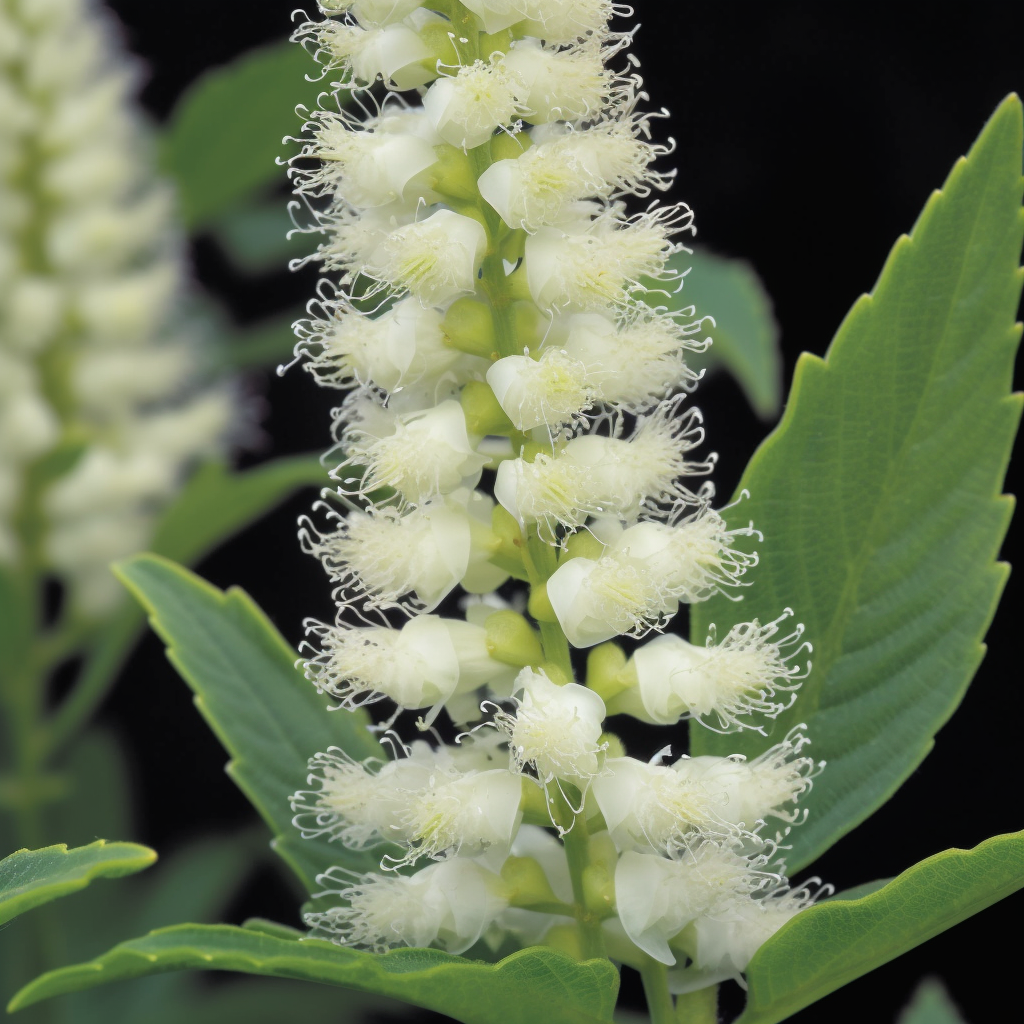
Cimicifuga heracleifolia
Cimicifugae Rhizoma has been used as a medicinal herb for fever, pain, and inflammation in East Asia. We conducted this study because the effect of Cimicifugae Rhizoma extract (CRE) on allergic asthma has not yet been evaluated. To induce allergic airway inflammation, we intraperitoneally injected ovalbumin (OVA) mixed with aluminum hydroxide into mice twice at intervals of 2 weeks (Days 0 and 14) and then inhaled them thrice with 1% OVA solution using a nebulizer (Days 21 to 23). CRE (30 and 100 mg/kg) was administered orally daily for 6 days (Days 18 to 23). The mice showed remarkable reduction in allergic inflammation at 100 mg/kg of CRE, as evidenced by decreased inflammatory cell counts, pro-inflammatory cytokine levels, OVA-specific immunoglobulin E level, airway hyperresponsiveness, and production of mucus.
Additionally, these effects were involved with the enhancement of heme oxygenase-1 (HO-1), NAD(P)H: quinone oxidoreductase (NQO1), and nuclear factor erythroid 2-related factor 2 (Nrf2) expression and reduction of nuclear factor-κB (NF-κB) phosphorylation and matrix metalloproteinase-9 expression. Our findings indicated that CRE effectively protected against OVA-induced inflammation and oxidative stress via upregulation of the Nrf2/HO-1/NQO1 signaling and downregulation of NF-κB phosphorylation in asthma caused by OVA.
Conclusion: Triterpene glycosides were the main components of C. heracleifolia extract, and cimigenoside was considered as the effective component with immunomodulatory effect on the pulmonary immune system by oral administration.
Conclusion: These results we obtained probably provided potential candidate CMs formulas or active ingredients to overcome covid-19. Prospectively, animal experiment and rigorous clinic studies are needed to confirm the potential preventive and treat effect of these CMs and compounds.
Cinnamomum cassia
The Lauraceae family has commercial uses, such as in the food, pharmaceutical, and perfume industries. This study was conducted to investigate anti-asthmatic activity of essential oils from the seven species in the Lauraceae family. The essential oils were extracted from the leaves of seven species, and the chemical composition was investigated by gas chromatography-mass spectrometry. The major constituents of essential oils differed depending on the species, even if they belonged to the same family.
The main constituents were camphor (89.09%) in Cinnamomum camphora, linalool (26.91%) in Cinnamomum cassia, 1,8-cineole (23.90%) in Cinnamomum japonicum, d-limonene (10.27%) and β-eudesmol (10.03%) in Lindera obtusiloba, δ-cadinene (13.85%) and α-phellandrene (11.57%) in Machilus japonica, cis-,trans–β-ocimene (13.80% and 12.06%) and elemol (11.46%) in Neolitsea aciculata, and cis–β-ocimene (37.94%) and sabinene (24.91%) in Neolitsea sericea. The anti-asthmatic activity of essential oils was investigated using the lipopolysaccharide-induced NCI-H292 cells. The relative expression levels of the pro-inflammatory cytokines [interleukin (IL)-1β and IL-6] and mucus gene (MUC5AC and MUC5B) were significantly reduced by essential oils from seven species in the Lauraceae family. Among the seven essential oils, the essential oil from L. obtusiloba had the most superior anti-asthmatic activity. These results suggest that the essential oil of L. obtusiloba leaves could be used as an agent to suppress mucus hypersecretion.
Ma Huang Tang ameliorates bronchial asthma symptoms through the TLR9 pathway
Conclusion: MHT could mitigate the pathological changes of acute asthma-like syndrome through inhibition of the TLR9 pathway. Results of this study may provide a reference for the development of a novel therapy for patients with allergic asthma.
Cinnamomum cassia exhibits antioxidative, apoptotic, and cytostatic properties. These activities have been attributed to the modulation of several biological processes and are beneficial for possible pharmaceutical applications. However, the potential of C. cassia in retarding lung adenocarcinoma cells metastasis remains ambiguous. We determined whether C. cassia extract (CCE) reduces metastasis of human lung adenocarcinoma cells. The results showed that CCE treatment (up to 60 μg/mL) for 24 h exhibited no cytotoxicity on the A549 and H1299 cell lines but inhibited the motility, invasiveness, and migration of these cells by repressing matrix metalloproteinase (MMP)-2 and urokinase-type plasminogen activator (u-PA). CCE also impaired cell adhesion to collagen. CCE significantly reduced p-focal adhesion kinase (FAK) Tyr397, p-FAK Tyr925, p-extracellular signal-regulated kinases (ERK)1/2, and Ras homolog gene family (Rho)A expression. CCE showed anti-metastatic activity of A549 and H1299 cells by repressing u-PA/MMP-2 via FAK to ERK1/2 pathways. These findings may facilitate future clinical trials of lung adenocarcinoma chemotherapy to confirm the promising results.
The prevalence of asthma is gradually increasing, and endangers human health. Many therapeutic agents have been developed to address this concern. Cinnamomum cassia (L.) J.Presl is a traditional herbal remedy in China, Japan, and Korea and used mainly to control common cold, cough, pneumonitis and fever in Donguibogam, a medical encyclopedia of Korea. Therefore, we investigated whether C. cassia (L.) J.Presl extract (CCE) confers protective effects on asthma model induced by ovalbumin (OVA).
The animals were received intraperitoneal administration of OVA on day 1 and 14, and then subjected to OVA inhalation from day 21–23. They were orally treated CCE (30 and 100 mg/kg) from day 18–23. CCE administration decreased allergic responses, including airway hyperresponsiveness, eosinophilia, inflammatory cytokine production, and immunoglobulin E in OVA-exposed mice, along with the decline in inflammatory cell count and mucus secretion in respiratory tract. Additionally, CCE suppressed MAPK phosphorylation and MMP-9 expression in OVA-exposed mice. Overall, CCE treatment attenuated allergic responses induced by OVA exposure, which may be connected to the suppression of MAPK phosphorylation.
Citri Grandis Exocarpium
Conclusion: Citri Grandis Exocarpium may probably delay the progression of covid-19 through a variety of pharmacological activities and the inhibition of the infection and replication of SARS-CoV-2 due to targeting ACE2, MPro, PLP, and DC-SIGN, reminding that Citri Grandis Exocarpium may possess a potential capacity to protect against covid-19.
In this review, the researchers summarized the characteristics and associated mechanisms of naringin, the pharmacologically active compound of the Chinese herb Huajuhong (Exocarpium Citri grandis, ECG) in alleviating multiple respiratory diseases, and discussed its potential application in the prevention and treatment of coronavirus disease 2019.
Conclusion: Network pharmacology was employed to systematically investigate the active ingredients and targets of HJH in treatment of COPD and lung cancer. And then, the common pharmacodynamic network of HJH for the two malignant respiratory diseases was firstly described. Furthermore, naringenin was proved to strongly bind with AKT1 and EGFR. It may provide the scientific basis for understanding the “Same treatment for different diseases” strategy in traditional Chinese medicine and inspirit subsequent drug discovery for COPD, lung cancer and other malignant lung diseases.
Citrus aurantium
Conclusion. Citrus aurantium can participate in the treatment of NSCLC through multiple targets and pathways.
Korean Citrus aurantium L. has long been used as a traditional medicine for the treatment of various cancers such as those of lung and prostat. C. aurantium L. has been reported to have anti-metastasis properties in in vitro experiments. However, the anti-metastasis effect of C. aurantium L. in vivo is not well understood. This study investigated the anti-metastatic effect of flavonoids isolated from Korean C. aurantium L. using high-performance liquid chromatography coupled with tandem mass spectrometry (HPLC-MS/MS) in NOD/SCID mice. PKH-26 staining and immunohistochemical analyses indicated that flavonoids prevented cancer cell infiltration and localization to the lung. Also, flavonoids induced cancer cell apoptosis through the regulation of the apoptosis related protein cleaved caspase-3 and p-p53. In vitro results also show that flavonoids inhibited A549 cells metastasis and induced apoptosis.
Moreover, proteomic analysis indicated comparable down-regulation of the Ddx3x and ANP43B proteins with control group after treatment with flavonoids. These results provide scientific support for the use of flavonoids isolated from C. aurantium L. for the treatment of human lung cancer.
This study investigated the anti-proliferative and apoptotic effect of flavonoids isolated from Korean Citrus aurantium L. using A549 lung cancer cells. Flavonoids potently inhibited of A549 cells in a dose-dependent manner, whereas flavonoids had a weak inhibitory effect on proliferation of WI-38 cells. Flow cytometry and Western blot analysis showed that flavonoids induced cell cycle arrest at the G2/M checkpoint by controlling the proteins expression level of cyclin B1, cdc2, cdc25c and p21WAF1/CIP1. Also, flavonoids induced apoptosis through the regulation of the expression of caspases, cleaved PARP and Bax/Bcl-xL ratio. The activity of caspase-3 on A549 cells increased in a dose-dependent manner. These results clearly indicated that the anti-cancer effect of flavonoids on A549 cells follows multiple cellular pathways through G2/M arrest and the induction of apoptosis.
Oxidative stress-related lung dysfunction by chromium(VI): alleviation by Citrus aurantium L.
Chromium(VI), a very strong oxidant, causes high cytotoxicity through oxidative stress in tissue systems. Our study investigated the potential ability of ethanolic Citrus aurantium L., family Rutaceae extract, used as a nutritional supplement, to alleviate lung oxidative damage induced by Cr(VI). A high-performance liquid chromatography coupled with a mass spectrometer method was developed to separate and identify flavonoids in C. aurantium L. Six flavonoids were identified, as (1) poncirin, (2) naringin, (3) naringenin, (4) quercetin, (5) isosinensetin, and (6) tetramethyl-o-isoscutellarein. Adult Wistar rats, used in this study, were divided into six groups of six animals each: group I served as controls which received standard diet, group II received via drinking water K2Cr2O7 alone (700 ppm), groups III and IV were pretreated for 10 days with ethanol extract of C. aurantium L. at doses of 100 and 300 mg/kg body weight/day, respectively, and then K2Cr2O7 was administrated during 3 weeks, and groups V and VI received during 10 days only C. aurantium L. ethanol extract at doses of 100 and 300 mg/kg/day, respectively. Ethanol extract of C. aurantium L. was administered orally.
Rats exposed to Cr(VI) showed in lung an increase in malondialdehyde and protein carbonyl levels and a decrease in sulflydryl content, glutathione, nonprotein thiol, and vitamins C and E levels. Decreases in enzyme activities such as in Na+K+ ATPase, catalase, glutathione peroxidase, and superoxide dismutase were noted. Pretreatment with C. aurantium L. of chromium-treated rats ameliorated all biochemical parameters. lung histological studies confirmed the biochemical parameters and the beneficial role of C. aurantium L.
Citrus reticulata
Inhibitory effects of alkaline extract of Citrus reticulata on pulmonary fibrosis
Conclusion: The results collectively demonstrated that CAE possessed an inhibitory activity on the proliferation of MRC-5 and a preventive effect on BLM-induced pulmonary fibrosis in rats. The preliminary mechanisms of the effects may be through upregulation of MMP-9 expression and inhibition of the expressions of TNF-α and TIMP-1.
Inhibitory effects of citrus extracts on the experimental pulmonary fibrosis
Conclusion: The results suggest that the ethanol extract of Citrus reticulata has anti-pulmonary fibrosis effects and might have a great potential for the treatment of fibrosis of lung.
Non-small cell lung cancer (NSCLC) accounts for most cases of lung cancer. The peel oil of mandarin Citrus reticulata Blanco cv. Dancy (MPO) is a natural source of essential oils and carotenoids. Volatile and non-volatile lipid compounds were characterized by chromatographic methods. We demonstrate that MPO causes a dose-dependent growth inhibition of NSCLC model cells (A549) in culture and tumour growth in vivo of the same cells implanted in nude mice fed with MPO-supplemented diets. MPO induced cell cycle arrest mainly at the G0/G1 phase and reduced the amount of membrane-bound Ras protein along with apoptosis induction. No toxicological effect was found in liver parameters analysed in treated mice and histopathological analyses of their organs did not show any morphological changes. In conclusion, the data suggest that MPO possesses significant antitumor activity without causing systemic toxicity, proposing it as a dietary supplement that may be helpful in cancer prevention.
Cmnamomi Ramulus
Herb Ephedra (Ma Huang in Chinese) and Ramulus Cinnamomi (Gui Zhi in Chinese) are traditional Chinese herbs, often used together to treat asthma, nose and lung congestion, and fever with anhidrosis. Due to the adverse effects of ephedrine, clinical use of Ma Huang is restricted. However, Gui Zhi extract has been reported to decrease spontaneous activity in rats and exert anti-inflammatory and neuroprotective effects. The present study explored the possible inhibitory effect of Gui Zhi on Ma Huang-induced neurotoxicity in rats when the two herbs were used in combination. All Ma Huang and Ma Huang-Gui Zhi herb pair extracts were prepared using methods of traditional Chinese medicine and were normalized based on the ephedrine content. Two-month-old male Sprague-Dawley rats ( rats/group) were administered Ma Huang or the Ma Huang-Gui Zhi herb pair extracts for 7 days (ephedrine = 48 mg/kg), and locomotor activity was measured. After 7 days, oxidative damage in the prefrontal cortex was measured. Gui Zhi decreased hyperactivity and sensitization produced by repeated Ma Huang administration and attenuated oxidative stress induced by Ma Huang.
The results of this study demonstrate the neuroprotective potential of Gui Zhi in Ma Huang-induced hyperactivity and oxidative damage in the prefrontal cortex of rats when used in combination.
Traditional Chinese medicine for covid-19 treatment
The current 2019-nCoV outbreak is moving rapidly [1], the cumulative number of confirmed cases in mainland China has reached 80151, with 47,204 (58.89 %) cured cases and 2943 (3.67 %) deaths as of 2-Mar-2020, and no specific drug has been discovered for Coronavirus disease 2019 (covid-19). However, a number of clinical practice results showed that traditional Chinese medicine (TCM) plays significant role in the treatment of covid-19, bringing new hope for the prevention and control of covid-19.
Codonopsis pilosula
Codonopsis pilosula polysaccharides attenuate Escherichia coli-induced acute lung injury in mice
Acute lung injury (ALI) is an inflammatory lung disease that is caused by bacterial infection. Lipopolysaccharide (LPS), a prototype pathogen-associated molecular pattern (PAMP) from Gram-negative bacteria such as Escherichia coli (E. coli), is an essential risk factor for ALI. LPS and E. coli induced the activation of mitogen-activated protein kinase (MAPK) and nuclear factor kappaB (NF-κB) signaling pathways, which led to the increasing immune molecule transcription, including pro-inflammatory cytokine and chemokine secretion. Codonopsis pilosula polysaccharides (CPPS) exhibit various biological activities and pharmacological effects. However, the effect of CPPS on ALI caused by LPS stimulation or E. coli infection remains unclear. Our results showed that CPPS (6.25, 12.5, 25, or 50 μg mL−1) could attenuate the secretion of TNF-α and IL-1β and impair the phosphorylation of ERK, p38 and p65 in E. coli-infected macrophages without causing toxic reactions.
In addition to regulating the secretion of pro-inflammatory cytokines and the activation of MAPK and NF-κB signaling pathways, CPPS could enhance bacterial phagocytosis and intracellular killing in macrophages, and inhibit the bacterial growth of E. coli. In vivo experiments showed that CPPS attenuated LPS- and E. coli-induced lung damage in mice, which was characterized by decreased pro-inflammatory cytokine (TNF-α, IL-1β and IL-6) and chemokine (RANTES) production and production of the biomarkers of tissue damage (HABP2 and HMGB1) in the lungs. Altogether, this study demonstrated that CPPS have a protective effect on the lungs in LPS- and E. coli-induced ALI mouse models, suggesting that CPPS could be a potential drug for the treatment of ALI.
This systematic review and meta-analysis assessed the efficacy and safety of Dang shen [Codonopsis pilosula (Franch.) Nannf., root] formulae for the treatment of chronic obstructive pulmonary disease (COPD). English and Chinese databases were searched, and 48 randomized controlled trials were included. Dang shen formulae improved lung function forced expiratory volume in 1 s compared with conventional pharmacotherapy (CP) [mean difference (MD) 0.22 L, 95% confidence interval (CI) 0.13–0.31, p < 0.001, I2 = 5%] and quality of life (St. Georges respiratory Questionnaire) compared with placebo (MD −7.19, 95% CI −10.82 to −3.56, p < 0.001, I2 = 0%) and when combined with CP versus CP (MD −9.05, 95% CI −12.72 to −5.38, p < 0.001, I2 = 89%). Dang shen formulae also increased distance walked in 6 min when combined with CP versus CP alone (MD 51.43 m, 95% CI 30.06–72.80, p < 0.001, I2 = 27%) and reduced frequency/days with COPD exacerbations.
Risk of bias was evaluated using the Cochrane tool. Methodological shortfalls were identified. Adverse events were low and not different between intervention and control groups. Thirty-three events were reported, including gastrointestinal upset, dry mouth, and insomnia. Dang shen formulae appear to improve some aspects of the included COPD outcomes. However, owing to methodological flaws, the current evidence is inadequate to support the routine use of Dang shen formulae outside of Chinese medicine practice. However, these results justify further investigation.
Astragalus and Codonopsis pilosula are used for their immunomodulatory and anti-inflammatory effects. Here, we investigated the effects of Astragalus polysaccharides (APS) and Codonopsis pilosula polysaccharides (CPP) on alveolar macrophage (AM) phagocytosis and inflammation in chronic obstructive pulmonary disease (COPD) associated with exposure to particulate matter with a mean aerodynamic diameter ≤2.5 μm (PM2.5). A mouse model of COPD was established by cigarette smoke exposure. PM2.5 exposure was performed by inhalation of a PM2.5 solution aerosol. APS and CPP were administered intragastrically. COPD showed defective AM phagocytosis and increased levels of interleukin (IL)-6, IL-8, and tumor necrosis factor (TNF)-α in bronchoalveolar lavage fluid and serum. PM2.5 exposure aggravated the damage, and this effect was reversed by APS and CPP gavage. The results indicate that APS and CPP may promote defective AM phagocytosis and ameliorate the inflammatory response in COPD with or without PM2.5 exposure.
Coenzyme Q10
Severity of chronic obstructive pulmonary disease (COPD) exacerbation is associated with increased level of copper (Cu), zinc (Zn), and lipid peroxidation (malodialdehyde, MDA). The aim of this study was to investigate the levels of lipid peroxidation, Coenzyme Q10 (CoQ10), Zn, and Cu in the COPD exacerbations. Forty-five patients with COPD acute exacerbation and 45 healthy smokers as control group were used in the study. Forced expiratory volume in 1 s (FEV1) and forced vital capacity (FVC) were lower in exacerbation group than in control. C- reactive protein levels, white blood cell count, and sedimentation rate were significantly (p < 0.001) higher in patients than in control. CoQ10 level and Cu/Zn ratio was significantly (p < 0.05) lower in patients than in control, although MDA, Cu, and Zn levels were significantly (p < 0.05) higher in patients than in control. Negative correlations were found among MDA, Cu, Zn, FEV1, and FVC values in exacerbation and control subjects (p < 0.05). In conclusion, we observed that oxidative stress in the exacerbation period of COPD patients was increased. The decrease in CoQ10 level and Cu/Zn ratio and elevation in Cu and Zn levels observed in the patients probably result from the defense response of organism and are mediated by inflammatory-like substances.
Coenzyme Q10 attenuates airway inflammation and oxidative stress in neonatal asthmatic rats
Conclusion: Coenzyme Q10 attenuates airway inflammation and oxidative stress in neonatal asthmatic rats. Thus, coenzyme Q10 has promising therapeutic potential in the management of asthma.
Coenzyme Q_{10} supplementation reduces corticosteroids dosage in patients with bronchial asthma
Bronchial asthma is a chronic inflammatory disease of respiratory system, with disturbances in the dynamic balance of oxidant-antioxidant capacity of the lungs. Long-term administration of corticosteroids has been shown to result in mitochondrial dysfunction and oxidative damage of mitochondrial and nuclear DNAs. We previously documented decreased coenzyme Q_{10} (CoQ_{10}) and α-tocopherol concentrations in plasma and blood in corticosteroid-dependent bronchial asthma patients. In the present study we demonstrate that CoQ_{10} supplementation reduces the dosage of corticosteroids in these patients. Patients and methods: This was an open, cross-over, randomized clinical study with 41 bronchial asthma patients (13 males, 28 females), ages 25–50 years. All patients suffered from persistent mild to moderate asthma. The patients were divided into two groups, one group receiving standard anti-asthmatic therapy and clinically stabilized, and the second group receiving, in addition, antioxidants consisting of CoQ_{10} as Q-Gel® (120 mg) + 400 mg α-tocopherol + 250 mg vitamin C a day. The groups were crossed over at 16 weeks for a total duration of 32 weeks.
Results and conclusions: Data show that patients with corticosteroid-dependent bronchial asthma have low plasma CoQ_{10} concentrations that may contribute to their antioxidant imbalance and oxidative stress. A reduction in the dosage of corticosteroids required by the patients following antioxidant supplementation was observed, indicating lower incidence of potential adverse effects of the drugs, decreased oxidative stress. This study also demonstrates the significant uptake of CoQ_{10} by lung tissue in a rat model using hydrosoluble CoQ_{10} (Q-Gel®).
Nebulized coenzyme Q10 nanosuspensions: A versatile approach for pulmonary antioxidant therapy
Conclusion: Coenzyme Q10 nanosuspensions were manufactured and characterized for their particle size, vitamin content, stability and aerosolization performance in view of an antioxidant therapy for cancer patients and other diseases of the lung. The formulations tested show an average particle size well below 100 nm and good aerosolization properties using an air-jet nebulizer. The formulations containing PEG32 stearate or lecithin as stabilizer, show an increase in particle size during storage that affects.
The present study was conducted to investigate the potential protective effects of coenzyme Q 10 (CoQ10) administration on methotrexate induced lung and liver fibrosis in rat model, and to explore our hypothesis regarding its possible mechanism of action through reactivation of autophagy pathway. Methotrexate induced fibrosis was achieved by intraperitoneal injections twice a week for 4 weeks. A combined treatment of CoQ10 and methotrexate were used. Blood samples for biochemical analysis, lung and livers tissue for biochemical and histopathological analysis, were investigated. Concomitant treatment of CoQ10 & methotrexate caused improvement in histological picture of the lung and liver tissues, liver function and oxidative stress biomarkers, modulation of autophagy genes [mammalian target of rapamycin (m-TOR), Microtubule-associated proteins 1 A/1B light chain 3 (MAP1LC3B), and Sequestosome 1 ubiquitin-binding protein p62 (p62/SQSTM1)] with simultaneous reduction in High Mobility Group Protein B1 (HMGB1). Based on our results we postulated that CoQ10 up regulates autophagy pathway that could explain its protective properties against lung and liver fibrosis caused by methotrexate treatment in current study rat model.
Sepsis-associated acute lung injury (ALI) is a critical condition characterized by severe inflammatory response and mitochondrial dysfunction. Coenzyme Q10 (CoQ10) and aescin (AES) are well-known for their anti-inflammatory activities. However, their effects on lipopolysaccharide (LPS)-induced lung injury have not been explored yet. Here, we asked whether combined pretreatment with CoQ10 and AES synergistically prevents LPS-induced lung injury. Fifty male rats were randomized into 5 groups: (1) control; (2) LPS-treated, rats received a single i.p. injection of LPS (8 mg/kg); (3) CoQ10-pretreated, (4) AES-pretreated, or (5) combined-pretreated; animals received CoQ10 (100 mg/kg), AES (5 mg/kg), or both orally for 7 days before LPS injection. Combined CoQ10 and AES pretreatment significantly reduced lung injury markers; 52.42% reduction in serum C-reactive protein (CRP), 53.69% in alkaline phosphatase (ALKP) and 60.26% in lactate dehydrogenase (LDH) activities versus 44.58, 37.38, and 48.6% in CoQ10 and 33.81, 34.43, and 39.29% in AES-pretreated groups, respectively. Meanwhile, combination therapy significantly reduced interleukin (IL)-1β and tumor necrosis factor (TNF)-α expressions compared to monotherapy (p < 0.05).
As previously reported, hydrogen gas improves the prognosis of patients with cancer by restoring exhausted CD8+ T cells into active CD8+ T cells, possibly by activating mitochondria. As mitochondrial activators exhibit synergistic effects with nivolumab, the current study investigated whether hydrogen gas also affects the clinical outcomes of nivolumab. A total of 42 of 56 patients with lung cancer treated with nivolumab received hydrogen gas. Exhausted markers (PD‑1 and Tim‑3) on cell populations in the CD8+ T cell differentiation pathway were analyzed using flow cytometry. The concentration of coenzyme Q10 (CoQ10) was measured as a marker of mitochondrial function.
The 42 patients treated with hydrogen gas and nivolumab (HGN) indicated a significantly longer overall survival (OS) compared with those treated with nivolumab only (n=14). In multivariate analysis, PD‑1+Tim‑3+terminal CD8+ T cells (PDT+) were an independent poor prognostic factor in OS, and CoQ10 showed a tendency to be associated with improved OS. The change in the rate of PDT+ and CoQ10 after vs. before HGN (PDT+ ratio and CoQ10 ratio, respectively) revealed that patients with low PDT+ ratio (<0.81) and high CoQ10 ratio (>1.175) had significantly longer OS compared with those with high PDT+ ratio and low CoQ10 ratio. Furthermore, PDT+, with a significant reverse correlation with CoQ10, was significantly lower in patients with high CoQ10 and/or CoQ10 ratio than in those low CoQ10 and/or CoQ10.
Hydrogen gas has been suggested to enhance the clinical efficacy of nivolumab by increasing CoQ10 (mitochondria) to reduce PDT+, with PDT+ and CoQ10 as reliable negative and positive biomarkers of nivolumab, respectively.
Protective role of Coenzyme Q10 in two models of rat lung injury
Conclusion: The effect of CoQ10 pretreatment is insufficient to protect the lung against severe ischaemia-reperfusion as may occur in lung transplantation. However, in the setting of less severe pulmonary injury as in anaesthesia and non-transplant surgery, CoQ10 may have a protective role.
Coptidis Rhizoma
Pelargonium sidoides (PS) is traditionally used to treat respiratory and gastrointestinal infections, dysmenorrhea, and hepatic disorders in South Africa. Coptis Rhizoma (CR) is used to treat gastroenteric disorders, cardiovascular diseases, and cancer in East Asia. In the present study, we intended to observe the possible beneficial anti-asthma effects of PS and CR on the ovalbumin- (OVA-) induced asthma C57BL/6J mice. asthma in mice was induced by OVA sensitization and subsequent boosting. PS + CR (300 and 1,000 mg/kg; PO) or dexamethasone (IP) was administered once a day for 16 days. The changes in the body weight and gains, lung weights and gross inspections, total and differential cell counts of leukocytes in bronchoalveolar lavage fluid (BALF), serum OVA-specific immunoglobulin E (OVA-sIgE) levels, interleukin-4 (IL-4) and IL-5 levels in BALF and lung tissue homogenate, and IL-4 and IL-5 mRNA levels in lung tissue homogenates were analyzed with lung histopathology: mean alveolar surface area (ASA), alveolar septal thickness, numbers of inflammatory cells, mast cells, and eosinophils infiltrated in the alveolar regions, respectively. Significant increases in lung weights, total and differential cell counts of leukocytes in BALF, serum OVA-sIgE levels, and IL-4 and IL-5 levels in BALF and lung tissue homogenate were observed in OVA control as compared to those of intact control.
In addition, OVA control showed a significant decrease in mean ASA and increases in alveolar septal thickness, numbers of inflammatory cells, mast cells, and eosinophils infiltrated in alveolar regions. However, these allergic and inflammatory asthmatic changes were significantly inhibited by PS + CR in a dose-dependent manner. In this study, PS + CR showed dose-dependent beneficial effects on OVA-induced asthma in mice through anti-inflammatory and antiallergic activities. Therefore, it is expected that PS + CR have enough potential as a new therapeutic agent or as an ingredient of a medicinal agent for various allergic and inflammatory respiratory diseases including asthma.
Asian sand dust (ASD) is known to cause adverse respiratory health disorders, but there is no beneficial strategies for preventing harmful health effects by ASD. This study aimed to evaluate the inhibitory effects of a combined extract mixture of ivy leaves and Coptidis rhizoma on allergic lung inflammation responses to ASD. Allergic lung inflammation was evoked with ovalbumin (OVA) or OVA plus ASD in a murine asthma model. ASD significantly enhanced allergic lung inflammation in the airway hyperresponsiveness and pathologic changes of the lung in mice compared to the vehicle and OVA controls. Oral administration of a combined extract mixture of ivy leaves and Coptidis rhizoma significantly decreased the infiltration of eosinophils and lymphocytes, and suppressed the releases of Th2 cytokines (IL-4 and IL-5) and chemokine (MCP-1) in bronchoalveolar lavage fluid compared with OVA plus ASD.
The anti-inflammatory effect of the extract mixture (25 to 100 mg/kg, p.o.) was similar to that of dexamethasone (1 mg/kg, p.o.). This study suggested a novel insight into the pathological mechanisms underlying the inhibition of ASD-induced allergic asthma via suppression of eosinophilic inflammatory mediators release for the development of new strategies in preventing of the eosinophilic bronchial asthma caused by air-borne dust.
Extract of Coptidis rhizoma and use thereof in treating respiratory disease
A composition for suppressing cough, removing sputum, preventing and/or treating a respiratory disease comprising an extract of Coptidis rhizoma or a combined extract of Coptidis rhizoma with ivy leaf as an active ingredient, and a method of suppressing cough, removing sputum, and/or preventing and/or treating respiratory disease using the composition, are provided.
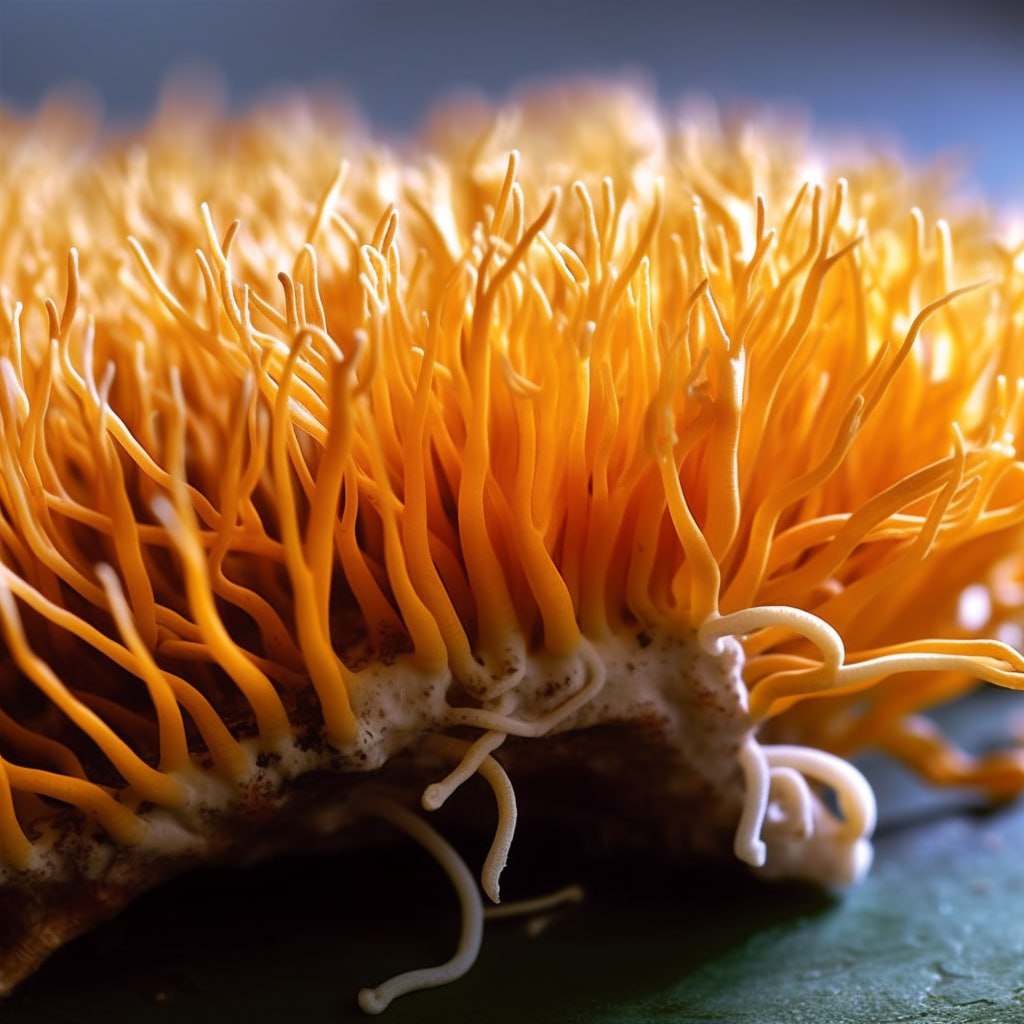
Cordyceps
Protective roles of Cordyceps on lung fibrosis in cellular and rat models
Conclusion: The findings provide an insight into the preventive and therapeutic potentials of Cordyceps for the treatment of lung fibrosis.
The purpose of this study was to investigate both the anti-inflammatory effect of the edible fungus on experimental rats with chronic bronchitis induced by tobacco smoking, and the pilot effective constituent. Test rats were intragastrically administered with 3 doses of hot-water extract from C. guangdongensis (0.325, 0.65 and 1.30 g kg−1 bw daily for low, middle and high dose, respectively) for 26 days. Biochemical indices and histological examinations in rats with chronic bronchitis induced by tobacco smoking were determined. The content and molecular weights of the polysaccharide from the hot-water extract were detected by the phenol-sulfuric acid method and gel permeation chromatography, respectively. Biochemical indices in the low, middle and high-dose groups with the hot-water extract of C. guangdongensis were only 53.4%, 46.0% and 40.4% of those in the model control group (total leukocytes), respectively; 70.7%, 60.3% and 58.1% (macrophages); 33.0%, 26.8% and 16.1% (neutrophils); and 22.2%, 23.5% and 13.6% (lymphocytes) of those in the model control group. The bronchial lesions and inflammatory cell infiltration were significantly alleviated in all groups with hot-water extract of C. guangdongensis.
This study indicates that the hot-water extract from C. guangdongensis has a significant anti-inflammatory effect on chronic bronchitis. The content of the polysaccharide was 6.92%; the molecular weights of the 3 polysaccharide components were respectively 1.28 × 106, 2.36 × 104 and 5.21 × 103 Da.
Cordyceps sinensis inhibits airway remodeling in rats with chronic obstructive pulmonary disease
Cordyceps sinensis is a traditional Chinese herbal medicine that has been used for centuries in Asia as a tonic to soothe the lung for the treatment of respiratory diseases. The aim of the present study was to determine the effects of C. sinensis on airway remodeling in chronic obstructive pulmonary disease (COPD) and investigate the underlying molecular mechanisms. Rats with COPD were orally administered C. sinensis at low, moderate or high doses (2.5, 5 or 7.5 g/kg/day, respectively) for 12 weeks. airway tissue histopathology, lung inflammation and airway remodeling were evaluated. C. sinensis treatment significantly ameliorated airway wall thickening, involving collagen deposition, airway wall fibrosis, smooth muscle hypertrophy and epithelial hyperplasia in model rats with COPD.
Additionally, C. sinensis administration in rats with COPD reduced inflammatory cell accumulation and decreased inflammatory cytokine production, including tumor necrosis factor-α, interleukin-8 and transforming growth factor (TGF)-β1 in bronchoalveolar lavage fluid. Meanwhile, the increased levels of α-smooth muscle actin and collagen I in the COPD group were also markedly decreased by C. sinensis treatment. Furthermore, compared with untreated rats with COPD, C. sinensis reduced the expression level of phosphorylated (p)-Smad2, p-Smad3, TGF-β1 and its receptors, with the concomitant increased expression of Smad7 in the lungs of rats with COPD. These results indicated that treatment with C. sinensis may be a useful approach for COPD therapy.
Moderate-to-severe asthma has a substantial impact on the health-related quality of life (HR-QOL) of the patients. Cordyceps sinensis is a traditional Chinese medicine that is evaluated clinically for the treatment of many diseases, such as chronic allograft nephropathy, diabetic kidney disease, and lung fibrosis. In order to investigate the effects of Cordyceps sinensis on patients with moderate-to-severe persistent asthma, 120 subjects were randomized to receive Corbin capsule containing Cordyceps sinensis for 3 months (treatment group, n = 60), whereas the control group (n = 60) did not receive treatment with Corbin capsule. Inhaled corticosteroid and as-needed β-agonists were used in the treatment of both groups. HR-QOL was measured with the Juniper’s asthma Quality of Life Questionnaire (AQLQ). The incidence of asthma exacerbation, pulmonary function testing, and serum measurements of inflammatory mediators were also evaluated.
The results showed that the treatment group indicated a significant increase in AQLQ scores and lung function compared with the control group. The expression levels of the inflammation markers IgE, ICAM-1, IL-4, and MMP-9 in the serum were decreased and IgG increased in the treatment group compared with the control group. Therefore, the conclusion was reached that a formulation of Cordyceps sinensis improved the HR-QOL, asthma symptoms, lung function, and inflammatory profile of the patients with moderate-to-severe asthma.
Curcumin
Curcumin effects on chronic obstructive pulmonary disease: A systematic review
Conclusion: Consequently, the findings of the current review demonstrate that Curcumin’s modulatory effects on oxidative stress, cell viability, and gene expression could be helpful in COPD management. However, for data confirmation, further randomized clinical trials are required.
Protection from acute and chronic lung diseases by curcumin
The aim of this review has been to describe the current state of the therapeutic potential of curcumin in acute and chronic lung injuries. Occupational and environmental exposures to mineral dusts, airborne pollutants, cigarette smoke, chemotherapy, and radiotherapy injure the lungs, resulting in acute and chronic inflammatory lung diseases. Despite major advances in treating lung diseases, until now disease-modifying efficacy has not been demonstrated for any of the existing drugs. Current medical therapy offers only marginal benefit; therefore, there is an essential need to develop new drugs that might be of effective benefit in clinical settings. Over the years, there has been increasing evidence that curcumin, a phytochemical present in turmeric (Curcuma longa), has a wide spectrum of therapeutic properties and a remarkable range of protective effects in various diseases.
Several experimental animal models have tested curcumin on lung fibrosis and these studies demonstrate that curcumin attenuates lung injury and fibrosis caused by radiation, chemotherapeutic drugs, and toxicants. The growing amount of data from pharmacological and animal studies also supports the notion that curcumin plays a protective role in chronic obstructive pulmonary disease, acute lung injury, acute respiratory distress syndrome, and allergic asthma, its therapeutic action being on the prevention or modulation of inflammation and oxidative stress. These findings give substance to the possibility of testing curcumin in patients with lung diseases.
Curcumin in Management of Chronic Obstructive pulmonary disease
In this double-blind, placebo-controlled trial, 120 patients with a diagnosis of COPD will be randomized to receive either a daily curcumin preparation or placebo for 90 days, in addition to the standard of care treatment. The outcomes will be compared between the study arms. No dose escalation will be used.
Ozone is a harmful tropospheric pollutant, causing the formation of reactive oxygen and nitrogen species that lead to oxidative damage in living beings. NF-κB can be activated in response to oxidative damage, inducing an inflammatory response. Nowadays, there are no reliable results that consolidate the use of antioxidants to protect from damage caused by ozone, particularly in highly polluted cities. Curcumin has a strong antioxidant activity and is a potent inhibitor of NF-κB activation with no side effects. The aim of this study is to evaluate the effect of curcumin in preventive and therapeutic approaches against oxidative damage, NF-κB activation, and the rise in serum levels of IL-1β and TNF-α induced by acute and chronic exposure to ozone in rat hippocampus.
One hundred male Wistar rats were distributed into five groups; the intact control, curcumin-fed control, the ozone-exposed group, and the preventive and therapeutic groups. These last two groups were exposed to ozone and received food supplemented with curcumin. Lipid peroxidation was determined by spectrophotometry, and protein oxidation was evaluated by immunodetection of carbonylated proteins and densitometry analysis. Activation of NF-κB was assessed by electrophoretic mobility shift assay (EMSA), and inflammatory cytokines (IL-1β and TNF-α) were determined by ELISA.
Curcumin decreased NF-κB activation and serum levels of inflammatory cytokines as well as protein and lipid oxidation, in both therapeutic and preventive approaches. Curcumin has proven to be a phytodrug against the damage caused by the environmental exposure to ozone.
Cymbidium ensifolium
Endophytic mycorrhizal fungus P15 isolated from the roots of wild Cymbidium ensifolium was used to infect the non-mycorrhizal rhizomes of C. sinense and C. ensifolium. A marked increase in respiratory rate, cytochrome C oxidase activity, and peroxidase activity was shown in the rhizomes of two infected species, while the change in IAA oxidase activity was slight. The levels of respiratory rate, activities of cytochrome C oxidase and peroxidase in the rhizomes of C. ensifolium were all higher than those of C. sinense before or after infection, but the IAA oxidase activity showed the contrary.
A new dihydrophenanthrene from Cymbidium finlaysonianum and structure revision of cymbinodin-A
1-(4-Hydroxybenzyl)-4,6-dimethoxy-9,10-dihydrophenanthrene-2,7-diol (13), a new dihydrophenanthrene, was isolated along with ferulic acid esters (1), eight phenanthrene derivatives (2, 3, 6–11) and three bibenzyls (4, 5, 12) from an epiphytic orchid, Cymbidium finlaysonianum. The molecular structure of cymbinodin-A (2) was revised based on spectroscopic data and comparison with the literature. Compounds 2, 3, and 6–13 were evaluated and shown to be cytotoxic against human small cell lung cancer (NCI-H187) cell line. Cymbinodin-A displayed the highest cytotoxicity with an IC50 value of 3.73 µM.
Cynanchum atratum
Asthma is a common allergic airway inflammatory disease, characterized by abnormal breathing due to bronchial inflammation. asthma aggravates the patient’s quality of life and needs continuous pharmacological treatment. Therefore, discovery of drugs for the treatment of asthma is an important area of human health. The aim of the present study was to evaluate whether Cynanchum atratum extract (CAE) modulates the asthma-like allergic airway inflammation and to study its possible mechanism of action using ovalbumin (OVA)-induced airway inflammation and lipopolysaccharide (LPS)-induced acute lung injury (ALI) in mice, as well as a mast cell-based in vitro model. The histological analysis showed that CAE reduced the airway constriction and immune cell infiltration. CAE also inhibited release of β-hexosaminidase and expression of inflammatory cytokines such as tumor necrosis factor (TNF)-α, interleukin (IL)-4, and IL-5 in bronchoalveolar lavage fluid and lung tissues. In addition, CAE reduced the OVA-specific immunoglobulin (Ig) E, total IgE, IgG1, and IgG2a levels in the serum. In the LPS-induced ALI model, CAE suppressed the LPS-induced lung barrier dysfunction and the release of proinflammatory cytokines.
Because allergic airway inflammatory responses are associated with the activation of mast cells, RBL-2H3 cells were used to evaluate the underlying mechanism of CAE effects. In RBL-2H3 cells, CAE down-regulated release of β-hexosaminidase and histamine by reducing the intracellular calcium influx. In addition, CAE suppressed the expression of proinflammatory cytokines by inhibiting nuclear translocation of nuclear factor-κB. Taken together, our findings suggest that CAE may help in the prevention or treatment of airway inflammatory diseases.
A review of the ethnopharmacology, phytochemistry and pharmacology of Cynanchum atratum
Conclusion: All kinds of research conducted on C.atratum, especially in field of ethnopharmacological use, phytochemicals and pharmacology have been reviewed. The herb has been used over the years in treating nephritis, urinary tract infection, bronchitis and rheumatic lumbocrural pain. Many studies have been carried out to identify compounds that play a leading role in drug activity. However, the mechanism of drug therapy remains unclear. The evidence used to prove the quality standard of medicinal materials is obviously inadequate. Besides, safety evaluation is necessary for clinical medication. Similarly, the separation of steroidal saponins and the development of new drugs will also need further discussion.
Conclusion: QJM has broad antiviral and anti-inflammatory activity against both common and newly emerged HCoVs possibly by inhibiting the activation of key components in NF-κB/MAPKs signaling pathway. QJM also has a prevention effect against HCoV infections and inhibits the host receptor required for virus entry. These results indicate that QJM may have the therapeutic potential in the treatment of diseases caused by a broad range of HCoVs.
Cynanchum glaucescens
[antitussive, expectorant and anti-asthmatic effects of Cynanchum glaucescens (Decne.) Hand. -Mazz]
The water, ethanol and ether extracts from Cynanchum glaucescems administrated orally showed significant antitussive effect in ammonia-induced cough model in mice. The water and ethanol extracts had obvious expectorant effect. The filtered solution of water decoction injected intraperitoneally could effectively prevent guinea pigs from asthma induced by acetulcholine and histamine mixture, and also inhibit the ear inflammation in mice caused by croton oil. All these effects showed close dose-effect relationship.
A kind of Chinese medicine composition for causing fowl upper disease for chill
The invention discloses a kind of Chinese prescription and its preparation for fowl upper disease caused by chill.The Chinese prescription includes aster, the tuber of stemona, Cynanchum glaucescens, rhizoma zingiberis, Exocarpium Citri Rubrum, radix glycyrrhizae.The formulations such as powder, oral liquid, granule, soluble powder are made by extraction according to the characteristic of each Chinese medicine.The prescription can be widely applied to fowl upper disease caused by chill.The Chinese medicine composition Chinese medicine is easily obtained, and preparation technology is simple, is easily enlarged metaplasia production.
Chinese herbal compound for treating acute bronchitis
The invention provides a Chinese herbal compound for treating acute bronchitis. Main materials of the Chinese herbal compound comprises 10 grams of ephedra, 10 grams of inula flower, 15 grams of Argyreia acuta, 10 grams of Cynanchum glaucescens, 15 grams of radix asteris, 10 grams of Thunberg Fritillary Bulb, 15 grams of Marsdenia tenacissima, 15 grams of Laggera pterodonta, 10 grams of radix glycyrrhizae, 15 grams of dandelion and 30 grams of cortex mori radicis; and an auxiliary material is water. Patients suffering from acute bronchitis have symptoms of thick sputum and pharyngalgia, frequent and urgent cough, and swelling pain of chest and diaphragm, pass a day as if it was a year, and feel quite uncomfortable, and after the Chinese herbal compound is decocted with water and the patients orally take decoction, effects of naturally depressing qi, removing sputum, reliving couth and loosening the chest are achieved.
Dark Plum Fruit
Extract of the Japanese apricot (JAE) has biological properties as an antioxidant and anti-inflammatory agent. We hypothesized that JAE might exert therapeutic effects on cigarette smoke (CS)-induced DNA damage and cytotoxicity. In this study, we found that concentrated JAE protects against cigarette smoke extract (CSE)-induced cytotoxicity and DNA damage accompanied by increased levels of aldehyde dehydrogenase (ALDH)2, 3A1, and Werner’s syndrome protein (WRN) in immortalized human bronchial epithelial cells (HBEC2) and normal human epidermal keratinocytes (NHEK). Using the centrifugal partition chromatography (CPC) method, we identified an undescribed compound, 5-hydroxymethyl-2-furaldehyde bis(5-formylfurfuryl) acetal (which we named FA-1), responsible for the protective effects against CSE. This chemical structure has not been reported from a natural source to date. Protective effects of isolated FA-1 against CSE were observed in both HBEC2 and NHEK cells.
The studies described herein suggest that FA-1 isolated from JAE protects against CSE-induced DNA damage and apoptosis by augmenting multiple isozymes of ALDH and DNA repair and reducing oxidative stress.
Dendrobium nobile
Antibiotic exposure-induced dysbiosis of the intestinal flora increases the risk of developing allergic rhinitis. Hence, regulating the balance of intestinal flora may be useful for preventing and treating allergic rhinitis. However, the underlying mechanism is unclear. Dendrobium nobile (Shihu) exhibits anti-inflammatory and immune activities. Hence, in this study, we investigated the mechanism via which Shihu may improve allergic rhinitis. Mouse models of allergic rhinitis with intestinal flora dysbiosis (Model-D, antibiotics induce intestinal flora dysbiosis with ovalbumin-induced allergy) and normal intestinal flora with allergic rhinitis (Model-N, ovalbumin-induced allergy) were established. The effect of Shihu on intestinal flora and inflammation caused during allergic rhinitis were analyzed. Allergic symptoms, infiltration of hematoxylin and eosin in the lungs and nose, and the release of various factors [interleukin (IL)-2, IL-4, IFN-γ, IL-6, IL-10, and IL-17] in the lungs were evaluated. The results indicate that intestinal flora dysbiosis exacerbated lung and nose inflammation in allergic rhinitis. However, treatment with the Shihu extract effectively reversed these symptoms. Besides, the Shihu extract inhibited the PI3K/AKT/mTOR pathway and increased the level of Forkhead box protein in the lungs.
Additionally, the Shihu extract reversed intestinal flora dysbiosis at the phylum and genus levels and improved regulator T cell differentiation. Furthermore, in the Model-D group, the Shihu extract inhibited the decrease in the diversity and abundance of the intestinal flora. Screening was performed to determine which intestinal flora was positively correlated with Treg differentiation using Spearman’s correlation analysis.
In conclusion, we showed that Shihu extract restored the balance in intestinal flora and ameliorated inflammation in the lungs of allergic rhinitis mice and predicted a therapeutic new approach using Traditional Chinese Medicine to improve allergic rhinitis.
Discovery of Natural Lead Compound from Dendrobium sp. against SARS-CoV-2 Infection
Since the pandemic of severe acute respiratory syndrome coronavirus (SARS-CoV-2) in December 2019, the infection cases have quickly increased by more than 511 million people. The long epidemic outbreak over 28 months has affected health and economies worldwide. An alternative medicine appears to be one choice to alleviate symptoms and reduce mortality during drug shortages. Dendrobium extract is one of the traditional medicines used for covid-19 infection. Several compounds in Dendrobium sp. had been reported to exert pharmacological activities to treat common covid-19-related symptoms. Herein, in silico screening of 83 compounds from Dendrobium sp. by using the SARS-CoV-2 spike protein receptor-binding domain (RBD) as a drug target was performed in searching for a new lead compound against SARS-CoV-2 infection. Four hit compounds showing good binding affinity were evaluated for antiviral infection activity. The new lead compound DB36, 5-methoxy-7-hydroxy-9,10-dihydro-1,4-phenanthrenequinone, was identified with the IC50 value of 6.87 ± 3.07 µM. The binding mode revealed that DB36 bound with the spike protein at the host receptor, angiotensin-converting enzyme 2 (ACE2) binding motif, resulted in antiviral activity.
This study substantiated the use of Dendrobium extract for the treatment of SARS-CoV-2 infection and has identified new potential chemical scaffolds for further drug development of SARS-CoV-2 entry inhibitors.
In Vitro and In Vivo Antitumoral Phenanthrenes from the Aerial Parts of Dendrobium nobile
Two phenanthrenes were isolated from the aerial part of Dendrobium nobile Lindl. and their structures were identified to be 4,7-dihydroxy-2-methoxy-9,10-dihydrophenanthrene (1) and denbinobin (2), among which the former has been first isolated from this plant. These two compounds were found to be cytotoxic against A549 (human lung carcinoma), SK-OV-3 (human ovary adenocarcinoma), and HL-60 (human promyelocytic leukemia) cell lines. Compound 1 also showed antitumor activity on the life span of ICR mice intraperitoneally implanted with 1 × 106 cells of sarcoma 180.
Modern pharmacological studies have demonstrated that Dendrobium nobile Lindl. Alkaloids (DNLA), the main active ingredients of Dendrobium nobile, is valuable as an anti-aging and neuroprotective herbal medicine. The present study was designed to determine whether DNLA confers protective function over neurotoxicant manganese (Mn)-induced cytotoxicity and the mechanism involved. Our results showed that pretreatment of PC12 cells with DNLA alleviated cell toxicity induced by Mn and improved mitochondrial respiratory capacity and oxidative status. Mn treatment increased apoptotic cell death along with a marked increase in the protein expression of Bax and a decrease in the expression of Bcl-2 protein, all of which were noticeably reversed by DNLA.
Furthermore, DNLA significantly abolished the decrease in protein levels of both PINK1 and Parkin, and mitigated the increased expression of autophagy marker LC3-II and accumulation of p62 caused by Mn. These results demonstrate that DNLA inhibits Mn induced cytotoxicity, which may be mediated through modulating PINK1/Parkin-mediated autophagic flux and improving mitochondrial function.
Dictamnus dasycarpus
Two new apotirucallane-type isomeric triterpenoids, named as dictamnin A (1) and dictamnin B (2), with six limonoids, obacunone (3), limonin (4), rutaevin (5), 7α-obacunyl acetate (6), fraxinellone (7), fraxinellonone (8), were isolated from the root bark of Dictamnus dasycarpus Turcz. (Rutaceae). Their structures were well determined by means of IR, MS, 1D and 2D NMR techniques. Both new apotirucallane-type isomeric triterpenoids displayed good antiproliferative effects on lung cancer cells A549 and resulted in a clear increase of the percentage of cells in G1 phase and a decrease in the percentage of cells in S and G2/M phases in comparison with control cells.
Effects of a Dictamnus dasycarpus T. Extract on Allergic Models in Mice
The anti-allergic effect of a 70% ethanol extract from Dictamnus dasycarpus Turcz (DDT) was studied in mice. DDT at doses of 200 and 500 mg/kg inhibited the systemic anaphylactic shock induced by compound 48/80 in a dose-dependent manner. It also inhibited dose-dependently the scratching behavior induced by compound 48/80, histamine and serotonin. An increase in the vascular permeability induced by compound 48/80, histamine and serotonin was also inhibited by DDT. In an in vitro study, DDT inhibited the histamine released from rat peritoneal mast cells induced by compound 48/80. It seems likely from these findings that DDT was effective in antagonizing certain pharmacological effects induced by compound 48/80 that occurred via both histamine and serotonin released from mast cells. In conclusion, DDT may be effective in the relief of symptoms of allergic atopic dermatitis and other allergy-related diseases.
Two new apotirucallane-type isomeric triterpenoids, named as dictamnin A (1) and dictamnin B (2), with six limonoids, obacunone (3), limonin (4), rutaevin (5), 7α-obacunyl acetate (6), fraxinellone (7), fraxinellonone (8), were isolated from the root bark of Dictamnus dasycarpus Turcz. (Rutaceae). Their structures were well determined by means of IR, MS, 1D and 2D NMR techniques. Both new apotirucallane-type isomeric triterpenoids displayed good antiproliferative effects on lung cancer cells A549 and resulted in a clear increase of the percentage of cells in G1 phase and a decrease in the percentage of cells in S and G2/M phases in comparison with control cells.
Dioscorea polystachya
Traditional Chinese medicine composition for treating asthma and preparation method thereof
The invention discloses a traditional Chinese medicine composition for treating asthma and a preparation method thereof. The traditional Chinese medicine composition is mainly prepared from the following raw materials: almond, tuber of stemona, aster, thunberg fritillary bulb, whiteflower hogfennel roots, medicated leaven, bighead atractylodes rhizome, poria peel, cornu saigae tatariace powder, Acorus tatarinowii Schott, fruit of immature citron, dried tangerine or orange peel, white paeony roots, Chinese yam, notopterygium roots, figwortflower picrorhiza rhizome, roots of kudzu vine, roots of Chinese thorowax, roots of straight ladybell, fruit of Chinese wolfberry, Chinese angelica, stem of noble dendrobium, tortoise plastron and the like.
The traditional Chinese medicine composition can be prepared into any one common oral preparation by using a conventional traditional Chinese medicine preparation method. The traditional Chinese medicine composition can obviously improve the symptoms of cough, rapid respiration, asthma, dyspnea, reversed flow of qi, palpitation, arrhythmia, acratia, hiccup and the like and has definite clinical effect, obvious curative effect and rapid effect. Because the traditional Chinese medicine composition is basically prepared from homologous medicaments specified in National Formulary, the traditional Chinese medicine composition has the advantages of low expense, nearly no toxic or side effect and the like.
Different herbs that are traditional are also being used with conventional drugs since the covid-19 outbreak and are showing promising results in for the treatment of the patients. In this paper, we will review on the use of the natural products and its findings on how it is being used for treating and preventing the infection of covid-19. Only those reports were included that WHO edited in the situation. The extracts of the various herbal products and the molecules that are purified exert an anti-SARS-CoV-2 action and they inhibit the virus directly since the entry of the virus by replicating them.
It is even interesting to find that some of the herb related products are able to block the C-2 receptors that are protease serine TMPRRS2. These are the proteins covid-19 virus requires to infect the human cells. Additionally it was also seen that the that he natural products we able to inhibit proteins such as papain-like or chymotrypsin-like proteases that were required in the life cycle of the SARS-CoV-2. Hence, it is concluded that the natural products can be used in combination or alone as an alternative for preventing or treating of the novel corona virus infection.
Role of natural products towards the SARS-CoV-2: A critical review
Despite the fact that various therapeutic compounds are being investigated, there is still a scarcity of effective and reliable therapeutic regimens to treat covid-19. Ever since the covid-19 pandemic, a diversity of traditional herbal treatments has been investigated to cure infected people, either alone or in conjunction with mainstream pharmaceuticals, with encouraging outcomes. In this article, we look at the latest research on the usage of natural products to alleviate the severity of covid-19. To determine the activity of the natural products, act against SARS-CoV-2 to various targets like Mpro, ACE-II, papain-like, chymotrypsin-like proteases, and some antiviral targets.
The processes underlying this preventative or therapeutic action are also examined. We used PubMed, Scopus, Google Scholar, and the WHO site to perform our review. The anti-SARS-CoV-2 impacts of various herbal extracts and purified compounds may be mediated via direct prevention of viral replication or entrance. Interestingly, certain items might avert SARS-CoV-2 from infecting human cells by blocking the ACE-2 protein or the serine protease TMPRRS2. Natural products have also been stated to suppress proteins intricate in the virus life cycle, like papain-like and chymotrypsin-like proteases. To conclude, natural products can be used alone or in combination as remedies or treatments for covid-19. In addition, their compositions may provide insight into the development of effective and reliable antiviral drugs.
Elaeagnus PUNGENS
Elaeagnus pungens leaf was documented to be very effective to treat asthma and chronic bronchitis both as traditional Chinese medicine and minority traditional medicine; yet the actual effective components still remain unknown. This work is to investigate the anti-inflammatory, antalgic and antitussive activities of E. pungens leaf, quercetin and kaempferol, and their contents in E. pungens leaf. Pharmacological experiments showed that they could considerably reduce ear-swelling of mouse and relieve writhing reaction of mouse; they could also prevent mouse from coughing significantly. These findings suggested that quercetin and kaempferol are major effective components treating asthma and chronic bronchitis. Quantitative analysis results indicated that the levels of quercetin, kaempferol and isorhamnetin varied greatly in different species of Elaeagnus and in different plant parts: E. pungens leaf is more similar to Elaeagnus umbellate leaf chemically; quercetin level is exceptionally high in Elaeagnus oldhami leaf; E. pungens leaf is a better medical part for treating asthma and chronic bronchitis in comparison with other parts.
The leaf of Elaeagnus pungens thunb. (Family Elaeagnaceae) has been documented as an effective herb for the treatment of asthma and chronic bronchitis in traditional Chinese medicine. This study was aimed at evaluating the anti-asthmatic, antitussive and expectorant activities in vivo of the ethanolic extract and fractions from the leaf of Elaeagnus pungens. The results showed that the 70% ethanolic extract increased the preconvulsive time of asthma induced by the combination of histamine and acetylcholine chloride in guinea pigs at the medium dose of 1.379 g/kg. The water fraction significantly prolonged the preconvulsive time (P<0.05) in guinea pigs, lengthened the latent period of cough (P<0.05) as well as decreased the cough frequency caused by citric acid in guinea pigs (P<0.01) and enhanced tracheal phenol red output in mice (P<0.01). Moreover, the petroleum ether fraction significantly reduced the cough frequency induced in guinea pigs (P<0.01) and improved tracheal phenol red output in mice (P<0.01). It indicated that the petroleum ether fraction and the water fraction of Elaeagnus pungens leaf were effective on anti-asthmatic, antitussive and expectorant activities, which supplied for further research on chemical constituents and pharmacological mechanisms.
The high dose of flavones from E. pungens leaf (20 mg/kg) can significantly improve the symptom of asthma breakout and relieve the lung swelling. FLA treatment decreased eosinophils and leukocytes numbers in blood and BLAF with a dosedependent manner. Furthermore, the inhibiting effect of FLA on the level of Ig E and inflammatory-related cytokines including TNF-α, IL-5 showed dose-independent. FLA relaxed high K + -induced contraction in a dose-dependent manner. The maximal relaxation produced by FLA was 99.7% (IC 50 = 0.46 mg/ml). The whole-cell VDLCC currents were abolished by FLA (3.16 mg/ml) and FLA significantly decreased the maximal amplitude of VDLCCs. No cytotoxic effect of FLA was observed in RAW264.7 cells under the tested concentrations (1–300 μg/mL). The increased IL-6 and NO by the stimulation of LPS in RAW264.7 cells were significantly inhibited by FLA in the dosedependent manner.
Treatment with LPS in the presence of FLA, LPS-induced phosphorylation of ERK1/2 and JNK was inhibited in the macrophages. Conclusion: FLA from Elaeagnus pungens leaf can alleviate the inflammation symptom via reducing the eosinophils and leukocytes numbers as well as the production of pro-inflammatory cytokines. This anti-inflammatory effect is related to the modulation of the MAPK signaling pathway. FLA can relax the precontracted TRs by blocking the VDLCCs, which interrupts extracellular Ca 2+ influx and inhibit the rise of [Ca 2+ ]i. It strongly suggests that these flavonoids components are the substances basis of Elaeagnus pungens leaves for allergic action, bronchospasm and inflammation in asthma.
Epicatechin
Inhibition of ozone-induced SP-A oxidation by plant polyphenols
Surfactant protein-A (SP-A) is the best studied and most abundant of the protein components of lung surfactant and plays an important role in host defense of the lung. It has been shown that ozone-induced oxidation of SP-A protein changes its functional and biochemical properties. In the present study, eight plant polyphenols (three flavonoids, three hydroxycinnamic acids, and two hydroxybenzoic acids) known as strong antioxidants, were tested for their ability to inhibit ozone-induced SP-A oxidation as a mechanism for chemoprevention against lung damage. SP-A isolated from alveolar proteinosis patients was exposed to ozone (1 ppm) for 4 h. The flavonoids protected SP-A from oxidation in a dose dependent manner. ( − )-Epicatechin was the most potent flavonoid and exhibited inhibition of ozone-induced formation of carbonyls by 35% at a concentration as low as 5 μM. Hydroxybenzoic acids inhibited SP-A oxidation in a dose-dependent manner although they were less potent than flavonoids. On the other hand, hydroxycinnamic acids exhibited a different inhibitory pattern. Inhibition was observed only at medium concentrations.
The results indicate that inhibition of SP-A oxidation by plant polyphenols may be a mechanism accounting for the protective activity of natural antioxidants against the effects of ozone exposure on lungs.
Conclusions: Epicatechin might be considered for future studies to explore its possible use as coadjuvant in cisplatin-based treatments.
Angiotensin-converting enzyme 2 (ACE2) is the first target of SARS-CoV-2 and a key functional host receptor through which this virus hooks into and infects human cells. The necessity to block this receptor is one of the essential means to prevent the outbreak of covid-19. This study was conducted to determine the most eligible natural compound to suppress ACE2 to counterfeit its interaction with the viral infection. To do this, the most known compounds of sixty-six Iraqi medicinal plants were generated and retrieved from PubChem database.
After preparing a library for Iraqi medicinal plants, 3663 unique ligands’ conformers were docked to ACE2 using the GLIDE tool. Results found that twenty-three compounds exhibited the highest binding affinity with ACE2. The druglikeness and toxicity potentials of these compounds were evaluated using SwissADME and Protox servers respectively. Out of these virtually screened twenty-three compounds, epicatechin and kempferol were predicted to exert the highest druglikeness and lowest toxicity potentials. Extended Molecular dynamics (MD) simulations showed that ACE2-epicatechin complex exhibited a slightly higher binding stability than ACE2-kempferol complex. In addition to the well-known ACE2 inhibitors that were identified in previous studies, this study revealed for the first time that epicatechin from Hypericum perforatum provided a better static and dynamic inhibition for ACE2 with highly favourable pharmacokinetic properties than the other known ACE2 inhibiting compounds.
This study entailed the ability of epicatechin to be used as a potent natural inhibitor that can be used to block or at least weaken the SARS-CoV-2 entry and its subsequent invasion. In vitro experiments are required to validate epicatechin effectiveness against the activity of the human ACE2 receptor.
Covid-19, a new strain of coronavirus (CoV), was identified in Wuhan, China, in 2019. No specific therapies are available and investigations regarding covid-19 treatment are lacking. Liu et al. (2020) successfully crystallised the covid-19 main protease (Mpro), which is a potential drug target. The present study aimed to assess bioactive compounds found in medicinal plants as potential covid-19 Mpro inhibitors, using a molecular docking study. Molecular docking was performed using Autodock 4.2, with the Lamarckian Genetic Algorithm, to analyse the probability of docking. covid-19 Mpro was docked with several compounds, and docking was analysed by Autodock 4.2, Pymol version 1.7.4.5 Edu, and Biovia Discovery Studio 4.5. Nelfinavir and lopinavir were used as standards for comparison.
The binding energies obtained from the docking of 6LU7 with native ligand, nelfinavir, lopinavir, kaempferol, quercetin, luteolin-7-glucoside, demethoxycurcumin, naringenin, apigenin-7-glucoside, oleuropein, curcumin, catechin, epicatechin-gallate, zingerol, gingerol, and allicin were -8.37, -10.72, -9.41, -8.58, -8.47, -8.17, -7.99, -7.89, -7.83, -7.31, -7.05, -7.24, -6.67, -5.40, -5.38, and -4.03 kcal/mol, respectively. Therefore, nelfinavir and lopinavir may represent potential treatment options, and kaempferol, quercetin, luteolin-7-glucoside, demethoxycurcumin, naringenin, apigenin-7-glucoside, oleuropein, curcumin, catechin, and epicatechin-gallate appeared to have the best potential to act as covid-19 Mpro inhibitors. However, further research is necessary to investigate their potential medicinal use.
Eriobotrya japonica
Conclusion: Present study suggest that, EJ effectively protects against allergic airway inflammation thus possessing potential therapeutic option for allergic asthma management.
This study was designed to investigate the anti-inflammatory effect of Triterpenoic Acids from Eriobotrya japonica (Thunb.) Lindl. (TAL) on chronic bronchitis (CB) in rats. CB model was established by combination of Bacillus Calmette-Guerin (BCG, 5 mg/kg, injected through the caudal vein) and lipopolysaccharide (LPS, 1 g/L, injected through endotracheal intubation). Rats with CB model were treated with TAL (50, 150 and 450 mg/kg) for 3 weeks. The leukocytes in bronchoalveolar lavage fluid (BALF) were counted after Wright staining, the levels of cytokine tumor necrosis factor alpha (TNF-alpha), interleukin (IL)-8, and IL-10 in the supernatants of lung homogenate were assessed by enzyme-linked immunosorbent assay (ELISA), and the protein expression of nuclear factor kappaB (NF-kappaB) and intercellular adhesion molecule-1 (ICAM-1) on bronchial epithelium were tested by immunohistochemical staining.
As compared to the normal and sham groups, the total number of leukocyte, the differential counts of neutrophils and alveolar macrophage (AM) in BALF, the levels of TNF-alpha and IL-8 in the supernatants of lung homogenate, and the expression of NF-kappaB and ICAM-1 on bronchial epithelium in CB rats were significantly increased, while the level of IL-10 was decreased. TAL (50, 150 and 450 mg/kg) attenuated these alterations in model CB rats, which indicates that TAL has anti-inflammatory effect in the rats with CB.
Chronic obstructive pulmonary disease (COPD) is a chronic, progressive lung disease with few successful treatments, and is strongly associated with cigarette smoking (CS). Since the novel coronavirus has spread worldwide seriously, there is growing concern that patients who have chronic respiratory conditions like COPD can easily be infected and are more prone to having severe illness and even mortality because of lung dysfunction. Loquat leaves have long been used as an important material for both pharmaceutical and functional applications in the treatment of lung disease in Asia, especially in China and Japan. Total flavonoids (TF), the main active components derived from loquat leaves, showed remarkable anti-inflammatory and antioxidant activities. However, their protective activity against CS-Induced COPD airway inflammation and oxidative stress and its underlying mechanism still remain not well-understood. The present study uses a CS-Induced mouse model to estimate the morphological changes in lung tissue. The results demonstrated that TF suppressed the histological changes in the lungs of CS-challenged mice, as evidenced by reduced generation of pro-inflammatory cytokines including interleukin 6 (IL-6), IL-1β, tumor necrosis factor α (TNF-α), nitric oxide (NO), and inducible nitric oxide synthase (iNOS) and diminished the protein expression of transient receptor potential vanilloid 1 (TRPV1). Moreover, TF also inhibited phosphorylation of IKK, IκB and NFκB and increased p-Akt. Interestingly, TF could inhibit CS-Induced oxidative stress in the lungs of COPD mice. TF treatment significantly inhibited the level of malondialdehyde (MDA) and increased the activity of superoxide dismutase (SOD). In addition, TF markedly downregulated TRPV1 and cytochrome P450 2E1 (CYP2E1) and upregulated the expression of SOD-2, while the p-JNK level was observed to be inhibited in COPD mice.
Taken together, our findings showed that the protective effect and putative mechanism of the action of TF resulted in the inhibition of inflammation and oxidative stress through the regulation of TRPV1 and the related signal pathway in lung tissues. It suggested that TF derived from loquat leaves could be considered to be an alternative or a new functional material and used for the treatment of CS-Induced COPD.
A review on Active Constituents and Pharmacological Effects of Eriobotrya Japonica Lindl. (Loquat)
Eriobotrya japonica Lindl., named as loquat, is a subtropical fruit tree of the family Rosaceae which is well known medical plant originated in Japan and China. Loquat portions, like leaves, peels and fruits have been shown to possess various health usefulnesses. In Chinese classical medicine, it is vastly utilized in many illnesses, like gastroenteric disorders, diabetes mellitus, pulmonary inflammatory diseases and chronic bronchitis. Loquat plant contains many active constituents, such as carotenoids, vitamins, polyphenolic compounds, others that have many biological effects like anti-tumor, anti-diabetic, anti-inflammatory, anti-mutagenic, antioxidant, antiviral, antitussive, hepatoprotective and hypolipidemic activity.
This study was designed to investigate the anti-inflammatory effect of Triterpenoic Acids from Eriobotrya japonica (Thunb.) Lindl. (TAL) on chronic bronchitis (CB) in rats. CB model was established by combination of Bacillus Calmette-Guerin (BCG, 5 mg/kg, injected through the caudal vein) and lipopolysaccharide (LPS, 1 g/L, injected through endotracheal intubation). Rats with CB model were treated with TAL (50, 150 and 450 mg/kg) for 3 weeks. The leukocytes in bronchoalveolar lavage fluid (BALF) were counted after Wright staining, the levels of cytokine tumor necrosis factor alpha (TNF-α), interleukin (IL)-8, and IL-10 in the supernatants of lung homogenate were assessed by enzyme-linked immunosorbent assay (ELISA), and the protein expression of nuclear factor kappaB (NF-κB) and intercellular adhesion molecule-1 (ICAM-1) on bronchial epithelium were tested by immunohistochemical staining.
As compared to the normal and sham groups, the total number of leukocyte, the differential counts of neutrophils and alveolar macrophage (AM) in BALF, the levels of TNF-α and IL-8 in the supernatants of lung homogenate, and the expression of NF-κB and ICAM-1 on bronchial epithelium in CB rats were significantly increased, while the level of IL-10 was decreased. TAL (50, 150 and 450 mg/kg) attenuated these alterations in model CB rats, which indicates that TAL has anti-inflammatory effect in the rats with CB.
Eriobotryae Folium
Conclusion: These results suggest that bronchodilator activities of EFE were related to activation of β-adrenoceptor and NO/cGMP pathway. Blockage of Ca2+ channels and inhibition of IP3R-mediated internal Ca2+ release were also involved. Additionally, UA produced relaxant effects by the NO/cGMP pathway.
Fagopyri Dibotryis
Towards a better understanding of Fagopyrum dibotrys: a systematic review
Fagopyrum dibotrys (F. dibotrys) (D.Don) H.Hara is a well-known edible herbal medicine in Asian countries. It has been widely used for the treatment of lung diseases, swelling, etc., and is also an important part of many Chinese medicine prescriptions. At present, more than 100 compounds have been isolated and identified from F. dibotrys, and these compounds can be primarily divided into flavonoids, phenols, terpenes, steroids, and fatty acids. Flavonoids and phenolic compounds are considered to be the main active ingredients of F. dibotrys. Previous pharmacological studies have shown that F. dibotrys possesses anti-inflammatory, anti-cancer, anti-oxidant, anti-bacterial, and anti-diabetic activities.
Additional studies on functional genes have led to a better understanding of the metabolic pathways and regulatory factors related with the flavonoid active ingredients in F. dibotrys. In this paper, we systemically reviewed the research advances on the phytochemistry and pharmacology of F. dibotrys, as well as the functional genes related to the synthesis of active ingredients, aiming to promote the development and utilization of F. dibotrys.
Conclusion: Our findings suggest that the effective MECHs formula will become a novel strategy for preventing PM-induced lung injury and provide a paradigm for the development of functional foods using MECHs.
Farfarae Flos
Farfarae Flos (FF) is widely used in china to treat pulmonary disorders such as coughs, bronchitis, tuberculosis and asthmatic disorders. In this study, a 1H NMR based metabolomic approach coupled with biochemical assay as well as histopathological inspection had been employed to study the protective effect of petroleum extracts of FF (PEFF) against OVA-induced asthma using a rat model. Multivariate analysis revealed that 19 of the perturbed endogenous metabolites in the lung could be reversed by PEFF, and MetPA analysis revealed that the anti-asthamtic effect of PEFF was probably related with regulation of arginine and proline metabolism, pyruvate metabolism and D-glutamine and D-glutamate metabolism. The regulatory effect on the cytokines (IL-4, IL-5, IL-13, and IL-17) and serum HO-1 suggested that the anti-asthmatic action of PEFF was also probably related with the balancing of the Th1/Th2 cells and the Nrf2/HO-1 pathway.
The results of chemical analysis showed that the sesquiterpenes were present as the major components in PEFF, and further studies are needed to validate the bioactive compounds responsible for the anti-asthmatic effect of PEFF.
Farfarae Flos: A review of botany, traditional uses, phytochemistry, pharmacology, and toxicology
FF is a commonly used TCM with pharmacological activities mainly on the respiratory system. This study suggests that the further expansion of the pharmacological effect of FF and in-depth study of its prescription need to be concerned about. The investigations of the role of more active substances and the pharmacokinetics of the hepatotoxic components of FF will help to maximize the therapeutic potential and promote its popularization and application. Meanwhile, it is important to pay attention to pursue research on the similarities and differences between the leaves and the flower buds to find their respective advantages and make rational use of T. farfara L. resources.
Lung cancer shows the highest incidence rate in the world. Thus, it has become increasingly important to find therapeutic drugs to treat lung cancer. Farfarae Flos (FF) has been used in traditional Chinese medicine to treat pulmonary diseases such as cough, bronchitis and asthmatic disorders. In this study, the anti-proliferation effects of petroleum extracts of FF (PEFF) on Lewis lung cancer cells and the corresponding mechanisms were studied using cell metabolomics. Fifteen differential metabolites in the cell extracts and the corresponding medium related to the anti-proliferation effect of PEFF were identified, which were probably involved in pyruvate metabolism and glycine, serine and threonine metabolism. For the cellular uptake compounds in PEFF, six metabolites derived from two prototype compounds were also tentatively identified by UHPLC-Q-Orbitrap high-resolution MS.
Network pharmacology analysis demonstrated that the anti-proliferation mechanism of PEFF was also probably related to the target genes, including, Aurora-A, glutathione S-transferase Mu 1 (GSTM1), glutathione S-transferase P 1 (GSTP1), progesterone receptor and heme oxygenase-1 (HO-1), and further associated with the proteoglycans and PI3K/Akt signaling pathway. Cell metabolomics and network pharmacology analysis provided a holistic method to investigate the anti-proliferation mechanisms of PEFF. However, further studies were still needed to validate the potential target genes, pathways and active compounds in PEFF.
Farfarae Flos (FF) is widely used for the treatment of cough, bronchitis, and asthmatic disorders in the Traditional Chinese Medicine (TCM). According to the experience of TCM, only the flower bud can be used as herbal drug, and its medicinal quality becomes lower after blooming. However, the underlying scientific basis for this phenomenon is not fully understood. In this study, the chemical components and the bioactivities of the FF collected at three different development stages were compared systematically. NMR based fingerprint coupled with multivariate analysis showed that the flower buds differed greatly from the fully opened flower both on the secondary and primary metabolites, and the animal experiments showed that the fully opened flower exhibited no antitussive or expectorant effect. In addition, the endogenous metabolites correlated with the antitussive and expectorant effect of FF were also identified.
These findings are useful for understanding the rationality of the traditional use of FF, and also suggested the components responsible for the antitussive and expectorant effect of FF.
Hibisci Mutabilis
Conclusion: Tiliroside is effective for influenza infection treatment and promising for further drug development. This study is the first to demonstrate that tiliroside in FRY acts against influenza virus.
Forsythiae Fructus
Conclusion: Forsythiaside A affects the TLR7 signaling pathway in mouse lung immune cells and reduces the inflammatory response caused by the influenza A virus FM1 strain in mouse lungs.
Fritillaria cirrhosa
Asthma is a chronic inflammatory disorder of the airways characterized by excess production of Th2 cytokines and eosinophil accumulation in the lungs. Fritillaria cirrhosa, Anemarrhena asphodeloides and Lee-Mo-Tang are well-known herbs used in oriental medicine for the treatment of asthma and bronchial inflammation. To clarify the anti-asthmatic effects of Fritillaria cirrhosa bulbus, Anemarrhena rhizoma and Lee-Mo-Tang, we examined the development of pulmonary eosinophilic accumulation, control of Th2 cytokine, immunoglobulin E (IgE) and histamine productions in a murine model of asthma. Eosinophil cell proliferation was performed by [3H]thymidine uptake, eosinophilic accumulation. Cell counts in bronchoalveolar lavage fluid were investigated by means of fluorescence activated cell sorter analysis and control of Th2 cytokine, IgE and histamine productions were investigated by RT-PCR and ELISA.
Moreover, lung tissue was histologically analysed. The suppressive effects of Fritillaria cirrhosa bulbus, Anemarrhena rhizoma and Lee-Mo-Tang on eosinophil recruitment and airway inflammation were demonstrated throughout the reduction of eosinophil numbers. This result correlated with a marked reduction IL-5, IL-13 and IL-4 levels in the bronchoalveolar lavage fluid. Ovalbumin-specific IgE levels were also decreased in serum. Fritillaria cirrhosa bulbus, Anemarrhena rhizoma and Lee-Mo-Tang have deep inhibitory effects on airway inflammation by suppression of Th2 cytokines (IL-4, IL-5 and IL-13), IgE, histamine production, reduction eosinophilic accumulation and increase of interferon-γ production.
Chronic obstructive pulmonary disease (COPD) is the third leading cause of death in the world. Present therapies for COPD have limited effect on reducing the progression of COPD and suppressing the inflammatory response in the lung. Bulbs of Fritillaria cirrhosa D. Don (BFC) have been used in many Asian countries for a long time to treat pulmonary diseases, such as cough, expectoration, and asthma. Steroidal alkaloids are the major biological active constituents in BFC, whereby imperialine is one of the important steroidal alkaloids.
So far, there are no studies reporting the effect of imperialine on COPD. In this study, we investigated the effect of imperialine on pulmonary function and structure and inflammation in a COPD-like rat model which was induced by the combination of exposure to CS and intratracheal administration of LPS. Our data show that imperialine mitigates pulmonary functional and structural impairment and suppressed inflammatory response in a COPD-like rat model by mediating expression of related cytokines in lung tissues of the COPD-like rats, such as IL-1β, IL-6, IL-8, TNF-α, NF-κB, TGF-β1, MMP-9, and TIMP-1.
Conclusion: This study provides scientific evidence for bulb of F. cirrhosa to treat respiratory inflammation.
Fritillaria cirrhosa bulbus is a Chinese folk herb famous for its antitussive, expectorant, anti-asthma and anti-inflammatory properties, and is widely used to treat respiratory diseases. However, the impacts of F. cirrhosa bulbus on oxidative stress are still unkown. In the present study, we investigated the potential effect and mechanism of six isosteroid alkaloids with different chemical structures from F. cirrhosa bulbus on protection against cigarette smoke-induced oxidative stress in RAW264.7 macrophages. The results showed that six isosteroid alkaloids reduced reactive oxygen species (ROS) production, elevated glutathione (GSH) level and promoted heme oxygenase (HO-1) expression, which is in association with induction of NF-E2-related factor 2 (Nrf2) nuclear translocation and up-regulation of Nrf2 expression. Among these alkaloids, verticinone, verticine, imperialine-3-β-D-glucoside, delavine and peimisine exhibited more potent effect against CSE-induced oxidative stress than that of imperialine. These findings for the first time demonstrated that F. cirrhosa bulbus may play a protective role in cellular oxidative stress by activating Nrf2-mediated antioxidant pathway. Furthermore, the differences in antioxidant effects of these alkaloids were compared, as well as the corresponding structure-activity relationships were preliminarily elucidated. This suggested that F. cirrhosa bulbus might be a promising therapeutic treatment for the prevent of oxidative stress-related diseases.
Bulbus of Fritillaria cirrhosa D. Don (BFC) is a kind of plateau plant which can be used both as medicine and food in China. The aim of this study is to explore the effect of ethanol extract of bulbus of F. cirrhosa (BFC-EE) on pulmonary fibrosis using a bleomycin-induced pulmonary fibrosis model. The quality of BFC-EE was preliminarily evaluated through the contents of total alkaloids, imperialine, verticinone, verticine, imperialine-3-β-d-glucoside, delavine, peimisine, delavinone, yibeinoside A and ebeiedinone in BFC-EE were determined by UV–vis spectrophotometer and UHPLC-ESI-MS/MS. Biochemical analysis and histopathological observation confirmed the protective effect of BFC-EE on bleomycin-induced pulmonary fibrosis in rats. In addition, western blotting analysis showed that BFC-EE inhibited the expression of α-SMA and Collagen I in lung tissues, decreased the p-NF-κB/NF-κB ratio and upregulate the expression of IκBα protein, suggesting that BFC-EE can alleviate pulmonary fibrosis in rats through inhibiting the activation of NF-κB signaling pathway.
Fructus Ligustri Lucidi
This study aimed to investigate the effects of the coadministration of budesonide (Bud) and the extracts of Epimedii Folium and Ligustri Lucidi Fructus (EEL) on regulating apoptosis and autophagy in asthmatic rats. Forty Sprague-Dawley rats were divided randomly into five groups (8 rats in each group): normal control (control), asthma model (asthma), Bud (1 mg Bud suspension in 50 ml sterile physiological saline for 30 min), EEL (100 mg/kg EEL), and group of coadministration of Bud and EEL (Bud&EEL, 100 mg/kg EEL plus Bud by nebulized inhalation for 30 min). Rats were sensitized and challenged with ovalbumin for 7 weeks and treated with corresponding drug for 4 weeks. We anesthetized all rats with 25% ethyl carbamate (4 ml/kg) and took lung tissues and BALF after final ovalbumin challenge to observe the lung histopathology and morphometry; apoptosis in BALF and lung tissue; protein expressions of Ki-67, α-SMA, cleaved Caspase-3, p-mTOR, and LC3; and protein and mRNA expressions of Bax, Bcl-2, Caspase-3, P53, mTOR, and Beclin-1.
Results showed that Bud&EEL could alleviate airway remodeling, inhibit cell proliferation and autophagy in lung tissue, and promote apoptosis in BALF and lung tissue in ovalbumin-induced asthma rats through downregulating the protein expressions of α-SMA and Ki-67, the protein ratio of LC3-II/LC3-I and Bcl-2/Bax, and the protein and mRNA expressions of Bcl-2 and Beclin-1, while upregulating the protein expressions of cleaved Caspase-3 and p-mTOR, and the protein and mRNA expressions of Bax, Caspase-3, P53, and mTOR. Bud&EEL had better effects than single-use Bud on improving airway remodeling, promoting apoptosis, and regulating the expressions of autophagy- and apoptosis-related proteins. This study suggested that the effects of coadministration of EEL and Bud on regulating apoptosis and autophagy were better than those of single-use Bud treatment, and that might be the mechanism of attenuating airway remodeling, providing an alternative therapy for asthma.
This study aimed to investigate the possible molecular mechanisms of active ingredients of Epimedii Folium (EF) and Ligustri Lucidi Fructus (LLF) combined with Budesonide (Bun) in asthmatic rats. Rats were divided into 5 groups, including normal group, asthma model group, Bun group, group of active ingredients of EL and LLF (EL), and group of coadministration of Bun with EL (Bun&EL). The asthmatic model was prepared by ovalbumin sensitizing and challenging. Lymphocyte apoptosis, GR protein and binding, and the protein and mRNA of GRα, GRβ, and HSP90 were tested. The results showed that Bun&EL ① markedly increased lymphocyte apoptosis, GR and HSP90 protein, and GR binding in BALF and ② enhanced the expressions of GRα and HSP90 and the ratio of GRα to GRβ or to HSP90 both in protein and in mRNA levels in lung, ③ while decrease occurred in GRβ mRNA and the mRNA ratio of GRβ to HSP90 compared with asthma or Bun group.
Moreover, there was a significant correlation between GRα and GRβ in protein level, or between GRα and HSP90 both in protein and in mRNA levels. EL may effectively enhance the sensitivity of asthmatic rats to Bun via balancing GR/HSP90. And these findings will be beneficial for the treatment of asthma in the future.
Conclusion: The TCM herbs for tonifying Qi and kidney, and replenishing spleen reduced the number of intermittent asthma attacks, decreased the TCM syndrome scores, and reduced the airway resistance in the children aged 2 to 5.
Ginkgo biloba FRUIT
In the present study, we analyzed the role of Ginkgo biloba extract in lipopolysaccharide(LPS)-induced acute lung injury (ALI). ALI was induced in mice by intratracheal instillation of LPS. G. biloba extract (12 and 24 mg·kg−1) and dexamethasone (2 mg·kg−1), as a positive control, were given by i.p. injection. The cells in the bronchoalveolar lavage fluid (BALF) were counted. The degree of animal lung edema was evaluated by measuring the wet/dry weight ratio. The superoxidase dismutase (SOD) and myeloperoxidase (MPO) activities were assayed by SOD and MPO kits, respectively.
The levels of inflammatory mediators, tumor necrosis factor-a, interleukin-1b, and interleukin-6, were assayed by enzyme-linked immunosorbent assay. Pathological changes of lung tissues were observed by H&E staining. The levels of NF-κB p65 and COX-2 expression were detected by Western blotting. Compared to the LPS group, the treatment with the G. biloba extract at 12 and 24 mg·kg−1 markedly attenuated the inflammatory cell numbers in the BALF, decreased NF-κB p65 and COX-2 expression, and improved SOD activity, and inhibited MPO activity. The histological changes of the lungs were also significantly improved.
The results indicated that G. biloba extract has a protective effect on LPS-induced acute lung injury in mice. The protective mechanism of G. biloba extract may be partly attributed to the inhibition of NF-κB p65 and COX-2 activation.
Ginkgo biloba inhibits bleomycin-induced lung fibrosis in rats
Oxidative stress has been implicated in the pathogenesis of bleomycin-induced lung fibrosis and many antioxidant agents have been studied for prevention and treatment of the disease in animals and humans. We therefore examined whether Ginkgo biloba (Gb), a flavonoid-rich antioxidant, inhibits bleomycin-induced lung fibrosis in rats.
Male Spraque–Dawley rats were given a single dose of bleomycin (2.5 mg/kg, intratracheally) in pulmonary fibrosis groups and saline in controls. First dose of Gb was given a day before the bleomycin injection and continued until sacrifice. At day 14, fibrotic changes in lung were estimated to occur by Aschoft’s criteria and lung hydroxyproline content.
Effects of Ginkgo biloba on airway histology in a mouse model of chronic asthma
Platelet-activating factor (PAF) is an inflammatory mediator involved in the pathophysiology of asthma, suggesting a therapy antagonizing its effects may play a role in the disease treatment. The aim of the study was to determine the effects of Ginkgo biloba, a PAF antagonist, on lung histology. Thirty-five BALB/c mice were divided into five groups; A, B, C, D, and the control. All mice except controls were sensitized and challenged with ovalbumin. Mice in group A (placebo) received saline; group B received G. biloba, 100 mg/kg; group C received G. biloba, 150 mg/kg; and group D received dexamethasone, 1 mg/kg via orogastric gavage for 7 consecutive days. Chronic structural changes and airway remodeling were evaluated by using light and electron microscopy in all groups. Evaluation of lung histology indicated that the number of goblet cells, mast cells, thicknesses of epithelium, and basement membrane were significantly improved in groups B and C when compared with group A.
There was no statistically significant difference in thicknesses of subepithelial smooth muscle between groups A, B, and C. When doses of G. biloba were compared with each other, only the number of goblet cells was significantly lower in group C than in group B. When G. biloba and dexamethasone groups were compared with each other, thicknesses of basement membrane and subepithelial smooth muscle were found to be lower in group D than in groups B and C. G. biloba alleviates all established chronic histological changes of lung except smooth muscle thickness in a mouse model of asthma.
Are any alternative therapies effective in treating asthma?
Yes, some are. Acupuncture relieves subjective symptoms of asthma and reduces medication use in mild to moderate asthma (strength of recommendation [SOR]: A, based on systematic review of randomized controlled trials [RCTs] of variable quality). Herbal medications, such as Ginkgo biloba, appear to improve lung function, while herbs such as Tylophora indica and Tsumura saiboku-to may decrease asthma symptoms (SOR: B, based on systematic review of RCTs with poor methodology). No evidence, however, supports the use of room air ionizers, manual therapy, homeopathy, or mind-body therapy for treatment of asthma (SOR: A, based on systematic reviews and meta-analyses of RCTs and individual RCTs).
Evidence that Ginkgo Biloba could use in the influenza and coronavirus covid-19 infections
Coronavirus covid-19 pandemic invades the world. Public health evaluates the incidence of infections and death, which should be reduced and need desperately quarantines for infected individuals. This article review refers to the roles of Ginkgo Biloba to reduce the risk of infection in the respiratory tract, the details on the epidemiology of corona covid-19 and influenza, and it highlights how the Ginko Biloba could have been used as a novel treatment.
Ginkgo Biloba can reduce the risk of infection by several mechanisms; these mechanisms involve Ginkgo Biloba contains quercetin and other constituents, which have anti-inflammatory and immune modulator effects by reducing pro-inflammatory cytokines concentrations. cytokines cause inflammation which have been induced the injuries in lung lining.
Some observational studies confirmed that Ginkgo Biloba reduced the risk of asthma, sepsis and another respiratory disease as well as it reduced the risk of cigarette smoking on respiratory symptoms. While other evidences suggested the characters of Ginkgo Biloba as an antivirus agent through several mechanisms. Ginkgolic acid (GA) can inhibit the fusion and synthesis of viral proteins, thus, it inhibit the Herpes Simplex Virus type1 (HSV-1), genome replication in Human Cytomegalovirus (HCMV) and the infections of the Zika Virus (ZIKV). Also, it inhibits the wide spectrum of fusion by inhibiting the three types of proteins that have been induced fusion as (influenza A Virus [IAV], Epstein Barr Virus [EBV], HIV and Ebola Virus [EBOV]).
The secondary mechanism of GA targeting inhibition of the DNA and protein synthesis in virus, greatly have been related to its strong effects, even afterward the beginning of the infection, therefore, it potentially treats the acute viral contaminations like (Measles and Coronavirus covid-19). Additionally, it has been used topically as an effective agent on vigorous lesions including (varicella-zoster virus [VZV], HSV-1 and HSV-2). Ginkgo Biloba may be useful for treating the infected people with coronavirus covid-19 through its beneficial effect. To assess those recommendations should be conducted with random control trials and extensive population studies.
Ginkgo biloba has long been used in ancient China for the treatment of cough, asthma, and other lung diseases. However, the active constituents in G. biloba for pulmonary disease treatment remain unclear. The objective of this study was to evaluate the anti-inflammatory active constituents in G. biloba and clarify their associated molecular mechanisms. The biological effects of different G. biloba extracts were evaluated in an ovalbumin-induced allergic mouse model. Anti-inflammatory compounds were present in the ethyl acetate phase of the extract, which were analysed by HPLC-MS. Biflavones were identified as the main compounds, which were further evaluated by docking calculations. Leukocyte elastase showed a high fit score with ginkgetin, one of the identified biflavones. The lowest binding free energy was −6.69 kcal mol−1.
The effects of biflavones were investigated in vivo and in vitro. Ginkgetin markedly suppressed the abnormal expression of the Akt and p38 pathways in human neutrophil elastase (HNE)-stimulated A549 cells. Biflavones also decreased MUC5AC mRNA expression in HNE-stimulated A549 cells and the allergic mouse model. Inflammatory cells (neutrophils) and cytokines (IL-8) also decreased in mice treated with biflavones. The results suggest that G. biloba biflavones could inhibit the activity of leukocyte elastase. This in turn implicates G. biloba as a functional food for the treatment of airway inflammation.
Conclusion: GBEE induces apoptosis in LLC cells via mitochondrial-mediated intrinsic pathway and death receptor-mediated extrinsic pathway, which may be closely relevant to the regulation of MAPK signaling pathways.
Ginkgo biloba leaf
In this study, ginkgo biloba leaf extract (GBE) was added to sample cigarettes, including in the filter (0.8 mg/cigarette) and/or the cut filler (0.8 mg/cigarette). The effects of GBE in scavenging free radicals and reducing mutagenicity and toxicity of cigarette smoke in vivo were investigated. Smoke analysis results indicated that GBE eliminated up to 30% of free radicals. Biological experiments, conducted for both GBE cigarettes and control samples, included the Ames test, acute toxicity, neutral red cytotoxicity assay and chronic toxicity. Results showed that the mutagenicity and toxicity of the GBE cigarettes were lower than for the control cigarettes. A possible mechanism of GBE in scavenging free radicals is discussed in this article.
Evidence that Ginkgo Biloba could use in the influenza and coronavirus covid-19 infections
Coronavirus covid-19 pandemic invades the world. Public health evaluates the incidence of infections and death, which should be reduced and need desperately quarantines for infected individuals. This article review refers to the roles of Ginkgo Biloba to reduce the risk of infection in the respiratory tract, the details on the epidemiology of corona covid-19 and influenza, and it highlights how the Ginko Biloba could have been used as a novel treatment.
Ginkgo Biloba can reduce the risk of infection by several mechanisms; these mechanisms involve Ginkgo Biloba contains quercetin and other constituents, which have anti-inflammatory and immune modulator effects by reducing pro-inflammatory cytokines concentrations. cytokines cause inflammation which have been induced the injuries in lung lining.
Some observational studies confirmed that Ginkgo Biloba reduced the risk of asthma, sepsis and another respiratory disease as well as it reduced the risk of cigarette smoking on respiratory symptoms. While other evidences suggested the characters of Ginkgo Biloba as an antivirus agent through several mechanisms. Ginkgolic acid (GA) can inhibit the fusion and synthesis of viral proteins, thus, it inhibit the Herpes Simplex Virus type1 (HSV-1), genome replication in Human Cytomegalovirus (HCMV) and the infections of the Zika Virus (ZIKV). Also, it inhibits the wide spectrum of fusion by inhibiting the three types of proteins that have been induced fusion as (influenza A Virus [IAV], Epstein Barr Virus [EBV], HIV and Ebola Virus [EBOV]).
The secondary mechanism of GA targeting inhibition of the DNA and protein synthesis in virus, greatly have been related to its strong effects, even afterward the beginning of the infection, therefore, it potentially treats the acute viral contaminations like (Measles and Coronavirus covid-19). Additionally, it has been used topically as an effective agent on vigorous lesions including (varicella-zoster virus [VZV], HSV-1 and HSV-2). Ginkgo Biloba may be useful for treating the infected people with coronavirus covid-19 through its beneficial effect. To assess those recommendations should be conducted with random control trials and extensive population studies.
Ginkgo biloba in the management of the covid-19 severity
The severe acute respiratory syndrome coronavirus-2 (SARS-CoV-2) infection is linked with inflammatory disorders and the development of oxidative stress in extreme cases. Therefore, anti-inflammatory and antioxidant drugs may alleviate these complications. Ginkgo biloba L. folium extract (EGb) is a herbal medicine containing various active constituents. This review aims to provide a critical discussion on the potential role of EGb in the management of coronavirus disease 2019 (covid-19).
The antiviral effect of EGb is mediated by different mechanisms, including blocking SARS-CoV-2 3-chymotrypsin-like protease that provides trans-variant effectiveness. Moreover, EGb impedes the development of pulmonary inflammatory disorders through the diminution of neutrophil elastase activity, the release of proinflammatory cytokines, platelet aggregation, and thrombosis. Thus, EGb can attenuate the acute lung injury and acute respiratory distress syndrome in covid-19. In conclusion, EGb offers the potential of being used as adjuvant antiviral and symptomatic therapy. Nanosystems enabling targeted delivery, personalization, and booster of effects provide the opportunity for the use of EGb in modern phytotherapy.
Conclusion: The inhibitory effect of GBEE on LLC is associate with inducing autophagy in LLC cells, which may be closely relevant to the regulation of AMPK/mTOR/p70S6k signaling pathways.
The aim of the present study was to investigate the effects of Ginkgo biloba leaf extract (GBLE), shenmai (S), and matrine (M) on human embryonic lung fibroblasts (HELFs). HELFs were allocated into the following groups: Group A (control group), group B [transforming growth factor β1 (TGF‑β1) model group], groups C1‑3 (TGF‑β1 + low‑, moderate‑ and high‑dose GBLE), groups D1‑3 (TGF‑β1 + low‑, moderate‑ and high‑dose S) and groups E1‑3 (TGF‑β1 + low‑, moderate‑ and high‑dose oM). Cell proliferation was assessed with an MTT assay and apoptosis was measured by annexin V/propidium iodide double staining and flow cytometry analysis. Collagen type I (COL‑I), collagen type III (COL‑III), α‑smooth muscle actin (α‑SMA) and extracellular superoxide dismutase (ECSOD) mRNA expression levels were measured using semi‑quantitative reverse transcription‑polymerase chain reaction, and protein content was measured using ELISA.
Conclusion: The results indicate that EGb 761 has a protective effect on lung injury induced by II/R, which may be related to its antioxidant property and suppressions of neutrophil accumulation and iNOS-induced NO generation. EGb 761 seems to be an effective therapeutic agent for critically ill patients with respiratory failure related to II/R.
Glehnia littoralis
Ethnopharmacology, Phytochemistry, and Pharmacology of the Genus Glehnia: A Systematic Review
Glehnia littoralis Fr. Schmidt ex Miq, the sole species in the genus Glehnia (Apiaceae), has long been used in traditional Chinese medicine to treat fatigue, weakness, stomach-yin deficiency, lung heat, cough, dry throat, and thirst. Recently, G. littoralis has also been incorporated into a wide range of Chinese vegetarian cuisines. Based on the comprehensive information, advances in botany, known uses, phytochemistry, pharmacology, and toxicity of G. littoralis, we aim to highlight research gaps and challenges in studying G. littoralis as well as to explore its potential use in plant biotechnology. This may provide more efficient therapeutic agents and health products from G. littoralis. A literature search of SciFinder, ScienceDirect, Scopus, TPL, Google Scholar, Baidu Scholar, and Web of Science, books, PhD and MSc dissertations, and peer-reviewed papers on G. littoralis research was conducted and comprehensively analyzed.
We confirmed that the ethnomedical uses of G. littoralis have been recorded in China, Japan, and Korea for thousands of years. A phytochemical investigation revealed that the primary active compounds were phenylpropanoids, coumarins, lignanoids, and flavonoids, organic acids and derivatives, terpenoids, polyacetylenes, steroids, nitrogen compounds, and others. Our analysis also confirmed that the extracts of G. littoralis possess immunoregulatory, antitumor, anti-inflammatory, hepatoprotective, antioxidant, neuroprotective, antibacterial, antifungal, and analgesic properties. Although further studies are required, there is strong evidence of the antitumor and immunoregulatory potential of G. littoralis. Also, more studies are needed to elucidate the mechanisms of action of its active compounds (e.g., falcarinol and panaxydiol) before any clinical studies can be carried out.
Anti-cancer activity of polysaccharide from Glehnia littoralis on human lung cancer cell line A549
The purpose of this study was to investigate the anti-cancer activity of polysaccharide (PGL) from Glehnia littoralis on human lung cancer cell line A549. Based on MTT assay, the results suggested that PGL could significantly reduce A549 cells proliferation in a time- and dose-dependent manner. In addition, PGL displayed an inhibitory activity for the A549 cells migration in Transwell migration assay. The results from both flow cytometry analysis and Hochst 3342 staining of apoptotic cells indicated that PGL could promote apoptosis, and induce cycle arrest of A549 cells. Moreover, immunofluorescence assay elucidated PGL could also down-regulate expression of proliferating cell nuclear antigen (PCNA). Overall, these results showed that PGL exerts a strong anti-cancer action through inhibiting the A549 cells migration, proliferation and inducing cell apoptosis. It could be a new source of natural anti-cancer agent against lung cancer with potential value in supplements and medicine.
Using flow cytometry the authors analysed the effect of 24 Chinese medicinal herbs (CMH) in compound recipe on proliferation index (PI), DNA index, protein index and ratio of various phases in cell cycle of human lung adenocarcinoma cell (SPC-A-1), The PI were more than 20%, in 4 CMH, while 3 CMH such as Gynostemma pentaphyllum, Glehnia littoralis, Panax Ginseng, could strengthen the body resistance. That suggested using CMH of strengthening body resistance not only served as conventional tonice but also as tumor cell inhibitor. Meanwhile the action point of 24 CMH on cell cycle were different. Therefore according to these results a new recombined Chinese recipe would be more effectively used for clinical practice.
Glycyrrhiza uralensis
Allergic asthma is associated with Th2-mediated inflammation. Several flavonoids were isolated from Glycyrrhiza uralensis, one of the herbs in the anti-asthma herbal medicine intervention, ASHMI. The aim of this investigation was to determine whether Glycyrrhiza uralensis flavonoids have inhibitory effects on memory Th2 responses in vitro, and antigen induced Th2 inflammation in vivo. The effects of three Glycyrrhiza uralensis flavonoids on effector memory Th2 cells, D10.G4.1 (D10 cells), were determined by measuring Th2 cytokine production. Isoliquiritigenin, 7, 4’-dihydroxyflavone (7, 4’-DHF) and liquiritigenin significantly suppressed IL-4 and IL-5 production in a dose dependent manner, 7, 4’-DHF being most potent.
It was also evaluated for effects on D10 cell proliferation, GATA-3 expression and IL-4 mRNA expression, which were suppressed, with no loss of cell viability. Chronic treatment with 7, 4’-DHF in a murine model of allergic asthma not only significantly reduced eosinophilic pulmonary inflammation, serum IgE levels, IL-4 and IL-13 levels, but also increased IFN-γ production in lung cell cultures in response to antigen stimulation.
Glycyrrhizin and Long-Term Histopathologic Changes in a Murine Model of asthma
Conclusion: The results of this study suggest that the group receiving glycyrrhizin had amelioration of all established chronic histopathologic changes of lung in the mouse model of asthma. Further studies are needed to evaluate the efficacy of glycyrrhizin in the management of asthma.
Conclusion: Both Radix Glycyrrhizae and Radix Glycyrrhizae Preparata are effective against HRSV infection on airway epithelial cells. Radix Glycyrrhizae inhibited HRSV mainly by preventing viral attachment, internalization, and by stimulating IFN secretion. 18β-GA may be one of its active constituents.
Licorice: A Potential Herb in Overcoming SARS-CoV-2 Infections
The management of the global pandemic outbreak due to the coronavirus disease (covid-19) has been challenging with no exact dedicated treatment nor established vaccines at the beginning of the pandemic. Nonetheless, the situation seems to be better controlled with the recent covid-19 vaccines roll-out globally as active immunisation to prevent covid-19. The extensive usage and trials done in recent outbreak in China has shown the effectiveness of traditional Chinese Medicines (TCM) in improving the wellbeing of covid-19 patients. Therefore, covid-19 Prevention and Treatment guidelines has listed a number of recommended concoctions meant for covid-19 patients. Licorice, more commonly known as Gancao in Chinese Pinyin, is known as one of the most frequently used ingredients in TCM prescriptions for treatment of epidemic diseases. Interestingly, it is deemed as food ingredient as well, where it is normally used in Western cuisines’ desserts and sweets.
The surprising fact that licorice appeared in the top 10 main ingredients used in TCM prescriptions in covid-19 has drawn great attention from researchers in revealing its biological potential in overcoming this disease. To date, there are no comprehensive review on licorice and its benefits when used in covid-19. Thus, in this current review, the possible benefits, mechanism of actions, safety and limitations of licorice were explored in hope to provide a quick reference guide for its preclinical and clinical experimental set-up in this very critical moment of pandemic.
Licorice extracts containing glycyrrhizin exhibit anti-carcinogenic properties. Because glycyrrhizin induces severe hypokalemia and hypertension, we prepared a hexane/ethanol extract of Glycyrrhiza uralensis (HEGU) that lacks glycyrrhizin, and showed that HEGU induces apoptosis and G1 cell cycle arrest and inhibits migration of DU145 human prostate cancer cells. Our previous in vitro studies identified two active components in HEGU: isoangustone A, which induces apoptosis and G1 cycle arrest, and licoricidin, which inhibits metastasis. This study examined whether HEGU and licoricidin inhibit metastasis using the 4T1 mammary cancer model. Both HEGU and licoricidin treatment reduced pulmonary metastasis and the expression of CD45, CD31, HIF-1α, iNOS, COX-2, and VEGF-A in tumor tissues. Additionally, a decrease in protein expression of VEGF-R2, VEGF-C, VEGF-R3, and LYVE-1 was noted in tumor tissues of licoricidin-treated mice.
Furthermore, the blood concentrations of MMP-9, ICAM-1, VCAM-1, and VEGF-A were decreased in HEGU-treated mice. In vitro 4T1 cell culture results showed that both HEGU and licoricidin inhibited cell migration, MMP-9 secretion, and VCAM expression. The present study demonstrates that the licoricidin in HEGU inhibits lung metastasis of 4T1 mammary carcinoma cells, which may be mediated via inhibition of cancer cell migration, tumor angiogenesis, and lymphangiogenesis.
Glycyrrhiza uralensis polysaccharides (GUP) has biological activities such as immune regulation, anti-tumor, and liver protection, and has good development prospects in the fields of medicines and health products, but its specific mechanism of action is not yet clear. In our study, we confirmed that GUP can effectively inhibit the activation of the NLRP3 inflammasome. Mechanistically, GUP blocked the activation of the inflammasome by significantly inhibiting the oligomerization and speckle aggregation of the apoptosis-related protein ASC. In addition, GUP effectively ameliorated LPS-induced acute lung injury in mice. Our findings indicate that the Traditional Chinese Medicine (TCM) GUP has broad-spectrum anti-inflammatory effects and is a potential drug candidate for the treatment of inflammasome-related diseases.
The isolated perfused rat lung (IPL), coupled with high performance liquid chromatography\tandem mass spectrometry analysis (HPLC–ESI-MSn), has been developed as a tool for screening bioactive components in Glycyrrhiza uralensis Fisch. (GU). First, IPL was perfused with the water extract of GU (EGU), the bioactive components in the EGU would selectively combine to the receptors or channels of lung. By changing the pH of perfused solution, the combined components were eluated and then detected by HPLC-ESI-MSn. Four compounds were detected in the desorption eluate of IPL, among these compounds, liquiritin (1), ononin (2) and glycyrrhizic acid (4) were identified by comparing with the chromatography of the standards, while licorice-saponin G2 (3) were determined by analysis of the structure clearage characterization of mass spectrometry. Then, due to the lack of compound 3 sample, compounds 1, 2 and 4 with respective concentrations of 50 μM, 5 μM, 500 nM, 50 nM and 5 nM were applied to evaluate the protective effect of pulmonary epithelial cells (PEC, A549 cell) injury induced by lipopolysaccharide (LPS) for anti-inflammatory activity assessment.
The results showed that except the 5 nM group of compound 1, 5 nM and 50 nM groups of compound 2, all other groups could remarkably inhibit the PEC injury (vs LPS group, 2-500 nM groups: p < 0.05; other groups: p < 0.01), all compound showed the dose-dependent effect. In conclusion, IPL coupled with HPLC-ESI-MSn was successfully used to screen the anti-inflammatory components of GU for the first time. The application of IPL coupled with HPLC-ESI-MSn for screening bioactive components of TCMs is rapid, convenient and reliable, and the isolated perfused technology could be extended to isolated heart, liver, kidney, and so on.
Glycyrrhizae Radix Et Rhizoma
10-Hydroxycamptothecin (HCPT) is a broad-spectrum chemotherapeutic drug, although its side effects and multidrug resistance (MDR) limit its clinical application. A range of drug delivery systems have been utilized to overcome its shortcomings and maintain its therapeutic efficacy, however the use of the transport effect of traditional Chinese medicines (TCMs) to improve the distribution of chemotherapeutic drugs has not been widely reported. Platycodonis Radix (JG) and Glycyrrhizae Radix ET Rhizoma (GC) are common TCMs in clinics and are often combined as drug pairs to act as “transport agents”. In the present study, the effect of JG and GC (JGGC) on the distribution of HCPT in tissues and its antitumor efficacy after being combined as a therapy were investigated, for which ultrahigh-performance liquid chromatography-tandem mass spectrometry (UHPLC-MS/MS) was used.
Furthermore, the effect on the protein expression of multidrug resistance proteins (P-gp and LRP), and the immunomodulatory and synergistic antiapoptotic effect on Lewis lung cancer-bearing C57BL/6J mice were also evaluated. The results demonstrate that JGGC significantly increased the area under the concentration time curve (AUC) and mean residence time (MRT) and reduced the clearance rate (CL) of HCPT. In addition, the combined use of JGGC decreased the levels of LRP, P-gp and Bcl-2/Bax when treated with HCPT. JGGC also significantly elevated the levels of RBCs, PLTs, HGB, IL-2, and IFN-γ, and decreased IL-10 levels. In summary, an increased concentration of HCPT in tissues was observed when it was combined with JGGC through inhibition of efflux protein, with a synergistic enhancement of the anti-cancer effect observed through promotion of apoptosis and immunity due to a reversion of the Th1/Th2 shift. Our findings provide a reference for the feasibility of combining JGGC with chemotherapy drugs in clinical applications.
18β-Glycyrrhetinic acid (18Gly), the major bioactive component of Glycyrrhizae Radix, possesses anti-ulcerative, anti-inflammatory, and other pharmacological properties. Although 18Gly is associated with immunoregulatory functions of allergic diseases, the pathophysiological mechanisms of 18Gly action in allergic inflammatory lung disease have not been examined. Moreover, there are no in vivo studies on the anti-asthmatic effects of 18Gly in allergic asthma. We investigated its effect and mechanism of action in airway inflammation in a BALB/c mouse model of allergic asthma.
Interestingly, 18Gly strongly suppressed airway hyperresponsiveness, accumulation of inflammatory cells, and levels of T helper type 2 (Th2) cytokines (interleukin (IL)-5 and IL-13) in bronchoalveolar lavage fluid (BALF). It also attenuated lung IL-5, IL-13, and IL-4 expression, but it upregulated peroxisome proliferator-activated receptor gamma (PPARγ) mRNA expression in lungs. Moreover, it exerted immunomodulatory effects by suppressing Th2 cytokines (IL-5, IL-13) production through upregulation of forkhead box p3 (Foxp3), and downregulation of signal transducer and activator of transcription (STAT6), GATA-binding protein 3 (GATA-3), and retinoic acid-related orphan receptor γ t (RORγt) expression. These results suggest that the anti-asthmatic activity of 18Gly may occur by the suppression of IL-5, IL-13, and OVA-specific Immunoglobulin E (IgE) production through inhibition of the RORγt, STAT6, GATA-3 pathways and upregulation of the Foxp3 transcription pathway. Also, 18Gly treatment was protective against the oxidative stress by inducing significant decrease of reactive oxygen species (ROS) generation in MH-S alveolar macrophage cells. Our results suggest that 18Gly can improve allergic asthma and can be a novel therapeutic component for the treatment of allergic asthma.
Keishi-ka-kei-to, a traditional Chinese herbal medicine composed of a mixture of crude extracts from five medicinal plants (Cinnamomi cortex, Paeoniae radix, Zizyphi fructus, Zingiberis rhizoma and Glycyrrhizae radix), inhibited experimental pulmonary metastasis in mice implanted with B16F10 melanoma cells. When 136 to 145 metastatic colonies were produced in lungs of mice inoculated with 1 x 10(5) cells/mouse of melanoma cells, less than 15 metastatic colonies were demonstrated when these tumor-inoculated mice were treated orally with 80 to 320 mg/kg doses of Keishi-ka-kei-to. The most active component in the mixture was shown to be 6-gingerol, derived from the Zingiberis rhizoma extract. The antimetastatic activity of 6-gingerol was expressed through the host’s antitumor immune functions, as the growth of B16F10 melanoma cells was not affected by this substance in vitro. The splenic CD8+ T cells from mice treated with the compound showed inhibitory activities on pulmonary metastasis when these T cells were adoptively transferred to mice bearing B16F10 melanoma cells. These results may suggest that Keishi-ka-kei-to inhibits pulmonary metastasis in mice bearing B16F10 melanoma cells through the stimulation of CD8+ T cells.
Glycyrrhizae Radix et Rhizoma, a traditional Chinese medicine also known as Gan Cao (GC), is frequently included in clinical prescriptions for the treatment of pneumonia. However, the pharmacological components of GC for pneumonia treatment are rarely explored. Gan An He Ji oral liquid (GAHJ) has a simple composition and contains GC liquid extracts and paregoric, and has been used clinically for many years. Therefore, GAHJ was selected as a compound preparation for the study of GC in the treatment of pneumonia. We conducted an in vivo study of patients with pneumonia undergoing GAHJ treatments for three days. Using the intelligent mass spectrometry data-processing technologies to analyze the metabolism of GC in vivo, we obtained 168 related components of GC in humans, consisting of 24 prototype components and 144 metabolites, with 135 compounds screened in plasma and 82 in urine. After analysis of the metabolic transformation relationship and relative exposure, six components (liquiritin, liquiritigenin, glycyrrhizin, glycyrrhetinic acid, daidzin, and formononetin) were selected as potential effective components.
The experimental results based on two animal pneumonia models and the inflammatory cell model showed that the mixture of these six components was effective in the treatment of pneumonia and lung injury and could effectively downregulate the level of inducible nitric oxide synthase (iNOS). Interestingly, glycyrrhetinic acid exhibited the strongest inhibition on iNOS and the highest exposure in vivo. The following molecular dynamic simulations indicated a strong bond between glycyrrhetinic acid and iNOS. Thus, the current study provides a pharmaceutical basis for GC and reveals the possible corresponding mechanisms in pneumonia treatment.
Great Burdock Achene
Five Viscera Tonifying Method (FVTM) was established by Prof. Gao Zhongying, a national prestigious and experienced practitioner of Traditional Chinese Medicine (TCM). This method extends the implication of tonfiying method while making a break-through in traditional TCM theory. With this featured method in pattern identification and herbal prescription, Prof. Gao is famed for his significant clinical effects by using well-prescribed formula. Modified lung Tonifying Decoction (LTD), a representative formula of five viscera tonifying method, is indicated and effective for various lung diseases. We employed complex system entropy cluster technique to mine the data of prescriptions by this prestigious and experienced TCM practitioner. It is clinically significant to explore prescription rules of herbal medicine in the treatment of lung diseases to guarantee clinical effects.
Hedyotis diffusa
Non-small cell lung cancer (NSCLC) has become one of the most general malignancies in the world and has been shown to be the leading cause of cancer-related deaths. Traditional Chinese medicine (TCM) is considered to be a useful medicine for survival, and has been used in Asia for thousands of years. Hedyotis diffusa Willd (HDW) is an important folk herb that is used in clinical treatment of various cancers in various Chinese medicine prescriptions. However, its underlying mechanism of action remains unclear.
Presently, we used an innovative system-pharmacology platform to systematically uncover the pharmacological mechanisms of HDW in the treatment of NSCLC from molecules, targets, and pathway levels. The results show that HDW treatment of NSCLC may activate immunity, achieve anti-inflammatory, anti-proliferative and anti-migration therapeutic effects by regulating multiple pathways. This research provides a new idea for understanding the mechanism of TCM and promotes to develop potential drugs from HDW in modern medicine.
In this study, we first isolated and purified a homogeneous polysaccharide (HDP) from Hedyotis diffusa. Its molecular weight was estimated to be about 89 kDa and GC analysis identified that it was composed of glucose, galactose, and mannose in a molar ratio of 2.0:1.0:1.0. Treatment with HDP (25, 100, and 200 μg/ml) resulted in growth inhibitory effect on A549 cells by inducing apoptosis. Moreover, induction of apoptosis by HDP was accompanied with the release of cytochrome c from mitochondria into the cytosol prior to the activation of caspase-9 and -3 in A549 cells. Also, a higher ratio of Bax/Bcl-2 proteins was observed in A549 cells followed by HDP treatment. Additionally, in vivo study showed that HDP (50 and 100 mg/kg) could suppress the growth of A549 subcutaneous xenograft tumors. Taken together, these results indicated that the HDP exerted an anti-cancer effect in vitro and in vivo and may be useful as a potent antitumor agent for the prevention of lung cancer.
Hedyotis diffusa injection induces ferroptosis via the Bax/Bcl2/VDAC2/3 axis in lung adenocarcinoma
Conclusion: HDI can significantly reduce the survival of lung adenocarcinoma cells in vitro, inhibit the growth of subcutaneously transplanted tumors in BALB/c nude mice in vivo, and induce ferroptosis in lung adenocarcinoma cells via Bcl2 inhibition to promote Bax regulation of VDAC2/3.
Therapeutic effects of Hedyotis diffusa Willd in a COPD mouse model challenged with LPS and smoke
Hedyotis diffusa Willd (HDW) is a constituent of several Chinese medicines used clinically to treat inflammatory diseases, including airway inflammation. The aim of the present study was to investigate whether HDW serves a protective role in suppressing chronic airway inflammation and its underlying mechanisms. A mouse model of chronic smoking was induced via exposure to cigarette smoke (CS) for 30 days, increasing the exposure time for up to 5 min per day and the administration of lipopolysaccharide (LPS). Mice were gavaged with HDW (50 or 100 mg/kg body weight), dexamethasone (1 mg/kg body weight) or normal saline (NS, 0.9%) 1 h prior to CS challenge.
Compared with CS and LPS (SL)-induced mice, the levels of interleukin (IL)-1β, tumor necrosis factor-α and transforming growth factor-β in bronchoalveolar lavage fluid from HDW+SL mice were significantly decreased and IL-10 was markedly reduced. Histological examination of the lung tissues revealed that HDW treatment alleviates airway inflammation. In addition, the administration of HDW to human bronchial epithelial BEAS-2B cells suppressed the activity of the nuclear factor (NF)-κB signaling pathway. The results of the present study demonstrate that HDW has a therapeutic effect in COPD and the underlying mechanism may be attributed to inhibition of the NF-κB pathway.
Hibiscus mutabilis
Anti-influenza properties of tiliroside isolated from Hibiscus mutabilis L.
Conclusion: nTiliroside is effective for influenza virus infection treatment and promising for further drug development. This study is the first to demonstrate that tiliroside in FRY acts against influenza virus.
Allergy-preventive activity was demonstrated for the MeOH extract (HM) of the petals of Hibiscus mutabilis L. ‘versicolor’ MAKINO in a continuing search for allergy-preventive substances from natural sources, using the in vivo assay method. This assay system uses monitoring of a decrease in the blood flow at the tail vein of mice subjected to hen egg-white lysozyme (HEL) sensitization. By bioassay-directed fractionation, a new flavonol triglycoside, quercetin 3-O-[beta-D-xylopyranosyl(1–>2)-alpha-L-rhamnopyranosyl(1–>6)]-beta-D-galactopyranoside (1: mutabiloside), was isolated, together with four known flavonols identified as quercetin 3-O-[beta-D-xylopyranosyl(1–>2)]-beta-D-galactopyranoside (2) and kaempferol 3-O-[beta-D-xylopyranosyl(1–>2)]-beta-D-galactopyranoside (3), quercetin (4) and hyperoside (5). The structure of the new flavonol 1 was elucidated by spectroscopic methods. Among these flavonol derivatives, compounds 1 and 2 showed significant allergy-preventive effects.
STUDY ON THE ANTI-RSV mechanism of EXTRACTS FROM HIBISCUS MUTABILIS LEAF IN VITRO
Abstract: Objective: To study the anti-respiratory syncytial viruses (RSV) mechanism of extracts from Hibiscus mutabilis leaf in vitro.
Methods: Elibavirin was used as the positive drug to detect the anti-RSV activity of extracts from Hibiscus mutabilis leaf. By observing the antiviral effect of the extracts of Hibiscus mutabilis leaf in different ways of administration, the anti-RSV mechanism of the extracts of Hibiscus mutabilis leaf was preliminarily explored.
Results: Hibiscus mutabilis leaf extracts could effectively inhibit the cytopathic changes caused by RSV, and had significant antiviral effect. The therapeutic index (TI) was 86.24.
Conclusion: Hibiscus mutabilis leaf extracts have significant anti-RSV effect in vitro, and their antiviral effect occurs after virus penetration.
Inula japonica
The flowers of Inula japonica (Inulae Flos) have long been used in traditional medicine for treating inflammatory diseases. The effects on OVA-induced asthmatic mice of an Inulae Flos extract (IFE) were evaluated in this study. The anti-asthmatic effects of IFE were determined by observing eosinophil recruitment, airway hyper-responsiveness (AHR), Th2 cytokine and IgE levels, and lung histopathology. The IFE treatment effectively reduced the percentage of eosinophils and Th2 cytokines in the bronchoalveolar lavage fluid (BALF) when compared to the levels in OVA-induced mice. IFE also suppressed AHR induced by aerosolized methacholine in OVA-induced mice.
The results of the histopathological studies indicate that inflammatory cell infiltration and mucus hypersecretion were both inhibited by the IFE administration when compared to the effect on OVA-induced mice. The IFE treatment also suppressed the serum IgE levels and decreased Th2 cytokines in the supernatant of cultured splenocytes. These results suggest that IFE may have therapeutic potential against asthma.
Conclusion: TTIJ could activate the Nrf2 receptor to alleviate the inflammatory response and oxidative stress in LPS-induced ALI mice, which suggested that TTIJ could serve as the potential agent in the treatment of ALI.
Inula japonica extract inhibits mast cell-mediated allergic reaction and mast cell activation
Conclusion: This study suggests that IFE modulates eicosanoids generation and degranulation through the suppression of SCF-mediated signaling pathways that would be beneficial for the prevention of allergic inflammatory diseases. Anti-allergic activity of IFE may be in part attributed particularly to the presence of britanin and tomentosin as major components evidenced by a HPLC analysis.
Pulmonary fibrosis is a progressive, irreversible, and fatal fibrotic lung disease with a high mortality and morbidity, and commonly nonresponsive to conventional therapy. Inula japonica Thunb. is a traditional Chinese medicine, known as “Xuan Fu Hua” in Chinese, and has been widely applied to relieve cough and dyspnea and eliminate retained phlegm with a long history. In this study, we aimed to evaluate the anti-fibrosis effect and action mechanism of I. japonica extract (IJE) for the treatment of bleomycin (BLM)-induced pulmonary fibrosis in mice. IJE treatment significantly restored BLM-induced alterations in body weight loss and lung function decline, decreased the collagen deposition induced by BLM in lung tissues, and inhibited fibrotic and inflammatory factors, such as α-SMA, TGF-β1, TNF-α, IL-6, COX-2, NF-κB, and GSK3β, in a dose-dependent manner.
We found that IJE could enhance the concentration of 8,9-epoxyeicosatrienoic acid (8,9-EET) and decrease concentrations of 8,9-dihydroxyeicosatrienoic acid (8,9-DHET), 11,12-DHET, and 14,15-DHET in BLM-induced mice. Meanwhile, IJE suppressed protein and mRNA expression levels of soluble epoxide hydrolase (sEH), and significantly displayed the inhibition of sEH activity with an IC50 value of 0.98 μg/mL. Our results indicated that IJE exerted remarkable anti-fibrosis effect on BLM-induced pulmonary fibrosis in mice via inhibiting sEH activity, resulting in the regulation of GSK3β signaling pathway. Our findings revealed the underlying action mechanism of I. japonica, and suggested that I. japonica could be regarded as a candidate resource for the treatment of pulmonary fibrosis.
Three new sesquiterpene lactone dimers (1–3) were isolated from the flowers of Inula japonica together with twenty-two known sesquiterpene derivatives (4–25). Their structures were established on the basis of detailed spectroscopic analyses. All isolates were evaluated for their antiproliferative activities against paclitaxel-resistant human non-small-cell lung cancer cell line A549/PTX. The preliminary structure-activity relationship was discussed. Compound 24 exhibited the most potent effect with the IC50 value of 0.34 ± 0.10 μM, even more active than the clinically used drug paclitaxel (PTX, IC50 = 1.40 ± 0.52 μM). Compound 24 showed significant efficacy of arresting the cell cycle at the G2-M stage, inducing apoptosis through mitochondria-mediated pathway, and inhibiting cell migration and invasion. Furthermore, compound 24 could reverse multidrug resistance through suppressing the expression of ABC family proteins.
Radix Isatidis
Influenza remains one of the major epidemic diseases worldwide, and rapid virus replication and collateral lung tissue damage caused by excessive pro-inflammatory host immune cell responses lead to high mortality rates. Thus, novel therapeutic agents that control influenza A virus (IAV) propagation and attenuate excessive pro-inflammatory responses are needed. Polysaccharide extract from Radix isatidis, a traditional Chinese herbal medicine, exerted potent anti-IAV activity against human seasonal influenza viruses (H1N1 and H3N2) and avian influenza viruses (H6N2 and H9N2) in vitro. The polysaccharides also significantly reduced the expression of pro-inflammatory cytokines (IL-6) and chemokines (IP-10, MIG, and CCL-5) stimulated by A/PR/8/34 (H1N1) at a range of doses (7.5 mg/mL, 15 mg/mL, and 30 mg/mL); however, they were only effective against progeny virus at a high dose. Similar activity was detected against inflammation induced by avian influenza virus H9N2. The polysaccharides strongly inhibited the protein expression of TLR-3 induced by PR8, suggesting that they impair the upregulation of pro-inflammatory factors induced by IAV by inhibiting activation of the TLR-3 signaling pathway. The polysaccharide extract from Radix isatidis root therefore has the potential to be used as an adjunct to antiviral therapy for the treatment of IAV infection.
Radix Isatidis (Banlangen) is a well-known traditional Chinese medicine for the treatment of different diseases and prevention of many body disorders. Besides, it also plays a pivotal role in novel coronavirus pneumonia, coronavirus disease 2019 (covid-19). However, few researchers know its active ingredients and mechanism of action for covid-19. To find whether Banlangen has a pharmacological effect on covid-19. In this research, we systematically analyze Banlangen and covid-19 through network pharmacology technology. A total of 33 active ingredients in Banlangen, 92 targets of the active ingredients, and 259 appropriate targets of covid-19 were obtained, with 11 common targets. The analysis of the biological process of gene ontology and the enrichment of Kyoto Encyclopedia of Genes and Genomes signaling pathway suggests that Banlangen participated in the biological processes of protein phosphatase binding, tetrapyrrole binding, the apoptotic process involving cysteine-type endopeptidase activity, etc.
The covid-19 may be treated by regulating advanced glycation end products/a receptor for advanced glycation end products signaling pathway, interleukin-17 signaling pathway, tumor necrosis factor signaling pathway, sphingolipid signaling pathway, and p53 signaling pathway. Banlangen has a potential pharmacological effect on covid-19, which has the value of further exploration in the following experiment and clinical application.
Radix Isatidis, a commonly used traditional Chinese medicine, is also documented in “Dictionary of Chinese Ethnic Medicine” being as an ethnic herb clinically utilized by different nations in China such as Mongol, Uygur, and Dong et al. It has been reported to have a very strong efficacy on respiratory viruses, but to date the mechanism remains unknown. Similarly, it is unclear how different types of effective fractions of Radix Isatidis interact to exert antiviral effects.
Aim of study: To reveal the underlying mechanisms for the inhibitory effects of three active fractions from Radix Isatidis, i.e. total alkaloids, lignans and organic acids, on respiratory syncytial virus when used alone or in combination. In addition, we investigated whether these three parts worked synergistically in vivo and in vitro.
Materials and methods: A mouse model of RSV infection was constructed by intranasal infection, and the pathological changes of lung tissues in different parts were observed. The level changes of IFNβ and inflammatory cytokines in the mouse alveolar lavage fluid were detected by enzyme-linked immunosorbent assay (ELISA). The anti-RSV effects of different effective fractions were evaluated by the plaque reduction test. The mRNA and protein expressions of RIG-I, MDA-5, MAVS and IRF3 in RAW264.7 cells were detected by RT-PCR and Western blot respectively.
Results: HE staining showed that Radix Isatidis extracts alone or in combination relieved virus-induced mouse lung lesions. Compared with individual drugs, the lung lesions were alleviated more significantly after treatment with the three fractions in combination. ELISA demonstrated that the expression levels of IFNβ and inflammatory cytokines were maintained balanced between antiviral and proinflammatory effects. The plaque reduction test indicated that the antiviral effect of combination treatment was much stronger than those of individual drugs. RT-qPCR and Western blot suggested that the mRNA and protein expression levels of key signaling molecules in the RIG-I and MDA5 pathways in mouse macrophages were down-regulated by different effective parts alone or in combination.
Conclusions: The three effective fractions of Radix Isatidis have remarkable synergistic anti-RSV effects in vitro and in vivo, and total alkaloids and lignans show multi-target synergistic effects via the RIG-I and MDA5 signaling pathways.
Juglans regia
The present study was designed to evaluate the protective effects of Juglans regia kernel extract against cigarette smoke extract (CSE)-induced lung toxicities in Wistar rats. Prophylactic treatment of methanolic
extract of J. regia kernel at the doses of 50 mg/kg b.wt. and 100 mg/kg b.wt was given by gavage to Wistar rats for 1 week prior to CSE exposure. Female Wistar rats were administered with single dose (1.3 mL/kg b.wt.) of CSE through intratracheal instillation. lung injury markers lactate dehydrogenase (LDH) activity, total cell count, total protein and reduced glutathione (GSH) in bronchoalveolar lavage fluid (BALF) were evaluated. Glutathione reductase (GR), xanthine oxidase (XO) and catalase activities were measured in lung tissue. J. regia extract significantly decreased the levels of LDH, total cell count, total protein and increased the GSH level in BALF, it also significantly restored the levels of GR, catalase and reduced the XO activity in lung tissue.
Total polyphenolic content of J. regia kernel extract was found to be 96 + 0.81 mg gallic acid equivalent (GAE)/g dry weight of extract. In DPPH (2,2-Diphenyl-1-Picrylhydrazyl) assay, the extract shows high free radical scaven- ging potential. On the basis of these results, protective role of J. regia extract against CSE-induced acute lung toxicity in Wistar rats is suggested.
Conclusions: The present study demonstrates the selective and enhanced cytotoxic activity of the triazolyl analogs of juglone against NCI-H322 and A549 human lung cancer cell lines. Some derivatives exhibited superior potency to BEZ-235, a commercially available anti-cancer agent.
Anti-asthmatic effect of Juglans regia Linn. in mice.
Plants are considered as an essential source to treat different diseases. In traditional system of medicine, Juglans regia (J. regia) has been used in curing sinusitis and cough. The aim of the present study was to evaluate the anti-asthmatic activity of J. regia in ovalbumin-induced allergic asthmatic BALB/c mice. The mice were sensitized intraperitoneally and subsequently challenged with ovalbumin (intranasal) to induce allergic asthma. Mice were treated with methanolic, n-hexane and ethyl acetate extracts of J. regia and methylprednisolone for 7 consecutive days, along with intranasal challenge. The total and differential leukocyte counts in blood, bronchoalveolar lavage fluid (balf) and lung wet/dry ratio were determined. GC-MS analysis was also performed.
The results showed that ethyl acetate extract of J. regia significantly reduced inflammatory cells count in both blood and balf more significantly. lung wet/dry weight ratio was reduced in asthmatic mice treated with the different extracts of J. regia. Serum IgE antibodies level was also significantly decreased in extracts treated groups. GC-MS analysis of all three extracts of J. regia showed the presence of various phytochemicals responsible for its anti-inflammatory and anti-asthmatic activity. The results of the present study validated the traditional use of J. regia in respiratory disorders like asthma and sinusitis.
N-Acetyl Cysteine
Conclusions: Our results showed that NAC and OT prevented renal injury in rats and reduced inflammation. These findings suggest that combination of NAC and OT might improve renal damages because of both oxidative stress and inflammation.
The role for N-acetylcysteine in the management of COPD
Oxidative stress has been implicated in the pathogenesis and progression of COPD. Both reactive oxidant species from inhaled cigarette smoke and those endogenously formed by inflammatory cells constitute an increased intra-pulmonary oxidant burden. Structural changes to essential components of the lung are caused by oxidative stress, contributing to irreversible damage of both parenchyma and airway walls. The antioxidant N-acetylcysteine (NAC), a glutathione precursor, has been applied in these patients to reduce symptoms, exacerbations, and the accelerated lung function decline. This article reviews the available experimental and clinical data on the antioxidative effects of NAC in COPD, with emphasis on the role of exhaled biomarkers.
Oral fabrol (oral N-acetylcysteine) in chronic bronchitis
Five hundred and twenty-six patients suffering from chronic bronchitis were randomized to receive either N-acetylcysteine (NAC) or placebo during a 6-month period. The aim was to compare the number of acute exacerbations in the two groups. General practitioners were asked to enter patients with a diagnosis of chronic bronchitis, based on the MRC criteria. We failed to find any statistically significant difference in the number of exacerbations between the two treatment groups although there was a slight trend towards improvement in the NAC group during the first 3 months of the trial. The tolerability was similar for both treatments. Patients taking NAC showed a reduction in number of days on which they were incapacitated and this result was statistically significant.
Influence of N-acetylcysteine on chronic bronchitis or COPD exacerbations: a meta-analysis
In order to clarify the possible role of N-acetylcysteine (NAC) in the treatment of patients with chronic bronchitis and chronic obstructive pulmonary disease (COPD), we have carried out a meta-analysis testing the available evidence that NAC treatment may be effective in preventing exacerbations of chronic bronchitis or COPD and evaluating whether there is a substantial difference between the responses induced by low (≤600 mg per day) and high (>600 mg per day) doses of NAC.
The results of the present meta-analysis (13 studies, 4155 COPD patients, NAC n=1933; placebo or controls n=2222) showed that patients treated with NAC had significantly and consistently fewer exacerbations of chronic bronchitis or COPD (relative risk 0.75, 95% CI 0.66–0.84; p<0.01), although this protective effect was more apparent in patients without evidence of airway obstruction. However, high doses of NAC were also effective in patients suffering from COPD diagnosed using spirometric criteria (relative risk 0.75, 95% CI 0.68–0.82; p=0.04). NAC was well tolerated and the risk of adverse reactions was not dose-dependent (low doses relative risk 0.93, 95% CI 0.89–0.97; p=0.40; high doses relative risk 1.11, 95% CI 0.89–1.39; p=0.58).
The strong signal that comes from this meta-analysis leads us to state that if a patient suffering from chronic bronchitis presents a documented airway obstruction, NAC should be administered at a dose of ≥1200 mg per day to prevent exacerbations, while if a patient suffers from chronic bronchitis, but is without airway obstruction, a regular treatment of 600 mg per day seems to be sufficient.
Effects of N-acetylcysteine on asthma exacerbation
Airway mucus hypersecretion and increased oxidative stress are clinical and pathophysiological features of asthma exacerbation. We studied effects of N-acetylcysteine (NAC) as a mucolytic and antioxidant agent in asthma exacerbation. In this randomized, single-blinded, placebo-controlled study 50 patients ( 17 male, 33 female, mean age 48.94+/-13.68) with asthma exacerbation were randomized to receive either oral 600 mg b.d. N-acetylcysteine or placebo in addition to standard treatment during 5 days hospitalization. Daily measurements of wheezing, dyspnea, cough, sputum, expectoration, night sleep scores and morning PEFR were performed.
There was no significant difference in wheezing score between patients assigned NAC and those assigned placebo in day 5(0.84[SD 0.94] VS 0.87[SD 0.79]) and also in cough score (0.72[SD 0.84] VS 0.79[SD 0.97]), dyspnea score (0.84[SD 1.06] VS 0.91[SD 1.01]), sputum score(0.79[SD 0.83] VS 0.62[SD 0.71]), expectoration score(0.79[SD 0.97] VS 0.83[SD 1.09]), night sleep score(1[SD 1.17] VS 0.67[SD 0.98] and morning PEFR (256[SD 96.36] VS 282[SD 98.86]). We concluded that addition of N-acetylcysteine to usual asthma medication has no significant effect in treatment of asthma exacerbation.
Conclusion: CLDN18 plays a role in the pathogenesis of asthma and NAC diminishes airway inflammation and responsiveness by modulating CLDN18 expression.
Lasiosphaera seu Calvatia
Research Progress on the Chemical Constituents and Pharmacological Action of Mabul
Lasiosphaera seu Calvatia is a large medicinal fungus that is a dry fruiting body of the gray-shelled fungus, such as the peeled puffball, the big puffball or the purple puff. It is rich in nutrients and is described in the 2015 Pharmacopoeia. Indications for clearing the lungs and pharynx, stopping bleeding, for wind-heat depression, sore throat, cough, external treatment of nasal discharge, traumatic bleeding. This article reviews the types, chemical constituents and medicinal properties of puffballs for further reference.
Conclusion: By summarizing and excavating the rules of syndrome differentiation and treatment of scarlet fever, it can provide a reference for the treatment of modern acute respiratory infectious diseases.
Qingdai-Mabo (QM), a traditional Chinese herbal formula composed of medicinal herb and fungus, has been used for treatment of cough and viral pneumonia. However, the underlying mechanism and bioactive components against anti-influenza A virus remain unclear. In the present study, ethyl acetate (EA) extract of QM decoctions was tested for its biological activity against acute lung injury (ALI) and its main components were identified using UPLC−MS/MS. In total, 18 bioactive components were identified, including 2-Methylquinaozlin-4(3H)-one (C1), which showed significant antiviral activity in vitro with an IC50 of 23.8 μg/mL. Furthermore, we validated the efficacy of C1 in ameliorating ALI lesions and inflammation in influenza A virus-infected mice. The results showed that C1 significantly reduced the lung index, downregulated neuraminidase (NA) and nucleoprotein (NP), and decreased the expression of pro-inflammatory molecules IFN-α, TNF-α, MCP-1, IL-6, and IL-8; however, they enhanced levels of IL-10 and IFN-γ in lung homogenate from mice infected by influenza A virus. In addition, C1 inhibited the recruitment of macrophages.
These in vitro and in vivo studies suggested that the significant anti-influenza A virus activity contributed to its curative effect on lesions and inflammation of viral pneumonia in mice. Given its potential antiviral activity against influenza A virus, C1 is determined to be a main active component in the EA extract of QM. Taken together, the antiviral activity of C1 suggests its potential as an effective treatment against viral pneumonia via the inhibition of virus replication, but the mechanism C1 on antiviral research needs to be explored further.
Lignum Aquilariae Resinatum
Agarwood is a highly valuable fragrant wood of Aquilaria spp. (Thymelaeaceae) which has been widely utilized in traditional medicine, religious rites, and cultural activities. This study summarizes a review on the identification of Aquilaria cultivars, volatile and non-volatile phytochemicals, pharmacological uses, and agarwood grading system to determine its quality, and different agarwood induction methods. Due to the highly demanding and depleted natural resources, the research on agarwood is still insufficient, and it has broad research and development prospects in many industries. However, due to the significant scientific nature of agarwood application, developing high-quality products and drugs from agarwood have become highly important, while no one has discussed in detail the phytochemicals uses and provided a summary until now. The main phytochemicals of agarwood include terpenoids, dominated by sesquiterpenes.
For centuries, terpenoids have been used in traditional Chinese medicine and have been shown to possess various pharmacological properties, including bacteriostatic, antibacterial, sedation, analgesia, anti-inflammation, anti-asthmatic, hypoglycemic, antidepressant, and many others. Alongside biological activity screening, phytochemical advances and pharmacological research have also made certain progress. Therefore, this review discusses the research progress of agarwood in recent years and provides a reference basis for further study of Aquilaria plants and agarwood.
Lilii Bulbus
Conclusion: LIB exerted antifibrotic effects in a mouse model of bleomycin-induced pulmonary fibrosis by inhibiting inflammatory reactions and fibrotic mediators including TGF-β and α-SMA.
Lilium lancifolium is commonly used to treat bronchitis, pneumonia, etc. In this study, we investigated the anti-inflammatory effects of methanol extracts of the root of Lilium lancifolium (LL extracts) in LPS-stimulated Raw264.7 cells. Levels of NO, PGE(2) and pro-inflammatory cytokines (IL-6 and TNF-alpha) in the supernatant fraction were determined using sandwich ELISA. Expression of COX-2 and iNOS, phosphorylation of MAPK subgroups (ERK and JNK), and NF-kappaB activation in extracts were detected via Western blot and immunocytochemistry assays. The LL extract significantly inhibited NO, PGE(2), IL-6 and TNF-alpha production in LPS-stimulated cells, and suppressed iNOS and COX-2 expression.
A mechanism-based study showed that phosphorylation of ERK1/2 and JNK and translocation of the NF-kappaB p65 subunit into nuclei were inhibited by the LL extract. Furthermore, interleukin-4 and interleukin-13 production in Con A-induced splenocytes was suppressed. These results indicate that anti-inflammatory effects of methanol extracts from Lilium lancifolium are due to downregulation of iNOS and COX-2 via suppression of NF-kappaB activation and nuclear translocation as well as blocking of ERK and JNK signaling in LPS-stimulated Raw264.7 cells.
Chronic obstructive pulmonary disease (COPD), one of the leading causes of death worldwide, is caused by repeated exposure to harmful matter, such as cigarette smoke. Although Lilium longiflorum Thunb (LLT) has anti-inflammatory effects, there is no report on the fermented LLT bulb extract regulating lung inflammation in COPD. Thus, we investigated the protective effect of LLT bulb extract fermented with Lactobacillus acidophilus 803 in COPD mouse models induced by cigarette smoke extract (CSE) and porcine pancreas elastase (PPE). Oral administration of the fermented product (LS803) suppressed the production of inflammatory mediators and the infiltration of immune cells involving neutrophils and macrophages, resulting in protective effects against lung damage.
In addition, LS803 inhibited CSE- and LPS-induced IL-6 and IL-8 production in airway epithelial H292 cells as well as suppressed PMA-induced formation of neutrophil extracellular traps in HL-60 cells. In particular, LS803 significantly repressed the elevated IL-6 and MIP-2 production after CSE and LPS stimulation by suppressing the activity of the nuclear factor kappa-light-chain-enhancer of activated B (NFκB) in mouse peritoneal macrophages. Therefore, our results suggest that the fermented product LS803 is effective in preventing and alleviating lung inflammation.
Lilium lancifolium
Conclusion: Our results show that Lilium lancifolium Thunb. root extract reduces lung inflammation and airspace enlargement in a CS-exposed mouse model. These data indicate that Lilium lancifolium Thunb. root extract is a therapeutic candidate for pulmonary inflammation and emphysema caused by CS.
Lilium lancifolium (LL) is widely cultivated in East Asia and used to attenuate airway diseases. Our current study aimed to investigate the therapeutic effect of LL on pain level and inflammatory response in a rat model of monosodium iodoacetate (MIA)-induced osteoarthritis (OA). We first examined the effect of LL on inflammatory cytokines and inflammatory mediators in IL-1β-treated HTB-94 cells. The LL extract was found to significantly inhibit the levels of Interleukin-6 (IL-6), Interleukin-8 (IL-8), and prostaglandin-E2 (PGE-2) in Interleukin-1 β (IL-1β)-stimulated HTB-94 cells in a dose-dependent manner. Moreover, chronic oral administration of LL effectively restored the weight-bearing distribution in the rat model of MIA-induced OA.
In addition, administration of LL inhibited inflammatory cytokines and inflammatory mediators, such as C-reactive protein (CRP), IL-6, leukotriene B4 (LTB-4), PGE-2, and matrix metalloproteinase-9 (MMP-9). Our findings collectively suggested LL as one of the potential therapeutic agents for OA, owing to its properties of reducing pain and inflammatory responses.
Lonicerae Japonicae (Honeysuckle)
Eosinophilic asthma is the predominant phenotype of asthma, and although these patients are sensitive to glucocorticoid therapy, they also experience many side effects. Lonicerin is a kind of bioflavonoid isolated from the Chinese herb Lonicera japonica Thunb, which has anti-inflammatory and immunomodulatory effects. The aim of this study was to elucidate the effects of lonicerin on eosinophilic asthma and its potential mechanisms. Here, we established a house dust mite (house dust mite)-induced eosinophilic asthma model in BALB/c mouse, and evaluated the effects of lonicerin on it. Our results showed that lonicerin significantly reduced airway hyperresponsiveness the number of inflammatory cells (especially eosinophils) and the elevation of interleukin (IL)-4, IL-5, IL-13 and eotaxin in bronchoalveolar lavage fluid (BALF) supernatants of mice. Additionally, lonicerin also eminently blunted inflammatory infiltration and mucus secretion, as well as mRNA levels of Mucin 5AC (MUC5AC) in lung tissue.
Furthermore, results of network pharmacology and molecular docking revealed that Src kinase and epidermal growth factor receptor may be the potential targets responsible for the effects of lonicerin. Finally, in vivo experiments confirmed that lonicerin inhibited activation of the Src/EGFR pathway by decreasing their phosphorylation. Taken together, the present study demonstrated that lonicerin could suppress HDM-induced eosinophilic asthma in mice through inhibiting the activation of Src/EGFR pathway, which also provides a basis for further research as a new potentially therapeutic agent for eosinophilic asthma and its underlying mechanisms in the future.
Broussonetia papyrifera (L.) Vent. and Lonicera japonica Thunb. have been used in recent medicinal research for their antioxidative and anti-inflammatory properties. The present study investigated the therapeutic efficacy of B. papyrifera and L. japonica ethanolic extracts in a murine model of ovalbumin-induced asthma, in which intra-peritoneal (IP) injections and aerosol ovalbumin delivery were used to induce allergic asthma. Bronchioalveolar lavage fluid (BALF), serum samples, lungs and livers were collected from the experimental groups. In the groups treated with B. papyrifera and L. japonica extracts, CD3, CD4, serum IgE and IL-4 levels; activities of matrix metalloproteinase (MMP)-2 and MMP-9; and eotaxin levels in the BALF significantly decreased to near normal levels. Results of a histopathological analysis showed that the level of inflammation and mucous secretions reduced in the treated groups compared to the corresponding levels in the other groups.
Moreover, results of a serum enzymatic analysis showed the non-toxic nature of the extracts in the B. papyrifera and L. japonica treated groups. Taken together, these results clearly indicate that the B. papyrifera and L. japonica extracts may be very effective against asthma and inflammation related diseases.
Broussonetia papyrifera and Lonicera japonica have long been used in the treatment of inflammatory disorders in Chinese medicine, especially respiratory inflammation. Previously, a new phytoformula (BL) containing B. papyrifera and L. japonica was found to exert strong anti-inflammatory activity against several animal models of inflammation, especially against an animal model of acute bronchitis. In the present investigation, the effects of BL on animal models of septic inflammation and chronic bronchitis are examined. Against lipopolysaccharide (LPS)-induced septic inflammation in mice, BL (200-400 mg/kg) reduced the induction of some important proinflammatory cytokines. At 1 h after LPS treatment, BL was found to considerably inhibit TNF-α production when measured by cytokine array. At 3 h after LPS treatment, BL inhibited the induction of several proinflammatory cytokines, including IFN-γ and IL-1β, although dexamethasone, which was used as a reference, showed a higher inhibitory action on these biomarkers.
Against chronic bronchitis induced by LPS/elastase instillation in rats for 4 weeks, BL (200-400 mg/kg/day) significantly inhibited cell recruitment in bronchoalveolar lavage fluid. Furthermore, BL considerably reduced lung injury, as revealed by histological observation. Taken together, these results indicate that BL may have a potential to treat systemic septic inflammation as well as chronic bronchitis.
Photodynamic therapy (PDT) is an effective therapy for local malignant tumors. Lonicera japonica was found to have the anti-tumor effect. The aim of this study is to explore the mechanisms of apoptosis induced by PDT in lung CH27 carcinoma cells with alcohol extract from Lonicera japonica as photosensitizer. Our study indicated that Lonicera japonica extracts exhibited significant photocytotoxicity in CH27 cells at a concentration range of 50–150 μg/ml, with 0.4–1.2 J/cm2 light dose. PDT with Lonicera japonica extracts-induced cell death is a typical apoptosis that was accompanied by DNA condensation, externalization of phosphatidylserine and formation of apoptotic bodies. PDT with Lonicera japonica extracts was shown to be caspase-3-independent apoptosis via activation of AIF in this study. P38-associated pathway may be involved in apoptosis induced by PDT with Lonicera japonica extracts in CH27 cells.
We also have demonstrated that PDT with Lonicera japonica extracts-induced CH27 cells apoptosis was probably related to its ability to change the protein expression and distribution of heat shock protein 27.
Conclusion: Lonicera japonica has an anti-upper respiratory tract infection action in children.
Lonicerae japonicae flos (LJF), known as Jin Yin Hua in Chinese, is one of the most commonly used traditional Chinese herbs and nutraceuticals. Nowadays, LJF is broadly applied in an array of afflictions, such as fever, sore throat, flu infection, cough, and arthritis, with the action mechanism to be elucidated. Here, we strove to summarize the main phytochemical components of LJF and review its updated pharmacological effects, including inhibition of inflammation, pyrexia, viruses, and bacteria, immunoregulation, and protection of the liver, nervous system, and heart, with a focus on the potential efficacy of LJF on coronavirus disease–2019 based on network pharmacology so as to fully underpin the utilization of LJF as a medicinal herb and a favorable nutraceutical in daily life.
Conclusions: The results of this study provide evidence that treatment with Lonicerae Flos exerts strong therapeutic effects against cigarette-induced lung inflammation in vivo. Therefore, this herbal medicine may represent a novel therapeutic agent for lung inflammation in general, as well as a specific agent for the treatment of COPD.
Conclusion: We demonstrated FLJ has protective activity against LPS-induced lung inflammatory cytokine release. Anti-inflammatory cytokine, IL-10, may prove beneficial in the treatment of endotoxin-associated lung inflammation.
Magnolia officinalis
The understanding of the use of Magnolia officinalis L. (Magnoliaceae) as a possible dietary supplement for supporting the treatment of airway pathologies might be of clinical interest. Two commercially available bark extracts (M. officinalis extract [MOE]) were characterized by quantitation in honokiol and magnolol content by means of high-performance liquid chromatography with UV detection. MOE effects, as well as those of the reference compounds per se, on some targets connected to airway pathologies (antibacterial- and lung and trachea relaxing- activities) were investigated.
Results showed that MOE possessed interesting antibacterial activity against Staphylococcus aureus, Pseudomonas aeruginosa, and Streptococcus pneumonia. This was accompanied by a spasmolytic and antispasmodic activity, possibly owing to its ability to concurrently modulate different targets such as H1-, β2- and muscarinic receptors and l-type calcium channels involved in bronchodilation. All these effects were directly related to the MOE content in honokiol and magnolol. In conclusion, the properties of MOE highlighted here strongly encourage its application as dietary supplement in the treatment of airway diseases.
Histone modifications play critical roles in the progression of non-small cell lung cancer (NSCLC), which accounts for almost 85% of all diagnosed lung cancers. Magnolol and polyphenol mixture (PM) derived from Magnolia officinalis exhibited remarkable antitumor activities in lung cancer. However, the epigenetic effects and molecular mechanisms of magnolol and PM in NSCLC have yet to be reported. In this study, the epigenetic effects of magnolol and PM in NSCLC were examined in vitro and in vivo. Results revealed that magnolol and PM significantly suppressed the expression levels and function of class I histone deacetylases (HDACs). In A549 and H1299 cells, magnolol and PM remarkably induced cell apoptosis by arresting the cell cycle in the G0/G1 phase while simultaneously activating various pro-apoptotic signals, including TRAIL-R2 (DR5), Bax, caspase 3, cleaved caspase 3, and cleaved PARP.
However, these apoptosis-promoting effects could be attenuated by TSA, which is a specific class I HDACs inhibitor. ChIP assays also demonstrated that magnolol and PM significantly enriched the histone acetyl mark (H3K27ac) in the promoter region of DR5. In A549 xenograft model, magnolol and PM notably reduced tumor growth by 44.40% and 35.40%, respectively. Therefore, magnolol and PM, as potential inhibitors of class I HDACs, induced tumor cell apoptosis and suppressed tumor growth partially by epigenetically activating DR5, which is a key protein in death receptor signaling pathway.
Conclusion: MPE could exhibit preventive and therapeutical effects on IVA-infected mice as a suppressor of the production of inflammatory mediators, NO and pro-inflammatory cytokines, TNF-α and IL-6. These effects appeared to be mediated, at least in part, by an inhibition of TLR3 and NF-κB activation. Therefore, MPE could provide a safe and effective therapeutic approach for influenza and its subsequent viral pneumonia.
Mori Cortex
Conclusions: CMR exerts anti-allergic effect via enhancement of CD4(+)CD25(+)Foxp3(+) regulatory T cells and inhibition of Th2 cytokines in a mouse asthma model as a potent anti-asthmatic agent.
Inhibitory Effect of Cortex Mori on Ovalbumin-induced Late asthmatic Reaction in Guinea pigs.
Cortex mori (Morus alba L.), the root bark of mulberry tree, has been used as an antiphlogistic, diuretic, and expectorant in herbal medicine. The purpose of this study was to determine whether Cortex mori could inhibit the ovalbumin (OA) -induced late asthmatic reaction in guinea pigs. Guinea pigs were sensitized by two exposures to an aerosol of OA(1.0%) and then challenged with aerosolized antigen(2.0%), The animals were pretreated by three inhalations of the aerosoled Cortex mori either before antigen sensitization or cahllenge. Bronchoalveolar lavage fluid(BALF) and peripheral blood were collected at 17 hours after OA challenge. The cell populations in BALF and peripheral blood were examined to determine the changes of the relative proportions of eosinophils,neutrophils and mononuclear cells etc. Beta-glucuronidase activity in BALF was measured to evaluate the alveolar macrophage activation. OA-induced histamine release from guinea pig peritoneal fluid cells was measured by radioisotope enzymatic asssay.
Results were as follows. The number of eosinophils, neutriphils and lymphocytes recovered in BALF were significantly increased in the 17h following aerosol challenge with OA. Among them, eosinophil and neutriphils were decreased remarkably in group that had been preinhalated with Cortex mori. The number of lymphocytes in BALF were not decreased in group pretreated with CM before sensitization but decreased in Group pretreated with CM before challenge. After OA challenge, the number of eosinophils in peripheral blood were markedly increased, but Cortex mori inhibited significantly the OA-induced eosinophilia. Beta-glucuronidase activity in the supernatants of BALF were significantly increased in the 17h following aerosol challenge with OA, however, pretreatment of Cortex mori had no influence on Beta-glucuronidase activity, suggesting that Cortex mori had no inhibitory effect on OA-induced alveolar macrophage activation. Cortex mori inhibited the OA-induced histamine release from guinea pig peritoneal fluid cells. From the above results, it is suggested that Cortex mori contains some substances with an activity to inhibit the the OA-induced late phase reaction of the bronchial asthma in guinea pigs.
Purification of Anti-allergic Compound from Mori Cortex Radicis Extract
Mori Cortex Radicis, the root bark of mulberry tree, has been used in the treatment of bronchial asthma and other lung diseases in traditional medicine. There was a recent report that the water soluble part with molecular weight of above 10,000 has anti-allergic activity. Therefore, we intended to isolate and purify the anti-allergic compound from hot water extract of the Mori Cortex Radicis. Crude extract of Mori Cortex Radicis was prepared by hot-water extraction, and anti-allergic compound was further purified by alcohol precipitation, successive ultrafiltration, anion exchange chromatography and gel filtration chromatography. This compound had homogeneity which was shown by the sharp single peak in HPLC chromatogram (TSK-GEL(G) G400OPW column, RI detector). The molecular weight of the compound was estimated as 23Kda on the basis of calibration curve plotted against protein standards.
This compound was identified as complex of sugar, protein and lignin (19.2: 5.9: 72.7), and proteolysis could not decrease the anti-allergic activity but mild delignification decreased the activity remarkably. Therefore, we concluded that the anti-allergic compound of Mori Cortex Radicis was a lignin-carbohydrate complex.
Conclusions: These results indicate that MCR extract inhibits lung damage by asthma through regulating the allergic immune response, suggesting that MCR may be used as a useful agent for the treatment of allergic asthma.
Morus alba
The root barks of Morus alba and the flavonoid constituents inhibit airway inflammation
Conclusion: Taken together, it is concluded that Morus alba and the major prenylated flavonoid constituents have a potential for new agents to control lung inflammation including bronchitis.
The root bark of Morus alba L. (MA) has been traditionally used for the treatment of various lung diseases in Korea. Although recent research has demonstrated its anticancer effects in several cancer cells, it is still unclear whether MA inhibits the migratory ability of lung cancer cells. The present study investigated the effects of MA on the migration of lung cancer cells and explored the underlying mechanism. Results from a transwell assay and wound-healing assay demonstrated that methylene chloride extracts of MA (MEMA) suppressed the migration and invasion of H1299, H460, and A549 human non-small-cell lung cancer (NSCLC) cells in a concentration-dependent manner. Results from Western blot analyses showed that MEMA reduced the phosphorylation of STAT3 and Src. In addition, MEMA downregulated the expression of epithelial–mesenchymal transition (EMT) marker proteins including Slug, Snail, Vimentin, and N-cadherin, while upregulating the expression of Occludin—a tight-junction protein. The regulation of EMT markers and the decrease of migration by MEMA treatment were reversed once phospho-mimetic STAT3 (Y705D) or Src (Y527F) was transfected into H1299 cells. In conclusions, MEMA inhibited the migratory activity of human NSCLC cells through blocking Src/STAT3-mediated EMT.
The root bark of Morus alba L. (Mori Cortex Radicis; MCR) is traditionally used in Korean medicine for upper respiratory diseases. In this study, we investigated the anti-asthmatic effect of kuwanon G isolated from MCR on ovalbumin (OVA)-induced allergic asthma in mice. Kuwanon G (1 and 10 mg/kg) was administered orally in mice once a day for 7 days during OVA airway challenge. We measured the levels of OVA-specific IgE and Th2 cytokines (IL-4, IL-5, and IL-13) in the sera or bronchoalveolar lavage (BAL) fluids and also counted the immune cells in BAL fluids. Histopathological changes in the lung tissues were analyzed. Kuwanon G significantly decreased the levels of OVA-specific IgE and IL-4, IL-5, and IL-13 in the sera and BAL fluids of asthma mice. Kuwanon G reduced the numbers of inflammatory cells in the BAL fluids of asthma mice. Furthermore, the pathological feature of lungs including infiltration of inflammatory cells, thickened epithelium of bronchioles, mucus, and collagen accumulation was inhibited by kuwanon G. These results indicate that kuwanon G prevents the pathological progression of allergic asthma through the inhibition of lung destruction by inflammation and immune stimulation.
Moutan Cortex
Conclusion: These findings indicate that suppressed eotaxin secretion by MCR treatment is due to the inhibition of NF-κB activation. Therefore, MCR might be of therapeutic value in treating asthma.
Ultrasmall Cortex Moutan Nanoclusters for the Therapy of pneumonia and Colitis
Infectious pneumonia and colitis are hard to be treated due to tissue infection, mucosal immune disorders, and dysbacteriosis. Although conventional nanomaterials can eliminate infection, they also damage normal tissues and intestinal flora. Herein, this work reports bactericidal nanoclusters formed through self-assembly for efficient treatment of infectious pneumonia and enteritis. The ultrasmall (about 2.3 nm) cortex moutan nanoclusters (CMNCs) has excellent antibacterial, antiviral, and immune regulation activity. The formation of nanoclusters is analyzed from the molecular dynamics mainly through the binding between polyphenol structures through hydrogen bonding and stacking interaction. CMNCs have enhanced tissue and mucus permeability ability compared with natural CM. CMNCs precisely targeted bacteria due to polyphenol-rich surface structure and inhibited broad spectrum of bacteria. Besides, they killed H1N1 virus mainly through the inhibition of the neuraminidase.
These CMNCs are effective in treating infectious pneumonia and enteritis relative to natural CM. In addition, they can be used for adjuvant colitis treatment by protecting colonic epithelium and altering the composition of gut microbiota. Therefore, CMNCs showed excellent application and clinical translation prospects in the treatment of immune and infectious diseases.
Moutan cortex radicis (MCR) is a Chinese herbal medicine that was widely used over a long period as an analgesic, antipyretic, and anti-inflammatory agent in China. Lipopolysaccharide (LPS)-induced acute lung injury (ALI) in rat models is considered similar to adult respiratory distress syndrome (ARDS) in humans. Therefore, the present study investigates the effect of MCR on ALI. The ALI model was developed through the intra-tracheal (IT) administration of LPS (16 mg/kg) to Sprague-Dawley (SD) rats, which formed the LPS group. MCR was orally administered before and after LPS was introduced into rats (MCR-LPS group and LPS-MCR group, respectively). In the MCR-LPS group, rats received MCR 2 g/kg/times 3 times before LPS challenge; the LPS-MCR group received MCR 2 g/kg/times 3 times after LPS challenge.
The results of this experiment indicate that the number of total cells and neutrophils and the concentration of protein exudation in bronchoalveolar lavage fluid (BALF) significantly decreased in the MCR-LPS group. cytokine levels, including levels of interleukin (IL)-1β, macrophage-inflammatory peptide (MIP)-2, IL-6, and IL-10, in BALF were also significantly inhibited at 16 h after LPS administration in the MCR-LPS group. Myeloperoxidase (MPO) activity in lung tissue was reduced in the MCR-LPS and LPS-MCR groups at 16 h after LPS administration. Furthermore, leukocyte infiltration and protein exudation in the alveolar space were less severe in the MCR-LPS group than in the LPS group. Therefore, the findings of this study suggest that the administration of MCR prior to LPS improves ALI, possibly mediating ALI through anti-inflammation.
Allergic asthma is a highly prevalent airway inflammatory disease, which involves the interaction between the immune system, environmental and genetic factors. Co-relation between allergic asthma and gut microbiota upon the change of diet have been widely reported, implicating that oral intake of alternative medicines possess a potential in the management of allergic asthma. Previous clinical, in vivo, and in vitro studies have shown that the Pentaherbs formula (PHF) comprising five traditional Chinese herbal medicines Lonicerae Flos, Menthae Herba, Phellodendri Cortex, Moutan Cortex, and Atractylodis Rhizoma possesses an anti-allergic and anti-inflammatory potential through suppressing various immune effector cells. In the present study, to further investigate the anti-inflammatory activities of PHF in allergic asthma, intragastrical administration of PHF was found to reduce airway hyperresponsiveness, airway wall remodeling and goblet cells hyperplasia in an ovalbumin (OVA)-induced allergic asthma mice model. PHF also significantly suppressed pulmonary eosinophilia and asthma-related cytokines IL-4 and IL-33 in bronchoalveolar lavage (BAL) fluid.
In addition, PHF modulated the splenic regulatory T cells population, up-regulated regulatory interleukin (IL)-10 in serum, altered the microbial community structure and the short chain fatty acids content in the gut of the asthmatic mice. This study sheds light on the anti-inflammatory activities of PHF on allergic asthma. It also provides novel in vivo evidence that herbal medicines can ameliorate symptoms of allergic diseases may potentially prevent the development of subsequent atopic disorder such as allergic asthma through the influence of the gut microbiota.
Mulberry Leaf
Neochlorogenic acid (nCGA) is a phenolic compound isolated from mulberry leaf (Morus alba L.), which possesses multiple pharmacological activities containing antioxidant and anti-inflammatory effects. However, the role of nCGA in the treatment of acute pneumonia and the underlying molecular mechanism are still unclear. Hence, the aim of study is to investigate the anti-inflammatory properties of nCGA on LPS-stimulated inflammation in A549 cells. In the present study, results reported that nCGA without cytotoxicity significantly reduced the production of TNF-α, IL-6, and NO, and further suppressed the proteins of iNOS, COX2, TNF-α, IL-6 expression. Furthermore, nCGA also inhibited NF-κB activation and blocked MAPKs signaling pathway phosphorylation.
In addition, we found nCGA significantly increased the expression of HO-1 via activating the AMPK/Nrf2 signaling pathway to attenuate the inflammatory response, whereas this protective effect of nCGA was reversed by pre-treatment with compound C (C.C, an AMPK inhibitor). Therefore, all these results indicated that nCGA might act as a natural anti-inflammatory agent for the treatment of acute pneumonia.
The root bark of Morus alba L. (Mori Cortex Radicis; MCR) is traditionally used in Korean medicine for upper respiratory diseases. In this study, we investigated the anti-asthmatic effect of kuwanon G isolated from MCR on ovalbumin (OVA)-induced allergic asthma in mice. Kuwanon G (1 and 10 mg/kg) was administered orally in mice once a day for 7 days during OVA airway challenge. We measured the levels of OVA-specific IgE and Th2 cytokines (IL-4, IL-5, and IL-13) in the sera or bronchoalveolar lavage (BAL) fluids and also counted the immune cells in BAL fluids. Histopathological changes in the lung tissues were analyzed. Kuwanon G significantly decreased the levels of OVA-specific IgE and IL-4, IL-5, and IL-13 in the sera and BAL fluids of asthma mice. Kuwanon G reduced the numbers of inflammatory cells in the BAL fluids of asthma mice. Furthermore, the pathological feature of lungs including infiltration of inflammatory cells, thickened epithelium of bronchioles, mucus, and collagen accumulation was inhibited by kuwanon G. These results indicate that kuwanon G prevents the pathological progression of allergic asthma through the inhibition of lung destruction by inflammation and immune stimulation.
Study on the Extract of Morus alba in Asthmatic Rats
Results: When the dose of 100 mg/kg body weight of Morus alba extract was applied, the disruption of mast cells were found 17.70±2 % and intact mast cells were found 82.30±2 %. In contrast with IV group in which 10 mg/kg b.w. standard drug Dexamethasone was given intramuscularly, it was observed that the disruption of mast cells was 20.40±2 % and intact mast cells was found 84.50±2%.
Myristicae Semen
Significance: Our data show that macelignan has anti-inflammatory effects on Th2 cell-mediated allergic lung inflammation and could potentially provide a novel preventative and/or therapy for the treatment of allergic diseases.
Nelumbo nucifera
Nelumbo nucifera leaves extracts inhibit mouse airway smooth muscle contraction
Conclusion: AELL, which plays a relaxant role in ASM, might be a new complementary treatment to treat abnormal contractions of the trachea and asthma.
Lotus root (Nelumbo nucifera) is a popular food in Japan and southeast Asia. It is reported that lotus root includes dietary fiber, vitamin C, and abundant polyphenolic compounds. In Chinese medicine, lotus powder is also utilized in anti-tussive or anti-inflammatory drugs. In this study, we focused on the effects of lotus root powder on allergy symptoms in mice. First, we assessed nasal allergy symptoms in 2,4-diisocyanic acid toluene (TDI)-sensitized nasal allergy model mice. We found that lotus root powder alleviated nasal allergy symptoms in the mice.
In addition, we estimated serum inflammatory parameters such as serum total IgE, histamine, and leukotriene B4. Lotus root powder intake significantly decreased serum total IgE and leukotriene B4 compared with standard food intake. We suggest that lotus root powder intake may alleviate allergic symptoms.
Histone modifications play critical roles in the progression of non-small cell lung cancer (NSCLC), which accounts for almost 85% of all diagnosed lung cancers. Magnolol and polyphenol mixture (PM) derived from Magnolia officinalis exhibited remarkable antitumor activities in lung cancer. However, the epigenetic effects and molecular mechanisms of magnolol and PM in NSCLC have yet to be reported. In this study, the epigenetic effects of magnolol and PM in NSCLC were examined in vitro and in vivo. Results revealed that magnolol and PM significantly suppressed the expression levels and function of class I histone deacetylases (HDACs). In A549 and H1299 cells, magnolol and PM remarkably induced cell apoptosis by arresting the cell cycle in the G0/G1 phase while simultaneously activating various pro-apoptotic signals, including TRAIL-R2 (DR5), Bax, caspase 3, cleaved caspase 3, and cleaved PARP.
However, these apoptosis-promoting effects could be attenuated by TSA, which is a specific class I HDACs inhibitor. ChIP assays also demonstrated that magnolol and PM significantly enriched the histone acetyl mark (H3K27ac) in the promoter region of DR5. In A549 xenograft model, magnolol and PM notably reduced tumor growth by 44.40% and 35.40%, respectively. Therefore, magnolol and PM, as potential inhibitors of class I HDACs, induced tumor cell apoptosis and suppressed tumor growth partially by epigenetically activating DR5, which is a key protein in death receptor signaling pathway.
Conclusion: NF has the remarkable effect to inhibit nicotine-induced NSCLC progression, which was due to its ability to reduce the activity of Wnt/β-catenin signaling. Thus, the work stated here emphasizes the importance of this traditional medicine and presents a potential novel alternative to NSCLC prevention and therapy.
Oleanolic acid
The natural product oleanolic acid is commonly found in a variety of medicinal plants. It is a triterpenoid compound known for its anti-inflammatory effects as well as various other pharmacological properties. The aim of the current study was to use a mouse model of allergic asthma to investigate whether oleanolic acid has anti-asthmatic effects, and if so, to determine the mechanism of these effects. Oleanolic acid suppressed eosinophil infiltration, allergic airway inflammation, and Penh, which occurred by suppressing the production of IL-5, IL-13, IL-17, and ovalbumin-specific IgE through the upregulation of T-bet and Foxp3, and the downregulation of GATA-3 and RORγt.
The therapeutic effect of oleanolic acid was due to suppression of Th2 cytokines (IL-5 and IL-13), B cell-dependent production of OVA-specific IgE, and Gr-1 expression through the T-bet, GATA-3, retinoic acid-related orphan receptor γ t (RORγ t) and forkhead box p3 (Foxp3) transcription pathways. It is therefore reasonable to suggest that the anti-inflammatory and anti-asthmatic effects of oleanolic acid may be exerted through inhibition of the GATA-3 and RORγt pathways.
Ursolic and Oleanolic Acids Induce Mitophagy in A549 Human lung cancer Cells
Ursolic and oleanolic acids are natural isomeric triterpenes known for their anti-cancer activity. Here, we investigated the effect of triterpenes on the viability of A549 human lung cancer cells and the role of autophagy in their activity. The induction of autophagy, the mitochondrial changes and signaling pathway stimulated by triterpenes were systematically explored by confocal microscopy and western blotting. Ursolic and oleanolic acids induce autophagy in A549 cells. Ursolic acid activates AKT/mTOR pathways and oleanolic acid triggers a pathway independent on AKT. Both acids promote many mitochondrial changes, suggesting that mitochondria are targets of autophagy in a process known as mitophagy. The PINK1/Parkin axis is a pathway usually associated with mitophagy, however, the mitophagy induced by ursolic or oleanolic acid is just dependent on PINK1.
Moreover, both acids induce an ROS production. The blockage of autophagy with wortmannin is responsible for a decrease of mitochondrial membrane potential (Δψ) and cell death. The wortmannin treatment causes an over-increase of p62 and Nrf2 proteins promote a detoxifying effect to rescue cells from the death conducted by ROS. In conclusion, the mitophagy and p62 protein play an important function as a survival mechanism in A549 cells and could be target to therapeutic control.
Effect of oleanolic acid for prevention of acute lung injury and apoptosis
Conclusion: In this study, we confirmed that oleanolic acid can be an effective agent for the prevention of acute lung injury generated via peroxynitrite.
Ophiopogon japonicus
Ophiopogon japonicus inhibits radiation-induced pulmonary inflammation in mice
Conclusion: As radiation-induced lung injury is a major obstacle in thoracic radiotherapies and seriously affect the quality of patients’ life. Application of O. japonicus may be a novel strategy to manage radiation-induced pulmonary inflammation.
Three new homoisoflavonoids (1−3) were isolated from the roots of Ophiopogon japonicus (Liliaceae). The structures of new metabolites were determined on the basis of spectroscopic analyses including 2D NMR. The anti-inflammatory activities of new compounds (1−3) were investigated by their effects on the release of the inflammatory chemokine eotaxin, stimulated by IL-4 and the combination of IL-4 and TNF-α in BEAS-2B cells, which mimics the in vivo conditions in bronchial allergic asthma.
Autophagy plays a dual role in the development of cancer, acting as both a tumor suppressor and a cell survival inducer. Ophiopogon japonicus (L.f) Ker-Gawl (OJ), as a traditional Chinese medicine, specially possesses remarkable anti-cancer activity in the clinical. Previously, studies have indicated that flavonoids (FOJ) and steroidal saponins (SSOJ) are the main active substances of OJ. However, the effects of FOJ and SSOJ on autophagy of A549 cells have not been fully elucidated. In this study, we found that the expressions of autophagy-related mediators (LC3-II/LC3-I ratio, Atg-3, Atg-7 and Beclin-1) were increased in A549 cells by the treatment with FOJ (7.9 mg crude drug/mL) and SSOJ (12.2 mg crude drug/mL).
These findings suggested that FOJ or SSOJ could activate the autophagy of A549 cells, wherein the mechanism might be associated with their inhibition of PI3K/Akt/mTOR signaling pathway. Thus, FOJ or SSOJ could be a potential autophagy inducer to prevent the process of lung cancer.
Paeonia lactiflora
Conclusions: Our findings suggest that TGP improved OVA-induced allergic asthma in mice mainly by suppressing Ca2+ influx-dependent mast cell degranulation.
Conclusion: Paeoniflorin attenuates PF by suppressing type I collagen synthesis via inhibiting the activation of TGF-β/Smad pathway and increasing the expression of IFN-γ.
Conclusion: Overall, PRRE effectively inhibited the MUC5AC, and inflammatory cytokines expression caused by TNF-α, which was closely involved in the ERK pathway. PRRE may have the potential for treating mucus producing respiratory inflammation.
Panax ginseng
Characterization of the Anti-influenza Activity of the Chinese Herbal Plant Paeonia lactiflora
Bai Shao (BS, the root of Paeonia lactiflora Pall.), a common Chinese herb in many recipes used to treat viral infection and liver diseases, is recognized for its ability to nourish menstruation, its Yin convergence, and as an antiperspirant. However, the mechanism and components for its antiviral function remain to be elucidated. In this study, an ethanolic extract of BS was further partitioned into aqueous and organic parts (EAex) for in vitro functional study and in vivo efficacy testing. EAex exhibited an IC50 of 0.016 ± 0.005 mg/mL against influenza virus A/WSN/33 (H1N1), with broad-spectrum inhibitory activity against different strains of human influenza A viruses, including clinical oseltamivir-resistant isolates and an H1N1pdm strain.
The synthesis of both viral RNA and protein was profoundly inhibited when the cells were treated with EAex. A time-of-addition assay demonstrated that EAex exerted its antiviral activity at various stages of the virus replication cycle. We addressed its antiviral activity at virus entry and demonstrated that EAex inhibits viral hemagglutination and viral binding to and penetration into host cells. In vivo animal testing showed that 200 mg/kg/d of EAex offered significant protection against viral infection. We conclude that BS possesses antiviral activity and has the potential for development as an anti-influenza agent.
Anticarcinogenic Effect of Panax ginseng C.A. Meyer and Identification of Active Compounds
The failure to improve the five-year survival rate of cancer patients, from one in three in the 1960s to one in two in the 1970s, stimulated awareness of the importance of primary prevention of cancer. Korean investigators carried out extensive long-term anticarcinogenicity experiments with 2000 newborn mice to investigate whether Panax ginseng C.A. Meyer inhibited carcinogenesis induced by several chemical carcinogens in 1978. There was a 22% decrease (p<0.05) in the incidence of urethane induced lung adenoma by the combined use of red ginseng extract. In the group sacrificed at 56 weeks after the treatment with aflatoxin B1, the incidence of hepatoma significantly decreased to 75% by the addition of red ginseng extract (p<0.05).
The result showed that natural products can provide hope for human cancer prevention. By the newly established ‘9 week medium-term anticarcinogenicity test model of lung tumors in mice’ (Yun’s model), we confirmed significant anticarcinogenic effects of powders and extracts of the 6- yr-old dried fresh ginseng, 5- and 6-yr old white ginsengs, and 4-, 5-, and 6-yr old red ginseng. We also demonstrated that the anticarcinogencity of ginseng was more prominent in aged or heat treated extracts of ginseng and red ginseng made by steaming. To investigate the active components for cancer prevention, several fractions of 6-yr old fresh ginseng and red ginseng, four semi-synthetic ginsenoside Rh1, Rh2, Rg3 and Rg5, major saponin components in red ginseng, were prepared. Among the ginsenosides, Rg3 and Rg5 showed statistically significant reduction of lung tumor incidence and Rh2 had a tendency of decreasing the incidence. Ginsenoside Rg3, Rg5 and Rh2 were found to be active anticarcinogenic compounds. Rg3, Rg5 and Rh2 are active components in red ginseng, and they prevent cancer either singularly or synergistically.
Spectrum-effect relationship between UPLC fingerprints and anti-lung cancer effect of Panax ginseng
Conclusion: Spectrum-effect relationship is suitable for quality control of ginseng used for lung cancer. It is also effective in discovering the active ingredients related to the clinical efficacy of traditional Chinese medicine.
Panax ginseng ameliorates airway inflammation in an ovalbumin-sensitized mouse allergic asthma model
Graphical abstrac: Panax ginseng (PG) treatment restored the expression of EMBP, Muc5ac, CD40, and CD40L, as well as the mRNA and protein levels of interleukin (IL)-1β, IL-4, IL-5, and tumor necrosis factor (TNF)-α. In addition, PG inhibited the numbers of goblet cells and further small G proteins and MAP kinases in bronchoalveolar lavage cells and lung tissues increased in ovalbumin-induced allergic asthma in mice.
The association between asthma and oxidative stress remains controversial. Oxidative stress-induced ferroptosis has not been extensively studied in asthma models. This study was performed to investigate the anti-asthmatic and anti-ferroptotic effects of fermented and aged ginseng sprouts (FAGS) with enhanced antioxidant activity and its main component, compound K (CK), in a mouse model of ovalbumin (OVA)-induced allergic asthma. The experimental asthma model was sensitized and challenged with OVA. During the challenge period, two different concentrations of FAGS and CK were administered via oral gavage. asthmatic parameters were analyzed in bronchoalveolar lavage fluid (BALF), blood, and lung tissue. CK, among the ginsenosides analyzed, was highly increased in FAGS compared with GS. asthma parameters, such as Th2 cytokine and IgE production, mast cell activation, goblet cell hyperplasia, hyperresponsiveness, and inflammation, were dramatically increased in the OVA group. Oxidation and ferroptosis markers were increased in the OVA group.
The asthma parameters and ferroptosis markers were markedly decreased in the OVA + FAGS and OVA + CK groups. These results showed that FAGS and CK alleviated asthma parameters in an allergic asthma mouse model by inhibiting inflammation and ferroptosis. Our findings suggest that FAGS and CK could be used as potential treatments for allergic asthma.
Panax notoginseng
Conclusion: Out work here presented novel evidence demonstrating that multiple mechanisms were implicated in the anti-tumor effects of PNS in lung cancer models. Particularly, PNS treatment significantly modulated the level of Met/miR-222 axis in LLC cells. Increased understanding of the anti-tumor mechanisms of PNS may provide further experimental evidence to help optimize the therapeutic modalities for the treatment of lung cancer and other types of cancer.
Anti-lung cancer effects of novel ginsenoside 25-OCH3-PPD
20(S)-25-methoxyl-dammarane-3β, 12β, 20-triol (25-OCH3-PPD), a newly identified natural product from Panax notoginseng, exhibits activity against a variety of cancer cells. Herein, we report the effects of this compound on human A549, H358, and H838 lung cancer cells, and compare these effects with a control lung epithelial cell line, BEAS-2B. 25-OCH3-PPD decreased survival, inhibited proliferation, and induced apoptosis and G1 cell cycle arrest in the lung cancer cell lines. The Panax notginseng compound also decreased the levels of proteins associated with cell proliferation and cell survival. Moreover, 25-OCH3-PPD inhibited the growth of A549 lung cancer xenograft tumors. 25-OCH3-PPD demonstrated low toxicity to non-cancer cells, and no observable toxicity was seen when the compound was administered to animals. In conclusion, our preclinical data indicate that 25-OCH3-PPD is a potential therapeutic agent in vitro and in vivo, and further preclinical and clinical development of this agent for lung cancer is warranted.
Mechanism of action of Panax notoginoside against lung cancer in mice based on response to CTSB gene
Conclusion: CTSB gene was closely related to the pathogenesis of lung cancer. PNS could act on the CTSB gene, downregulate the expression of CTSB in lung cancer cells, inhibit the proliferation and invasion of tumors, and prolong the survival period.
Conclusion: The results indicated that PNS-R1 effectively suppresses allergic airway inflammation of asthma partly through TNF-α/NF-κB pathway. PNS-R1 may play a potential role in allergic asthma treatment in the future.
Pear
LIGAO (concentrated pear juice) has been used for more than 1000 years to treat respiratory complaints such as cough and expectoration in China, but the study of the mechanism of its antitussive effects and ability to moisten the lungs is limited. This study found that the content of Amadori compounds (ACs) and other nutrients changed during LIGAO processing. Furthermore, N-(1-deoxy-D-fructos-1-yl)-aspartic acid (Fru-Asp), the most abundant and characteristic AC in LIGAO, was prepared and studied. The antitussive test revealed that Fru-Asp could significantly reduce the frequency of cough and prolong the cough latent period in mice. A high dose of Fru-Asp (250 mg kg−1) in mice provided better therapeutic activities than that of dextromethorphan hydrobromide tablets (30 mg kg−1). In the Fru-Asp pretreated group, Fru-Asp significantly alleviated inflammation in LPS-induced acute lung injury mice. Fru-Asp can significantly decrease the levels of TNF-α and IL-β in mice by 11%. Additionally, Fru-Asp exhibited angiotensin-converting enzyme (ACE) inhibitor activity (IC50 = 0.242 mM).
The contribution and health benefits of Fru-Asp on cough relief were first reported in this study, which also substantiated it as a functional component of LIGAO. The results provided the basis for future research on the health effects of ACs and a method to improve the added value of LIGAO and other pear products.
Effects of pear ethanol extract on asthma induced by ovalbumin in mice
Conclusion : These results suggest that pear has anti-asthmaitc action and related mechanims are involved in anti-inflammatory action such as reducing level of OVA specific IgE and immune cell infiltration.
Dietary Antioxidants and lung cancer Risk: A Case-Control Study in Uruguay
To examine the protective role of dietary antioxidants (carotenoids, vitamin C, vitamin E, glutathione, and flavonoids) in lung cancer risk, a case-control study involving 541 cases of lung cancer and 540 hospitalized controls was carried out in Uruguay. The relevant variables were energy adjusted using the residuals method and then categorized in quartiles. Adjusted odds ratios (ORs) for antioxidants were calculated through unconditional logistic regression. With the exception of lycopene and vitamin C, the remaining antioxidants were associated with significant reductions in risk of lung cancer. Of particular interest was the inverse association between dietary glutathione and lung cancer [OR of quartile with highest intake compared with lowest quartile = 0.42, 95% confidence interval (CI) = 0.27-0.63]. Also, carotenoids and vitamin E were associated with significant reductions in risk of lung cancer (OR = 0.43, 95% CI = 0.29-0.64 for total carotenoids and OR = 0.50, 95% CI = 0.39-0.85 for vitamin E). A joint effect for high vs. low intakes of b-carotene and glutathione was associated with a significant reduction in risk (OR = 0.32, 95% CI = 0.22-0.46).
It could be concluded that dietary antioxidants are associated with a significant protective effect in lung carcinogenesis and that the inverse association for glutathione persisted after controlling for total vegetables and fruits.
Effects of Pear Extracts on Microbiome and Immunocytokines to Alleviate Air Pollution-Related respiratory Hypersensitivity
Pears are ancient functional foods for modern times. Particularly, Korean pears (Pyrus pyrifolia cv.) have been used as folk medicine for respiratory diseases and have strong potential for the treatment of hazardous aerosol-related diseases. Thus, the effects of pear ethanol extracts on air pollution-related respiratory hypersensitivity were studied by toxicokinetics, pro-inflammatory cytokines, and microbiomics in preclinical and randomized double-blind clinical studies.
The mild-asthma subjects, who lived in the same city, Seoul, Korea, were separated into the placebo and the treatment (pear extracts, as brix 55; arbutin 5.01 mg and chlorogenic acid 0.18 mg/3 mL per day) groups for 4 weeks (n = 20). As results, there were positive associations between urinary 2-naphthol (NT) or 1-hydroxypyrene (OHP), exposure biomarkers for polyaromatic hydrocarbons in PM2.5, and pro-inflammatory cytokines, interleukin (IL)-4 or IgE, respectively, in the human subjects. The pear extracts somewhat reduced 2-NT and 1-OHP levels. The proportions of fiber-degrading bacteria that stimulate growth of beneficial microflora for immune defense, that is, Bifidobacterium and Eubacterium, were significantly higher in the pear consuming group than in the placebo group.
Moreover, pro-inflammatory cytokines, including IgE, IL-4, IL-5, and IL-13, were significantly suppressed by the pear extracts in the preclinical tests of the ovalbumin-induced asthma mice. Thus, we suggest that air pollution-related respiratory hypersensitivity can be alleviated by Korean pear extracts by modulation of microbiome and immunocytokines.
Perillae Folium
Perilla Leaf Extract Attenuates asthma airway Inflammation by Blocking the Syk Pathway
Perilla frutescens (L.) Britton is a classic herbal plant used widely against asthma in China. But its mechanism of beneficial effect remains undermined. In the study, the anti-allergic asthma effects of Perilla leaf extract (PLE) were investigated, and the underlying mechanism was also explored. Results showed that PLE treatment significantly attenuated airway inflammation in OVA-induced asthma mice, by ameliorating lung pathological changes, inhibiting recruitment of inflammatory cells in lung tissues and bronchoalveolar lavage fluid (BALF), decreasing the production of inflammatory cytokines in the BALF, and reducing the level of immunoglobulin in serum. PLE treatment suppressed inflammatory response in antigen-induced rat basophilic leukemia 2H3 (RBL-2H3) cells as well as in OVA-induced human peripheral blood mononuclear cells (PBMCs).
Furthermore, PLE markedly inhibited the expression and phosphorylation of Syk, NF-κB, PKC, and cPLA2 both in vivo and in vitro. By cotreating with inhibitors (BAY61-3606, Rottlerin, BAY11-7082, and arachidonyl trifluoromethyl ketone) in vitro, results revealed that PLE’s antiallergic inflammatory effects were associated with the inhibition of Syk and its downstream signals NF-κB, PKC, and cPLA2. Collectively, the present results suggested that PLE could attenuate allergic inflammation, and its mechanism might be partly mediated through inhibiting the Syk pathway.
Chronic obstructive pulmonary disease (COPD) is a complex and heterogeneous disease characterized by persistent airflow limitation but still lacking effective treatments. Perilla frutescens (L.) Britt., an important traditional medicinal plant with excellent antioxidant and anti-inflammatory properties, is widely used for the treatment of respiratory disease in China. However, its protective activity and mechanism against COPD airway inflammation have not been fully studied. Here, the anti-inflammatory effects of the PLE were investigated, and its underlying mechanisms were then elucidated. The presented results suggested a notable effect of the PLE on airway inflammation of COPD, by significantly ameliorating inflammatory cell infiltration in lung tissue, lessening leukocytes (lymphocytes, neutrophils, and macrophages) and inflammatory mediators (interleukin 4 (IL-4), IL-6, IL-17A, interferon γ (IFN-γ), and tumor necrosis factor α (TNF-α)) in the bronchoalveolar lavage fluid (BALF) of cigarette smoke (CS)/lipopolysaccharide (LPS)-induced COPD mice in vivo and inhibiting the production of inflammatory factors (nitric oxide (NO), IL-6, and TNF-α) and intracellular reactive oxygen species (ROS) in LPS-stimulated RAW264.7 cells in vitro.
For further extent, PLE treatment significantly suppressed the expression and phosphorylation of TLR4, Syk, PKC, and NF-κB p65 in vivo and their mRNA in vitro. Subsequently, by co-treating with their inhibitors in vitro, its potential mechanism via TLR4/Syk/PKC/NF-κB p65 signals was disclosed. In summary, the obtained results indicated a noteworthy effective activity of the PLE on COPD inflammation, and partly, the TLR4/Syk/PKC/NF-κB p65 axis might be the potential mechanism.
This study was to investigate the effects of different fractions of Perilla frutescens (Pf) leaves extracted by water or ethanol on asthma. BALB/c mice sensitized intraperitoneally and challenged with ovalbumin (OVA) were divided into six groups. Each group of mice was tube-feeding with 0 (control), 80 μg (PfWL), or 320 μg (PfWH) water extracts or 80 μg (PfEL) or 320 μg (PfEH) ethanol extracts of perilla leaves daily for 3 weeks. A negative control group (PBS) was neither sensitized nor treated with Pf. The effects of perilla leave extracts on allergic immune response were evaluated. The results showed that OVA-specific IL-5 and IL-13 secretions from OVA-stimulated splenocytes were significantly suppressed in the ethanol extract groups PfEL and PfEH. Serum level of anti-OVA IgE tended to be lower in the PfEH group. The inflammatory mediators, such as eotaxin and histamine, and total cells, particularly eosinophils in bronchoalveolar lavage fluid (BALF), were also decreased in the PfEL and the PfEH groups.
Therefore, the PfEL and the PfEH groups had significantly lower methacholine-induced hyperresponsiveness (AHR). In conclusion, ethanol extracts, rather than water extract, of perilla leaves could significantly suppress Th2 responses and airway inflammation in allergic murine model of asthma.
This study was designed to find some potential natural products and/or constituents inhibiting proinflammatory cytokine generation in lung inflammation, since cytokines such as tumor necrosis factor-α (TNF-α) and interleukin-6 (IL-6) are pivotal for provoking airway inflammation. In our preliminary screening procedure, the 70% ethanol extract of the leaves of Perilla frutescens (PFE) was found to clearly inhibit TNF-α production in the lung at 100 mg/kg, after intranasal lipopolysaccharide treatment of mice.
Based on this result, ten constituents including phenylpropanoids (allyltetramethoxybenzene, caffeic acid, dillapiole, elemicin, myristicin, nothoapiole, rosmarinic acid methyl ester, rosmarinic acid) and monoterpenes (perilla aldehyde and perilla ketone) were successfully isolated from the extract. Among them, elemicin and myristicin were found for the first time to concentration-dependently inhibit IL-1β-treated IL-6 production from lung alveolar epithelial cells (A549) at concentrations of 10-100 μM. These findings suggest that the phenylpropanoids including elemicin and myristicin have the potential to be new inhibitory agents against lung inflammation and they may contribute, at least in part, to the inhibitory activity of PFE on the lung inflammatory response.
Perilla Ketone: A Potent lung Toxin from the Mint Plant, Perilla frutescens Britton
Perilla ketone, from the essential oil of Perilla frutescens, is a potent pulmonary edemagenic agent for laboratory animals and livestock. This finding would account for reported effects of the plant on grazing cattle. The use of perilla in oriental foods and medicinal preparations suggests possible hazards to human health as well.
Peucedani Radix
Platycodonis Radix, the root of Platycodon grandiflorum (Jacq.) A. DC., is a well-known edible herbal medicine. It is a common vegetable used for the preparation of side dish, kimchi, dessert, and tea. Besides, it has been used to treat respiratory disease including cough, excessive phlegm, and sore throat for a long history. In the past decades, the bioactive components and the pharmacological activities of Platycodonis Radix have been widely investigated. Thereinto, platycodins, the oleanane-type triterpenoid saponins were demonstrated to be the main bioactive components in Platycodonis Radix, and more than 70 platycodins have been identified up to date.
This paper mainly reviewed the phytochemistry, pharmacological activities (apophlegmatic, anti-tussive, anti-inflammatory, anti-cancer, anti-obesity, anti-diabetic, immunomodulatory, cardiovascular protective, and hepatoprotective activities, etc.), toxicology and pharmacokinetics of platycodins isolated from Platycodonis Radix, aiming to promote further investigation on therapeutic potential of these platycodins.
Peucedanum praeruptorum Dunn
The aim of this study was to investigate the anti-cancer effects of the root extract of Peucedanum praeruptorum Dunn (EPP) in human non-small-cell lung cancer (NSCLC) cells and explore the mechanisms of action. We used four types of human lung cancer cell lines, including H1299 (epidermal growth factor receptor (EGFR) wild-type), PC9 (EGFR Glu746-Ala750 deletion mutation in exon 19; EGFR tyrosine kinase inhibitor (TKI)-sensitive), H1975 (EGFR L858R/T790M double-mutant; EGFR TKI-resistant), and PC9/ER (erlotinib-resistant) cells. EPP suppressed cell growth and the colony formation of NSCLC cells in a concentration-dependent manner. EPP stimulated chromatin condensation, increased the percentage of sub-G1 phase cells, and enhanced the proportion of annexin V-positive cells, demonstrating that EPP triggered apoptosis in NSCLC cells regardless of the EGFR mutation and EGFR TKI resistance status.
The phosphorylation level of the signal transducer and activator of transcription 3 (STAT3) and AKT was decreased by EPP. The expression of STAT3 target genes was also downregulated by EPP. EPP reversed hepatocyte growth factor (HGF)-induced MET phosphorylation and gefitinib resistance. Taken together, our results demonstrate that EPP exerted anti-cancer effects not only in EGFR TKI-sensitive NSCLC cells, but also in EGFR TKI-resistant NSCLC cells, by suppressing MET activity.
Conclusion: CPPD can significantly suppress OVA-induced airway inflammation, airway hyperreactivity and Th2 predominant response in mice, showing great therapeutic potential for the treatment of allergic asthma.
Conclusion: Our findings indicate that the anti-inflammatory effects of PRE arise from reduced Th2 cell activation and validate the clinical use of PR in traditional Korean medicine.
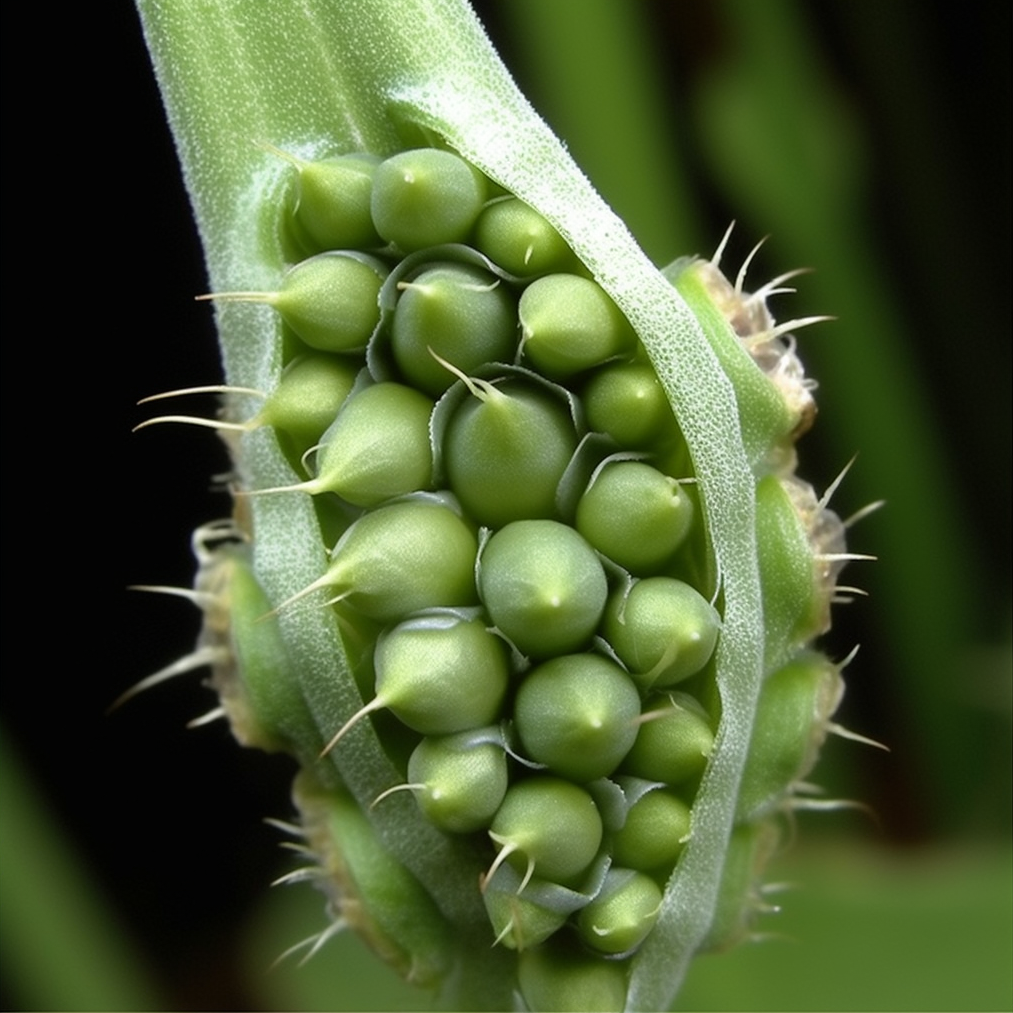
Pinellia ternata
Conclusions: These results indicate that PTE has protective effects against allergic airway inflammation.
Inhaled corticosteroids (ICS) are widely used to manage chronic obstructive pulmonary disease (COPD). However, withdrawal of ICS generally causes various adverse effects, warranting careful management of the ICS withdrawal. Pinellia ternata, a traditional Chinese herbal medicine, has been used to treat respiratory diseases in China for centuries. Here, we investigated its role in antagonizing ICS withdrawal-induced side effects, and explored the underlying mechanisms. The rat COPD model was established using a combination of passive cigarette smoking and intratracheal instillation of lipopolysaccharide (LPS). COPD rats were treated with saline or budesonide inhalation, or with budesonide inhalation followed by saline inhalation or Pinellia ternata gavage. The number of goblet cells and the level of mucin 5AC (MUC5AC) were enhanced by budesonide withdrawal.
Pinellia ternata treatment significantly blocked these effects. Further, Pinellia ternata treatment reversed budesonide withdrawal-induced increase of interleukin 1β (IL-1β) and tumor necrosis factor α (TNF-α) levels in bronchoalveolar lavage fluid (BALF). Extracellular signal-regulated kinase (ERK), but neither p38 nor c-Jun N-terminal kinase (JNK), was activated by budesonide withdrawal, and the activation was blocked by Pinellia ternata treatment. The MUC5AC expression was positively correlated with goblet cell number, IL-1β and TNF-α levels, and ERK activity. Pinellia ternata treatment protected the airway from ICS withdrawal-induced mucus hypersecretion and airway inflammation by inhibiting ERK activation. Pinellia ternata treatment may represent a novel therapeutic strategy to prevent ICS withdrawal-induced side effects in COPD patients.
Conclusion: These findings provide evidence that Pinellia ternata, Citrus reticulata, and their combination play a regulatory role in allergic inflammation and offer therapeutic approaches as novel CCR3 antagonists for treatment asthma. However, it is not clear whether pharmacological activities of prescription composed of two herbs are potentiated due to synergistic effect or additive effect.
Pinellic acid from the tuber of Pinellia ternata was isolated as an effective oral adjuvant for nasal influenza vaccine, and identified 9S,12S,13S-trihydroxy-10E-octadecenoic acid (9S,12S,13S) by the enantioselective total synthesis [Nagai et al., Int. Immunopharmacol., 2, 1183-93 (2002); Shirahata et al., Tetrahedron, 62, 9483-96 (2006)]. However, present study showed that synthetic 9S,12S,13S that was nearly 100% pure was not effective as an oral adjuvant. HPLC analysis also showed that the adjuvant active pinellic acid fraction from tuber of P. ternata contained the 9S,12S,13S as the main component and at least two minor components.
Therefore seven other chemically synthesized stereoisomers were tested in combination with the 9S,12S,13S for oral adjuvant activity. Only the 9S,12S,13S in combination with the 9S,12R,13R isomer in a weight% ratio of 90.4:9.6 (pinellic acid mixture, PAM) was a potent oral adjuvant and elicited both antiviral IgA antibody (Ab) in bronchoalveolar lavage fluids and nasal washes and antiviral IgG1 Ab in mice sera. Oral administration of the PAM followed by nasal influenza vaccination and infection with A/PR/8/34 virus showed increases in survival rate (22%, control versus 78% test) in mice orally administered PAM as adjuvant. Histopathological examination of lung tissue of mice given oral PAM with vaccine followed by influenza virus infection showed attenuated infiltration of inflammatory cells with decreases in the alveolar spaces and increases in the alveolar septa.
The result of this study refutes the our previous study and suggests that the combination of 9S,12S,13S and 9S,12R,13R isomers is necessary for effective oral adjuvant activity when used in conjunction with nasal influenza vaccine.
Network Pharmacology-Based Study on the Mechanism of Pinellia ternata in asthma Treatment
Conclusion: Our study provides candidate genes that may be either used for future studies related to diagnosis/prognosis or as targets for asthma management. Besides, animal experiments showed that PT could treat asthma by regulating the expression of Mmp2 and il-4.
Conclusion: These combined data showed that PRP suppressed the allergic airway inflammation of CA by regulating the balance of Th1 and Th2 cytokines and the possible involvement of the PKC/EGFR/MAPK/PI3K-Akt signaling pathway. Pentadecanoic acid, licochalcone A, β-sitosterol, etc. were considered as main active ingredients of PRP against CA. This study provides a novel perspective of the classical herbal processed product PRP in the treatment of CA.
Plantago asiatica
The herbs Plantago asiatica and Clerodendrum trichotomum have been commonly used for centuries in indigenous and folk medicine in tropical and subtropical regions of the world. In this study, we show that extracts from these herbs have antiviral effects against the respiratory syncytial virus (RSV) in vitro cell cultures and an in vivo mouse model. Treatment of HEp2 cells and A549 cells with a non-cytotoxic concentration of Plantago asiatica or Clerodendrum trichotomum extract significantly reduced RSV replication, RSV-induced cell death, RSV gene transcription, RSV protein synthesis, and also blocked syncytia formation. Interestingly, oral inoculation with each herb extract significantly improved viral clearance in the lungs of BALB/c mice. Based on reported information and a high-performance liquid chromatography (HPLC) analysis, the phenolic glycoside acteoside was identified as an active chemical component of both herb extracts. An effective dose of acteoside exhibited similar antiviral effects as each herb extract against RSV in vitro and in vivo. Collectively, these results suggest that extracts of Plantago asiatica and Clerodendrum trichotomum could provide a potent natural source of an antiviral drug candidate against RSV infection.
Despite developments in the knowledge and therapy of acute lung injury in recent decades, mortality remains high, and there is usually a lack of effective therapy. Plantamajoside, a major ingredient isolated from Plantago asiatica L. (Plantaginaceae), has been reported to have potent anti-inflammatory properties. However, the effect of plantamajoside on lipopolysaccharide (LPS)-induced acute lung injury (ALI) in mice has not been investigated.
The present study aimed to reveal the potential mechanism responsible for the anti-inflammatory effects of plantamajoside on LPS-induced acute lung injury in mice and in RAW264.7 cells. The results of histopathological changes as well as the lung wet-to-dry ratio and myeloperoxidase (MPO) activity showed that plantamajoside ameliorated the lung injury that was induced by LPS. qPCR and ELISA assays demonstrated that plantamajoside suppressed the production of IL-1β, IL-6 and TNF-α in a dose-dependent manner. TLR4 is an important sensor in LPS infection. Molecular studies showed that the expression of TLR4 was inhibited by plantamajoside administration. Further study was conducted on nuclear factor (NF)-κB and mitogen-activated protein kinase (MAPK) using pathways using western blots. The results showed that plantamajoside inhibited the phosphorylation of IκBα, p65, p38, JNK and ERK.
All results indicated that plantamajoside has protective effect on LPS-induced ALI in mice and in RAW264.7 cells. Thus, plantamajoside may be a potential therapy for the treatment of pulmonary inflammation.
Platycladus orientalis
This study was designed to investigate the anti-inflammatory effects of volatile oil of Platycladus orientalis (L.) Franco leaves (VOPF) and the underlying molecular mechanisms by using the non-infectious inflammation rat models and infectious inflammation mouse models. Ear swelling and intraperitoneal capillary permeability in mice, and carrageenan-induced toe swelling and cotton ball-induced granuloma in rats were used to reveal anti-inflammatory effects of VOPF. Moreover, the lipopolysaccharide (LPS)-induced mouse model of acute lung injury was used to explore the anti-inflammatory mechanism of VOPF. The results showed that VOPF could significantly inhibit auricular swelling, intraperitoneal capillary permeability in mice, and reduce granuloma swelling and paw swelling in rats. Furthermore, it significantly alleviated the pathological damage of the lung tissue. In addition, VOPF could reduce the contents of IL-1β and TNF-α and increase the content of IL-10 in the serum. It had little effect on the expression of p65 but reduced the phosphorylation level of p65 and IκB in NF-κB pathway.
In conclusion, VOPF has anti-inflammatory effects and the mechanisms involve the down-regulation of the phosphorylation levels of p65 and IκB and blockage of the NF-κB signaling pathway.
Hinokiflavone (HF) is a natural biflavonoid extracted from medicinal plants such as Selaginella tamariscina and Platycladus orientalis. HF plays a crucial role in the treatment of several cancers. However, its poor solubility, instability, and low bioavailability have limited its use. In this study, soluplus/d-α-tocopherol acid polyethylene glycol 1000 succinate (TPGS)/dequalinium (DQA) was applied to improve the solubilization efficiency and stability of HF. HF hybrid micelles were prepared via thin-film hydration method. The physicochemical properties of micelles, including particle size, zeta potential, encapsulation efficiency, drug loading, CMC value, and stability were investigated.
The in vitro cytotoxicity assay showed that the cytotoxicity of the HF hybrid micelles was higher than that of free HF. In addition, the HF hybrid micelles improved anti-cancer efficacy and induced mitochondria-mediated apoptosis, which is associated with the high levels of ROS inducing decreased mitochondrial membrane potential, promoting apoptosis of tumor cells. Furthermore, in vivo tumor suppression, smaller tumor volume and increased expression of pro-apoptotic proteins were found in nude mice treated with HF hybrid micelles, suggesting that HF hybrid micelles had stronger tumor suppressive activity compared with free HF. In summary, HF hybrid micelles developed in this study enhanced antitumor effect, which may be a potential drug delivery system for the treatment of lung adenocarcinoma.
Conclusion: The data indicate that the inhibitory effects of the CHL and its components (hinokiol and acacetin) on 5-LOX contribute to the anti-inflammatory activity of LPO. Moreover, the CHL and its components also show beneficial effects on NO and TNF-α production. Consequently, these results provide a rationale for LPO’s traditional applications in the treatment of inflammatory airway diseases.
A Systematic Review on Platycladus orientalis
Platycladus orientalis (L.) Franco belong from Cupressaceae family, it is Chinese traditional drug and food additive, which is mainly used in the treatment of rheumatism, gout, diarrhea and chronic tracheitis. There are many diseases are treated by different extracts of Platycladus orientalis. Traditionally used in many diseases like acute vaginal bleeding, Flu, Bacillary dysentery, Hypertension, Insomnia, Skin lightening, Lymphoid tuberculosis, Suppurative mastitis, Whooping cough and Tinea mannum. As a Chinese traditional herbal medicine, leaves of Platycladus orientalis (Linnaeus) Franco (LPO) are used to treat coughs, Excessive Mucus Secretion, Chronic bronchitis, Bronchiectasis, and asthma, etc.
The plant Platycladus orientalis were used in treatment of inflammation it possess Anti-inflammatory properties. It also used in the treatment of inflammatory airway diseases according to Chinese traditional system of medicine. Platycladus orientalis (L.) Franco is traditionally use as hair growth promotion. However, its main ingredients or active phytoconstituents are responsible for hair growth activity. The leaves of Platycladus orientalis posses Antioxidant as well as Anti-inflammatory activity due to presence of polyphenols.
Platycodon grandiflorus
Cisplatin (DDP) is a first-line drug for non-small cell lung cancer (NSCLC), but its efficacy and applications are constrained by intolerance and serious side effects. Platycodon grandiflorus (PG) is usually used as lung medicinal drug to enhance other drug’s effect on lung diseases. Therefore, present study aim to investigate anti-NSCLC effect of PG with DDP and mechanism involved in the combination for the first time. The results showed that compared with DDP group, the combined groups (DDP combined with 1, 2 and 4 g/kg of PG) reduced the tumor luminescence density by 26.0%, 78.2% and 32.8% respectively, and decreased the death rates, lung index, pathological damage and inflammation in lung tissue. Protein analysis of lung tissue showed that its anti-cancer effect may be associated with tumor cell apoptosis.
Therefore, vitro studies showed that PG combined with DDP down-regulated the expression of p-Akt and PI3K and improved the protein expression of cleaved-caspase 9 in A549 cell and PG promotes the apoptosis of DDP and these mechanisms were related by inhibition of the PI3K/Akt signaling pathway. Our study confirms that the combination of PG and DDP will help enhance efficacy of DDP and is important for improving platinum-based chemotherapy.
Platycodon grandiflorus (Jacq.) A. DC. (Campanulaceae) is commonly known as a balloon flower whose rhizomes have been widely utilized in traditional Chinese medicine (TCM) and in various Japanese prescriptions for the treatment of respiratory diseases, diabetes, and inflammatory disorders. The severe acute respiratory syndrome coronavirus 2 (SARS-CoV-2), the causative agent of coronavirus disease 2019 (covid-19) global pandemic requires priming of the virus’s spike (S) protein by cleavage of the S proteins by a multi-domain type II transmembrane serine protease, transmembrane protease serine 2 (TMPRSS2) to gain entry into the host cell.
The current research aims at the screening of active phytocompounds of P. grandiflorus as potential inhibitors of cellular TMPRSS2 using molecular docking and molecular dynamics simulations approach. In silico toxicity analyses show that out of a total of 34 phytocompounds selected for the study, 12 compounds obey Lipinski’s rule of five and have favourable pharmacokinetic properties. The top three lead molecules identified here were Apigenin, Luteolin and Ferulic acid which exhibited binding energies of −7.47 kcal/mol, −6.8 kcal/mol and −6.62 kcal/mol respectively with corresponding inhibition constants of 3.33 µM, 10.39 µM and 13.95 µM.
As a result, the selected bioactive phytochemicals from P. grandiflorus that target the cellular TMPRSS2 could offer an alternative treatment option against SARS-CoV-2 infections.
Platycodon grandiflorus (Jacq.) A. DC. (PG) root is one of the most commonly used medicine-food materials for respiratory discomfort in Asia, usually in the form of a decoction or leaching solution. As everyone knows, both of decoction and leaching solution is a polyphase dispersion system, containing low-molecular-weight water-soluble active ingredients and hydrophilic macromolecules. This study aimed to discuss the synergistic effect of Platycodon grandiflorus polysaccharide (PGP) and platycodin D (PD) in PG decoction against chronic bronchitis (CB) and the mechanism underlying. A series of PGP, PD, and PGD + PD suspensions were administrated to CB model rats, on the levels of whole animal and in situ intestinal segment with or without mesenteric lymphatic vessels ligation.
It exhibited that PGP exhibited synergistic effects with PD, on improving the histopathological abnormity, mucus secretion excess, and immunological imbalance in lung of CB model rat, closely associated with its modulations on the mucosal immunity status in small intestine. The polysaccharide macromolecules in PG decoction or leaching solution should be responsible for the modulation of pulmonary immune state, possibly through the common mucosal immune between small intestine and lung. These results might be a new perspective that illustrates the classical theory of “the lung and intestine are related” in traditional Chinese medicine.
Polygonatum odoratum
Polygonatum odoratum lectin (POL), isolated from traditional Chinese medicine herb (Mill.) Druce, has drawn rising attention due to its wide biological activities. In the present study, anti-tumor effects, including apoptosis- and autophagy-inducing properties of POL, were determined by a series of cell biology methods such as MTT, cellular morphology observation, flow cytometry, immunoblotting. Herein, we found that POL could simultaneously induce apoptosis and autophagy in human non-small cell lung cancer A549 cells. POL initiated apoptosis through inhibiting Akt-NF-κB pathway, while POL triggered autophagy via suppressing Akt-mTOR pathway, suggesting the molecular switch role of Akt in regulating between POL-induced apoptosis and autophagy.
Moreover, ROS was involved in POL-induced inhibition of Akt expression, and might therefore mediate both apoptosis and autophagy in A549 cells. In addition, POL displayed no significant cytotoxicity toward normal human embryonic lung fibroblast HELF cells. Due to the anti-tumor activities, POL might become a potent anti-cancer drug in future therapy, which might pave the way for exploring GNA-related lectins into effective drugs in cancer treatment.
TRADITIONAL CHINESE MEDICINE TREATING ALLERGIC asthma AND PREPARATION METHOD THEREOF
Disclosed is a traditional Chinese medicine treating allergic asthma and the preparation method thereof, and the traditional Chinese medicine is prepared from the following raw materials in parts by weight: 30-35 Inula japonica, 30-35 cicada slough, 30-35 Spica prunellae, 30-35 Radix curcumae, 30-35 Fructus aurantii immaturu, 25-30 herba houttuyniae, 25-30 Concha haliotidis, 25-30 Sophora flavescens, 25-30 glossy privet fruit, 15-20 Scutellaria baicalensis, 15-20 Morinda officinalis, 15-20 Polygonatum odoratum, 10-15 cassia twig, 10-15 Saposhnicovia divaricata, 10-15 Flos magnoliae, 10-15 Rhizoma pinelliae, 8-10 apricot kernel, 8-10 liquorice, 8-10 perilla seed, and 8-10 Sinapis alba.
Effect of Dunggulle(Polygonatum odoratum) Extracts on Quality of Yakju
The rhizomes of Polygonatum odoratum(Dunggulle in korean name) have been used as a traditional medicine for a tonic, remedy of fevers of influenza, cough and lung trouble. In this experiment, water extract of Dunggulle was added in brewing korean traditional rice wine. Fermentation characteristics such as content of total acid, pH, temperature, total sugar and alcohol concentration were investigated during fermentation periods. Changes of fermentation characteristics were remarkable in the initial period(0~3 days), slow in the middle(4~6 days), and almost unchangeable in the final(7~10 days). Total acid content was remarkably increased during the initial period but slowly decreased afterward.
Poria coco
Previous studies have revealed the antitumor potential of Poria cocos Wolf against a broad spectrum of cancers. However, the biological activity of P. cocos against lung cancer, which is known as the leading cause of cancer mortality worldwide, and its underlying chemical and molecular basis, remain to be investigated. We aimed to evaluate the in vitro cytotoxicity of P. cocos toward human lung adenocarcinoma cells with different p53 statuses, to identify the bioactive constituents of P. cocos, and explicate the molecular mechanisms underlying the cytotoxicity of these constituents in human lung adenocarcinoma cells. An EtOH extract of the sclerotia of P. cocos exhibited cytotoxicity toward four human lung cancer cell lines: A549, H1264, H1299, and Calu-6, regardless of their p53 status. Chemical investigation of the extract resulted in the isolation of two triterpenoids, dehydroeburicoic acid monoacetate (1) and acetyl eburicoic acid (4); a sterol, 9,11-dehydroergosterol peroxide (2); and a diterpenoid, dehydroabietic acid (3).
All of the isolated compounds were cytotoxic to the lung adenocarcinoma cell lines, exhibiting IC50 values ranging from 63.6 μM to 171.0 μM at 48 h of treatment. The cytotoxicity of the extract and the isolated compounds were found to be mediated by apoptosis, and accompanied by elevated Bax expression and/or Bcl-2 phosphorylation along with caspase-3 activation. Our data demonstrate that the sclerotium of P. cocos and its four bioactive constituents (1–4) exert cytotoxicity against human lung adenocarcinoma cells, regardless of their p53 status, by inducing apoptosis associated with mitochondrial perturbation, and proposing the potential to employ P. cocos in the treatment of lung cancer.
Poria cocos, a food ingredient and a traditional Chinese medicine, is a fungus commonly used in eastern countries. It exhibits diuretic, anti-inflammatory, immunomodulatory and anti-hyperglycaemic functions. In addition, the polysaccharide and triterpenoid components isolated from P. cocos exhibit anti-tumour effects in a number of cancer cell lines. Here, an extract of P. cocos, designated H287, was evaluated for its anti-lung cancer potential. H287 induced apoptosis in A549 cells via the mitochondria-mediated caspase activation pathway, as demonstrated by the loss of mitochondria outer membrane potential, release of cytochrome c into the cytosol, and the cleavage of procapsase-9 to caspase-9. Further analyses suggest that tumulosic acid, one of the triterpenoids present in H287, is responsible for the cytotoxic function of H287. H287 may potentially serve as a dietary supplement or functional food ingredient for patients suffering from non-small cell lung cancers.
Poria cocos (Polyporacea), is a fungus used in traditional Chinese medicine. A study of the valuable sulfated polysaccharides (SPS) with the structure and pharmaceutical benefits from the mycelial culture conditions of P. cocos was attempted. The SPSs were fractionated by gel filtration chromatography to give a fucose-containing mannoglucan polysaccharide (denoted as FMGP)
Poria cocos, called fuling, is a famous tonic in traditional Chinese medicine that reportedly possesses various pharmacological properties, including anti-inflammation and immunomodulation. However, few studies have investigated the effects of P. cocos on allergic diseases, such as allergic asthma. Allergic asthma is caused primarily by Th2 immune response and characterized by airway inflammation. This study first demonstrated the anti-allergic and anti-asthmatic effects of P. cocos extract (Lipucan®). P. cocos extract distinctly exhibited reduced inflammatory cell infiltration in the peri-bronchial and peribronchiolar regions compared to the asthma group in the histological analysis of pulmonary tissue sections. Prolonged P. cocos extract administration significantly reduced eosinophil infiltration, PGE2 levels, total IgE, and OVA-specific IgE.
Moreover, P. cocos extract markedly suppressed Th2 cytokines, IL-4, IL-5, and IL-10. On the other hand, P. cocos extract significantly elevated IL-2 secretion by Th1 immune response. In addition, P. cocos extract elevated the IFN-γ level at a lower dose. We also observed that P. cocos extract increased the activity of NK cells. Our results suggest that P. cocos extract remodels the intrinsic Th1/Th2 response to prevent or alleviate allergy-induced asthma or symptoms.
Pseudostellaria heterophylla
Pseudostellaria heterophylla (Miq.) Pax is one of the most widespread herbal and healthcare products in China. Extensive clinical use has shown that it has functions which “strengthens qi and generates saliva, moistens the lung and relieves cough”. The ethyl acetate fraction extracted from the roots of the plant Pseudostellaria heterophylla exhibited a dose-dependent antitussive effect between 100 to 500 mg/kg. At a dose of 400 mg/kg, the ethyl acetate fraction treatment markedly prolonged the cough latent period and reduced the number of coughs in a guinea pig model induced by citric acid. Fall lung airway resistance, rise in dynamic lung compliance, decreased serum levels of IL-8, GM-CSF, TNF-α, and ET-1 in rat model of stable phase chronic obstructive pulmonary disease induced by cigarette smoke exposure were also observed. These results suggest that ethyl acetate fraction has antitussive activity related to its improvement in lung function via attenuation of airway inflammation by adjustment of multi-cytokine levels.
We have explored the method of extraction and purification of cyclic-peptide extract (CPE) from Pseudostellaria heterophylla (Miq.) Pax. (Taizishen, TZS), characterized the structure about cyclic-peptide compounds and investigated the biological activity of CPE attenuating chronic obstructive pulmonary disease (COPD) in rats. The CPE from TZS was obtained by ethyl acetate, petroleum ether, hot water extraction, and alcohol-precipitation. Cyclic-peptide structures were distinguished using ultra-high performance liquid chromatography-quadrupole time-of-flight tandem mass spectrometry (UPLC-Q-TOF-MS/MS). Rats were induced by solid combustibles smoke (SCS) for the COPD model, and the anti-COPD activity of CPE was detected using lung airway resistance and dynamic lung compliance, as well as pulmonary tissue hematoxylin and eosin (HE) staining.
The relevant inflammatory cytokines were assayed by enzyme-linked immunosorbent assay (ELISA). CPE obtained from TZS contained 12 cyclic-peptide constituents; the purity was up to 92.94%. CPE (200, 400, or 500 mg/kg/day) was given to CS-Induced COPD model rats orally for 15 days. The results showed that in rats given CPE (400 mg/kg/day) there was a sharp fall in lung airway resistance but a rise in dynamic lung compliance. The image analysis of lung tissue sections suggested that CPE could decrease the degree of alveolar destruction (p <0.05), alleviate lung inflammation, increase alveolar space, and improve the infiltration of inflammatory cells.
CPE was found to reduce the levels of TNF-α, but increase IL-10, adjusting multiple cytokines in rat serum; the TLR4 mRNA, MyD88 mRNA and AP-1 mRNA levels, the expressing levels of p-JNK, p-p38 and p-TAK1 protein were significantly down regulated in rat alveolar macrophages. CPE intervention could improve the pulmonary ventilation function on COPD rats, which may be related to its effect in inhibiting the abnormal activation of the TLR4-MyD88-JNK/p38 pathway. This is the first report that the CPE of TZS lessens the severity of COPD episodes. The new preparation process of CPEs implements the anticipated goal, which is to refine CPE and actualize quality control.
Radix Bupleuri
To explore whether Radix Bupleuri extract (RBE) could protect lung injury of broilers under ammonia (NH3) exposure, 360 one-d-old male broilers were randomly allocated to four groups of six replicates each in a 2 × 2 factorial design with two diets (the basal diet [control; CON] and the basal diet supplemented with RBE [RB]) and two air conditions (normal condition [<2 ppm of NH3; NOR] and NH3 exposure [70 ppm of NH3; NH70]). The RB diet contained 80 mg saikosaponins/kg diet. On day 7, the lung tissues were collected and the lung epithelial cells (LEC) were isolated. Our experimental results showed that the NH3 exposure decreased body weight gain and feed intake irrespective of dietary treatments during days 1 to 7. However, the RBE addition decreased feed consumption to body weight gain ratio in broilers under NH70 conditions. In the LEC of CON-fed broilers under NH70 conditions, Golgi stacks showed the dilation of cisternaes and reduced secretory vesicles, mitochondria enlarged, the inner membrane of mitochondria became obscure, and the cristae of mitochondria ruptured, whereas only a mild enlargement of Golgi cisternaes and the part rupture of mitochondrial cristaes occurred in the LEC of RB-fed broilers under NH70 conditions.
The NH3 exposure increased malondialdehyde (MDA) level, but decreased total antioxidant capacity (T-AOC) in the lungs of CON-fed broilers. However, the RBE addition decreased MDA level and increased T-AOC in the lungs of broilers under NH70 conditions. Simultaneously, the NH3 exposure increased apoptotic rate (AR), mitochondrial membrane potential (MMP), and reactive oxygen species (ROS) level in the isolated LEC of CON-fed broilers. The RBE addition decreased AR, MMP, and ROS in the isolated LEC of broilers under NH70 condition. Besides, the NH3 exposure increased mRNA expression of B-cell lymphoma-2 associated X protein (BAX), caspase-3, and tumor necrosis factor α (TNF-α), but increased interferon γ (IFN-γ) mRNA abundance in the lungs of CON-fed broilers. The RBE supplement decreased mRNA levels of BAX, caspase-3, and TNF-α, but increased IFN-γ, interleukin (IL)-4, and IL-17 mRNA levels in the lungs of broilers under NH70 conditions.
These results indicated that dietary RBE addition alleviated NH3 exposure-induced intercellular ultrastructural damage via mitochondrial apoptotic pathway, possibly due to RBE-induced increase of antioxidant capacity and immunomodulatory function in the lungs of broilers under NH3 exposure.
Radix Bupleuri: A Review of Traditional Uses, Botany, Phytochemistry, Pharmacology, and Toxicology
Radix Bupleuri (Chaihu) has been used as a traditional medicine for more than 2000 years in China, Japan, Korea, and other Asian countries. Phytochemical studies demonstrated that this plant contains essential oils, triterpenoid saponins, polyacetylenes, flavonoids, lignans, fatty acids, and sterols. Crude extracts and pure compounds isolated from Radix Bupleuri exhibited various biological activities, such as anti-inflammatory, anti-cancer, antipyretic, antimicrobial, antiviral, hepatoprotective, neuroprotective, and immunomodulatory effects. However, Radix Bupleuri could also lead to hepatotoxicity, particularly in high doses and with long-term use. Pharmacokinetic studies have demonstrated that the major bioactive compounds (saikosaponins a, b2, c, and d) were absorbed rapidly in rats after oral administration of the extract of Radix Bupleuri. This review aims to comprehensively summarize the traditional uses, botany, phytochemistry, pharmacology, toxicology, and pharmacokinetics of Radix Bupleuri reported to date with an emphasis on its biological properties and mechanisms of action.
Conclusion: Low-certainty or very low-certainty evidence demonstrated that Bupleuri radix (solution for injections and pills) has an antipyretic effect on febrile patients with AURTI, but it has no effect on other AURTI symptoms. However, these findings need to be further confirmed by well-designed clinical trials with adequate sample sizes.
In vitro anti-influenza A H1N1 effect of extract of Bupleuri Radix
This study investigated the effect of the extract of Bupleuri Radix (BRE) on the infection of Madin-Darby Canine Kidney (MDCK) cells by anti-H1N1 virus. The effect of BRE on RANTES (the chemokine regulated on activation, normal T cells expressed and secreted) secretion in H1N1-infected A549 cells (human bronchial epithelial cells) was evaluated via quantative measurement of the changes in the cytopathic effects and by the ultraviolet (UV) absorbance at 600 nm.
It was found that BRE was toxic to MDCK cells at a higher concentration while had a marked inhibitory effect on cell pathological changes at a lower concentration. Results also showed that BRE possessed more than 50% suppressing effect on RANTES secretion in H1N1-infected A549 cells at a concentration of 100 and 200 μg/ml. Our findings show that BRE has a significant protective effect on MDCK cells infected in a dose-dependent manner with an excellent suppressing effect on RANTES secretion, suggesting that BRE can be developed as an antivirus agent.
Radix Ophiopogonis
Ophiopogon japonicus inhibits radiation-induced pulmonary inflammation in mice
Conclusion: As radiation-induced lung injury is a major obstacle in thoracic radiotherapies and seriously affect the quality of patients’ life. Application of O. japonicus may be a novel strategy to manage radiation-induced pulmonary inflammation.
Ophiopogon japonicus (OJ) is a traditional Chinese herbal medicine that has been used for thousands of years. Recently, the anti-cancer effects of OJ have been reported in multiple types of cancer, particularly in lung cancer. However, the underlying mechanisms remain unclear. In present study, the effects of OJ against NCI-H1299 human lung cancer cells were investigated, and the underlying mechanisms were explored using ultra-high-performance liquid chromatography-quadrupole time-of-flight mass spectrometry (UHPLC/Q-TOF-MS)-based cell metabolomics. As a result, OJ inhibited the proliferation, induced the apoptosis and suppressed the migration of NCI-H1299 cells.
A total of 22 differential metabolites responsible for the effects of OJ were screened and annotated based on the LC-MS-based cell metabolomics approach. The altered metabolites were involved in three metabolic pathways, including glycerophospholipid metabolism, ether lipid metabolism and glutathione metabolism. These results showed that cell metabolomics-based strategies are promising tools to discover the action mechanisms of OJ against lung cancer cells.
Radix Rhizoma Glycyrrhizae
Glycyrrhizin and Long-Term Histopathologic Changes in a Murine Model of asthma
Conclusion: The results of this study suggest that the group receiving glycyrrhizin had amelioration of all established chronic histopathologic changes of lung in the mouse model of asthma. Further studies are needed to evaluate the efficacy of glycyrrhizin in the management of asthma.
Glycyrrhizin alleviates experimental allergic asthma in mice
Asthma is a chronic respiratory disease, the incidence of which is increasing globally. The existing therapy is inadequate and has many adverse effects. It needs a better therapeutic molecule preferably of natural origin, which has negligible or no adverse effects. In view of this, we evaluated Glycyrrhizin (GRZ), a major constituent of a plant Glycyrrhiza glabra, for its efficacy on asthmatic features in a mouse model of asthma. BALB/c mice were sensitized and challenged with ovalbumin (OVA) to develop the asthmatic features such as airway hyperresponsiveness: allergen induced airway constriction and airway hyperreactivity (AHR) to methacholine (MCh), and pulmonary inflammation. The mice were orally treated with GRZ (2.5, 5, 10 and 20 mg/kg) during or after OVA-sensitization and OVA-challenge to evaluate its protective or reversal effect, respectively on the above asthmatic features.
The status of airway hyperresponsiveness was measured by monitoring specific airway conductance (SGaw) using a non-invasive method and the pulmonary inflammation was assessed by haematoxylin and eosin staining of lung sections. Several other parameters associated with asthma such as interleukin (IL)-4, IL-5 interferon-gamma (IFN-gamma), OVA-specific IgE, total IgG(2a) and cortisol were measured by ELISA. GRZ (5 mg/kg) markedly inhibited OVA-induced immediate airway constriction, AHR to MCh (p<0.01), lung inflammation, and infiltration of eosinophils in the peri-bronchial and perivascular areas. It prevented the reduction of IFN-gamma (p<0.02), and decreased IL-4 (p<0.05), IL-5 (p<0.05) and eosinophils (p<0.0002) in the BAL fluid. Also, it reduced OVA-specific IgE levels (p<0.01) and prevented the reduction of total IgG(2a) (p<0.01) in serum.
We have also showed that it has no effect on serum cortisol levels. Our results demonstrate that GRZ alleviates asthmatic features in mice and it could be useful towards developing a better therapeutic molecule in the future.
Chronic obstructive pulmonary disease (COPD) is caused by exposure to toxic particles, such as coal fly ash (CFA), diesel-exhaust particle (DEP), and cigarette smoke (CS), leading to chronic bronchitis, mucus production, and a subsequent lung dysfunction. This study, using a mouse model of COPD, aimed to evaluate the effect of herbal combinational medication of Glycyrrhiza glabra (GG), Agastache rugosa (AR) containing glycyrrhizic acid (GA), and tilianin (TN) as active ingredients. GA, a major active component of GG, possesses a range of pharmacological and biological activities including anti-inflammatory, anti-allergic, anti-oxidative. TN is a major flavonoid that is present in AR. It has been reported to have anti-inflammatory effects of potential utility as an anti-COPD agent. The COPD in the mice model was induced by a challenge with CFA and DEP. BALB/c mice received CFA and DEP alternately three times for 2 weeks to induce COPD.
The herbal mixture of GG, AR, and TN significantly decreased the number of neutrophils in the lungs and bronchoalveolar lavage (BAL) fluid. It also significantly reduced the production of C-X-C motif chemokine ligand 2 (CXCL-2), IL-17A, CXCL-1, TNF-α, symmetric dimethylarginine (SDMA) in BALF and CXCL-2, IL-17A, CXCL-1, MUC5AC, transient receptor potential vanilloid-1 (TRPV1), IL-6, COX-2, NOS-II, and TNF-α mRNA expression in the lung tissue. Notably, a combination of GG and AR was more effective at regulating such therapeutic targets than GG or AR alone.
The histolopathological lung injury was alleviated by treatment with the herbal mixture and their active ingredients (especially TN). In this study, the herbal combinational mixture more effectively inhibited neutrophilic airway inflammation by regulating the expression of inflammatory cytokines and CXCL-2 by blocking the IL-17/STAT3 pathway. Therefore, a herbal mixture of GG and AR may be a potential therapeutic agent to treat COPD.
Raphanus sativus
Asthma is a highly prevalent inflammatory disease of the respiratory airways and an increasing health risk worldwide. Hence, finding new strategies to control or attenuate this condition is necessary. This study suggests nutraceuticals that are a combination of herbal plant extracts prepared from Acanthopanax sessiliflorum (AS), Codonopsis lanceolate (CL), Dendropanax morbiferus (DM), Allium hookeri (AH), and Raphanus sativus L. (RS) that can improve immunomodulatory ability through the detoxification and diuresis of air pollutants. Herbal parts (AH whole plant, RS and CL roots, AS and DM stems, and DM leaves) were selected, and four types of mixtures using plant extracts were prepared. Among these mixtures, M2 and M4 exhibited antioxidant activities in potent 2,2-azino-bis (3-ethylbenzothiazoline-6-sulfonic acid) diammonium salt (ABTS) and 1,1-diphenyl-β-picrylhydrazine (DPPH) radical assays.
Moreover, M4 exhibited a marked increase in glutathione S-transferase (GST) activity and significantly inhibited the inflammatory mediator, nitric oxide (NO) and proinflammatory cytokines, interleukin (IL)-1β, IL-6 and tumor necrosis factor (TNF)-α generation. Furthermore, M4 exhibited the strongest antioxidant, hepatoprotective, and anti-inflammatory effects and was selected to prepare the product. Before manufacturing the product, we determined that the active mixture, M4, inhibited gene expression and generation of proinflammatory cytokines IL-1β, IL-6 and TNF-α in ovalbumin (OVA)-, lipopolysaccharide (LPS)-, and particulate matter (PM)-induced asthmatic rat models. The granular product (GP) was manufactured using M4 along with additives, i.e., lactose, oligosaccharide, stevioside extract, and nutmeg seed essential oils (flavor masking), in a ratio of 1:4 using a granulation machine, dried and ultimately packaged. The GP inhibited the generation of proinflammatory cytokines IL-1β, IL-6 and TNF-α in OVA-, LPS- and PM-induced asthmatic rat models.
These results suggest that GP prepared from a combination of herbal plants (AS, CL, DM, AH and RS) is a potent functional food with anti-inflammatory activity that can be used to treat asthma caused by ambient air pollutants.
In the present study, an eco-friendly approach is adapted for the synthesis of reduced graphene oxide (rGO’s) by a simple hydrothermal reaction using two plant extracts namely Acalypha indica and Raphanus sativus. After the hydrothermal reaction, GO turns into a black color from brown color, which indicates the successful reduction of graphene oxide. Further, various characterization techniques such as UV–Vis spectroscopy, Raman spectroscopy, Fourier transform infrared spectroscopy (FT-IR), and X-ray diffraction is used to confirm the physicochemical properties of synthesized rGO’s. Raman analysis confirms the reduction of GO by noticing an increase in the ID/IG ratio significantly. Field emission scanning electron microscopy and transmission electron microscopy clearly show the morphology and crystalline nature of rGO’s. FT-IR spectrum confirms that the bioactive molecules of the plant extract (i.e. polyphenols, flavonoids, terpenoids, etc.) playing a key role in the elimination of oxygen groups from the GO surface. Further, the synthesized rGO’s are tested for their potential against human lung and breast cancer cell lines.
A significant cancer cell inhibition activity is obtained even in the less concentration of rGO’s with IC50 values for lung cancer cell lines are 38.46 µg/mL and 26.69 µg/mL for AIrGO and RSrGO, respectively. Similarly, IC50 values for breast cancer cell lines are 35.97 µg/mL and 33.22 µg/mL for AIrGO and RSrGO, respectively.
Pulmonary fibrosis is a progressive disease of the lungs, which leads to death in human. It has been suggested that transforming growth factor beta 1 (TGF-β1) together with oxidative stress play a central role in the pathogenesis of the ailment. The objective of this study was to evaluate the possible curative effects of black radish, Raphanus sativus L. var niger (RSN) on bleomycine (BLM) -induced pulmonary fibrosis in a rat model. In this study, thirty-six male Wistar rats were divided into six groups, including: (I) positive (BLM) control group, (II) negative (normal saline) control group, (III) sham group (R. sativus extract 150 mg/kg), and (IV-VI) treatment groups.
In order to induce pulmonary fibrosis, four groups were treated with a single dose of BLM sulfate (7.5 U/kg) through intratracheal instillation. Treatment groups (IV-VI) received RSN extract (75, 150, and 300 mg/kg) orally a week before and two weeks after the administration of BLM. At the end of the treatment course, blood and lung tissue samples were taken and the measurement of TGF-β1 and histopathological examination of the lung tissues performed.
The results showed that RSN, at 300 mg/kg dose, could significantly decrease the serum level of TGF-β1 and severity of the histological lesions as compared to the positive control group. The results of the current study indicate that the components present in the extract can remarkably prevent the aggravation of pulmonary fibrosis via decreasing TGF-β1 level.
Rehmannia glutinosa
The levels of p53 mRNA in Lewis lung cancer cells were 0.483, 0.790 and 0.718 respectively after 12h dealt with saline, LRPS 0.1 and 0.5g·L~(-1). They were 0.226, 0.957 and 0.590 respectively after 24h at the same condition. The experiment showed that p53 gene expression in cancer cells was markedly increased after LRPS. LRPS may influence proliferation, differentiation and apoptosis of cancer cells by regulating p53 gene expression.
Moreover, the expression of co-stimulatory molecules in the mLN DCs and the concentration of pro-inflammatory cytokines in the lung were up-regulated by RGP treatment. Also, RGP treatment induced interferon-gamma (IFN-γ) and tumor necrosis factor-alpha (TNF-α) production in the mLN T cells. The combination treatment of RGP and ovalbumin (OVA) induced OVA-specific TCR transgenic I (OT-I) and OT-II cell proliferation in the mLN.
Finally, the combination treatment of RGP and tyrosinase-related protein 2 (TRP2) peptide, a melanoma self-antigen, protected mice from melanoma challenge. Thus, these data demonstrated that RGP can be used as a mucosal adjuvant for inducing activation of immune responses in the lung.
Protective effect of catalpol on lipopolysaccharide-induced acute lung injury in mice
Catalpol, an iridiod glucoside isolated from Rehmannia glutinosa, has been reported to have anti-inflammatory properties. Although anti-inflammatory activity of catalpol already reported, its involvement in lung protection has not been reported. Thus, we investigated the role of catalpol on lipopolysaccharide (LPS)-induced acute lung injury in this study. Mice acute lung injury model was induced by intranasal instillation of LPS. Catalpol was administrated 1 h prior to or after LPS exposure.
The severity of pulmonary injury was evaluated 12 h after LPS administration. The results showed that catalpol inhibited lung W/D ratio, myeloperoxidase activity of lung samples, the amounts of inflammatory cells and TNF-α, IL-6, IL-4 and IL-1β in BALF induced by LPS. The production of IL-10 in BALF was up-regulated by catalpol. In vitro, catalpol inhibited TNF-α, IL-6, IL-4 and IL-1β production and up-regulated IL-10 expression in LPS-stimulated alveolar macrophages. Moreover, western blot analysis showed that the activation of NF-κB and MAPK signaling pathways was inhibited by catalpol.
Conclusion: In this study, our results indicate that PM014 has significant effects on allergic airway inflammation upon exposure to cockroach allergen in a mouse model. According to these outcomes, PM014 may have therapeutic potential as a treatment for allergic asthma.
Conclusion: The two formulae had multiple advantage effects on neuroendocrine-immune system. They are worth used as a replacement therapy in asthma.
This study investigated the protective or therapeutic effects of Nature Herb Mixture Contatining Rehmannia glutinosa extracts (NHMR) on fine-dust-induced airway inflammation. The BALB/c mice were administered mixture of Particulate matter smaller than 10 μm (PM10) with diesel exhaust particles to induced bronchial inflammation. Oral administration of NHMR extracts suppressed PM-induced inflammatory symptoms, such as high alverlar wall thickness, excess collagen fibers, decreased inflammatory cytokines (CXCL-1, IL-17, MIP2, TNF-α) in the Bronchoalveolar lavage fluid (BALF).
Rheum palmatum
Rheum palmatum L. (RPL) is a known traditional herbal medicine with the functions of “heat-clearing and damp-drying” in traditional Chinese medicine. Its anti-cancer effect against lung cancer has been confirmed previously, but the related mechanisms and active substances for its action has been little studied. This study adopted the network pharmacology, built the network map of drug ingredients and disease targets (DDN), and discussed the effective components of RPL and its possible mechanisms.
All constituents of RPL were collected through database search and literature mining, and the potential active constituents were screened. The inverse pharmacophore matching model was used to predict the targets of active ingredients, and the method was supplemented by database retrieval and literature mining. Compounds-target data were inputted into Cytoscape software to build the DDN of RPL, and functional annotation analysis and pathway enrichment analysis were carried out. Finally, 20 active compounds were screened, which acted on 817 targets. A total of 22,418 lung cancer-related targets were collected, and 761 overlapped with drug targets.
By bioinformatics annotation of these overlapping genes, a total of 235 gene ontology (GO) functional annotation analyses and 46 Kyoto Encyclopedia of Genes and Genomes (KEGG) pathways were obtained. It was found that the enrichment of GO and KEGG was associated with apoptosis, suggesting RPL plays an anti-lung cancer role via inducing cell apoptosis. Subsequent cell experiment results showed RPL and its active constituents inhibited the proliferation of A549 cells and reduced clone formation rate of A549 cells via induction of apoptosis. In this study, the pharmacodynamic basis and mechanism of RPL against lung cancer were studied from the perspective of systematic pharmacology, which would be beneficial for further elucidating the anticancer effect of RPL on lung cancer.
Viral infections are the major causes of morbidity and mortality in elderly people and young children throughout the world. The most common pathogens include coxsackie virus (CV) and respiratory syncytial virus (RSV). However, no antiviral agents with low toxicity and drug resistance are currently available in clinic therapy. The present study aimed to examine the antiviral activities of emodin (an ingredient of Rheum palmatum) against CVB5 and RSV infections, in an attempt to discover new antiviral agents for virus infection. The monomer emodin was extracted and isolated from Rheum palmatum. The antiviral activities of emodin on HEp-2 cells were evaluated, including virus replication inhibition, virucidal and anti-absorption effects, by 3-(4,5-dimethylthiazol-2-yl)-2,5-diphenyl-2H-tet-razolium bromide (MTT) assay and plaque reduction assay (PRA). The kinetics of virus inhibition by emodin in a period of 14 h was further determined by plaque assay and quantitative real time PCR (qPCR). cytokine (IFN-γ, TNF-α) mRNA expressions after emodin treatment (7.5, 15, 30 μmol/L) were also assessed by qPCR post-infection.
The results showed that emodin had potent inhibitory activities against CVB5 and RSV, with the 50% effective concentration (EC50) ranging from 13.06 to 14.27 μmol/L and selectivity index (SI) being 5.38–6.41 μmol/L. However, emodin couldn’t directly inactivate the viruses or block their absorption to cells. It acted as a biological synthesis inhibitor against CVB4 and RSV in a concentration- and time-dependent manner, especially during the first 0–4 h post-infection. Moreover, emodin could decrease the mRNA expression of IFN-α but enhance TNF-γ expression significantly compared to the viral controls in vitro.
Our results provide a molecular basis for development of emodin as a novel and safe antiviral agent for human enterovirus and respiratory virus infection in the clinical therapy.
Conclusion: The mechanisms of RpL acting on COPD were mainly related to the regulation of apoptosis, inflammatory response, and airway remodeling.
Alternatively activated macrophages (AAMs) are not only associated with asthma but also lead to asthmatic airway inflammation and remodeling. Inhibition of AAMs is an alternative therapeutic strategy for treating asthma. In this study we investigated whether emodin (1,3,8-trihydroxy-6-methylanthraquinone), isolated from the rhizome of Rheum palmatum, alleviated asthmatic airway inflammation and reduced AAM polarization in a murine asthma model. Mice were sensitized with a triple allergen mix containing dust mite, ragweed and aspergillus (DRA). In mice with DRA-induced asthma, asthmatic inflammation was significantly enhanced.
Intraperitoneal injection of emodin (20 mg·kg−1·d−1, ip) 1 h prior to DRA challenge on days 12-14 significantly decreased pulmonary eosinophil and lymphocyte infiltration, mucus secretion and serum IgE production, as well as IL-4 and IL-5 production in bronchoalveolar lavage fluid. In response to emodin treatment, activated markers of AAM Ym-1, Fizz-1 and arginase-1 in the lung tissues were remarkably decreased. In mouse bone marrow-derived macrophages (BMDMs) in vitro, emodin (2–50 μmol/L) dose-dependently inhibited IL-4-induced AAM polarization and STAT6 phosphorylation.
Collectively, our results suggest that emodin effectively ameliorates asthmatic airway inflammation and AAM polarization, and it may therefore become a potential agent for the treatment of asthma.
Rhinacanthus nasutus
We previously observed that rhinacanthins, which are the main naphthoquinone esters isolated from the roots of a Thai medicinal plant, Rhinacanthus nasutus KURZ. (family Acanthaceae), suppress the growth of Meth-A sarcoma in the tumor-bearing mice and that rhinacanthin-N has the strongest antitumor activity among these naphthoquinone esters tested. In the present study, we investigated the effect of rhinacanthin-N on pulmonary metastasis induced by B16F10 melanoma cells in mice. C57BL/6 male mice were injected intravenously with B16F10 melanoma cells, and liposomal rhinacanthin-N was administered intraperitoneally from day 1 to 7 after tumor implantation. Liposomes were used to formulate an injectable form of the hydrophobic agent.
Treatment of the mice with 5 or 10 mg/kg/d of liposomal rhinacanthin-N significantly inhibited the pulmonary metastatic colonization of the melanoma cells. Based on these data, our findings demonstrate that rhinacanthin-N possesses antimetastatic efficacy, which may make it a lead compound for the development of a new anticancer drug for use in cancer chemotherapy.
Anti-allergic principles of Rhinacanthus nasutus leaves
Three naphthoquinone derivatives, rhinacanthin-C (1), -D (2) and -N (3) were isolated from the extract of Rhinacanthus nasutus Kurz leaves and were tested for anti-allergic effect. The result indicated that all three compounds possessedvery potent anti-allergic activity against antigen-induced beta-hexosaminidase release as a marker of degranulation in RBL-2H3 cells with IC(50) values of 6.9, 8.9 and 6.4 microM, respectively. In addition, the effects of rhinacanthin-C, -D and -N on antigen-induced release of TNF-alpha and IL-4 were also examined. It was found that rhinacanthin-C showed the most potent on antigen-induced TNF-alpha release with an IC(50) value of 0.7 microM, followed by rhinacanthin-D (IC(50)=3.8 microM) and rhinacanthin-N (IC(50)=10.3 microM), whereas those for IL-4 were rhinacanthin-D (IC(50)=5.4 microM), rhinacanthin-C (IC(50)=7.0 microM) and rhinacanthin-N (IC(50)=12.0 microM), respectively.
The mechanisms in the late phase reaction of rhinacanthin-C, -D and -N were found to inhibit TNF-alpha and IL-4 gene expression in antigen-induced TNF-alpha and IL-4 releases on from RBL-2H3 cells as dose-dependent manners. The structure-activity trends of rhinacanthin-C,-D and-N on the inhibition of TNF-alpha release are as follow; substitution with octadienoic acid (rhinacanthin-C) conferred much higher activity than that of benzodioxo carboxylic acid ester (rhinacanthin-D) as well as naphthalene carboxylic acid ester (rhinacanthin-N). For the inhibition of IL-4 release, the substitution with octadienoic acid (rhinacanthin-C) and benzodioxo carboxylic acid ester (rhinacanthin-D) possessed the effect two-fold higher than that of naphthalene carboxylic acid ester (rhinacanthin-N). As regards active constituents for anti-allergic activity of R. nasutus, rhinacanthin-C, -D and -N are responsible for anti-allergic effect of this plant on both the early phase and late phase reactions. The finding may support the traditional use of R. nasutus leaves for treatment of allergy and allergy-related diseases.
Salvia miltiorrhiza
Conclusion: The PTEN/Akt signaling axis is defined as a critical pathway regulated by PTEN in NSCLC. CTN, the methanol extract of Salvia miltiorrhiza Bunge, are the active compounds as shown by their ability to induce apoptosis through the mitochondrial pathway of apoptosis and PTEN-mediated inhibition of PI3K/Akt pathway. CTN could inhibit tumor growth more efficiently, which supports the ethno-medicinal use of this herb as an alternative or complementary therapy for NSCLC.
Conclusion: The anti-ALI effects of SA were partially mediated through PPAR-γ signaling. These data provide the molecular justification for the usage of SA in treating ALI and can assist in increasing the comprehensive utilization rate of Salvia miltiorrhiza.
Effects of Salvia miltiorrhiza extract on lung adenocarcinoma
Lung adenocarcinoma is the most common subtype of non‑small cell lung carcinoma. Tanshinone I is an important fat‑soluble component in the extract of Salvia miltiorrhiza that has been reported to inhibit lung adenocarcinoma cell proliferation. However, no studies have clearly demonstrated changes in lung adenocarcinoma gene expression and signaling pathway enrichment following Tanshinone I treatment. And it remains unclear whether salvianolate has an effect on lung adenocarcinoma. The present study downloaded the GSE9315 dataset from the Gene Expression Omnibus database to identify differentially expressed genes (DEGs) and the underlying signaling pathways involved after Tanshinone I administration in the lung adenocarcinoma cell line CL1‑5. The results revealed that there were 28 and 102 DEGs in the low dosage group (0.01 and 0.10 µg/ml Tanshinone I) and medium dosage groups (1 and 10 µg/ml Tanshinone I), respectively.
In the low dosage group, DEGs were mainly enriched in ‘positive regulation of T‑helper cell differentiation’ and ‘protein complex’. In the medium dosage group, 102 DEGs were enriched in ‘MAPK cascade’ and ‘extracellular exosome’. Kyoto Encyclopedia of Genes and Genomes pathway analysis demonstrated enrichment of both groups in the PI3K‑Akt signaling pathway. Furthermore, there were nine overlapping DEGs [ADP ribosylation factor‑interacting protein 2, chemokine (C‑X‑C motif) ligand 6, SH2 domain‑containing adaptor protein B, Src homology 2 domain‑containing transforming protein1, collagen type VI α1 chain, elastin, integrin subunit α, endoplasmic reticulum mannosyl‑oligosaccharide 1,2‑α‑mannosidase and sterile α motif domain‑containing 9 like] between the two groups, which serve to be potential targets for the treatment of lung adenocarcinoma.
The present study also investigated the possible effects of salvianolate on lung adenocarcinoma in vivo using nude mouse xenograft models injected with the A549 cell line. The data revealed that salvianolate not only suppressed lung adenocarcinoma tumor growth of in nude mice, but also downregulated the expression levels of ATP7A and ATP7B, which are important proteins in the tumorigenesis and chemotherapy of lung adenocarcinoma. The present study provided evidence for the potential use of Salvia miltiorrhiza extract for treating lung adenocarcinomas in the clinic.
Schisandra chinensis
Results: In the A549 cells, Sc extracts dose-dependently and significantly inhibited CM-induced NO production and reduced IL-8 and MCP-1 secretions. Sc extracts efficiently suppressed neutrophil and macrophage infiltrations of lung tissues and increased IL-6 and TNF-α levels in BAL fluid in LPS-instilled BALB/c mice. In addition, Sc extracts treatment inhibited pathologic progress in the lung tissues, as confirmed by H&E staining. These findings indicate that Sc extracts could be potentially useful for the treatment of acute lung inflammation and acute lung injury.
Schisandra chinensis (S. chinensis) is a traditional Chinese medicine commonly used in prescription medications for the treatment of chronic cough. However, the material basis of S. chinensis in relieving cough has not been completely elucidated yet. This study established a guinea pig model of cough hypersensitivity induced by 14 days of cigarette smoke (CS) exposure, to evaluate the antitussive, antioxidant, and anti-inflammatory effects of three S. chinensis extracts. And then the function of four lignans in reducing expression of TRPV1 and TRPA1 was examined using A549 cells induced by cigarette smoke extract (CSE).
The results demonstrated that both ethanol extract (EE) and ethanol–water extract (EWE) of S. chinensis, but not water extract (WE), significantly reduced the cough frequency enhanced by 0.4 M citric acid solution in these cough hypersensitivity guinea pigs. Meanwhile, pretreatment with EE and EWE both significantly attenuated the CS-Induced increase in infiltration of pulmonary neutrophils and total inflammatory cells, as well as pulmonary MDA, TNF-α, and IL-8, while remarkably increased activities of pulmonary SOD and GSH. According to H&E and immunofluorescence staining assays, airway epithelium hyperplasia, smooth muscle thickening, inflammatory cells infiltration, as well as expression of TRPV1 and TRPA1, were significantly attenuated in animals pretreatment with 1 g/kg EE. Moreover, four lignans of EE, including schizandrin, schisantherin A, deoxyschizandrin and γ-schisandrin, significantly inhibited CSE-induced expression of TRPV1, TRPA1 and NOS3, as well as NO release in A549 cells. In conclusion, S. chinensis reduces cough frequency and pulmonary inflammation in the CS-Induced cough hypersensitivity guinea pigs. Lignans may be the active components.
Schizonepetae tenuifolia
Schizonepeta tenuifolia (ST) Briq. is a traditional herbal medicine commonly used to treat allergic skin diseases, where the inflammation process is closely related to symptom severity. This study aimed to explore the immunomodulatory effect of ST by using immunoglobulin E- (IgE-) stimulated RBL-2H3 cell cultures, a common cell line for studying mast cell degranulation and inflammatory cytokine release in vitro. After stimulating the RBL-2H3 cells with IgE, ST at concentrations of 10, 50, or 100 μg/mL was added to the cell cultures. Cell viability, inflammatory cytokines (IL-6, IL-13, IL-4, TNF-α, and IFN-γ), anti-inflammatory cytokine IL-10, and degranulation ability were examined 48 and 72 hours after administration of ST. The markers of inflammation and allergic reaction, IFN-γ, TNF-α, IL-4, and IL-6, were suppressed, especially after treatment with 100 μg/mL ST. However, the anti-inflammation marker IL-10 was also suppressed by ST. Trend analysis showed that a higher ST concentration was associated with lower IFN-γ and TNF-α levels. Moreover, degranulation of RBL-2H3 cells was assessed by measuring the release of β-hexosaminidase, which was suppressed by ST at 10 μg/mL. This study showed an immunomodulatory effect of ST at the cellular level and suggests the role of ST in treating allergic diseases.
Traditional Chinese Herbal Medicine for Allergic diseases: A Review
The prevalence of allergic disorders has increased in recent years, lowering patients’ quality of life and increasing the demand for drugs to treat these diseases. Western drugs such as glucocorticoids, antihistamines, and leukotrienes are routinely utilized in clinics. However, drawbacks like high recurrence rates and adverse effects limit their use. As one of the most promising natural medicine systems, traditional Chinese medicine offers distinct benefits in treating allergic illnesses, such as maintaining long-term treatment, preventing disease recurrence, and producing fewer adverse reactions.
We analyzed and discussed recent developments in traditional Chinese medicine used in allergic diseases from three perspectives: Chinese herbal formula, Chinese patent medicine, and active ingredients of traditional Chinese medicine, and explained their main components, efficacy, and mechanisms of action. We also reviewed the modification of Chinese herbal formulas and the combined application of Chinese medicine with Western medicine or nonpharmaceutical therapies. Traditional Chinese medicines are becoming increasingly important in treating allergic disorders.
In conclusion, Herba Schizonepetae, Radix Glycyrrhizae, Radix Scutellariae and Rhizoma Cynanchi Stauntonii extracts were demonstrated to exert anti-inflammatory, immunomodulatory and bronchorelaxant activities, which may help to ameliorate the symptoms of respiratory tract pathologies. The findings have thus provided some scientific evidence on the efficacy and mechanisms of action of these herbs, which are useful for the further development of clinical applications.
Scutellaria baicalensis Georgi
Therapeutic potential of Scutellaria baicalensis Georgi in lung cancer therapy
Conclusion: Studies should aim at elucidating on the anti-cancer mechanisms of S. baicalensis to achieve the ultimate goal of lung cancer therapy.
Flavonoids as the largest group of natural phytochemical compounds have received significant attention, as demonstrated by clinical trials, due to their chemotherapeutic and/or pharmacological effects against non-small-cell lung cancer (NSCLC) and asthma. Scutellaria baicalensis (S. baicalensis), known as one of the most popular medicinal plants and used in several countries, contains natural active flavone constituents, with the major compounds of the roots being baicalein, baicalin, wogonin, wogonoside and oroxylin A. S. baicalensis and their compounds are proven to have inhibitory effects on NSCLC cells when used at different concentrations.
However, the exact mechanisms by which these compounds exert their therapeutic effects against asthma remain unexplored. Indeed, the mechanisms by which S. baicalensis and its flavone compounds exert a protective effect against nicotine-induced NSCLC and asthma are not yet fully understood. Therefore, this review explores the mechanisms involved in the therapeutic potential of flavone-rich extracts from S. baicalensis in nicotine-induced NSCLC and asthma.
Despite a lack of scientific authentication, Scutellaria baicalensis is clinically used in Chinese medicine as a traditional adjuvant to chemotherapy of lung cancer. In this study, cytotoxicity assays demonstrated that crude ethanolic extracts of S. baicalensis were selectively toxic to human lung cancer cell lines A549, SK-LU-1 and SK-MES-1 compared with normal human lung fibroblasts. The active compounds baicalin, baicalein and wogonin did not exhibit such selectivity. Following exposure to the crude extracts, cellular protein expression in the cancer cell lines was assessed using 2D gel electrophoresis coupled with MALDI-TOF-MS/Protein Fingerprinting. The altered protein expression indicated that cell growth arrest and apoptosis were potential mechanisms of cytotoxicity. These observations were supported by PI staining cell cycle analysis using flow cytometry and Annexin-V apoptotic analysis by fluorescence microscopy of cancer cells treated with the crude extract and pure active compounds.
Moreover, specific immunoblotting identification showed the decreased expression of cyclin A results in the S phase arrest of A549 whereas the G0/G1 phase arrest in SK-MES-1 cells results from the decreased expression of cyclin D1. Following treatment, increased expression in the cancer cells of key proteins related to the enhancement of apoptosis was observed for p53 and Bax.
These results provide further insight into the molecular mechanisms underlying the clinical use of this herb as an adjuvant to lung cancer therapy.
Semen Dolichoris Album
A brief review of some important medicinal plants used in the treatment of asthma
Asthma is a common disease that is rising in prevalence worldwide with the highest prevalence in industrialized countries. asthma affects about 300 million people worldwide and it has been estimated that a further 100 million will be affected by 2025. Ayurveda, Siddha, Unani and Folk (Tribal) medicines are the major systems of indigenous medicines. Over three-quarters of the world population relies mainly on plants and plant extracts for health care. Unlike many diseases, which can be attributed to the life style of modern man, asthma is an ancient illness. There are number of medicinal plants have been reported for antihistaminic/anti-asthmatic activities like Achyranthes aspera, Tephrosia purpurea, Dolichos lablab, Eclipta alba, Jasminum sambac, Balanites aegyptiaca, Viscum album, Tridex procumbens, Glycyrrhiza glabra and Cassia fistula.
Present review is focused on used of medicinal plants for treatment of asthama. It is suggested that formulation and patent of the reported medicinal plants is mandatory for further use against asthma and if possible, clinical trials should be done of these plants for their appropriate use.
Siraitia grosvenorii
Conclusion: SGRE exerts anti-asthmatic effects via the inhibition of Th2 and Th17 cytokines and the increase of Th1 cytokines, suggesting that SGRE may be a potential therapeutic agent for allergic lung inflammation, such as asthma.
We studied the activities of Siraitia grosvenorii extracts (SGE) on airway inflammation in a mouse model of chronic obstructive pulmonary disease (COPD) stimulated by cigarette smoke extract (CSE) and lipopolysaccharide (LPS), as well as in LPS-treated human bronchial epithelial cell line (BEAS-2B). SGE improved the viability of LPS-incubated BEAS-2B cells and inhibited the expression and production of inflammatory cytokines. SGE also attenuated the mitogen-activated protein kinase (MAPK)-nuclear factor-kappa B (NF-κB) signaling activated by LPS stimulation in BEAS-2B cells. In mice stimulated by CSE and LPS, we observed the infiltration of immune cells into the airway after COPD induction. SGE reduced the number of activated T cells, B cells, and neutrophils in bronchoalveolar fluid (BALF), lung tissue, mesenteric lymph node, and peripheral blood mononuclear cells, as well as inhibited infiltration into organs and mucus production.
The secretion of cytokines in BALF and the expression level of pro-inflammatory cytokines, mucin 5AC, Transient receptor potential vanilloid 1, and Transient receptor potential ankyrin 1 in lung tissue were alleviated by SGE. In addition, to investigate the activity of SGE on expectoration, we evaluated phenol red secretions in the trachea of mice. SGE administration showed the effect of improving expectoration through an increase in phenol red secretion.
Consequently, SGE attenuates the airway inflammatory response in CSE/LPS-stimulated COPD. These findings indicate that SGE may be a potential herbal candidate for the therapy of COPD.
Sophora japonica
Asthma is a chronic inflammatory lung disorder with continuously increasing prevalence worldwide. Novel strategies are needed to prevent or improve asthma. The aim of this study was to investigate the effects of sophoricoside from Sophora japonica on allergic asthma. The mature seeds of S. japonica contain a large amount of sophoricoside. Sophoricoside reduced allergic and asthmatic symptoms by suppressing airway inflammation and antibody-antigen reaction in mouse models. In particular, sophoricoside suppressed immune cell recruitment into the airway lumens of the lungs and production of pro-inflammatory cytokines in the bronchoalveolar lavage fluid (BALF) of ovalbumin (OVA)-induced mice. It also decreased the amounts of histamine and arachidonic acid metabolites released in OVA-induced mice and antibody-antigen stimulated mast cells. In addition, sophoricoside decreased differentiation of naïve CD4+ T cells into T helper type 1 (Th1), Th2, and Th17 cells. Overall, we demonstrated that sophoricoside improved allergic asthma by suppressing mast cell activation and CD4+ T cell differentiation.
Oxymatrine is one of the alkaloids extracted from Chinese herb Sophora japonica (Sophora flavescens Ait.) with activities of anti-inflammation, inhibiting immune reaction, antivirus, protecting hepatocytes and antihepatic fibrosis. However, the effect of oxymatrine on acute lung injury (ALI) has not been known yet. In this study, the effect of oxymatrine on ALI was investigated using an oleic acid-induced ALI mouse model. Morphological findings showed that the oleic acid group demonstrated a marked lung injury represented by prominent atelectasis, intraalveolar and interstitial patchy hemorrhage, edema, thickened alveolar septum, formation of hyaline membranes and the existence of inflammatory cells in alveolar spaces. While in the oxymatrine/dexamethasone group, these changes were less severe and in the vicinity of the control group.
Furthermore, pretreatment with oxymatrine significantly alleviated oleic acid-induced lung injury accompanied by reduction of lung index and wet-to-dry weight ratio, decreases in serum TNF-α level and inhibition of phosphorylated p38 MAPK.
These findings suggest that oxymatrine has a beneficial effect on acute lung injury induced by oleic acid in mice and may inhibit the production of proinflammatory cytokine, TNF-α, by means of the inhibition of p38 MAPK.
Spriulina
Due to the high prevalence of allergies and asthma, awareness about allergens and therapeutic use of functional foods and nutraceuticals have gained immense attention. Spirulina powder is being used as health‐boosting and antioxidant agent against several ailments owing to its unique nutritional profile. Considering its antioxidant role, the current study was focused on exploring therapeutic role of spirulina against stress biomarkers in asthmatic model. To assess the therapeutic efficacy of spirulina against allergic asthma‐specific oxidative stress biomarkers, a model feed trial was conducted and rats were divided into four groups (n = 10). G0–I (negative control), G0–II (positive control), whereas GI (spirulina) and G2 (salbutamol) served as treatment groups. Salbutamol is a chemical compound which is used in several antiallergic medicines because it works as bronchodilator. G2 group was given salbutamol for comparison of results. For asthma induction, rats were given intraperitoneal injection of ovalbumin on 7th, 14th, and 21st day. Treatment groups were given spirulina powder (500 mg/kg body weight) and salbutamol (1 mg/kg), respectively, after the induction of asthma.
All three asthmatic groups were also exposed to cigarette smoke daily along with respective treatment for 4 weeks. asthma induction caused an increase in total cell count in bronchioalveolar fluid (BALF), while spirulina treatment reduced total cells in BALF by 33.50% and salbutamol by 41.7%. Level of interleukins (IL) like IL‐4 decreased by 33.32% & 48.56% in G1 and G2. Similarly, IL‐5 and IL‐13 levels reduced by 40.9% & 49.9% and 18.62% & 38.02%, respectively, in G1 and G2. Serum levels of Immunoglobin‐E (Ig‐E) declined by 29.70% and 52.82%, while histamine levels were 26.23% & 45.58% less at the end of study in comparison to positive control.
Moreover, histological analysis of lung tissue revealed that both spirulina and salbutamol effectively reduced ovalbumin and cigarette smoke‐induced moderate to severe necrosis, architectural changes, and congestion. It was concluded that salbutamol showed better results however, spirulina also effectively reduced mild to moderate allergic symptoms in dose‐dependent manner. Nutraceutical and functional foods are considered helpful in mitigating oxidative stress‐mediated health problems. Spirulina has its unique nutritional profile including phycobiliproteins, phytochemicals, and antioxidant vitamins which make it useful against several ailments. Considering its antioxidant role, current study was focused on exploring therapeutic efficacy of spirulina against stress biomarkers in asthmatic model.
Conclusion: Daily supplementation with Spirulina significantly improved asthma control, FEV1 and PEFR compared to placebo.
The Effect of Spirulina in the Treatment of bronchial asthma
The present study was undertaken to study the effectiveness of spirulina supplementation in the treatment of bronchial asthma. Thirty-four adult asthmatics with mild to moderate degree of bronchial asthma were enrolled and divided into three groups, namely, Group A (medication), Group B (spirulina) and Group C (spirulina + medication). The intervention was done with spirulina that was administered at 1 g/day. The lung functions and biochemical parameters were monitored at baseline and at the end of first and second month. The dietary history revealed a poor intake of protective antioxidant vitamins. An increasing trend in serum total proteins and its fractions was observed in both the groups fed spirulina.
Significant improvement in lung function were observed in all three groups, the quantum being similar in groups A and B and most optimal in Group C. It is concluded that spirulina alone has been equally beneficial as medication alone over two months period in treating mild to moderate asthma. The most optimal improvement was observed when medication and spirulina were administered together. The results of this study suggest that long-term supplementation of spirulina for more than two months on daily basis can optimise an improvement of bronchial asthma.
Results: All targeted blood parameters have significant difference (P = 0.000) between COPD patients and controls except triglyceride (TG). Spirulina intake for 30 and 60 days at (500 × 2) mg dose has significantly reduced serum content of MDA, lipid hydroperoxide, and cholesterol (P = 0.000) while increasing GSH, Vit C level (P = 0.000), and the activity of SOD (P = 0.000) and GST (P = 0.038). At the same time, spirulina intake for 30 and 60 days at (500 × 4) mg dose has favorable significant effect (P = 0.000) on all targeted blood parameters except for HDL (P = 0.163).
Spirulina is a well-described and popular dietary supplement derived from Arthrospira algae. In the present study, the anti-cancer potential of a water extract of a commercial Spirulina product (SE) against the human non-small-cell lung carcinoma A549 cell line was evaluated. After qualitative analysis, we investigated the effect of SE on cell viability, proliferation, and morphology. Furthermore, the influence of SE on regulation of the cell cycle, induction of apoptosis in lung cancer cells, and expression of cell cycle/apoptosis-related proteins was evaluated. Additionally, we examined the cytotoxic effect of SE on normal human skin fibroblasts (HSF). Our studies revealed that SE significantly reduced cancer cell viability and proliferation, which was accompanied by cell cycle inhibition in the G1 phase, induction of apoptosis, and prominent morphological changes.
Moreover, we detected no cytotoxic effect of the tested Spirulina extract on normal skin fibroblasts. Our molecular studies demonstrated that SE reduced the phosphorylation of Akt and Rb proteins, reduced the expression of cyclin D1 and CDK4, and increased the Bax to Bcl-2 ratio in the A549 cells. In conclusion, the results obtained provide evidence of the anti-cancer activity of the commercial Spirulina product against lung cancer cells and strongly support the knowledge of the chemopreventive properties of Spirulina.
In order to study the effects of Spirulina, Arthrospira platensis, two cell lines of A549 and HFF were treated with the concentration of IC50 for 24 h. MTT analysis showed that the highest decrease in viability of cells happened at the concentration of 500 μg/ml. The necrosis, releases of LDH, produced DCFH, and Lipid peroxidation were higher in the cancer cell lines in comparison to normal cells. Results showed that the extract affected the cell cycle of the A549 cell line. Also, the algal extract had concentration-dependent antioxidant activity. Also, the production of malonyl dialdehyde was significantly higher in treated cells and there was a significant relationship between produced MDA and ROS.
Results showed that A. platensis extract had a remarkable effect on the lung cancer cell cycle and arrest the cell cycle in phase G2; so the cells didn’t enter phase M and the proliferation of cancer cells prevented. Furthermore, according to the higher production of ROS and MDA in treated A549 cancer cell lines, it could be concluded that this algal extract could be considered as a natural product with anti-cancer activity against lung cancer cells.
Stemonae TUBEROSA
Conclusion: These results indicate that Stemona tuberosa has significant effects on lung inflammation in a subacute CS-Induced mouse model. According to these outcomes, Stemona tuberosa may represent a novel therapeutic herb for the treatment of lung diseases including COPD.
Conclusion: These findings suggested that ST extract attenuated pulmonary inflammatory responses by inhibiting the expression of diverse inflammatory mediators in vivo and in vitro.
antitussive and central respiratory depressant effects of Stemona tuberosa
Conclusion: The four major Stemona alkaloids in Stemona tuberosa do not contribute equally to antitussive potency in guinea pigs. Neotuberostemonine, tuberostemonine and stemoninine target on peripheral cough reflex pathway. Croomine acts on central sites in the cough reflex pathway and demonstrates central respiratory depressant effects, which can partly account for the adverse reactions reported for the herb.
Difference in effect between asthma-based mouse model and Stemona tuberosa extracts
In this study, OVA-induced asthma mice was taken as the model, and orally administered with different concentration of ethanol extracts of crude and processed Stemona tuberosa, in order to determine the cytokine level released from Th1 and Th2 in splenocytes. RT-PCR was carried out to determine the genetic expression of T-bet/GATA-3 in lung, and compare the differentiation between ethanol extracts of crude and processed S. tuberosa in therapeutic effect on asthma in mice. According to the results, compared with the crude samples, processed samples significantly increased the levels of inflammatory factor INF-gamma (P < 0.05) and decreased IL-5 (P < 0.05) in splenocytes.
According to the RT-PCR results, the administration of processed samples could increase the ratio of T-bet/GATA-3 (P < 0.05). The experiment showed that ethanol extracts of both crude and processed S. tuberosa could treat asthma by regulating Th1/Th2 ratio, but processed samples showed more notable effect. This indicated that crude and processed S. tuberosa had significant pharmacological difference. Therefore, it was more rational to apply processed S. tuberosa in clinical treatment of asthma and chronic cough, which layed a foundation for further revealing the processing mechanism of S. tuberosa.
Sterculiae Lychnophorae
Three polysaccharides (water-soluble (WSP), alkali-soluble (ASP) and insoluble (IMP)) from boat-fruited sterculia seeds were obtained using different extraction methods. Moisture, ash, protein and total carbohydrate content of WSP, ASP and IMP were analyzed. WSP was rich in glucose, rhamnose, arabinose and galactose while small amount of xylose was also detected. The monosaccharide composition as well its relative content for WSP and ASP were similar. The intrinsic viscosity results demonstrated that ASP had much lower intrinsic viscosity than WSP, indicating partial polysaccharides were degraded into low molecular weight polymers during alkaline extraction. The acute anti-inflammatory bioactive results of polysaccharides indicated that WSP demonstrated an inhibitive effect toward acute inflammation.
Sulforaphane
Conclusion: These findings suggest the potential value of blocking the bronchoconstrictor hyperresponsiveness in some types of asthmatics by phytochemicals such as sulforaphane.
Broccoli May Help Protect Against respiratory Conditions Like asthma
Published in the March edition of the journal Clinical Immunology, the research shows that sulforaphane, a chemical in broccoli, triggers an increase of antioxidant enzymes in the human airway that offers protection against the onslaught of free radicals that we breathe in every day in polluted air, pollen, diesel exhaust and tobacco smoke. A supercharged form of oxygen, free radicals can cause oxidative tissue damage, which leads to inflammation and respiratory conditions like asthma.
Chronic obstructive pulmonary disease (COPD) is a progressive inflammatory disease of the airway that represents a large global disease burden. Inflammation is a prominent feature of COPD and represents an important target for treatment. Toll‐like receptors (TLRs) are pattern recognition receptors that detect invading microorganisms and nonmicrobial endogenous molecules to trigger inflammatory responses during host defense and tissue repair. The TLR signaling pathway is closely linked to the pathogenesis of COPD. Sulforaphane (SFN), an isothiocyanate derived from cruciferous vegetables, is well known for its anti‐inflammatory activities.
However, the molecular function of SFN in inhibition of COPD inflammation has yet to be fully elucidated. In this study, we investigated the effects of SFN on lipopolysaccharide (LPS)‐ or Pam3CysSerLys4 (Pam3CSK4)‐induced inflammation in monocyte‐derived macrophages (MDMs) from patients with COPD. MDMs from patients with COPD showed higher expression levels of TLR2, TLR4 and downstream myeloid differentiation factor 88 (MyD88) than healthy controls, along with increased secretion of interleukin‐6 (IL‐6) and tumor necrosis factor‐α (TNF‐α) (P < 0.05). Stimulation with TLR ligands (Pam3CSK4 and LPS) up‐regulated the levels of TLR2, TLR4 and MyD88 in MDMs from patients with COPD and induced the release of IL‐6 and TNF‐α (P < 0.05).
Pretreatment of MDMs from patients with COPD with SFN significantly suppressed Pam3CSK4‐ or LPS‐induced TLR2, TLR4 and MyD88 expression, along with a reduction in the production of IL‐6 and TNF‐α (P < 0.05). Collectively, these data indicate that SFN exerts its anti‐inflammatory activity in COPD by modulating the TLR pathway. SFN may represent a potential therapeutic agent for the treatment of COPD.
Compound Found in Broccoli May Ease COPD Symptoms
A compound found in broccoli may help boost the immune system and ease the symptoms of chronic obstructive pulmonary disease (COPD), according to a recent study published in Science Translational Medicine. The study, conducted by researchers at John Hopkins University’s Bloomberg School of Public health, found that an organic molecule found in broccoli, sulforaphane, stimulates the production of a molecule known as Nrf2, which helps produce free radical-neutralizing antioxidants in the body.
Taraxacum mongolicum
Conclusion: The results indicated that the WETMHM had a protective effect on LPS-induced ALI in mice.
Conclusion: TFTM has an inhibitory effect on lung cancer. The mechanism may be that it improves the host’s protective immune response by having a milder tumor growth inhibitory effect than cyclophosphamide.
Inflammation plays an important role in the pathogenesis of acute tracheo-bronchitis. Taraxacum mongolicum Hand.-Mazz (TMHM) is a dietic herb for heat-clearing and detoxifying functions as well as swell-reducing and mass-resolving effect in Traditional Chinese Medicine. Studies have shown that its major ingredient organic acid component (OAC) possesses favorable anti-inflammatory activity. However, the protective effect of OAC from TMHM (TMHM-OAC) on inflammatory injury of acute tracheo-bronchitis and its possible mechanism remains poorly understood. In this study, HPLC-DAD was used to analyze the components of TMHM-OAC.
Lipopolysaccharide of 1 mg/ml was used to induce respiratory inflammation in ICR mice at the dose of 5 mg/kg by intratracheally aerosol administration. Enzyme-linked immunosorbent assay (ELISA) was employed to detect the levels of inflammation factors such as interleukin-6 (IL-6), tumor necrosis factor-α (TNF-α), and nitric oxide in serum and supernatant of trachea tissue. Western blotting (WB) and Immunohistochemistry analysis (IHC) were conducted in parallel to determine TNF-α, IL-6, inducible nitric oxide synthase (iNOS), Toll-like receptors 4(TLR4) protein expressions and nuclear factor-kappa B p65 (NF-κB p65) phosphorylation.
Hematoxylin-Eosin staining (HE) was applied to evaluate pathological lesions of trachea tissue. Experimental results showed that TMHM-OAC significantly reduced the levels of the TNF-α, IL-6 and NO in serum and supernatant of tracheal of LPS-induced ICR mice. The protein expression levels of TNF-α, IL-6 and iNOS in tracheal tissue were also down-regulated significantly by the treatment of TMHM-OAC. Moreover, TMHM-OAC downregulated phosphorylation of NF-κB p65 and protein expression of TLR4. Our results indicated that TMHM-OAC could improve LPS-induced histopathological damage of tracheal tissues through the regulation of TLR4/NF-κB signaling pathway and could be beneficial for the treatment of acute tracheo-bronchitis.
Terminalia chebula
The current study was designed to evaluate the aqueous extract of Terminalia chebula activity, and the main pathway was detected on lung cancer by extracts of T. chebula. Aqueous extract of T. chebula was separated using a zeolite, and five fractions of T. chebula extract were obtained and analyzed by ultraviolet (UV) and infrared (IR) spectroscopy. Antiproliferative activity was evaluated by 3-(4,5-dimethylthiazol-2-yl)-2,5-diphenyltetrazolium bromide (MTT) methods against human lung cancer (A549) and mouse lung cancer cell line LLC. T. chebula acts by regulating the Bcl-2 family protein-mediated mitochondrial pathway detected by western blot. Fraction 4 of the T. chebula extract showed much function and was thus studied further.
Fraction 4 increased the activation of caspase-3, induced PARP cleavage, and promoted cytochrome c release into the cytoplasm. These data suggest that T. chebula acts by regulating the Bcl-2 family protein-mediated mitochondrial pathway and provide evidence that T. chebula deserves further investigation as a natural agent for treating and preventing cancer.
The present study was aimed to investigate the anti-cancer and anti-inflammatory activities of Terminalia chebula fruit (TCME). The TCME was evaluated for in vitro anti-cancer activity on A549 and MCF-7 cells. TCME showed cytotoxicity toward A549 (IC50 ‒ 359.06 ± 20.04 µg/ml), and MCF-7 (IC50 ‒ 61.02 ± 5.55 µg/ml) cells. The flow-cytometer analysis revealed increase in sub G1 population and apoptotic population, which were observed through cell cycle analysis and annexin-V-FLUOS staining. Confocal microscopy showed DNA fragmentation in both the cell lines upon TCME treatment. Moreover, TCME treatment induces activation of apoptosis-related caspase-cascade pathways in both the cell lines. TCME treatment on RAW 264.7 cells revealed the anti-inflammatory properties by regulating nitrite and TNF-α production; iNOS, COX-2 levels, and translocation of NF-κB protein. Finally, HPLC analysis revealed the bioactive phytocompounds present in TCME. In conclusion, the combined results showed the potent anti-cancer and anti-inflammatory properties of T. chebula fruit.
Biogenic synthesis of nanoparticles used for biomedical application has received much attention nowadays owing to its quick synthesis, cost effectiveness and biocompatible nature. The present study focuses on the biosynthesis of silver palladium bimetallic nanoparticles (AgPd NPs) from aqueous fruit extract of Terminalia chebula. Synthesized AgPd NP was assessed for antimicrobial activity and anti-cancer potential against lung cancer cells (A549). XRD analysis confirmed the formation of face centered cubic crystalline structure with average size of 20 nm, which was affirmed by DLS analysis. Uniform spherical shaped nanoparticles were observed in SEM and TEM analysis. Zeta potential value of −14.4 mV illustrated the stability of AgPd NPs.
Anti-cancer studies illustrated that AgPd NPs induced ROS generation in lung cancer cells, thereby stimulating mitochondrial apoptotic pathway causing cell death. AgPd NPs exhibited antimicrobial activity against methicillin resistant Staphylococcus aureus and Pseudomonas aeruginosa. In vitro toxicity studies revealed that AgPd NPs exhibited no cyototoxic and hemolytic effect upto its maximum dose (200 μg/ml), ensuring the biocompatibility of nanoparticles. Our findings demonstrated that aqueous extract of T. chebula act as effective reducing and stabilizing agent for green synthesis of biocompatible AgPd NPs, which exhibits potent antimicrobial and anti-cancer activities.
Trametes orentalis
Antitumor and immunomodulatory activity of polysaccharide isolated from Trametes orientalis
A water-soluble polysaccharide (TOP-2) was isolated from Trametes orientalis, consisting of galactose, glucose, mannose, and arabinose with the molar ratios of 5.79:5.77:3.45:1, having an average molecular weight of 63 kDa. The antitumor and immunomodulatory activity of TOP-2 were determined in Lewis lung carcinoma (LLC) tumor-bearing mice. The results revealed that TOP-2 not only could efficaciously restrain the growth of LLC in mice, but also effectively increase the body weight and relative spleen/thymus weight. In addition, TOP-2 remarkably enhanced splenocyte proliferation, notably stimulated phagocytotic function of macrophages, and strikingly promoted the expression of serum cytokines. These findings indicate that TOP-2 exert antitumor activity in vivo potentially by improving immune function. TOP-2 could be empoldered as a potential supplementary agent for cancer treatment.
The present study evaluated the ameliorative effects of Trametes orientalis polysaccharide (TOP-2) against cyclophosphamide (CP) induced toxicity in mice. Intraperitoneal administration of TOP-2 not only effectively increased the thymus, spleen, heart, liver, and kidney indices, but also significantly enhanced the phagocytic activities of macrophages and splenocyte proliferation, dose-dependently. The lowered nitric oxide level of macrophages after CP treatment was elevated by TOP-2 administration. Impaired splenic natural killer cells and cytotoxic T lymphocytes activities were remarkably enhanced by TOP-2. Furthermore, the levels of interleukin-2, interferon-γ, Immunoglobulin A, immunoglobulin G, and immunoglobulin M were notably reduced by CP, while TOP-2 abolished these effects. TOP-2 could also effectively increase the total antioxidant capacity, superoxidase dismutase, catalase and glutathione peroxidase activities, and inhibit the increase in malondialdehyde level. These results indicate that TOP-2 may be of therapeutic value in ameliorating the immunosuppression and oxidative stress caused by CP treatment, through its immunomodulatory and antioxidant potential.
Tribulus terrestris
Conclusion: TED can inhibit BLM-induced inflammation and fibrosis in the lungs of mice, which may be related to reduced inflammatory and fibrotic markers. These results could be further tested in humans through clinical studies.
The primary objective of this research was to use flow cytometry to gain mechanistic insights into the cytotoxic effects of Tribulus terrestris extracts on breast cancer (MCF7) and lung cancer (A549) cell lines. T. terrestris was extracted using a Soxhlet apparatus in a progressive process. GC–MS was used to establish the phytochemical constituents. The amounts of phenolic compounds and flavonoids in the plant extracts were calculated using spectrophotometric analysis. The cytotoxicity of plant extracts was initially evaluated in non-malignant L929 cells, then in carcinogenic MCF-7 and A549 cell lines. Then, we performed an Annexin V assay, an anti-Bcl-2 assay, a Caspase-3 assay, and a DNA fragmentation (TUNEL) assay, using flow cytometry to investigate the underlying molecular processes. Based on the data, the methanolic extract of T. terrestris contained the highest amounts of phenolic compounds and flavonoids, with values of 169.87 µg GAE/g dwt and 160.12 µg QE/g dwt, respectively. Analysis by GC–MS revealed the presence of bioactive phytochemicals with proven cytotoxicity.
Based on the MTT experiment, we determined that the IC50 values for the methanol extract’s effect on the viability of the MCF-7 and A549 cell lines were 218.19 and 179.62 µg/mL, respectively. The aqueous and methanol extracts were less cytotoxic when tested against the cancer-free L929 cell line (IC50 = 224.35 µg/mL). In both breast and lung cancer cells, the methanolic extract was found to activate caspase-3 and inhibit the Bcl-2 protein, resulting in early and late apoptosis and cell death via DNA damage. These findings point to cytotoxic effects of T. terrestris methanol extract against breast and lung cancer cell lines. Due to its potential as a source of anti-cancer chemotherapeutic medicines, T. terrestris warrants further investigation.
Conclusion: The findings of this study were consistent with the results of Simioni et al. (2018), Siu et al. (2011) and Hejazi et al. (2014) (7-9). Aerobic exercise creates a defense mechanism that helps to restore cellular homeostasis and reduce ROS production (22). The mechanism of change of factors involved in oxidative damage and destruction of cellular DNA following aerobic exercise includes increased intracellular responses and response of various body tissues to oxidative stress produced during exercise and catabolism of synthetic components of proteins and cell defense structure (26). Aerobic exercise can have a protective effect against these injuries by strengthening and activating the body’s antioxidant and immune systems (27). Compounds in Tribulus terrestris purify various reactive oxygen species, including superoxide anion (O2-) and hydroxyl radical (OH) (33). It is recommended that regular aerobic exercise and Tribulus terrestris extract be considered to Reduce oxidative stress and health of lung tissue.
In the present study, there were limitations in the present study, including the study of animal specimens. Other limitations of this study include lack of measurement of other oxidative stress -related factors. According to the results, aerobic exercise and tribulus terrestris can improve lung tissue health by improving Redox conditions and reducing oxidative stress.
Trichosanthes kirilowii
Lung cancer is the leading cause of cancer-related death worldwide. Non-small cell lung cancer (NSCLC) accounts for 80% of lung cancer cases and the reported overall 5-year survival rate is less than 5%. Natural medicines have attracted much attention due to their lower toxicity and fewer side effects. Trichosanthes kirilowii Maxim (TKM) fruits are commonly used in cancer treatment in combination with other Chinese medicinal herbs. However, little is known about their biological functions and mechanisms in NSCLC cells. In this study, we investigated the efficacy of TKM fruits in NSCLC cells using cell proliferation, invasion, migration, and anchorage independent assays and a Xenograft NSCLC tumor model, and explored the possible biological mechanism by flow cytometric analysis, cDNA microarray and real-time PCR. Results showed that TKM fruits significantly suppressed NSCLC cell proliferation, migration, invasion, tumorigenicity and tumor growth, and significantly extended the survival time of NSCLC-bearing mice. Flow cytometric analysis showed that TKM fruits significantly induced G2-M arrest, necrosis and apoptosis in NSCLC cells. cDNA microarray analysis revealed that TKM fruits regulated the differential expression of 544 genes, and the differential expression of selected genes was also confirmed. Gene ontology (GO) analysis showed that 18 of first 20 biological processes were involved in cell cycle and mitosis.
These results indicate that TKM fruits have certain inhibitory effect on NSCLC cells through cell-cycle and mitosis arrest, and suggest that TKM fruits may be an important resource for developing new antitumor drugs, and a potent natural product for treating patients with NSCLC.
The aim of this study was to investigate whether the ethanol extract of the Trichosanthes kirilowii root (ETK), traditionally used to treat lung diseases, exhibits anti-cancer activity in epidermal growth factor receptor (EGFR) tyrosine kinase inhibitor (TKI)-resistant non-small cell lung cancer (NSCLC) cells. ETK treatment suppressed the growth of EGFR TKI-resistant NSCLC cells, including H1299, H1975, PC9/ER (erlotinib-resistant PC9) and PC9/GR (gefitinib-resistant PC9) cells, in a concentration- and time-dependent manner. Dose-dependent decline in anchorage-dependent and -independent colony formation was also detected following ETK treatment.
We demonstrate that the growth-inhibitory effect of ETK was related to apoptosis induction, based on flow cytometry results showing ETK-induced increase in the percentage of cells with sub-G1 DNA and the population of annexin V-positive cells. Consistently, ETK induced chromatin condensation and cleavage of poly(ADP-ribose) polymerase (PARP). As a molecular mechanism, the phosphorylation level of signal transducer and activator of transcription 3 (STAT3) and Src was decreased by ETK. ETK-induced apoptosis was partially reversed by transfection of constitutively activated STAT3, indicating that STAT3 inactivation mediated ETK-induced apoptosis in EGFR TKI-resistant NSCLC cells.
Our results provide basic evidence supporting the role of ETK as a novel therapeutic in EGFR TKI-resistant NSCLC.
Isoetin 5′-Methyl Ether, A Cytotoxic Flavone from Trichosanthes kirilowii
Bioassay-directed fractionations of the seed extracts of Trichosanthes kirilowii, have resulted in the isolation of two new compounds, 2-(4-hydroxy-3-methoxyphenyl)-3-(2-hydroxy-5-methoxyphenyl)-3-oxo-1-propanol (2) and isoetin 5′-methyl ether (5,7,2′,4′-tetrahydroxy-5′-methoxyflavone) (3), together with two known compounds, 7-hydroxychromone (1) and 5,7,4′-trihydroxy-3′,5′-dimethoxyflavone (tricin, 4). Their structures were characterized by spectroscopic analysis such as 2D-NMR, HRTOFMS, and UV. Compound 3 showed cytotoxicity against human lung cancer cell line A549, human skin melanoma SK-Mel-2, and mouse melanoma B16F1, with IC50 of 0.92, 8.0, and 7.23 μg/mL, respectively.
Bioactivity-directed fractionation of extracts from the seeds of Trichosanthes kirilowii led to the isolation of (−)-1-O-feruloylsecoisolariciresinol (2), named hanultarin, In addition, four known lignans were also isolated, including (−)-secoisolariciresinol (1), 1,4-O-diferuloylsecoisolariciresinol (3), (−)-pinoresinol (4), and 4-ketopinoresinol (5). Their structures were elucidated on the basis of spectroscopic data. Compounds 2 and 3 exhibited strong cytotoxic effects against human lung carcinoma A549 cells, melanoma SK-Mel-2 cells, and mouse skin melanoma B16F1 cells with IC50 ranges of 3–13 μg/mL. Compound 2 showed an inhibitory effect on the polymerization of the actin cytoskeleton in normal epidermal keratinocyte (HaCaT cells), suggesting unique biological properties of compound 2 compared to those of the other isolates.
KOTMIN13, a Korean herbal medicine alleviates allergic inflammation in vivo and in vitro
Conclusion: These results demonstrate that KOTMIN13 has anti-asthmatic and anti-allergic effects in vivo and in vitro models.
Traditional Chinese medicine for treating chronic pneumonia
The invention relates to a traditional Chinese medicine for treating chronic pneumonia. The traditional Chinese medicine is prepared by using following raw materials in parts by weight: 5 parts of schizonepeta, 8 parts of tabasheer, 6 parts of cynanchum glaucescens, 10 parts of trichosanthes kirilowii maxim, 25 parts of oreocharis maximowiczii clarke and 9 parts of semen lepidii. Clinical experiments prove that the traditional Chinese medicine can be used for safely and effectively treating the chronic pneumonia.
Tussilago farfara
In present study, we purified a polysaccharide, TFPB1, from the flower buds of Tussilago farfara using DEAE-cellulose 52 anion-exchange and Sephacryl S-300 HR gel filtration chromatography. TFPB1 was a homogeneous polysaccharide with a molecular weight of 37.8 kDa and composed of rhamnose, galacturonic acid, glucose, galactose, and arabinose, in a ratio of 13:13:1:7:12. Methylation and NMR results demonstrated that TFPB1 contained a rhamnogalacturonan I backbone consisting of a repeat disaccharide unit →4)-α-D-GalAp-(1 → 2)-α-L-Rhap-(1→, substituted by various type II arabinogalactan branches including terminal galactose, (1 → 3)-β-D-galactan and (1 → 5)-α-L-arabinan, attached to the O-4 of (1 → 2)-α-L-Rhap.
TFPB1 was found to inhibit cell proliferation of A549 cells and induce cell apoptosis in vitro. Furthermore, TFPB1 downregulated the phosphorylation of Akt, and upregulated caspase-3, Fas, FasL, and Bax expression, but downregulated Bcl-2 expression. Therefore, TFPB1 exhibited anti-proliferative and anti-apoptotic effect partly depending on the suppression of Akt signaling pathway. These findings provided us a potential chemotherapeutic strategy for the treatment of human non-small cell lung cancer.
Conclusion: FTF-EtOH effectively attenuated lung inflammation in vitro and in vivo. The protection of FTF-EtOH against inflammation was produced by activation of Nrf2 and inhibitions of NF-κB and NLRP3 inflammasome. These datas definitely support the ethnopharmacological use of FTF as an anti-inflammatory drug for treating respiratory diseases in TCM.
One of prospective methods for immunotherapy of tumors is modulation via immunological checkpoints, specifically, via the PD-1(CD279)/PD-L1(CD274) system. Interactions between tumor cell receptor (CD279) and the ligand on lymphocytes (CD274) leads to lymphocyte inactivation, which allows tumor escape from the immune control. Experiments on C57BL/6 mice with Lewis lung carcinoma demonstrate the possibility of reducing the expression of CD279 and CD274 on the peripheral blood and tumor tissue lymphocytes under the effects of Tussilago farfara L. polysaccharides. This phenomenon can underlie the antitumor and antimetastatic effects of these substances.
vitamin C
Vitamin C may affect lung infections
Vitamin C was identified in the early 1900s in the search for a deficient substance responsible for scurvy, which was a serious disease of sailors in the Age of Sail.1,2 In the early literature, scurvy was directly linked to pneumonia. The American pediatrician Alfred Hess carried out extensive studies on scurvy and summarized autopsy findings as follows: ‘pneumonia, lobular or lobar, is one of the most frequent complications [of scurvy] and causes of death’ and ‘secondary pneumonias, usually broncho-pneumonic in type, are of common occurrence, and in many [scurvy] epidemics constitute the prevailing cause of death’.3 Starting in the 1930s, some German and US physicians proposed that vitamin C would be beneficial in the treatment of pneumonia.
Plasma and buffy-coat vitamin C were estimated in 158 samples from 139 lung–cancer patients, at all stages of the disease. Most samples showed hypovitaminosis C in both estimations: 64% had plasma, and 25% buffy-coat values below the thresholds for incipient clinical scurvy (0.3 mg% and 10 micrograms/10(8) cells respectively). Levels were diet-dependent and could be increased by oral supplements. Levels were low both in tumour-bearing patients and in those clinically free of disease after resection. The latter had particularly low values during the first 6 months, indicating the utilization of vitamin C in surgical repair.
The vitamin C content of 13 primary lung tumours was assayed: tumours had a higher vitamin C content (mean 111.6 +/- 55.1 micrograms/g tissue) than normal lung (58.5 +/- 20.4 micrograms/g). Mononuclear cells from normal individuals show a higher vitamin C content than polymorphs, but in lung-cancer patients the expected correlation of buffy-coat vitamin C with the proportion of lymphocytes in peripheral blood was obscured by an inverse correlation in patients with relative lymphocytosis (greater than or equal to 25% lymphocytes), confirmed by an inverse correlation of the proportion of lymphocytes in peripheral blood with mononuclear-cell vitamin C in 14 patients in whom this was measured. These correlations were unaffected by controlling for plasma values, and indicate the utilization of vitamin C in lymphocyte-related anti-tumour mechanisms. Vitamin C is necessary for phagocytosis and for the expression of cell-mediated immunity.
In view of the increasing circumstantial evidence that immune mechanisms exert some measure of control on tumour extension and metastasis in man, the effect of supplementation with vitamin C in lung-cancer patients on survival should be tested in a clinical trial.
Vitamin C Enhances Antiviral functions of lung Epithelial Cells
Vitamin C is well documented to have antiviral functions; however, there is limited information about its effect on airway epithelial cells—the first cells to encounter infections. Here, we examined the effect of vitamin C on human bronchial epithelium transformed with Ad12-SV40 2B (BEAS-2B) cells, and observed that sodium-dependent vitamin C transporter 2 (SVCT2) was the primary vitamin C transporter. Transcriptomic analysis revealed that treating BEAS-2B cells with vitamin C led to a significant upregulation of several metabolic pathways and interferon-stimulated genes (ISGs) along with a downregulation of pathways involved in lung injury and inflammation. Remarkably, vitamin C also enhanced the expression of the viral-sensing receptors retinoic acid-inducible gene 1 (RIG-1) and melanoma differentiation-associated protein 5 (MDA-5), which was confirmed at the protein and functional levels.
In addition, the lungs of l-gulono-γ-lactone oxidase knockout (GULO-KO) mice also displayed a marked decrease in these genes compared to wild-type controls. Collectively, our findings indicate that vitamin C acts at multiple levels to exert its antiviral and protective functions in the lungs.
vitamin D
The vitamin D axis in the lung: a key role for vitamin D-binding protein
There has been much recent interest in the role of the vitamin D axis in lung disease, which includes vitamin D, vitamin D receptor (VDR) and vitamin D-binding protein (VDBP; also known as Gc-globulin). VDBP is a serum protein which has immunomodulatory functions relevant in the lung, predominantly relating to macrophage activation and neutrophil chemotaxis. Variations within its gene are also associated with airways disease, implying a role for the protein product in pathogenesis. Thus far the majority of evidence relates to chronic obstructive pulmonary disease (COPD), but is scant in other airways diseases, such as asthma and bronchiectasis. VDBP also acts as a scavenger protein to clear extracellular G-actin released from necrotic cells, which may be of relevance in severe lung infections and acute lung injury. Vitamin D protects against the development of cancer and tuberculosis, although optimal levels are unknown. The majority of circulating vitamin D is bound to VDBP, and its uptake into cells occurs in both bound and unbound forms, which suggests the role of VDBP warrants further study in these conditions as well. This article reviews the evidence of the role VDBP and its gene (GC) in a range of lung diseases, including asthma, COPD and tuberculosis.
Chapter Nine – Vitamin D Effects on lung Immunity and respiratory diseases
Our understanding of vitamin D metabolism and biological effects has grown exponentially in recent years and it has become clear that vitamin D has extensive immunomodulatory effects. The active vitamin D generating enzyme, 1α-hydroxylase, is expressed by the airway epithelium, alveolar macrophages, dendritic cells, and lymphocytes indicating that active vitamin D can be produced locally within the lungs. Vitamin D generated in tissues is responsible for many of the immunomodulatory actions of vitamin D. The effects of vitamin D within the lungs include increased secretion of the antimicrobial peptide cathelicidin, decreased chemokine production, inhibition of dendritic cell activation, and alteration of T-cell activation. These cellular effects are important for host responses against infection and the development of allergic lung diseases like asthma. Epidemiological studies do suggest that vitamin D deficiency predisposes to viral respiratory tract infections and mycobacterial infections and that vitamin D may play a role in the development and treatment of asthma. Randomized, placebo-controlled trials are lacking but ongoing.
Vitamin D Deficiency and Chronic lung disease
Vitamin D deficiency is increasingly being recognized as a prevalent problem in the general population. Patients with chronic lung diseases such as asthma, cystic fibrosis, chronic obstructive lung disease and interstitial pneumonia appear to be at increased risk for vitamin D deficiency for reasons that are not clear.Several studies indicate that vitamin D possesses a range of anti-inflammatory properties and may be involved in processes other than the previously believed functions of calcium and phosphate homeostasis. Various cytokines, cellular elements, oxidative stress and protease/antiprotease levels appear to affect lung fibroproliferation, remodelling and function, which may be influenced by vitamin D levels.
Chronic lung diseases such as asthma and chronic obstructive lung disease have also been linked to vitamin D on a genetic basis. This immune and genetic influence of vitamin D may influence the pathogenesis of chronic lung diseases. A recent observational study notes a significant association between vitamin D deficiency and decreased pulmonary function tests in a large ambulatory population.The present review will examine the current literature regarding vitamin D deficiency, its prevalence in patients with chronic lung disease, vitamin D anti-inflammatory properties and the role of vitamin D in pulmonary function.
The classic role of vitamin D in the regulation of calcium and phosphate metabolism, and its effects on bone health, are well established. More recently a critical role in immunity and respiratory health has been proposed. This arises from evidence for the capacity to generate the active metabolite, 1α,25-dihydroxyvitamin D3 (1,25(OH)D3), locally in many tissues beyond the kidney; expression of the vitamin D receptor (VDR) in immune and structural cells not involved in calcium-phosphate homeostasis; and control by 1,25(OH)D3 of the transcription of genes associated with numerous different biological processes through its nuclear VDR. Abnormalities in the vitamin D axis, including a high prevalence of vitamin D insufficiency worldwide, now appear important in a wide range of pulmonary diseases including viral and bacterial respiratory infection, asthma, chronic obstructive pulmonary disease, and cancer. Actions of vitamin D on innate immune responses, for example, production of antimicrobial peptides and autophagy, and on adaptive immune responses, for example, promoting regulatory lymphocytes, are believed to underpin these associations.
| Size | 100g |
|---|
7 reviews for LUNG POWER 200:1 New!
Related products
-
NEBULA 200:1 – Raw Power & Presence. Total Confidence. Warrior Mode. Motivational Rocket Fuel!
Rated 5.00 out of 5$275.00



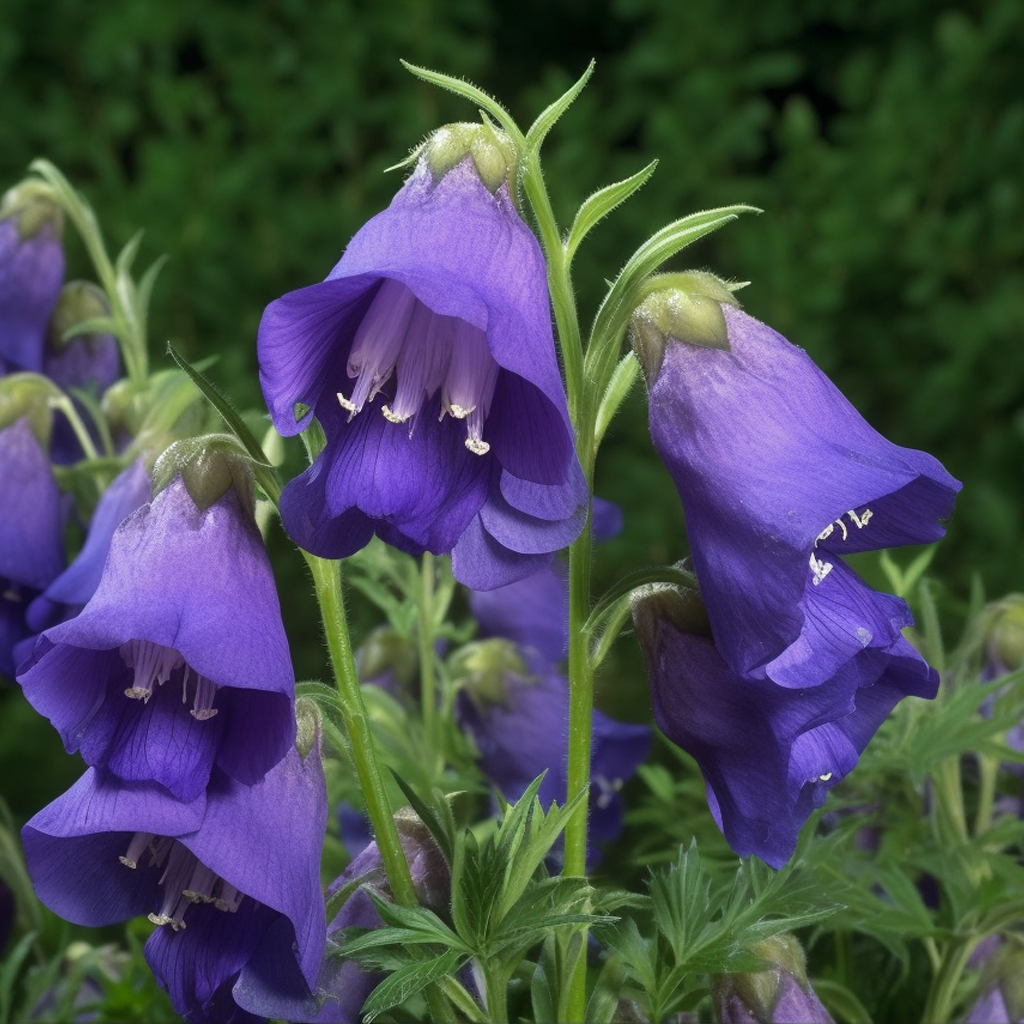
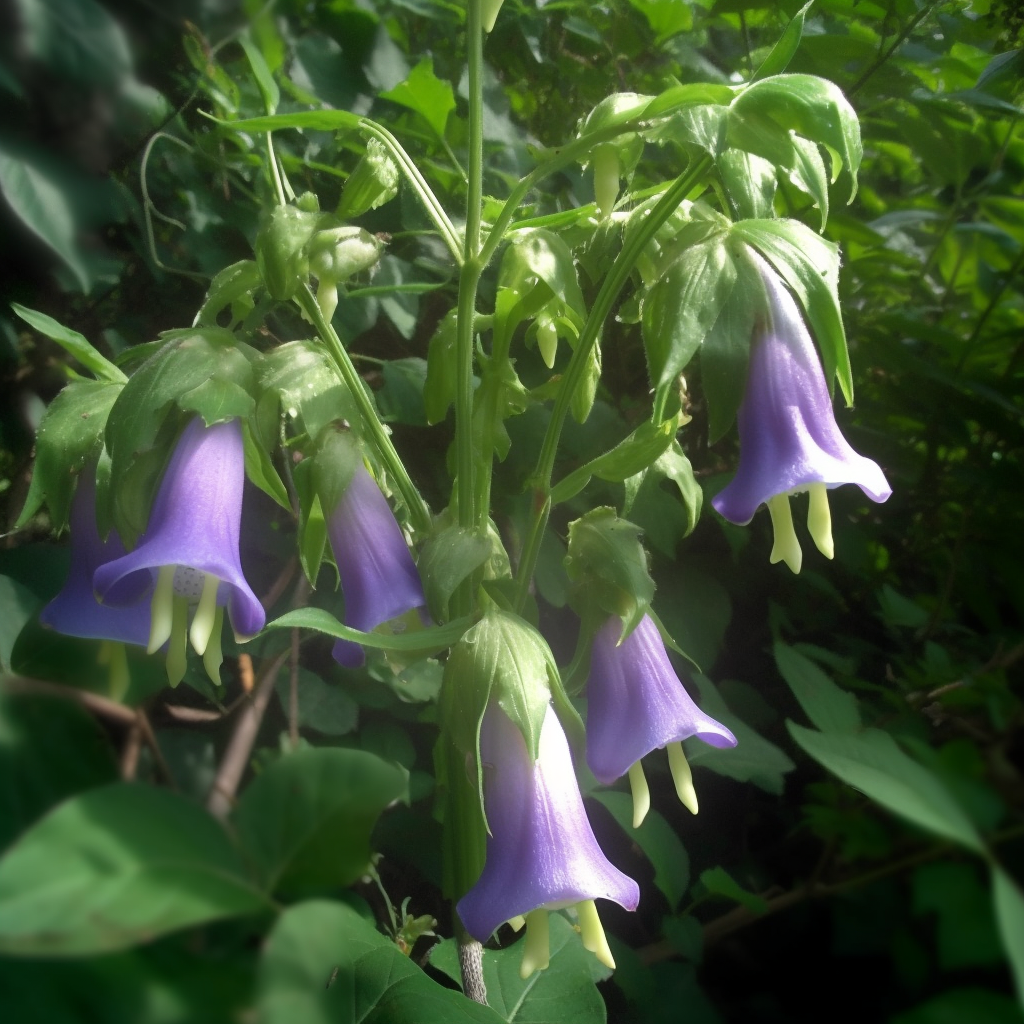

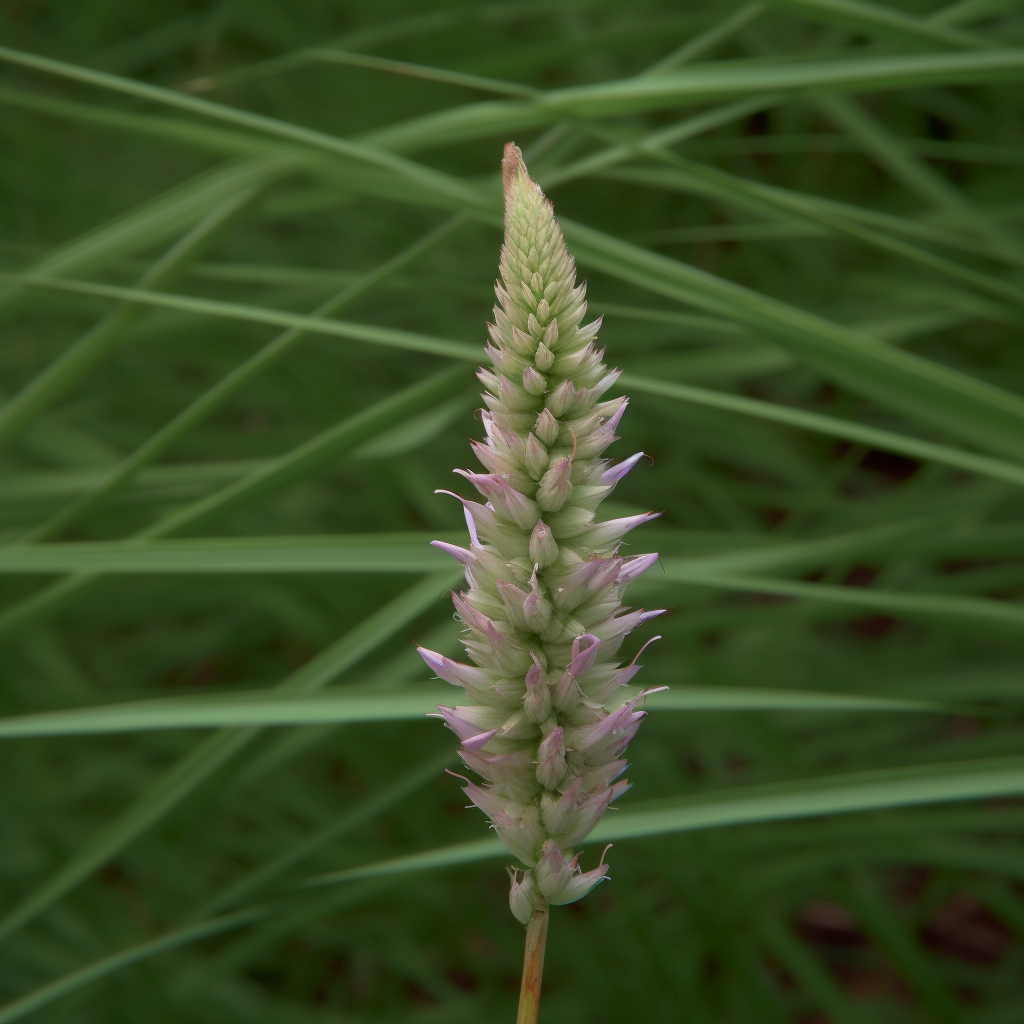



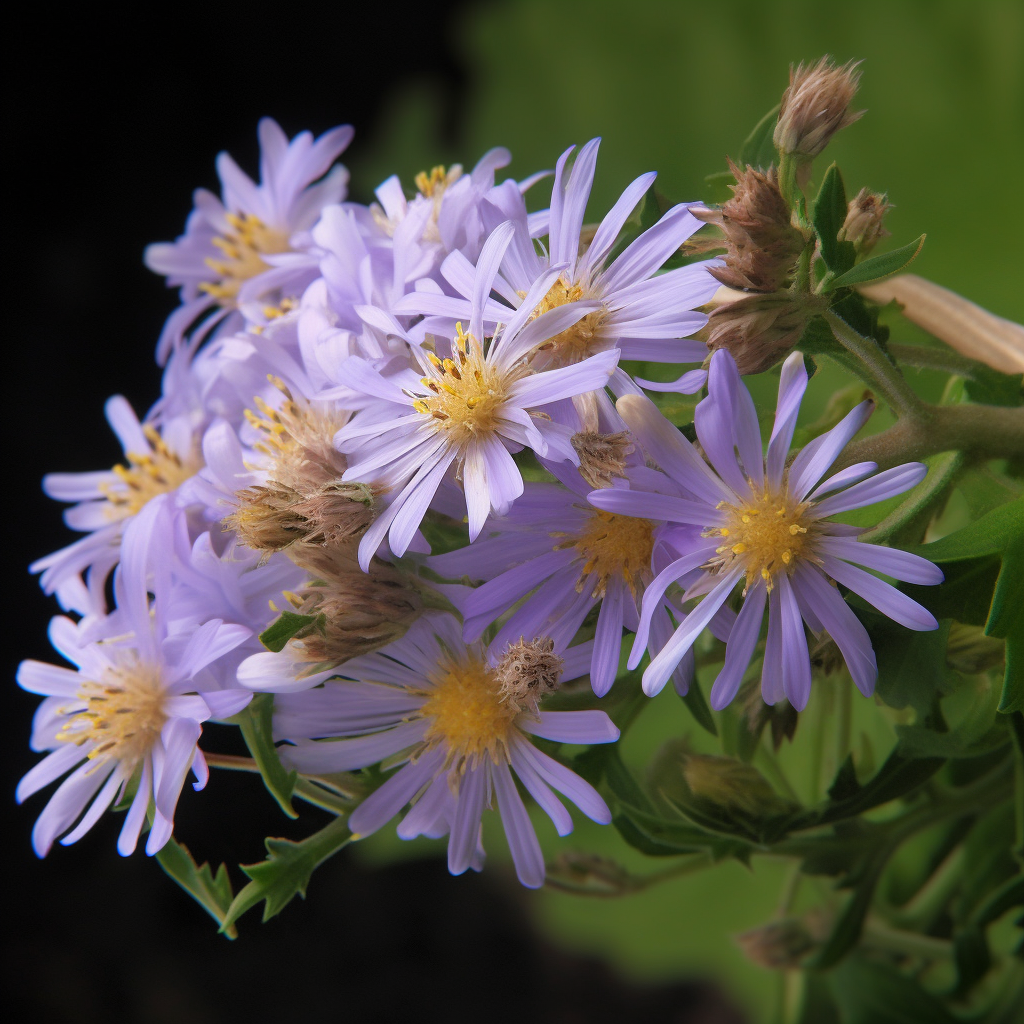



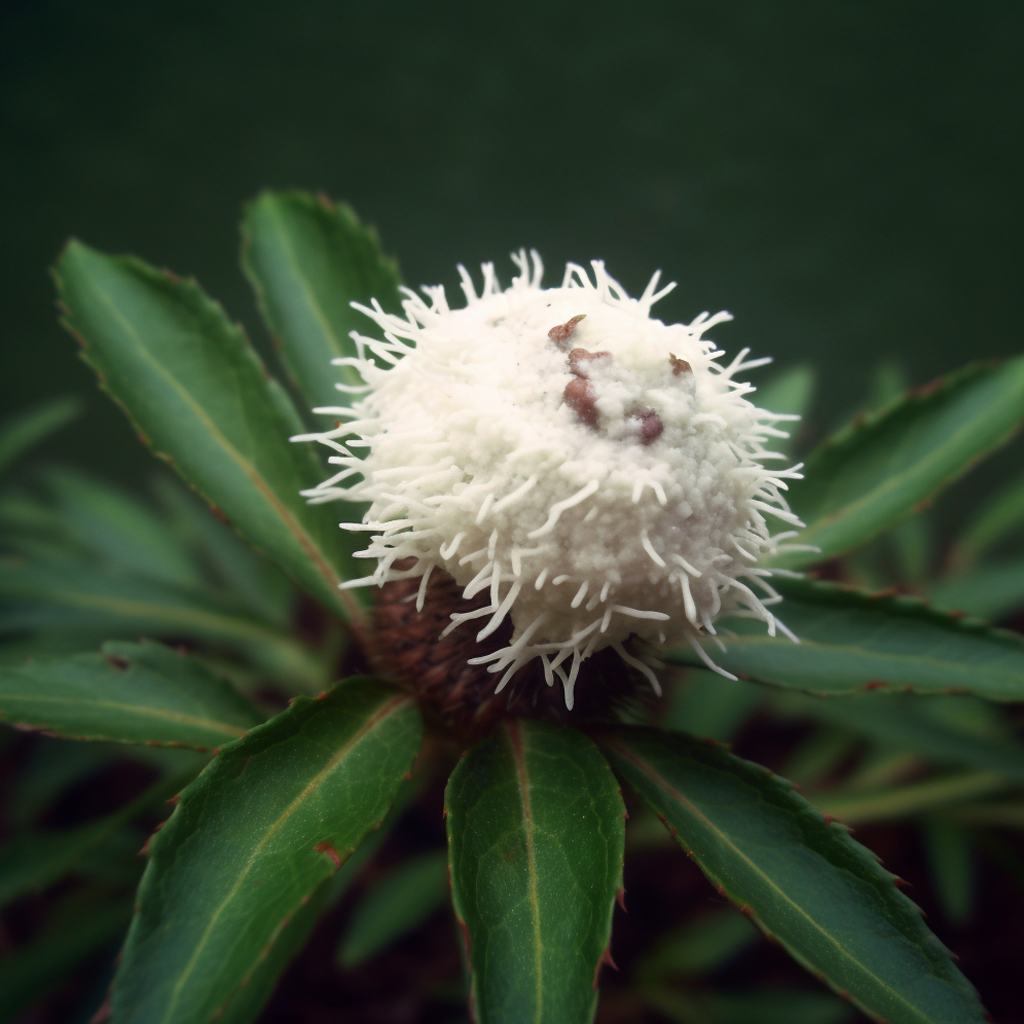
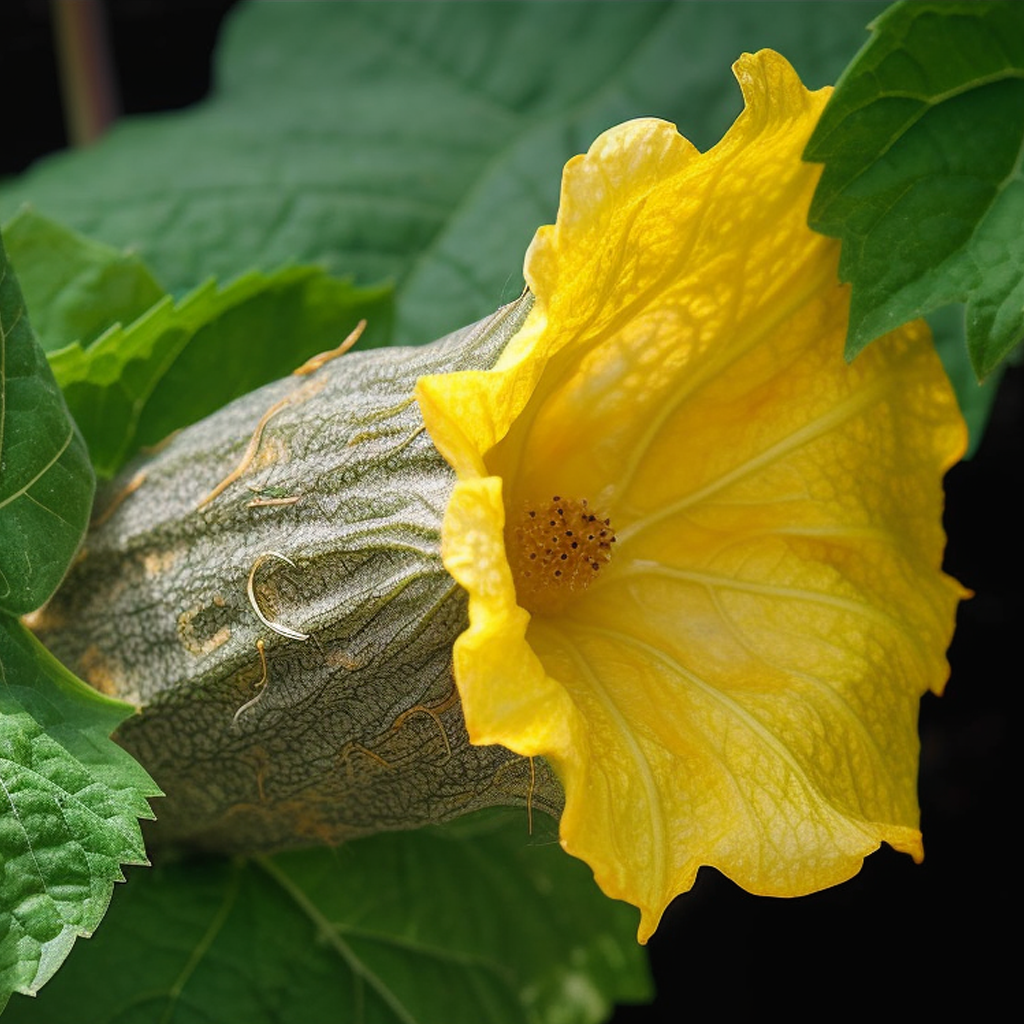
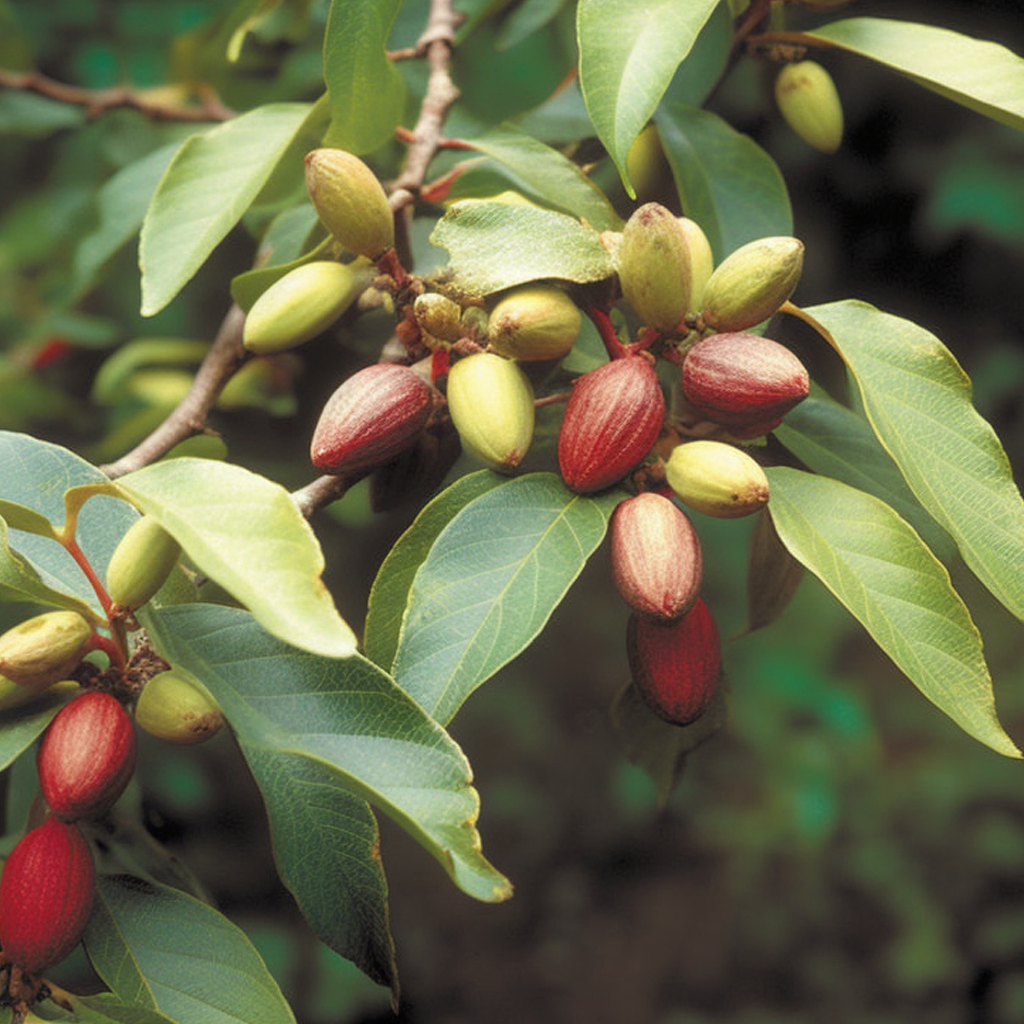

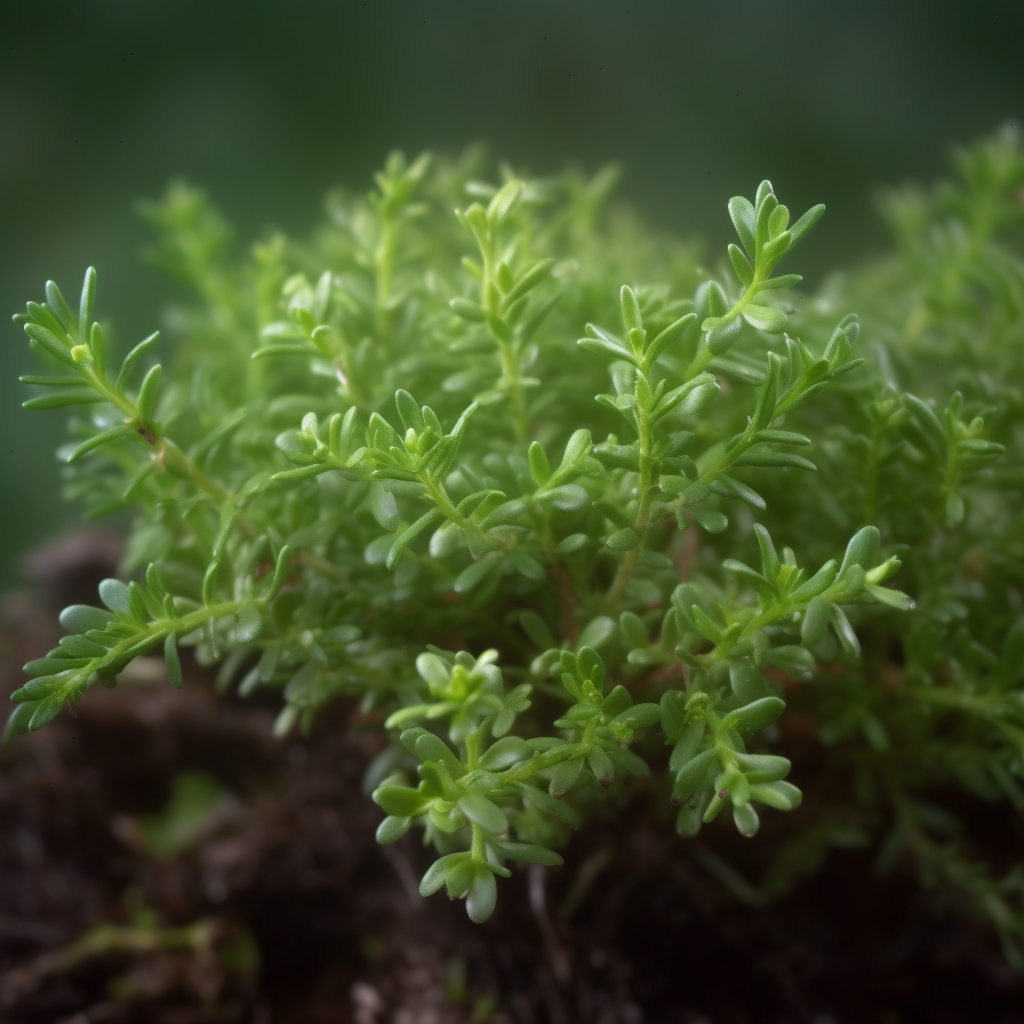



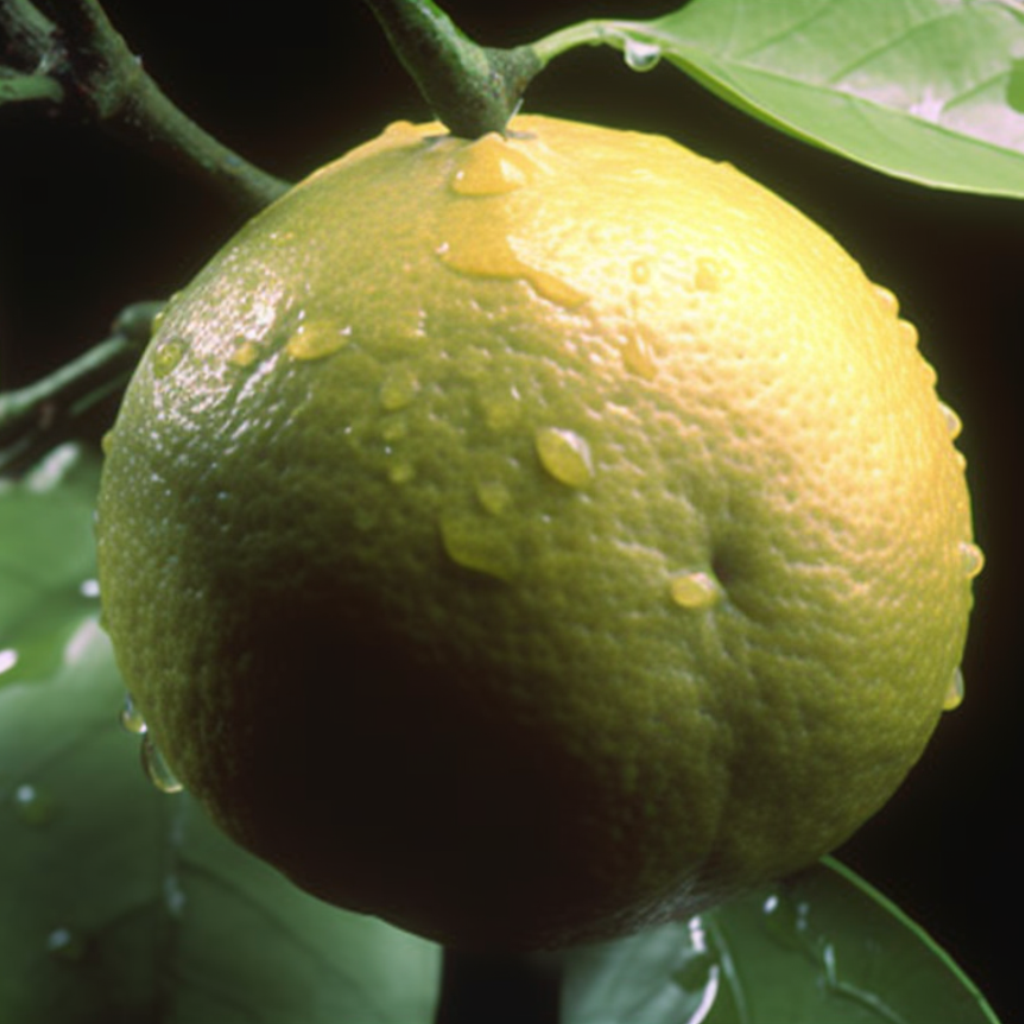



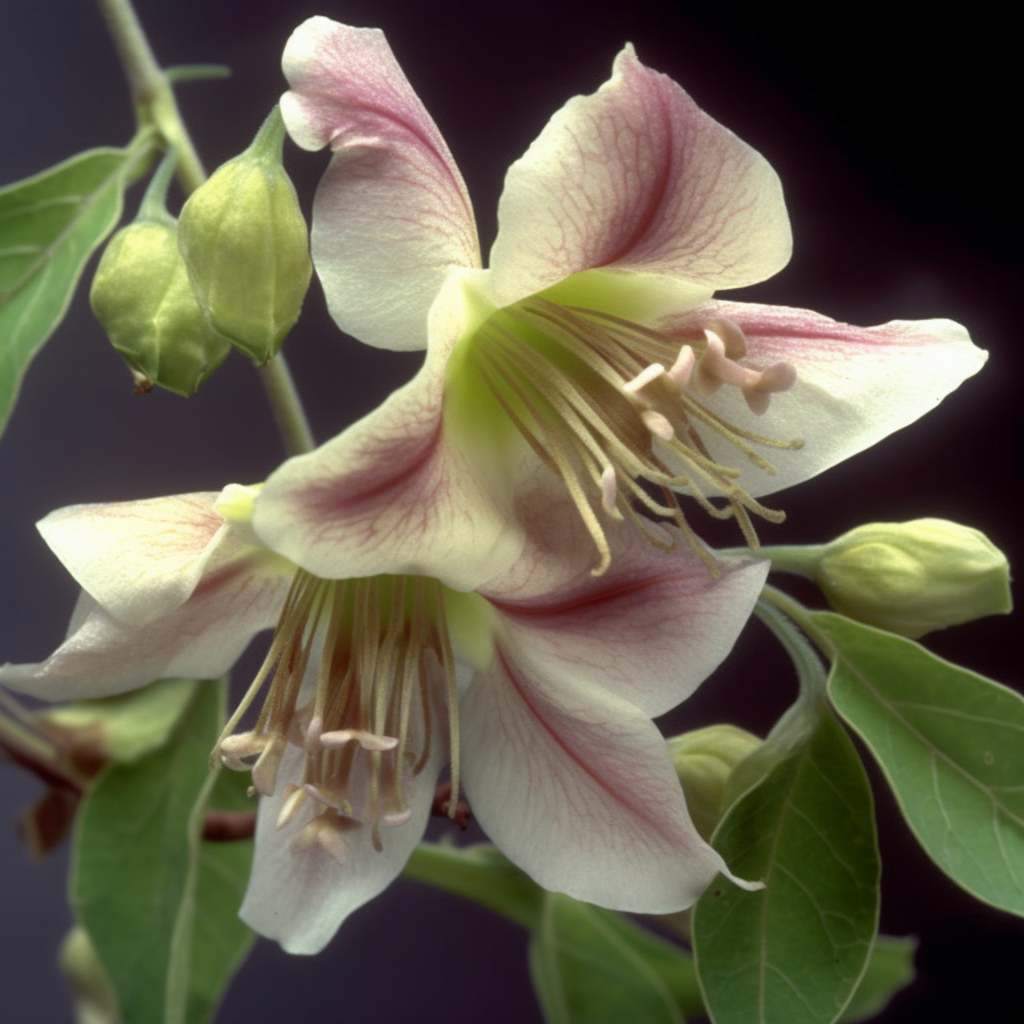

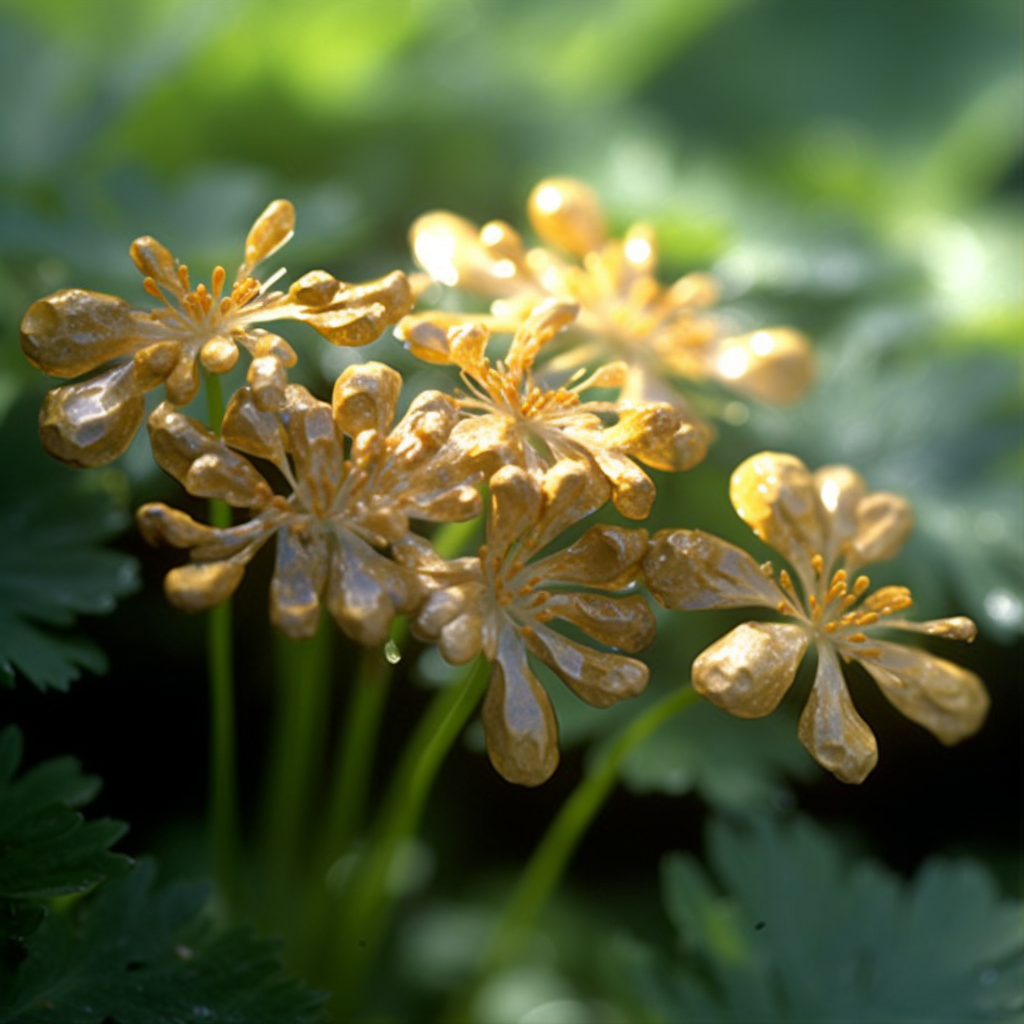

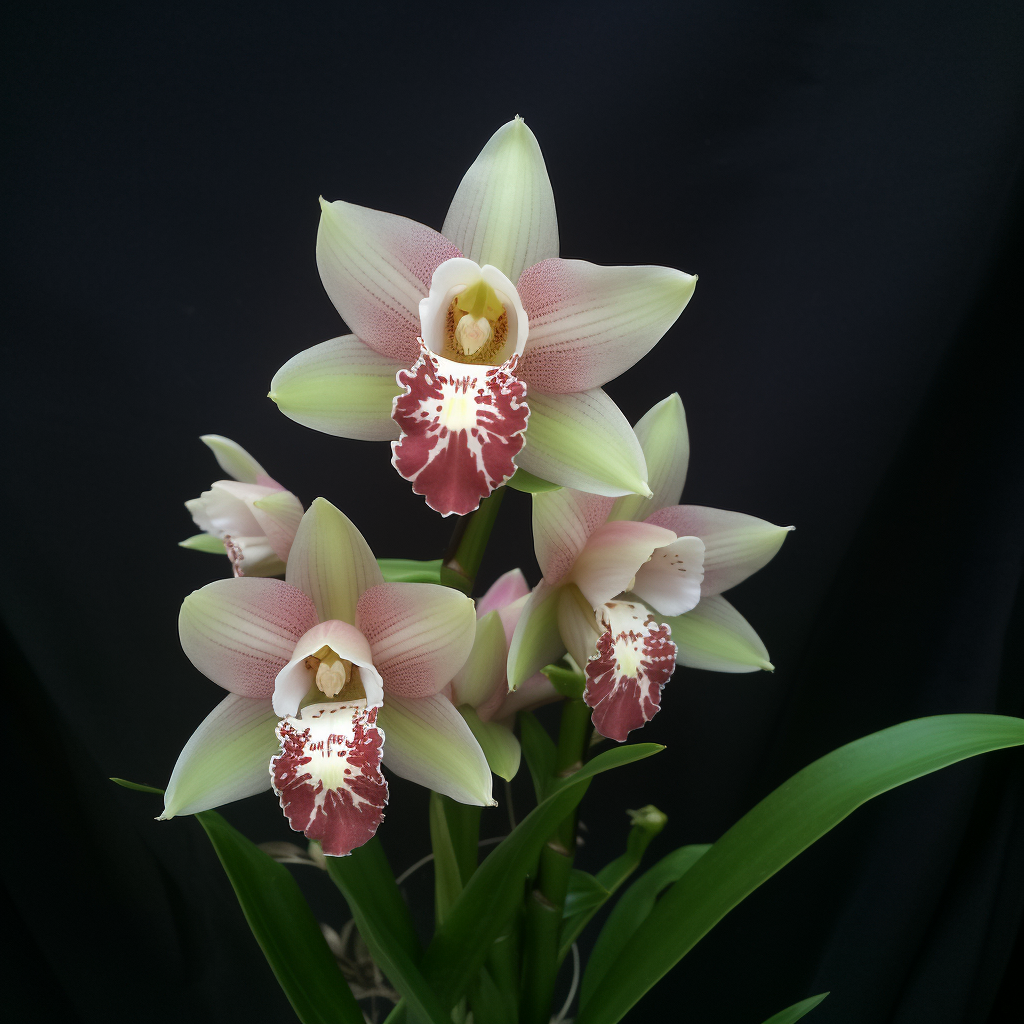
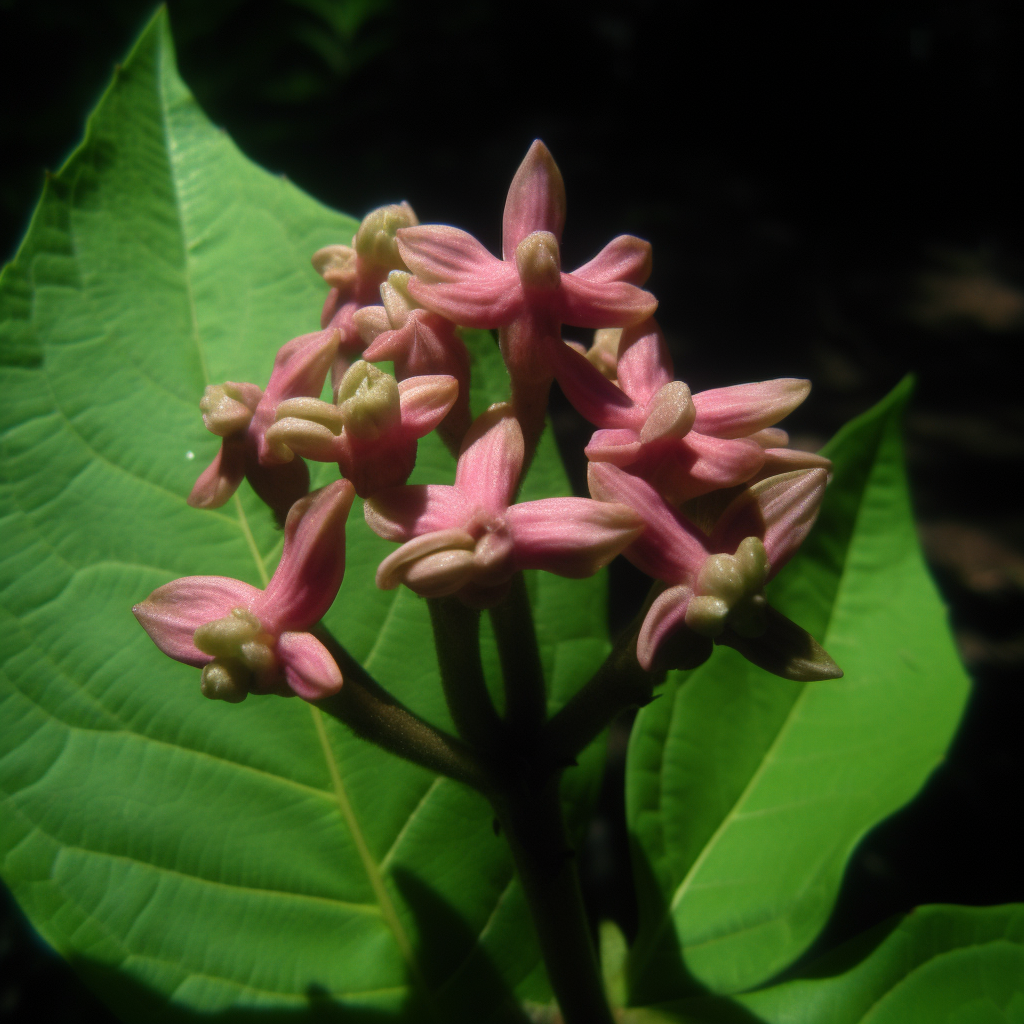
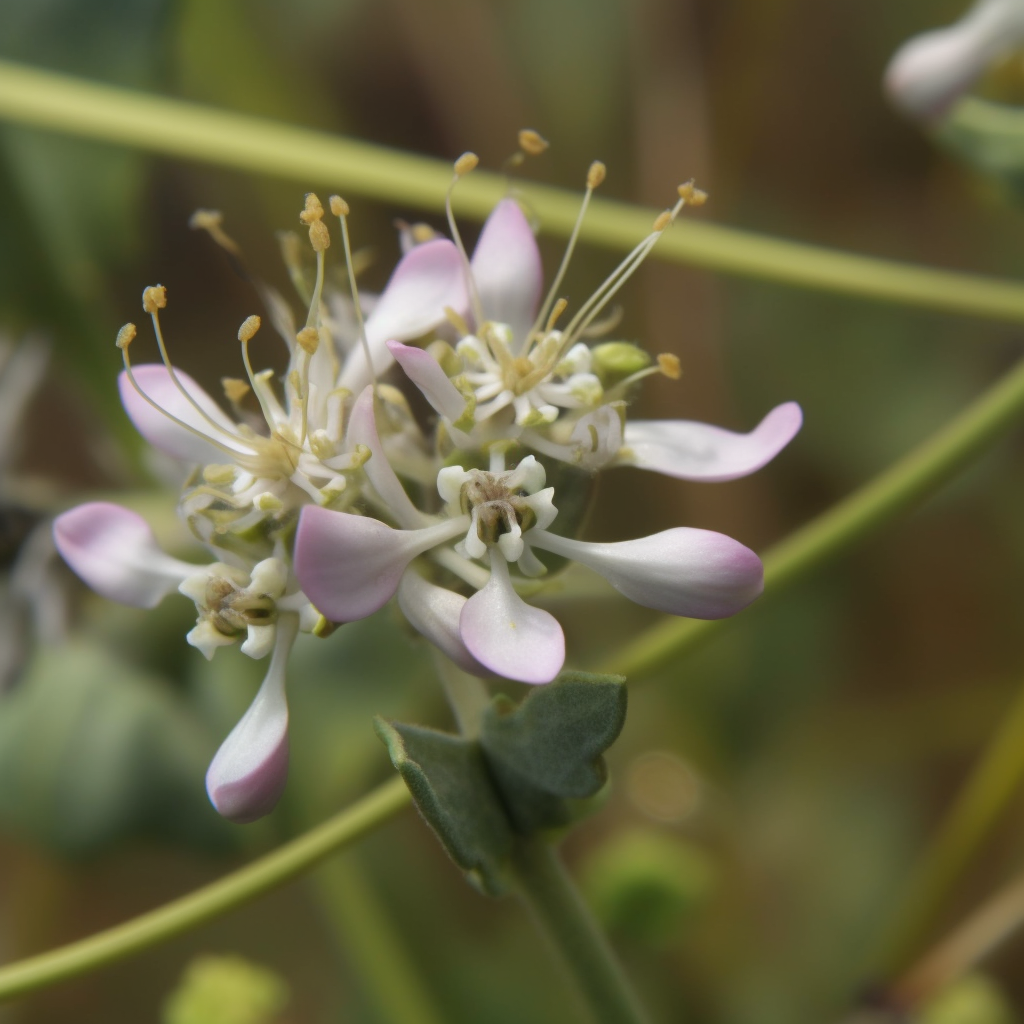
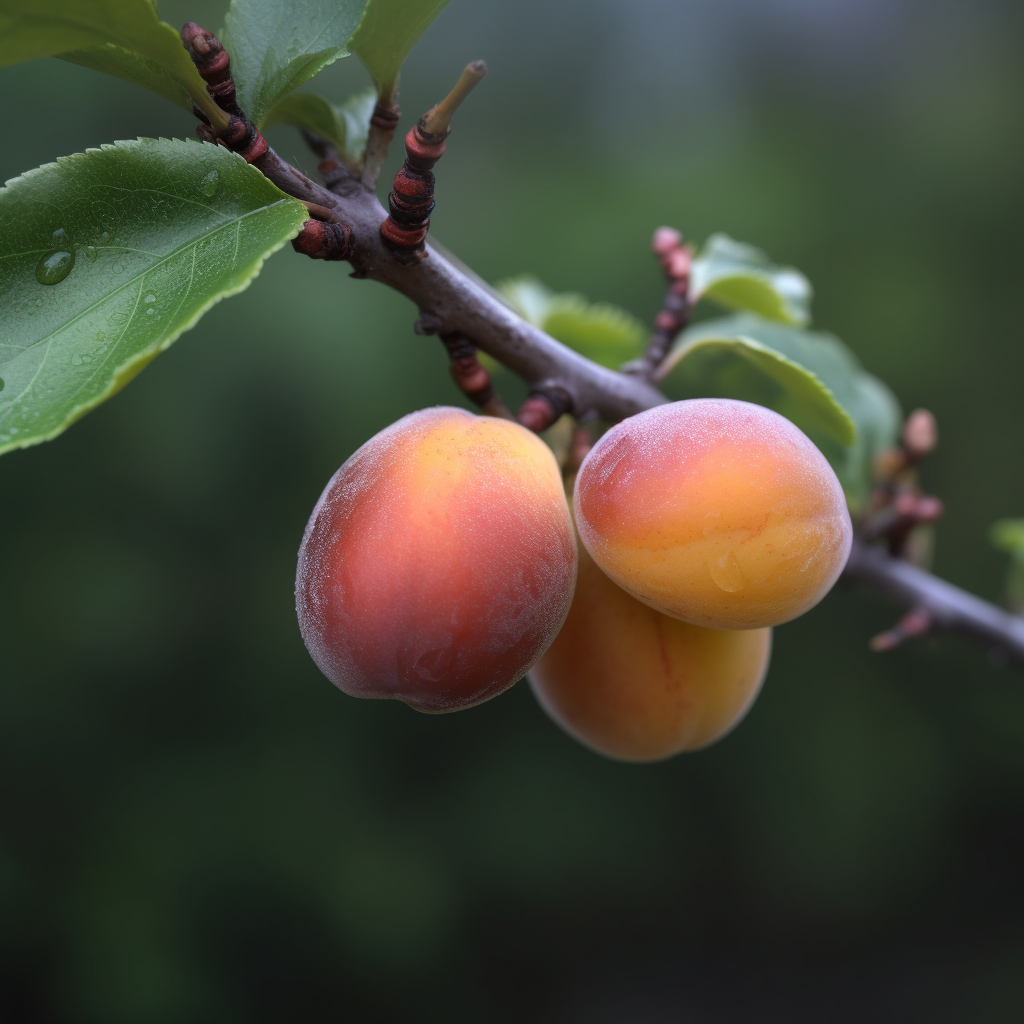




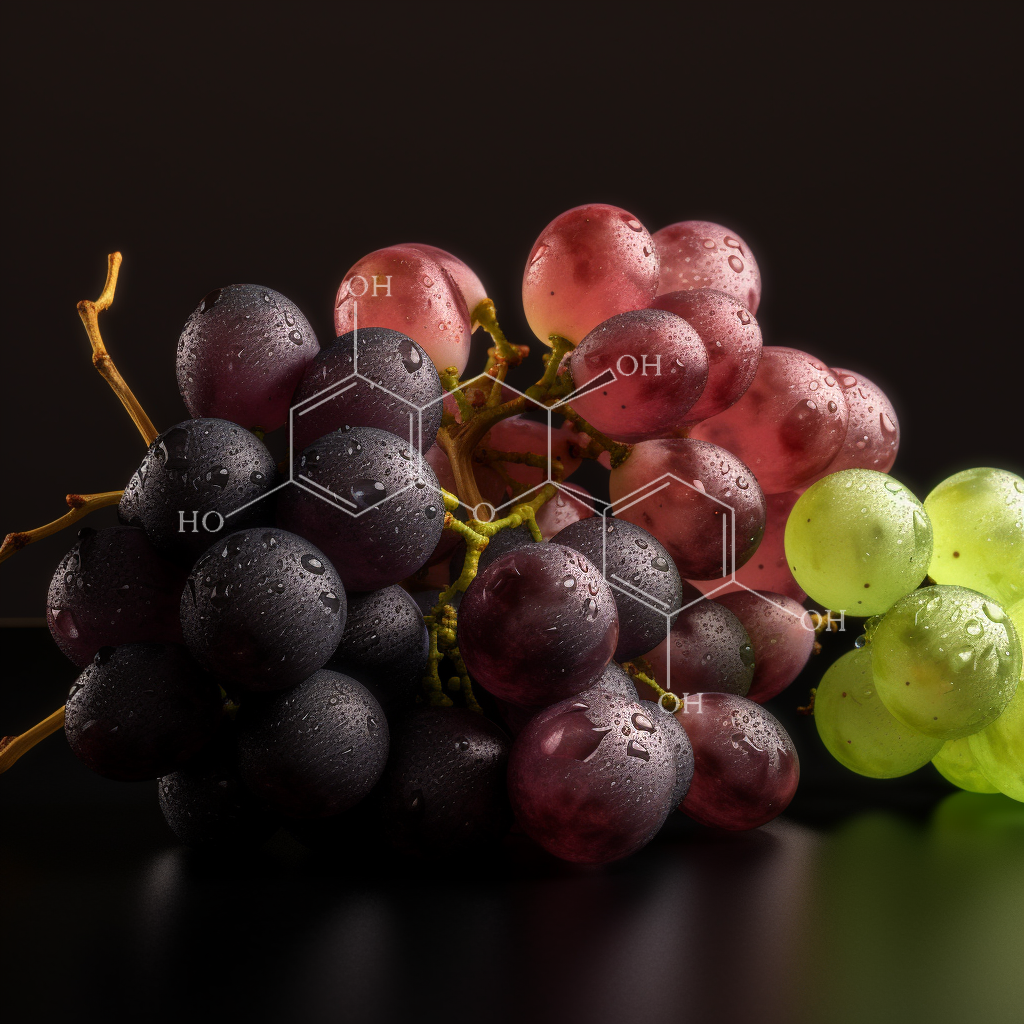
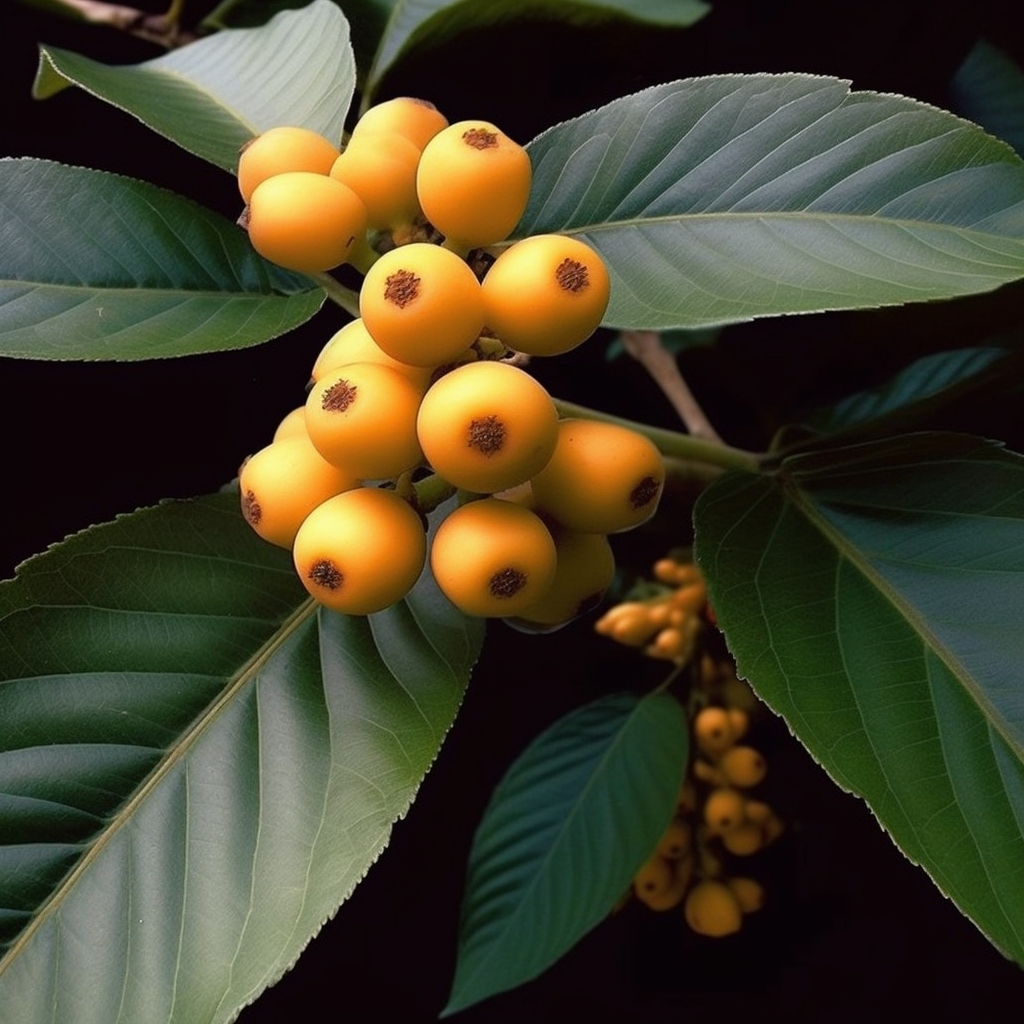

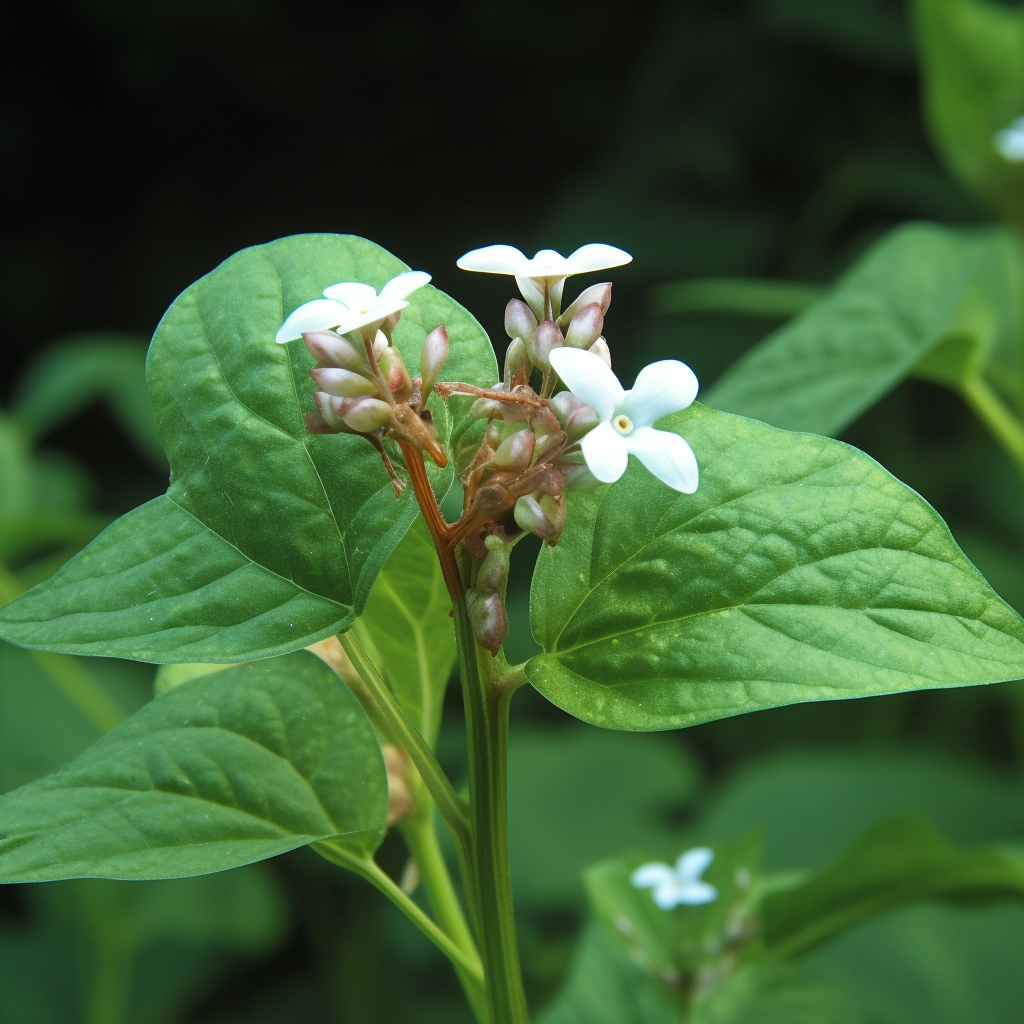

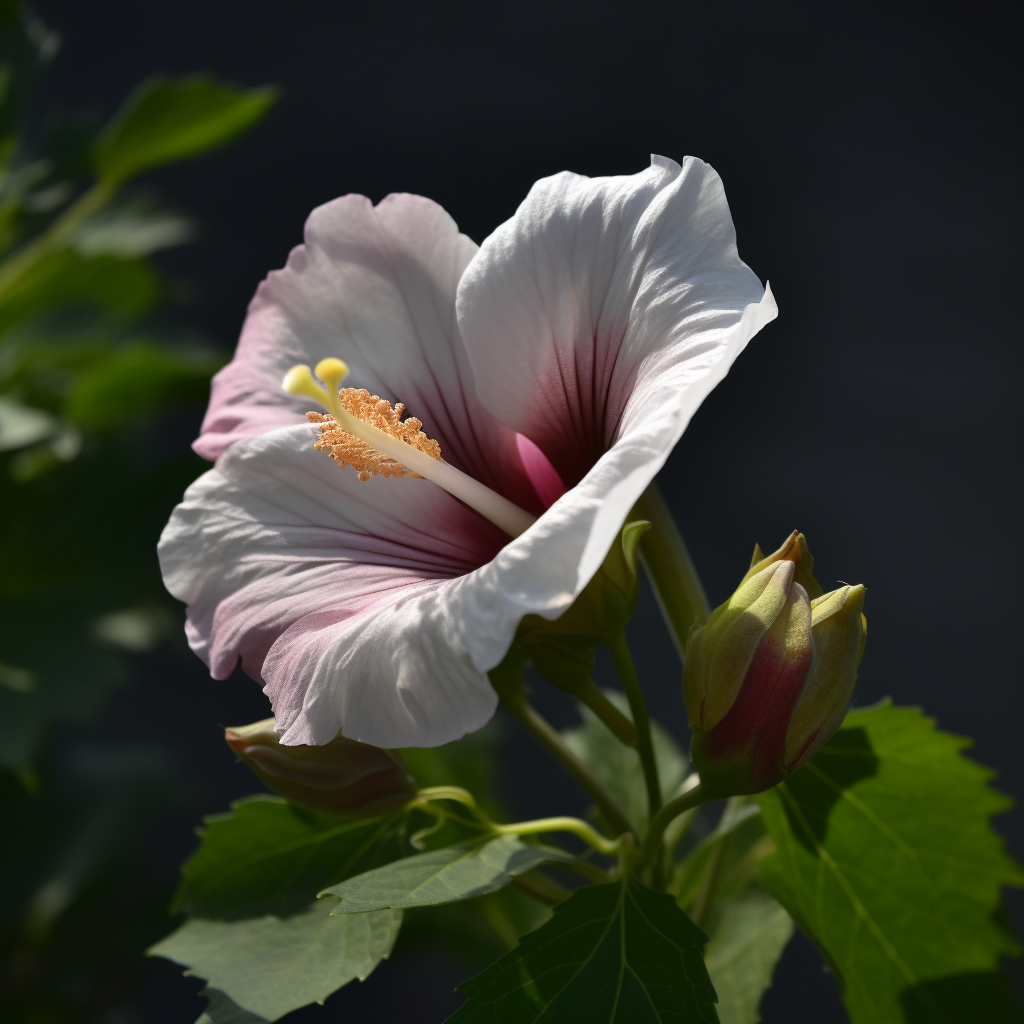



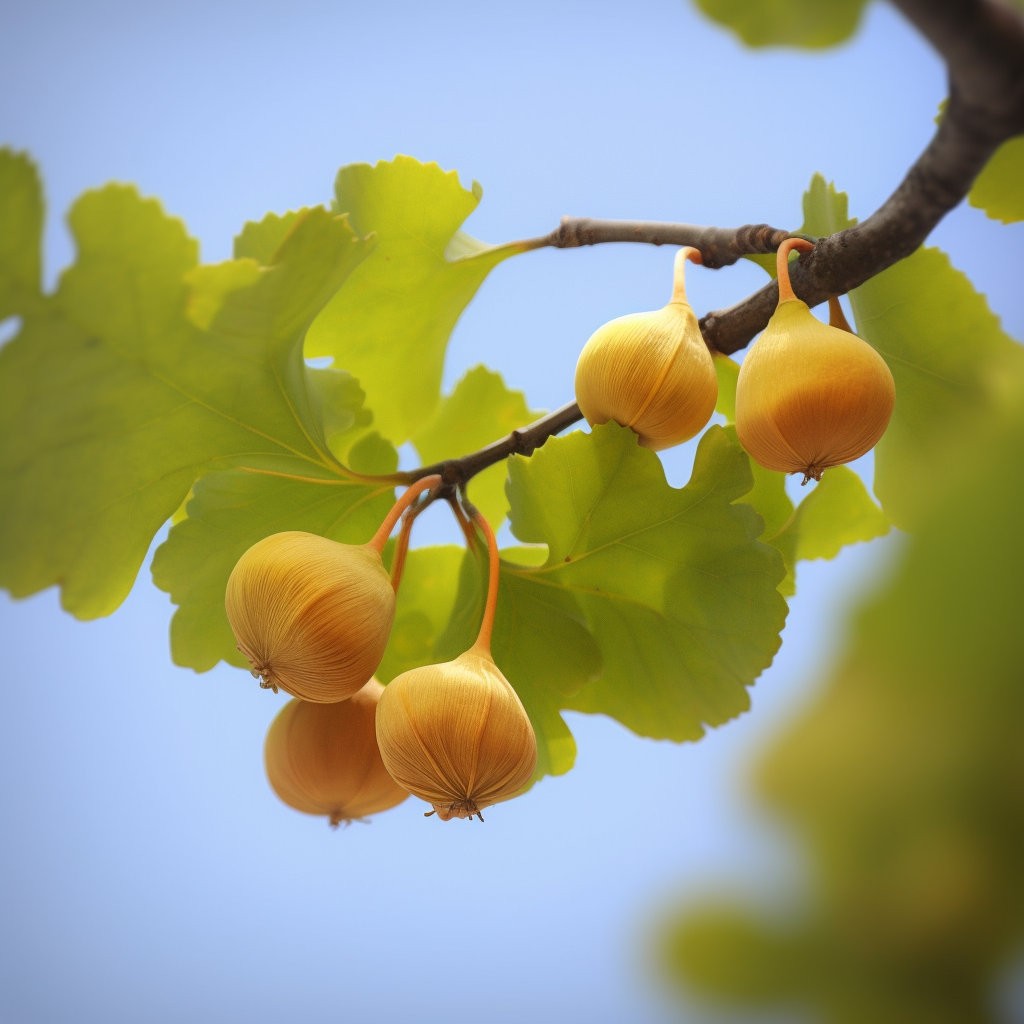



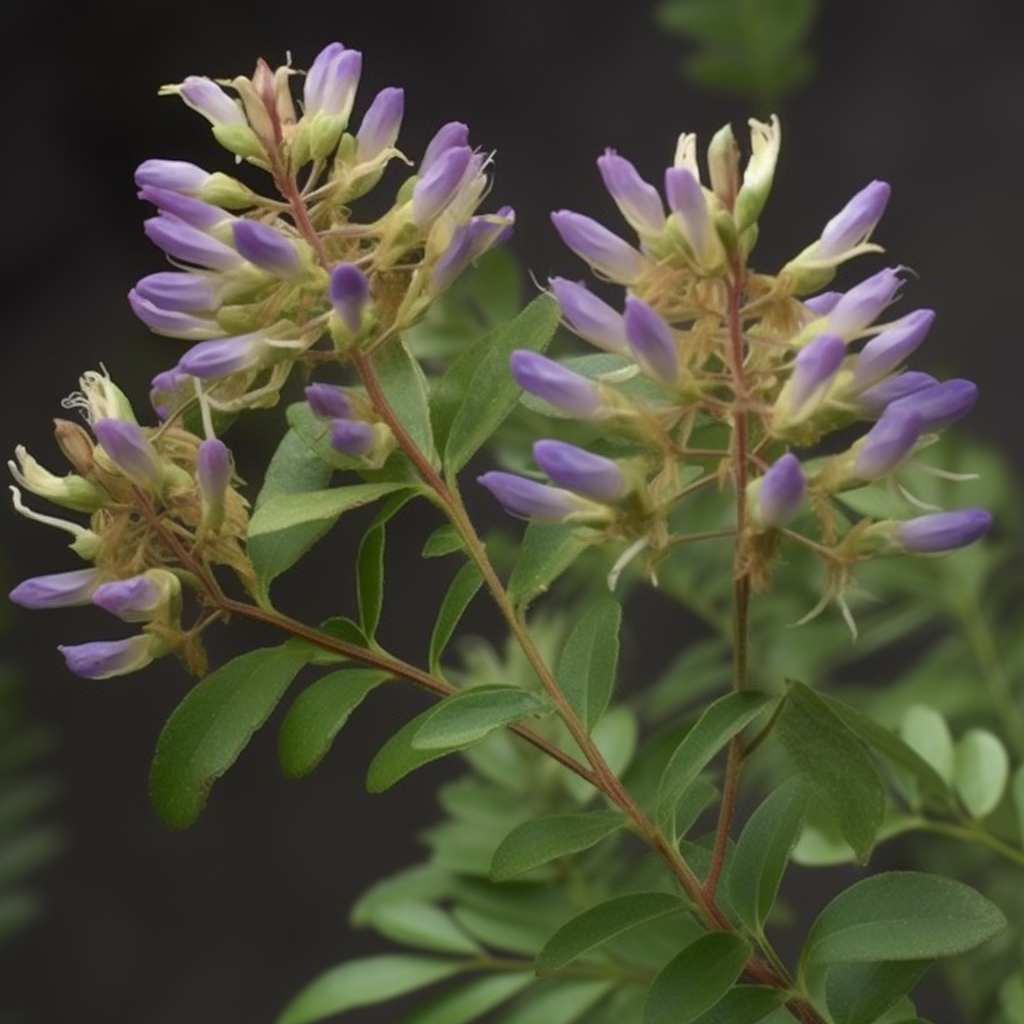
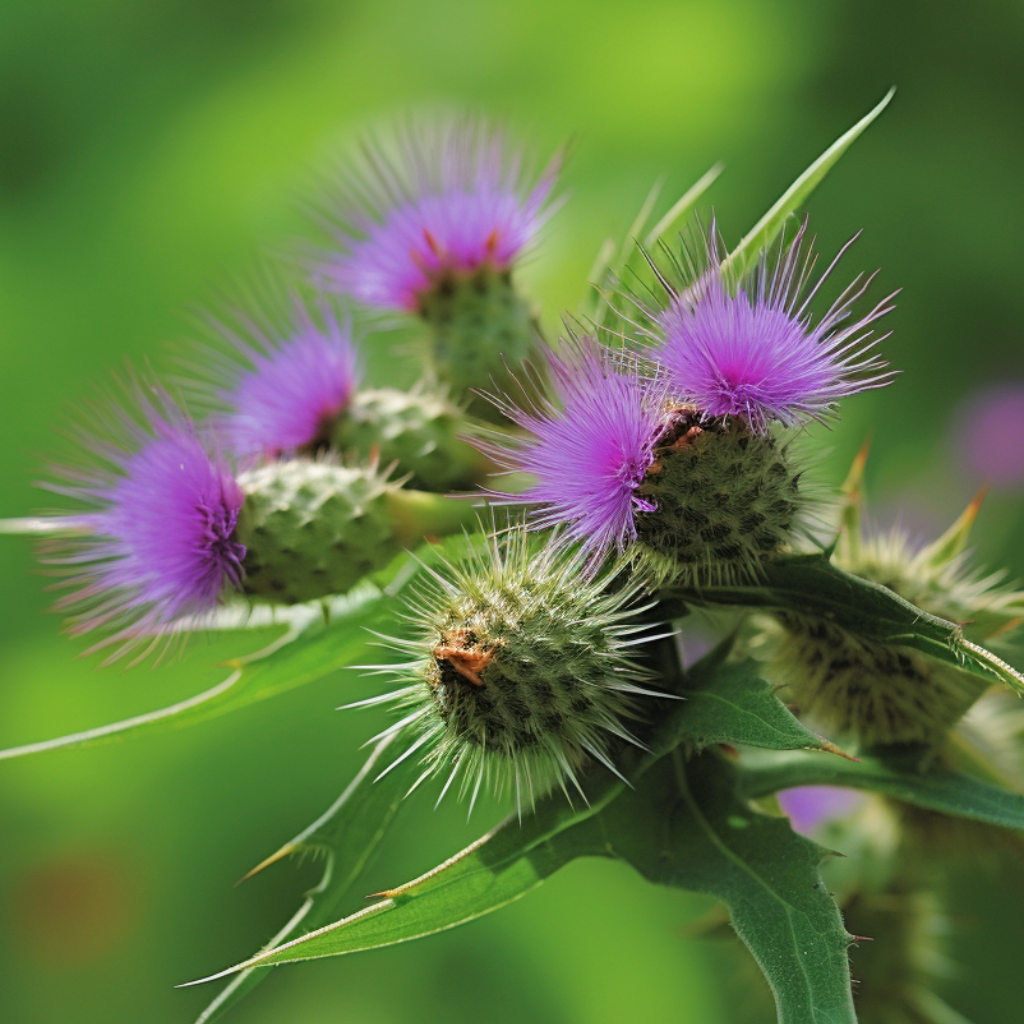
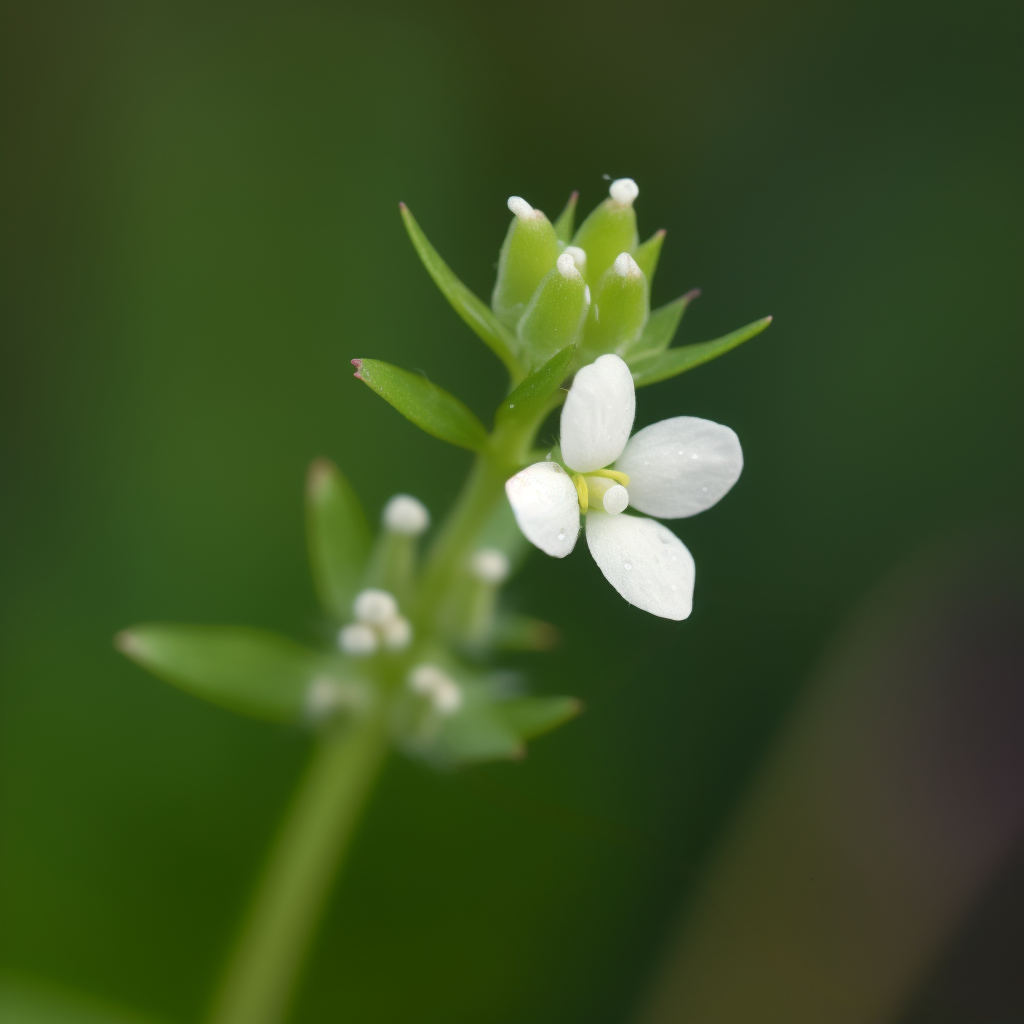

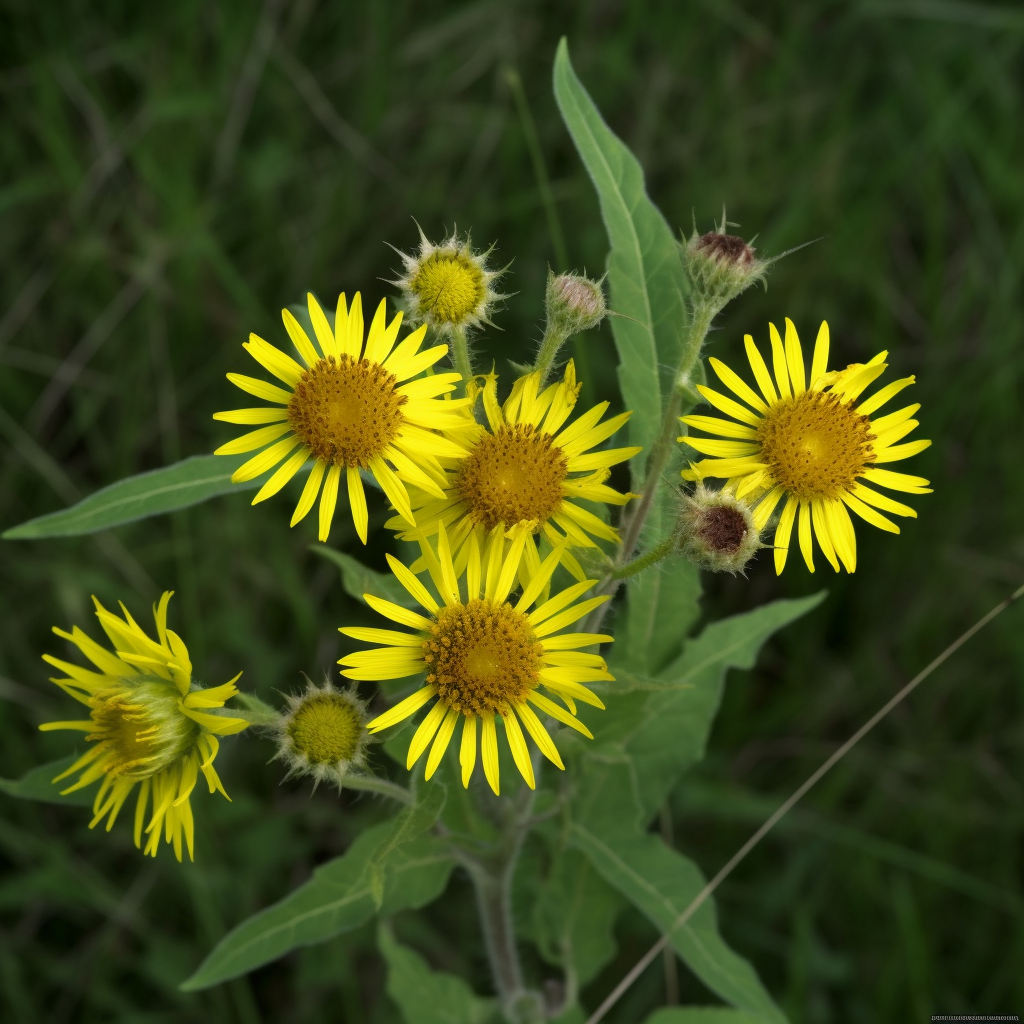


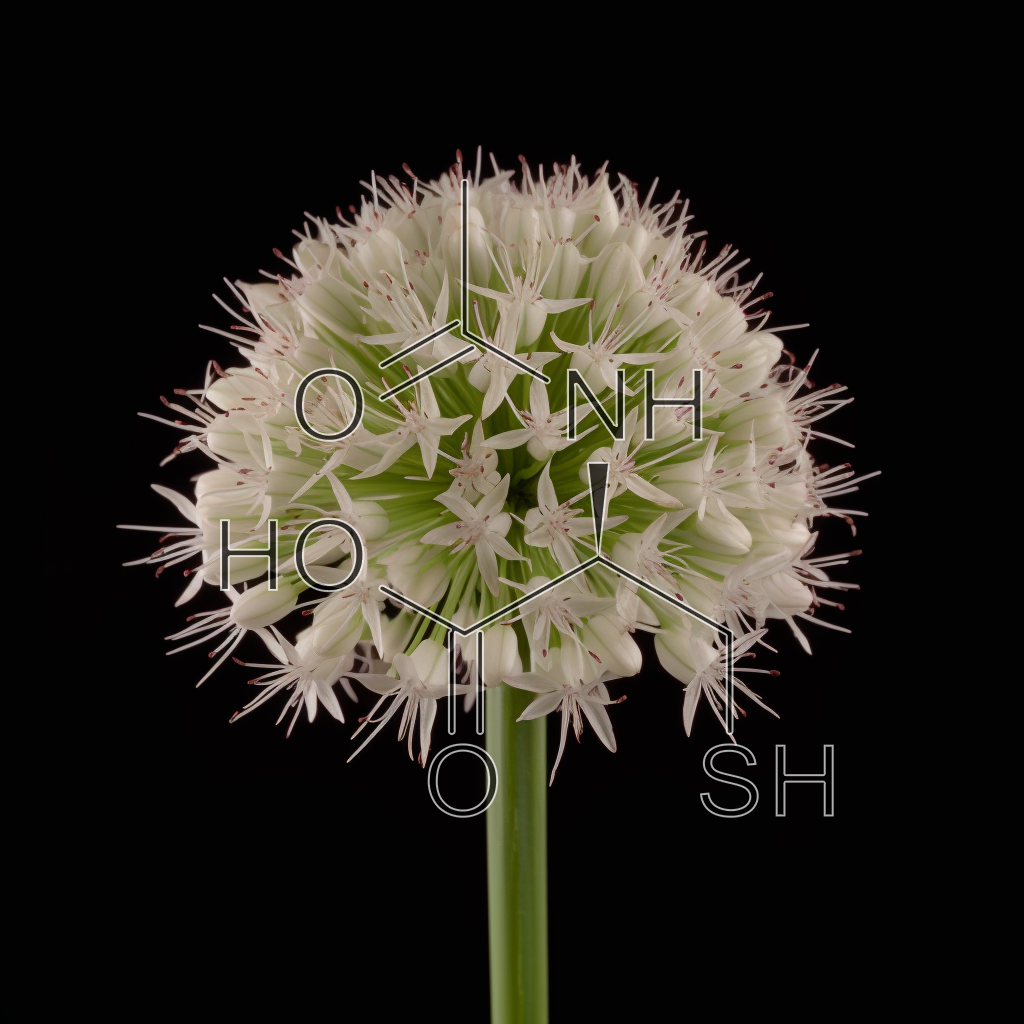
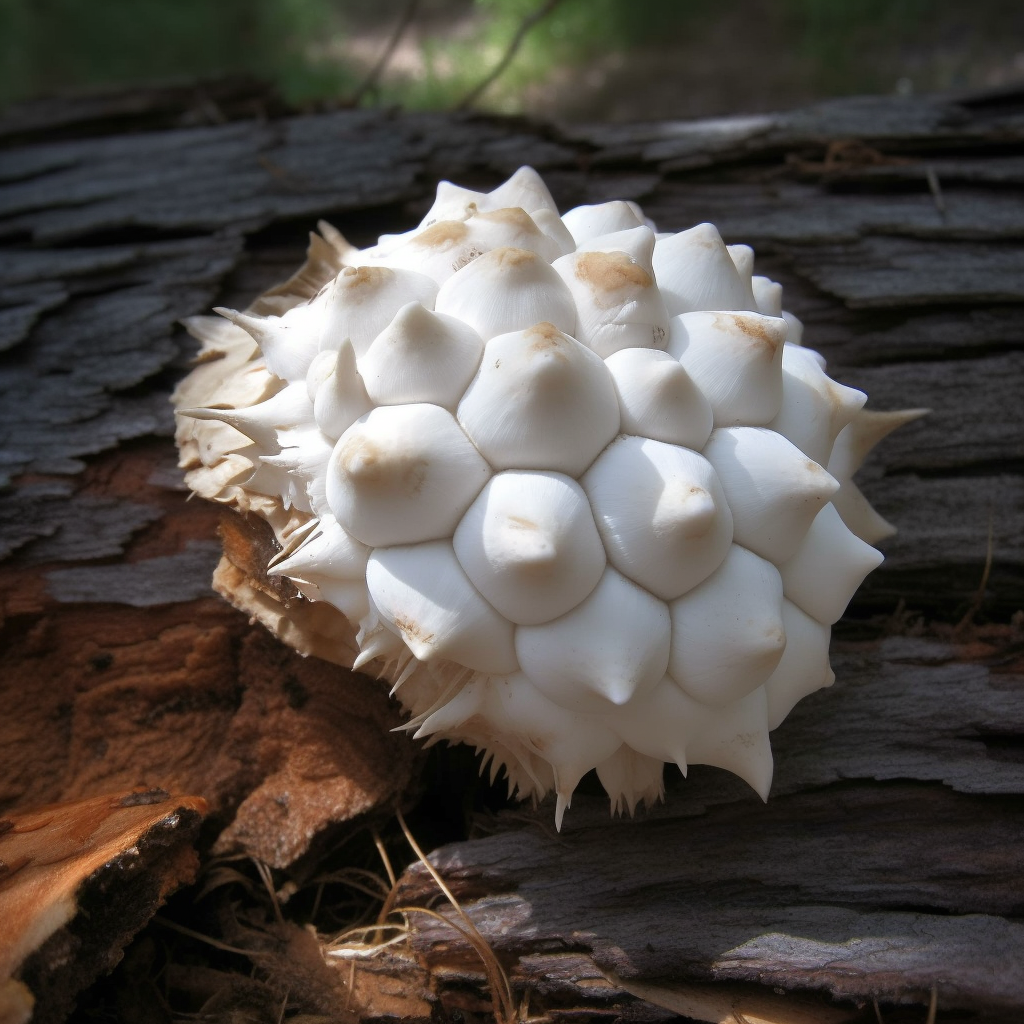

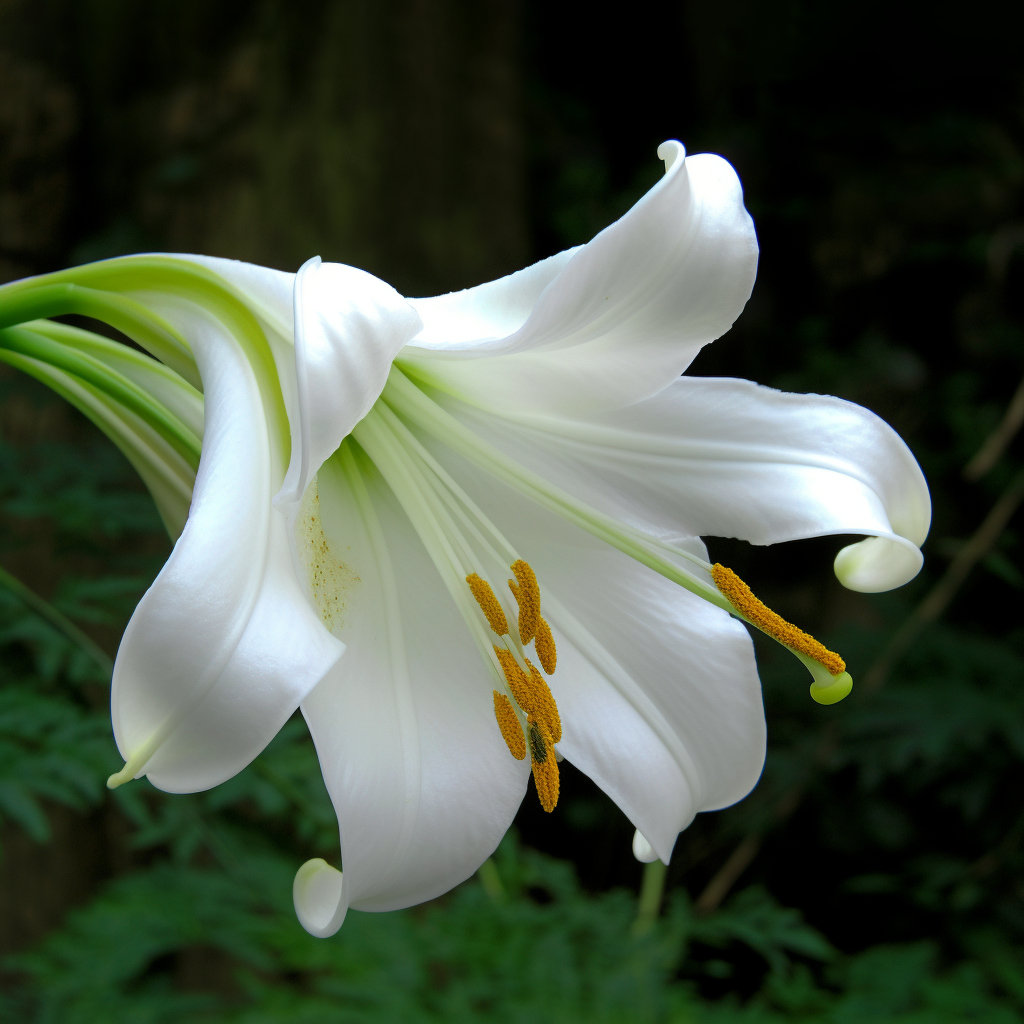


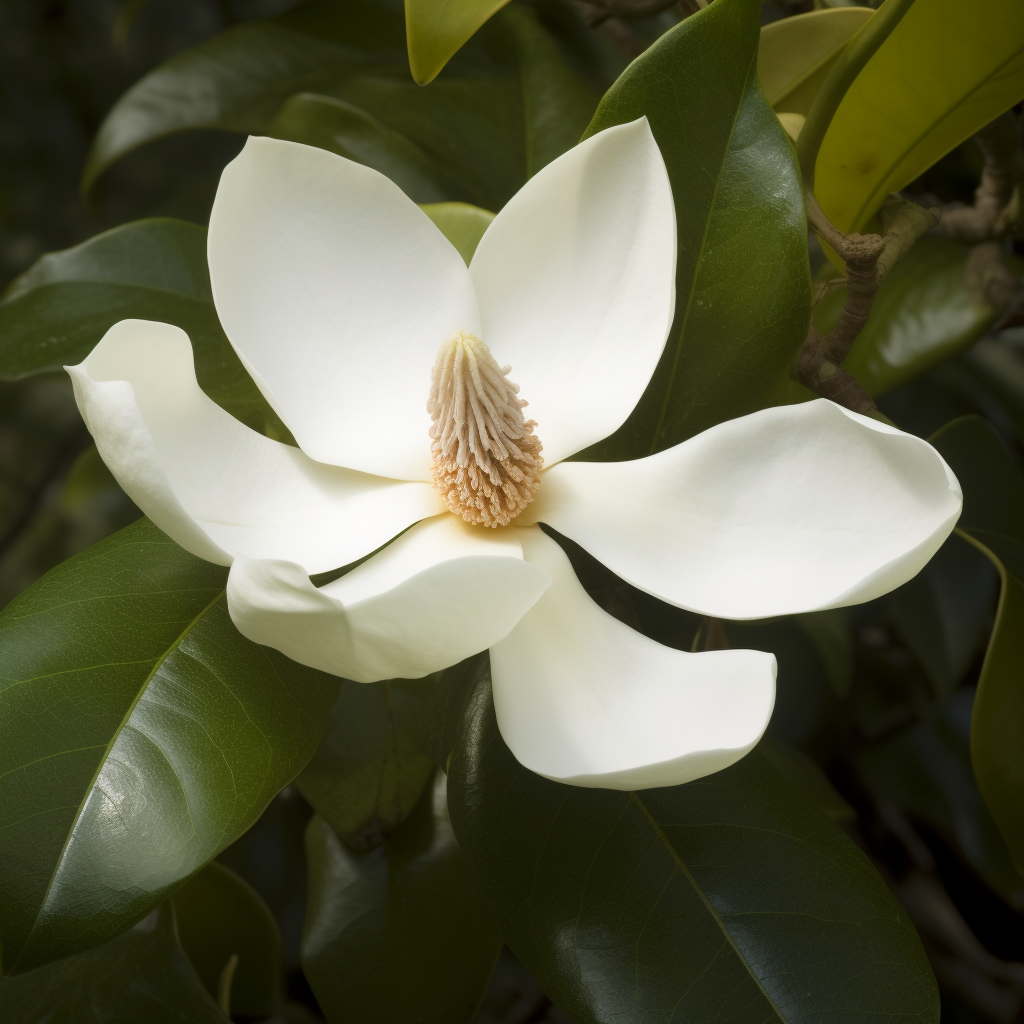

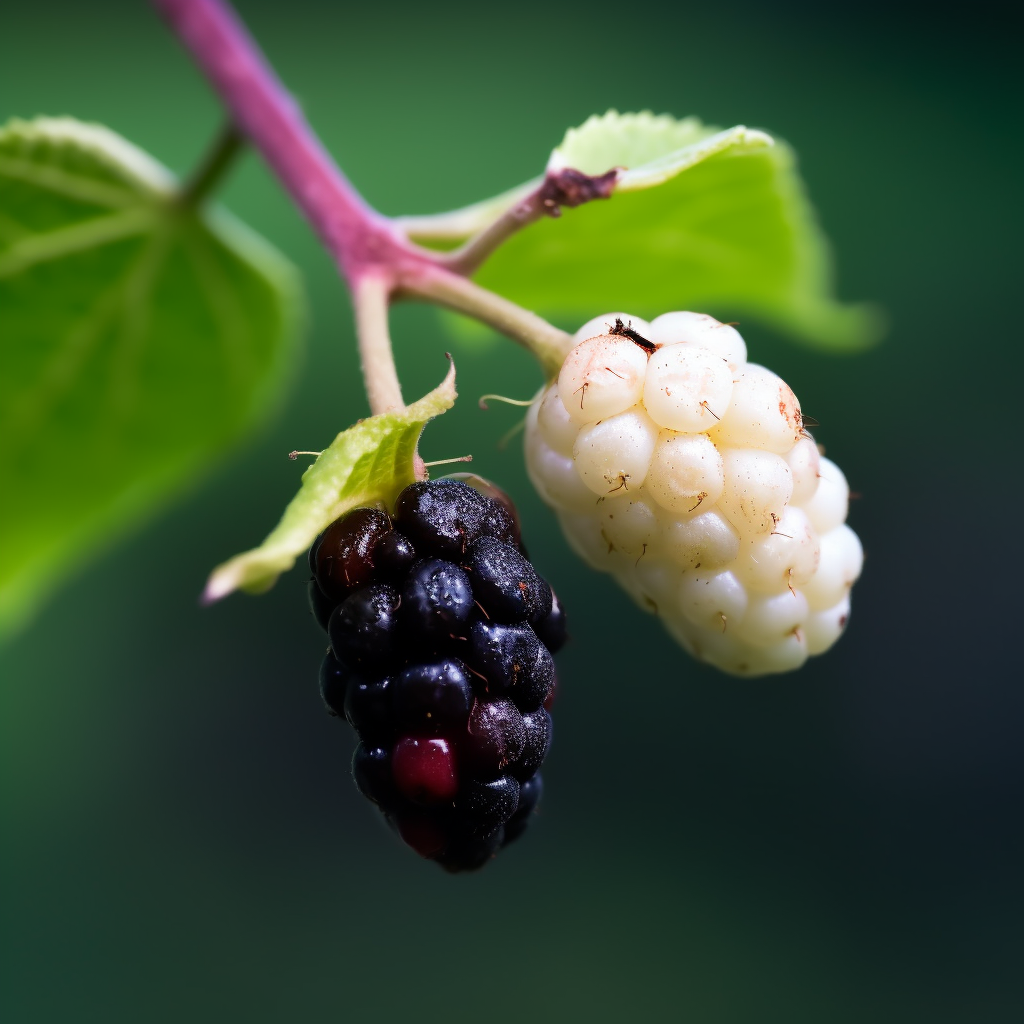
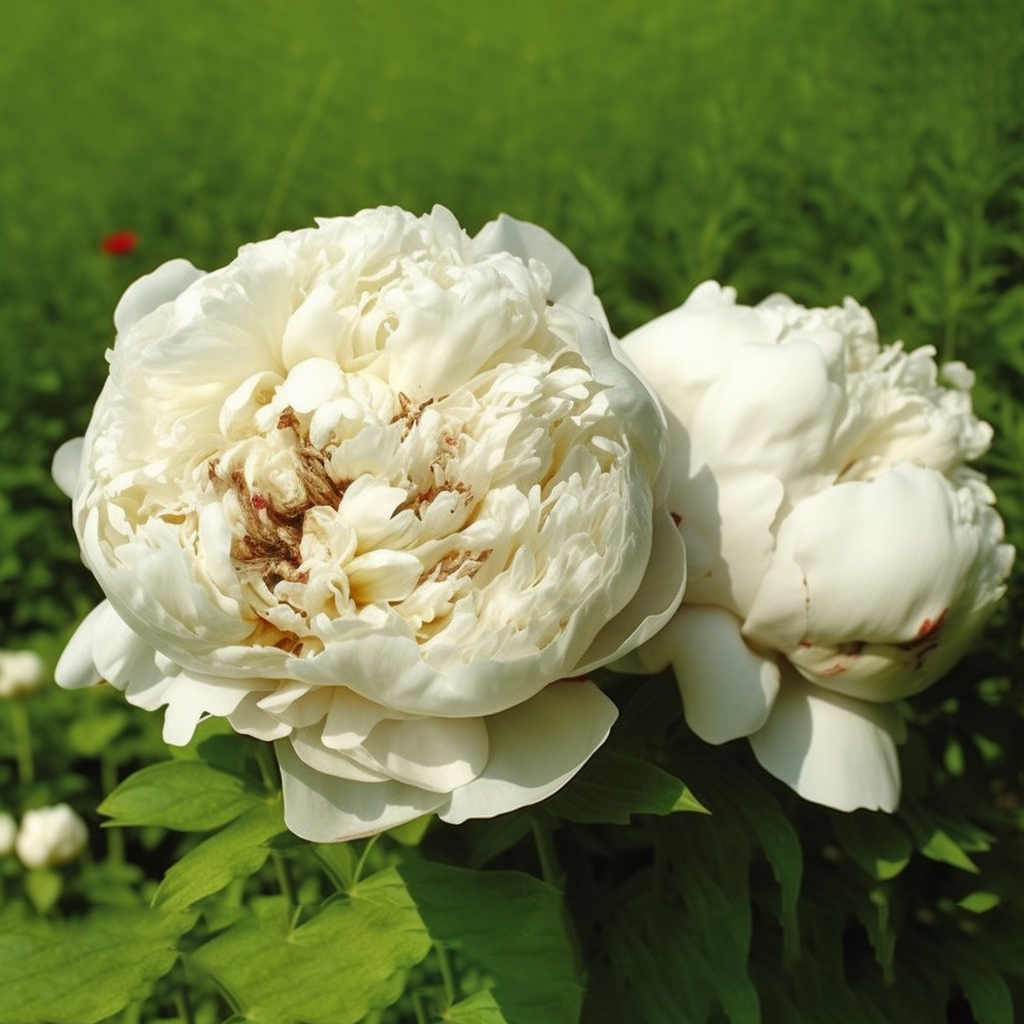





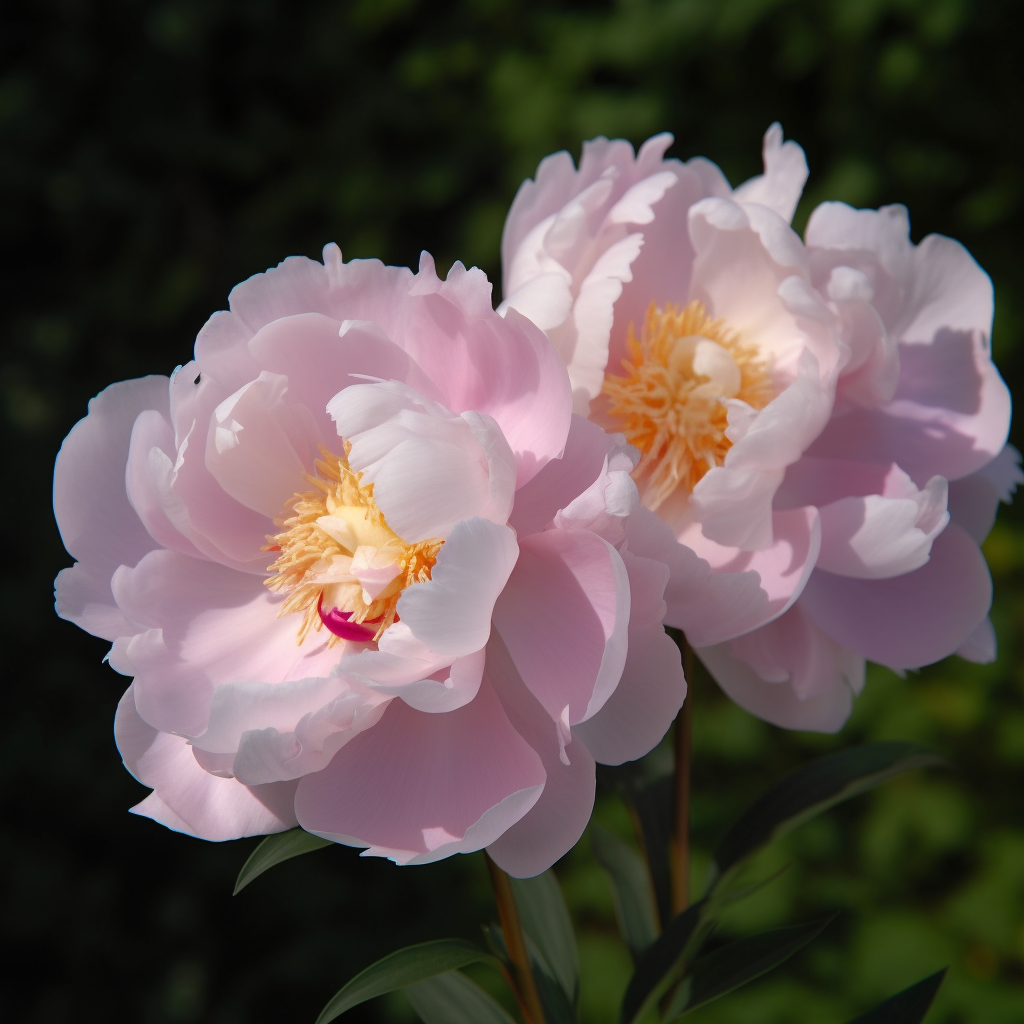

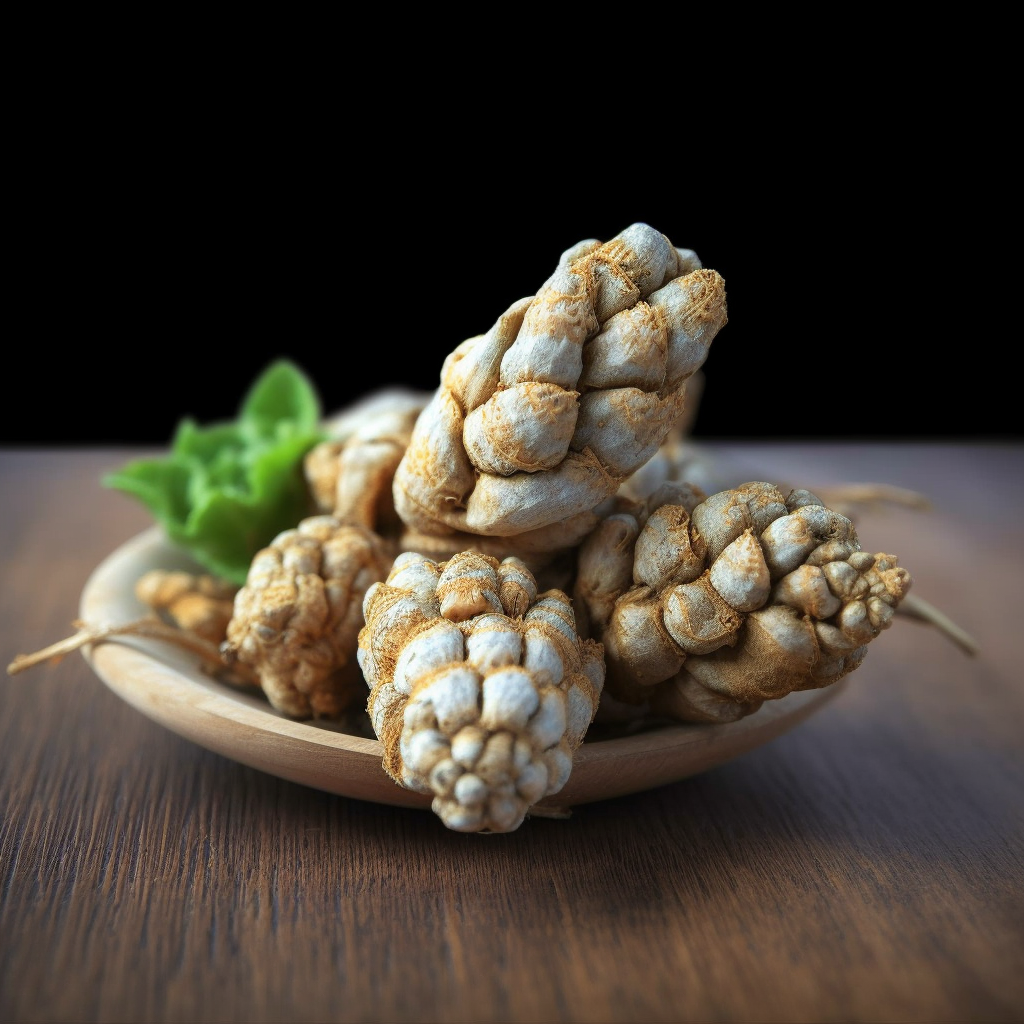

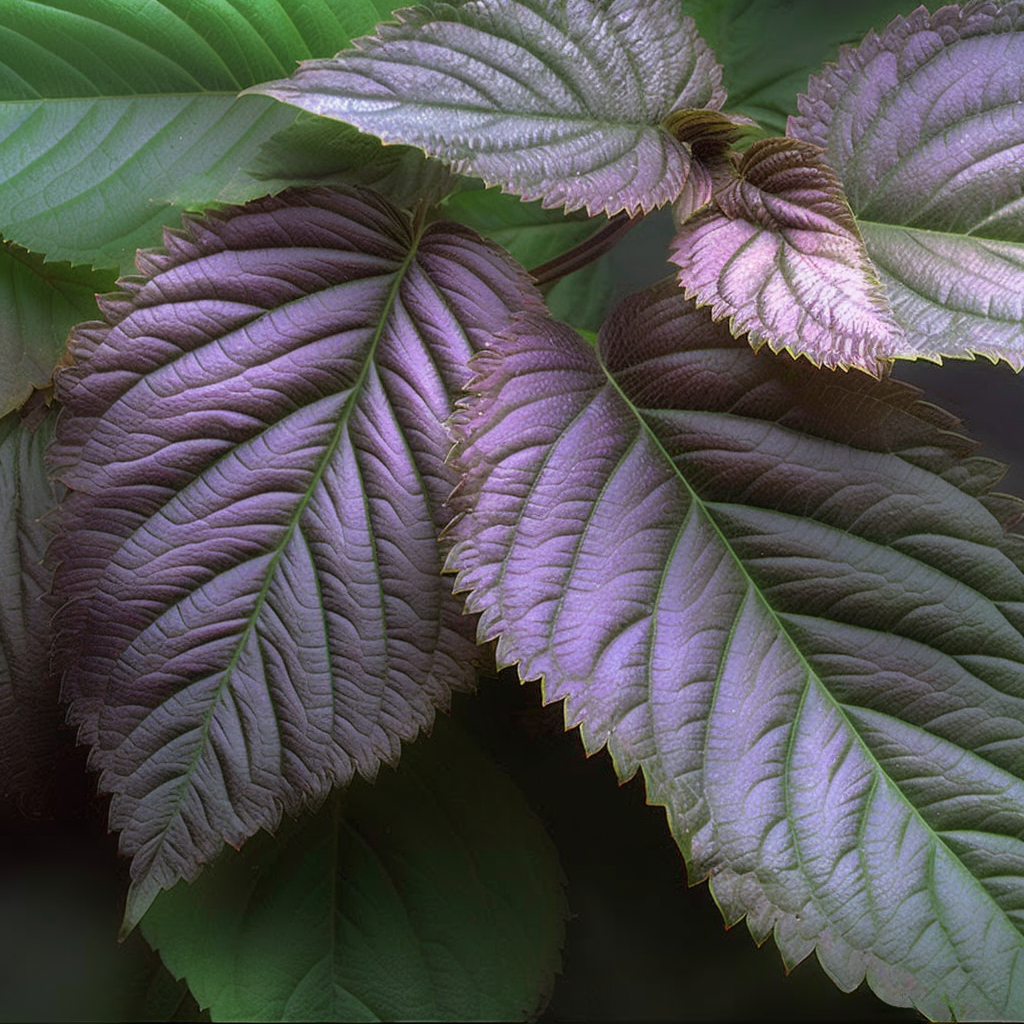
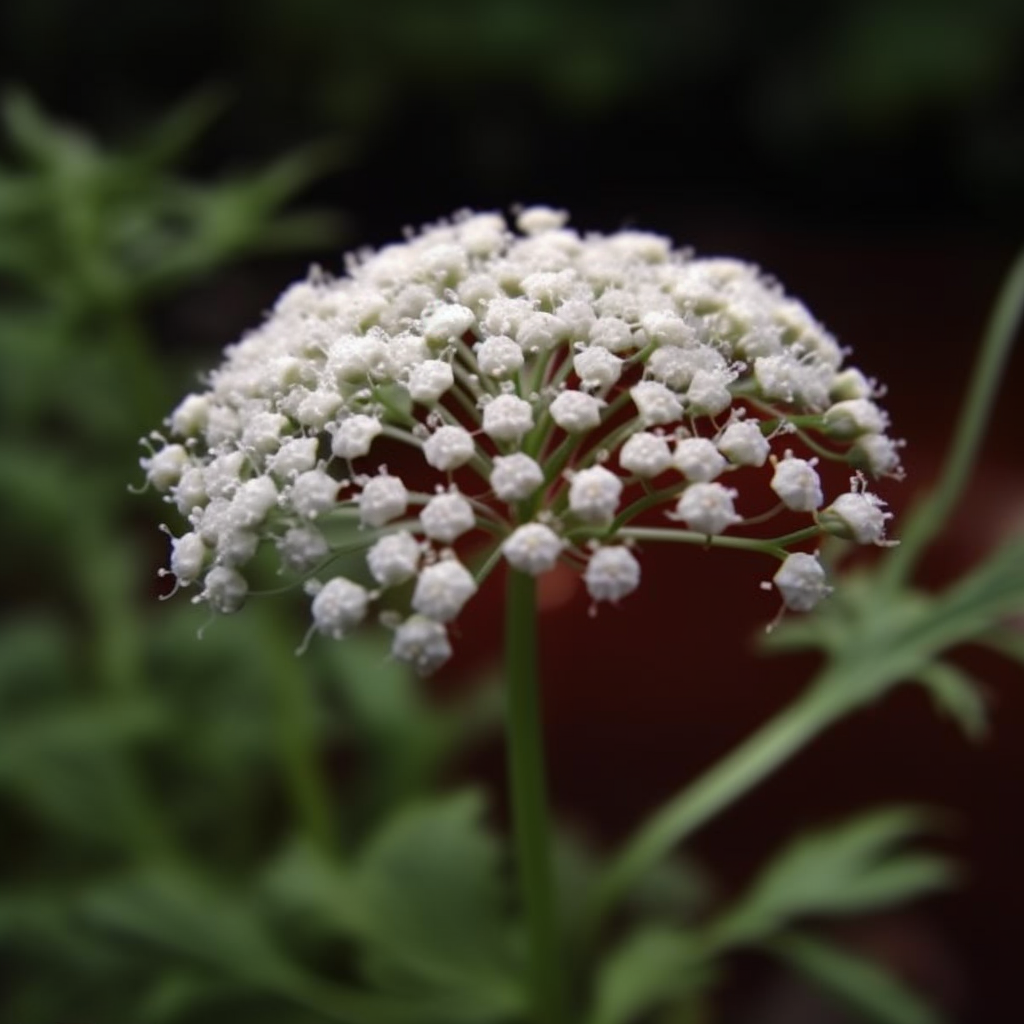
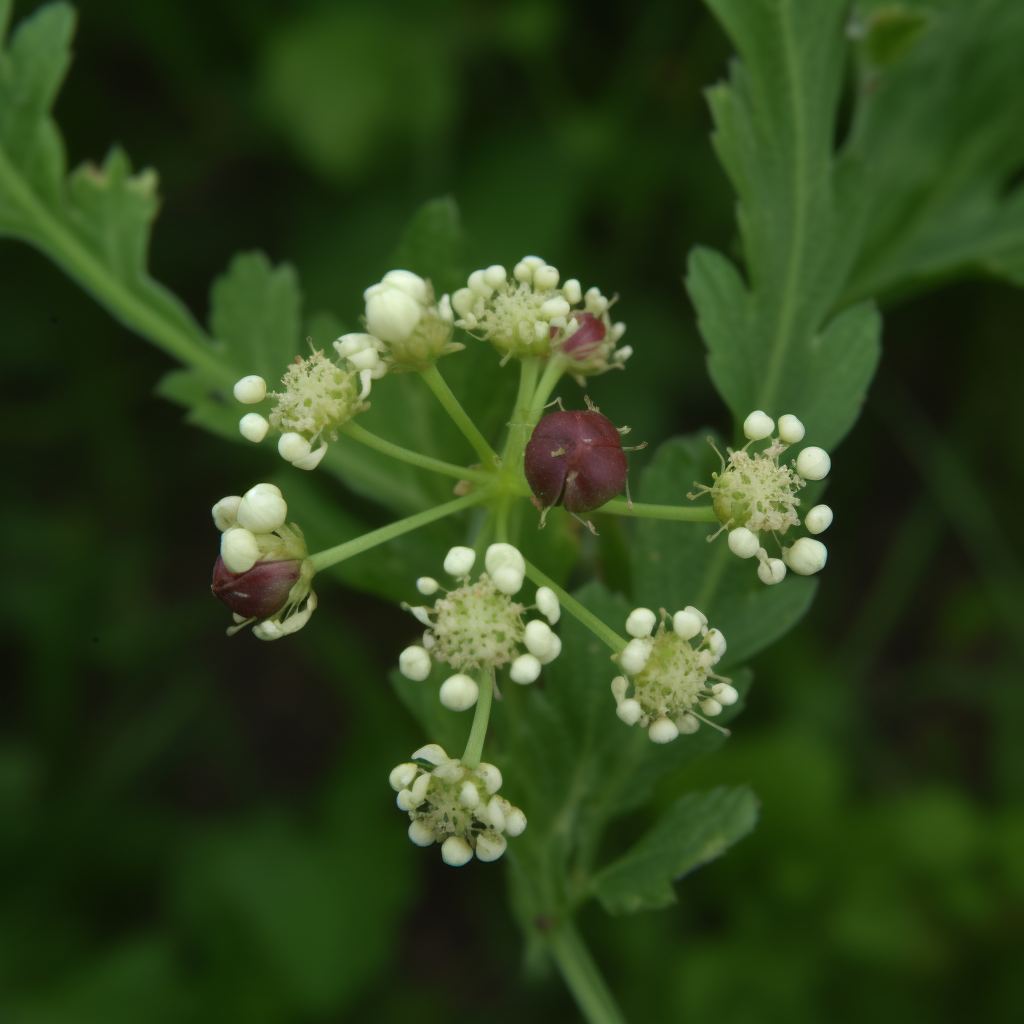


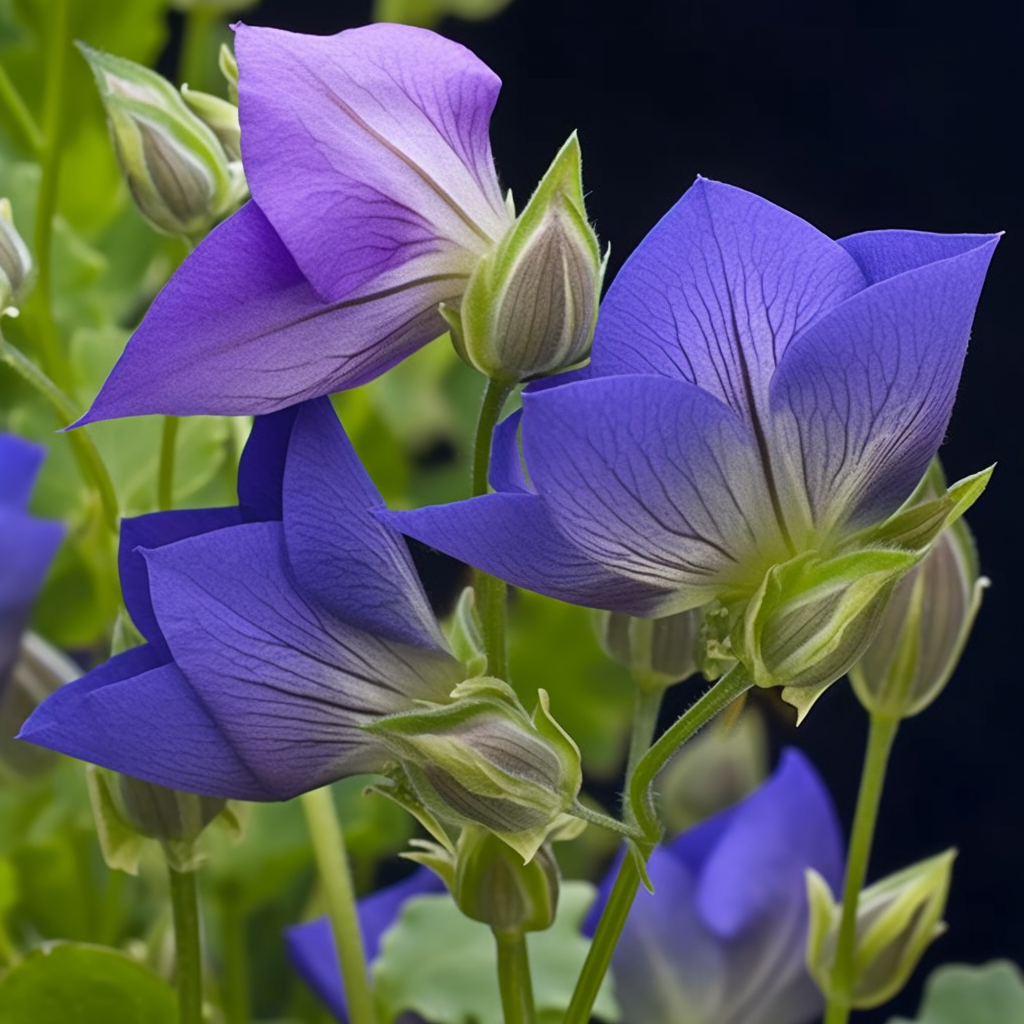

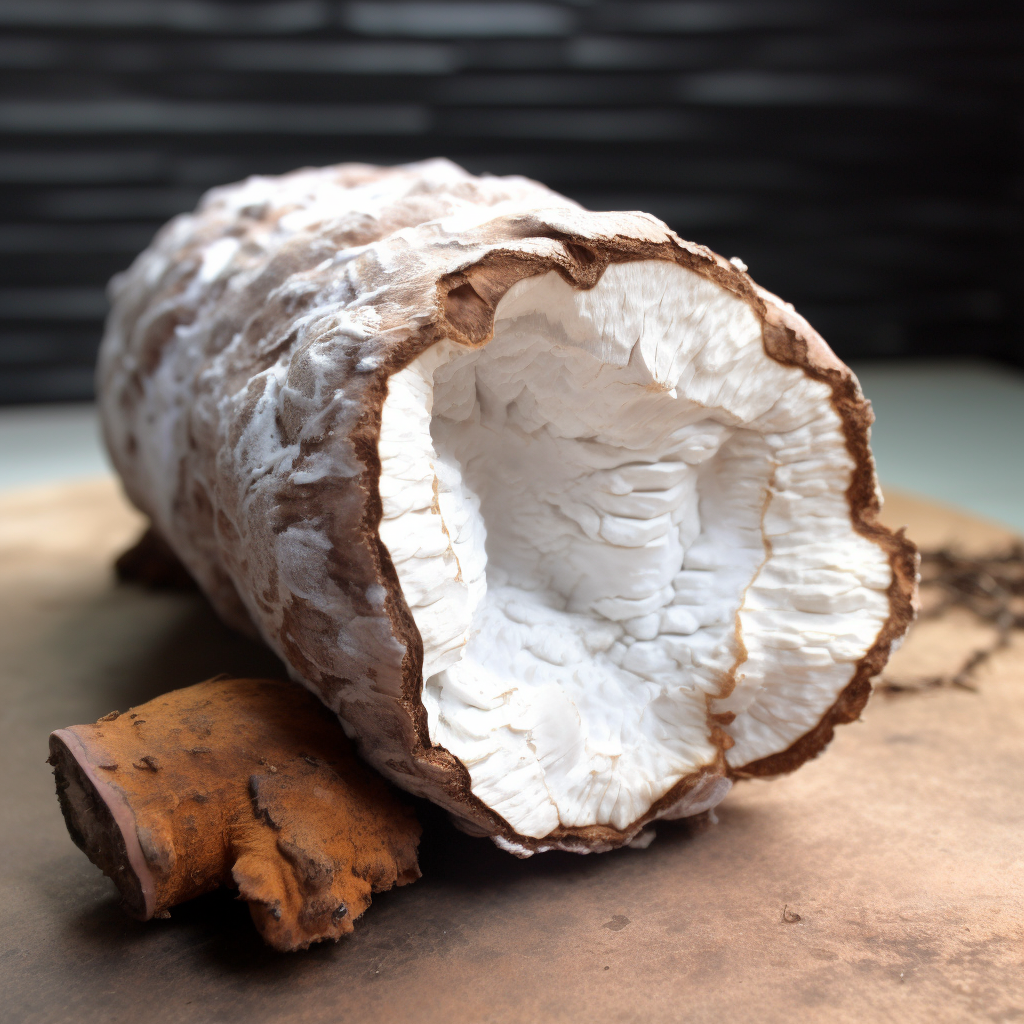


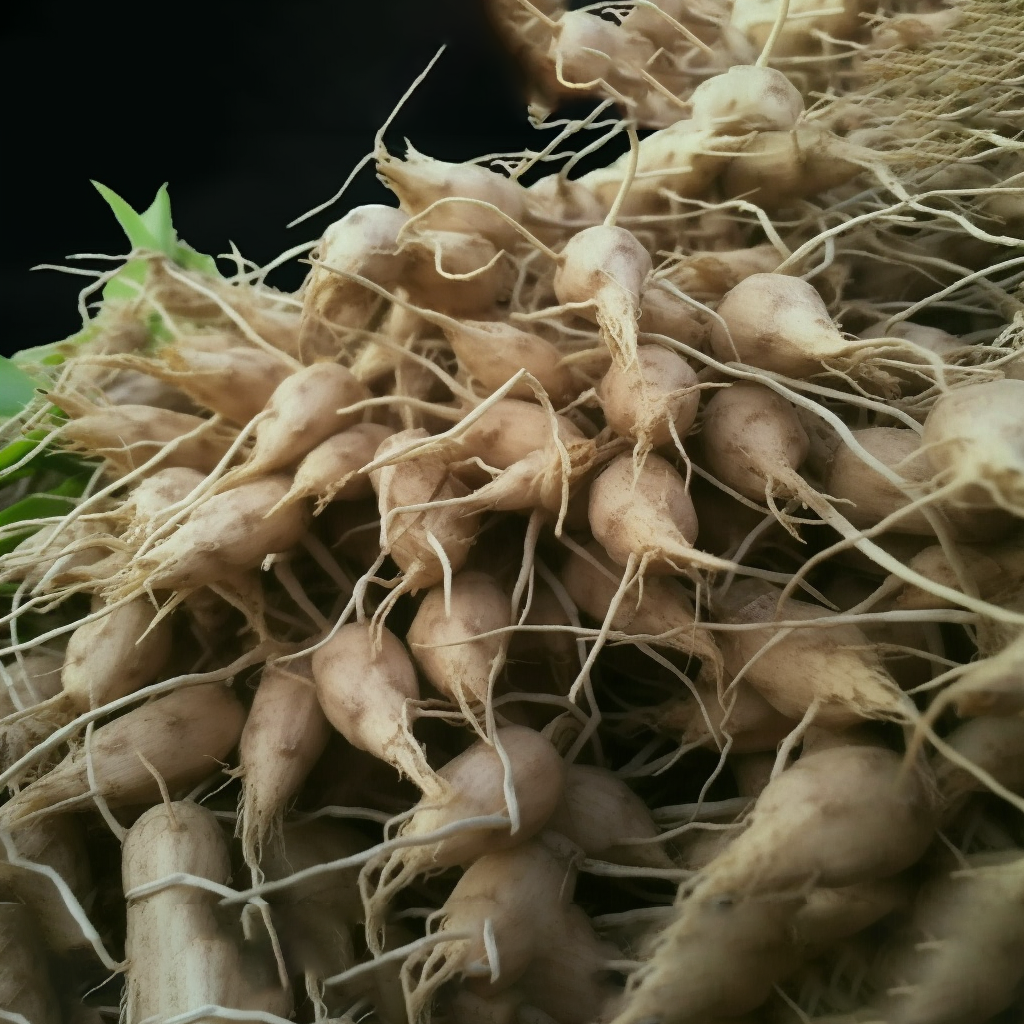


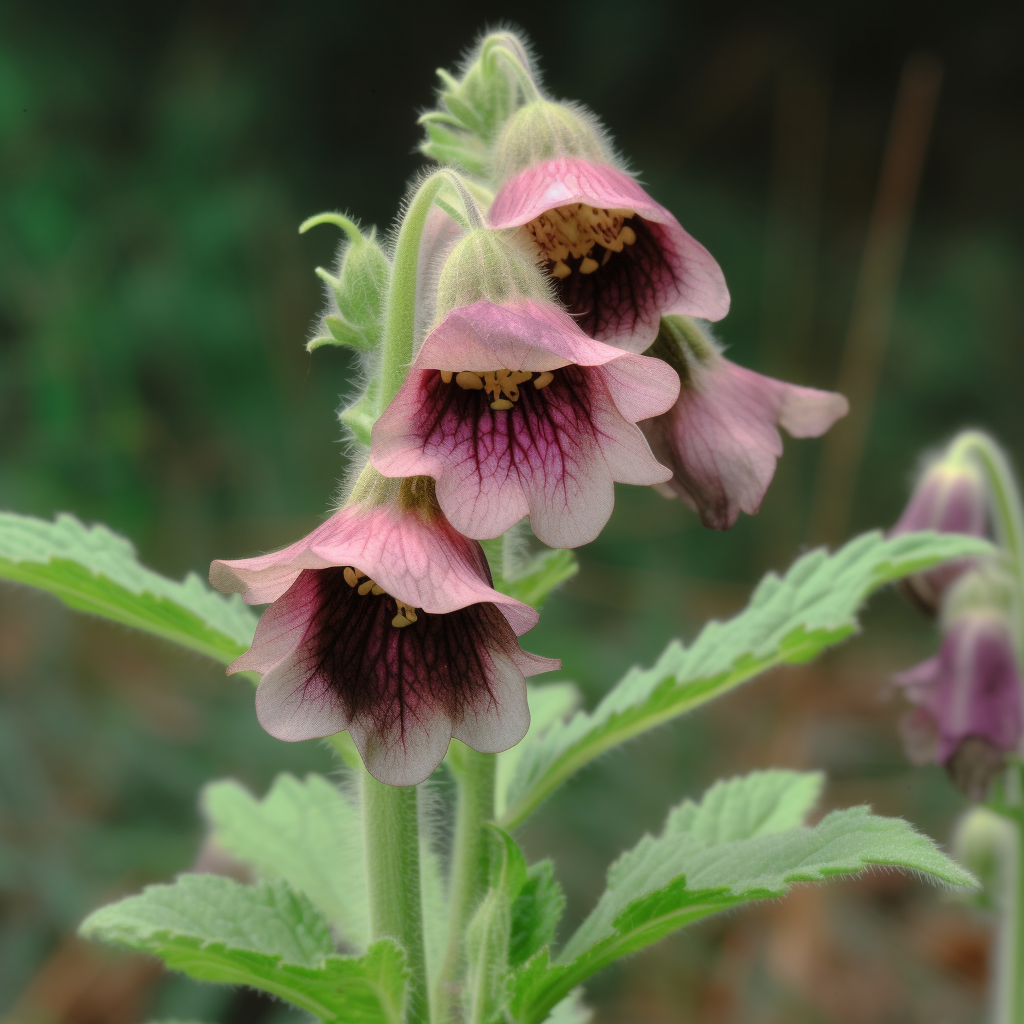
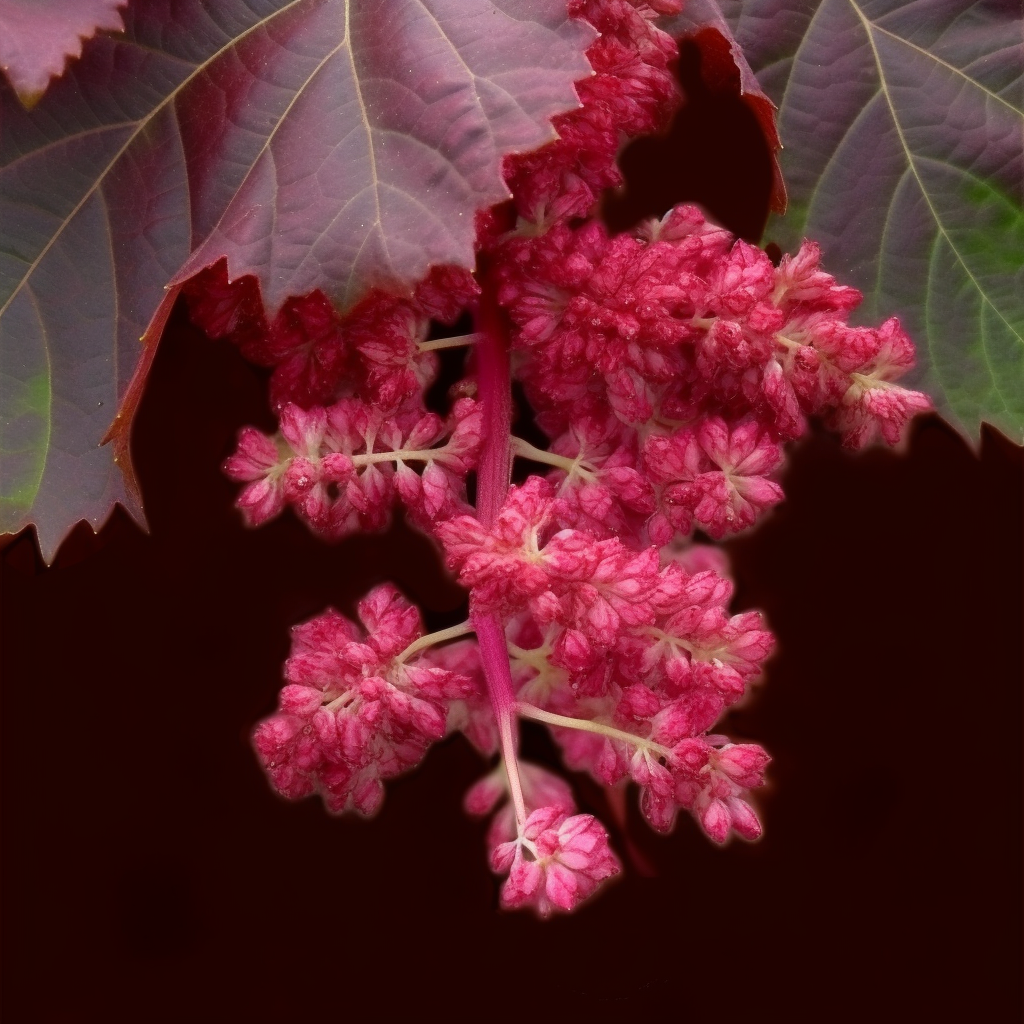

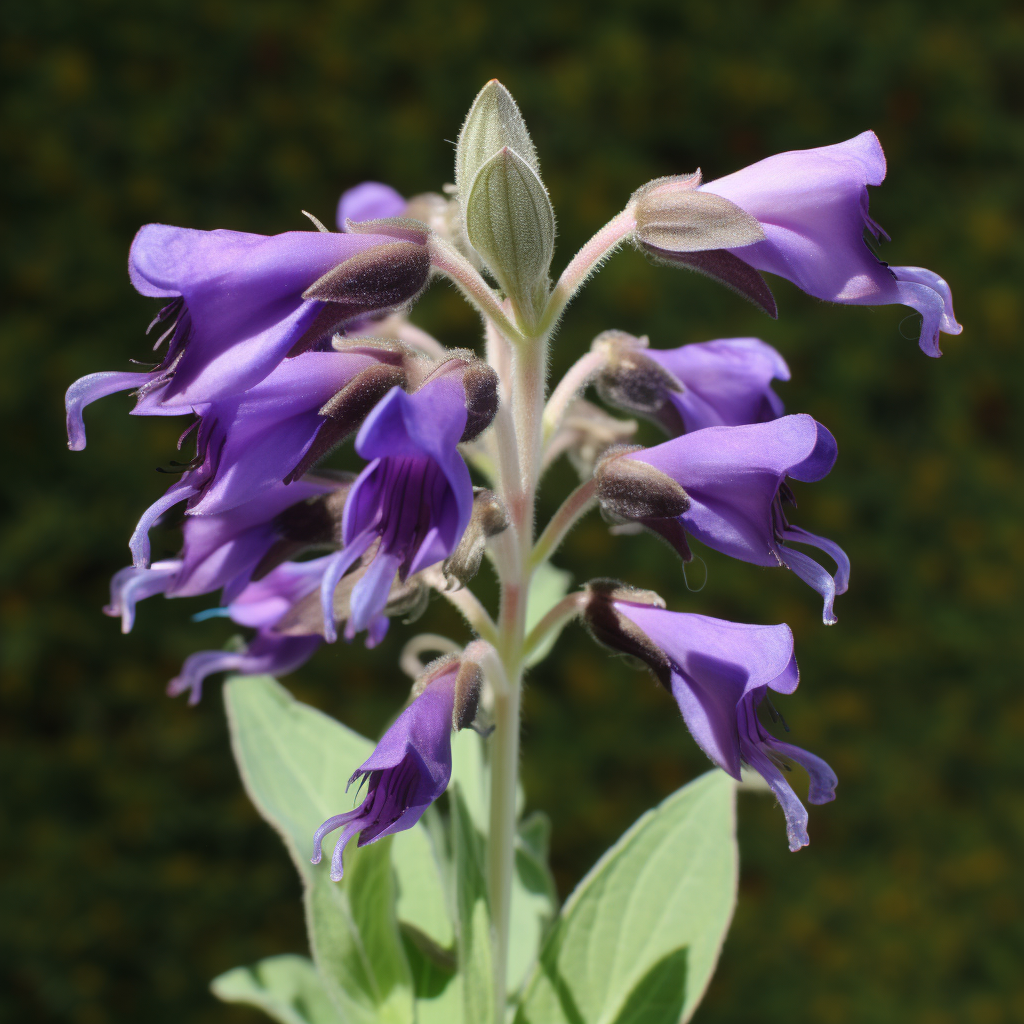
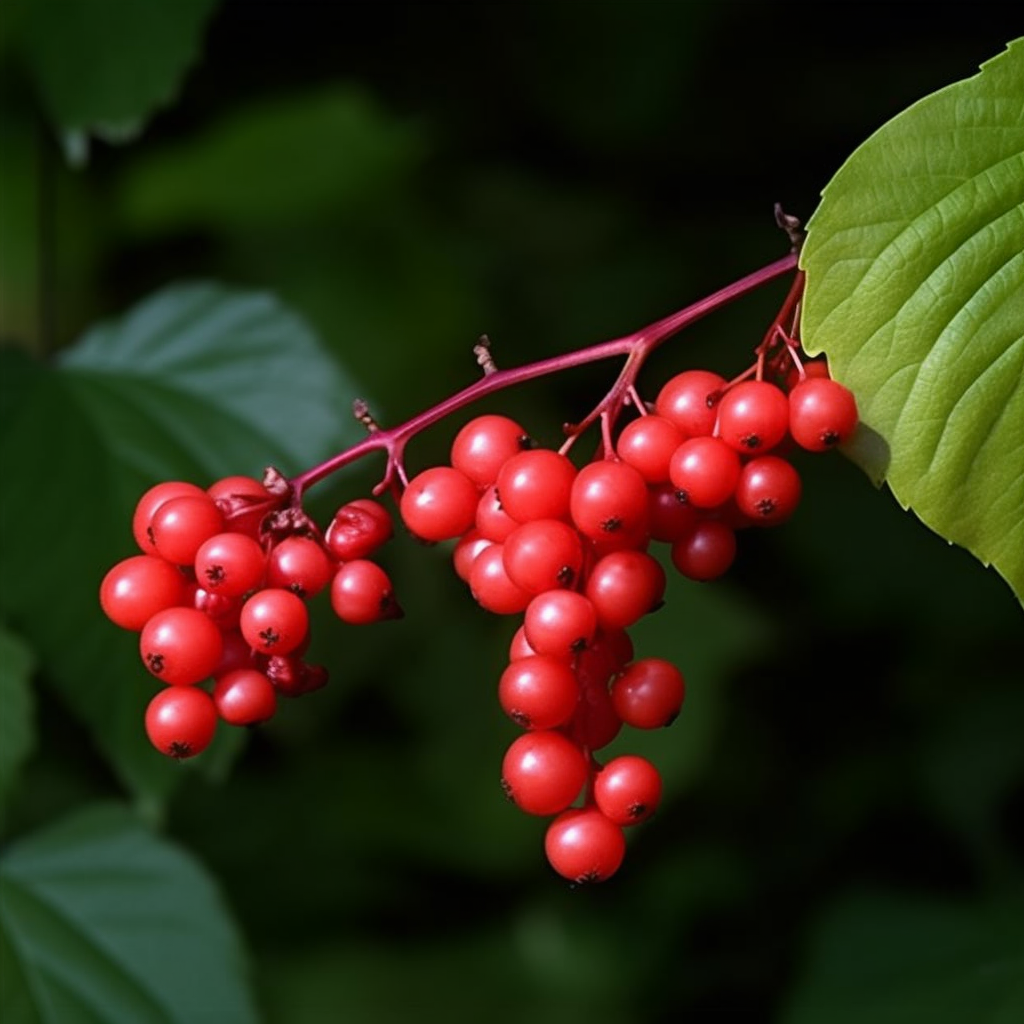
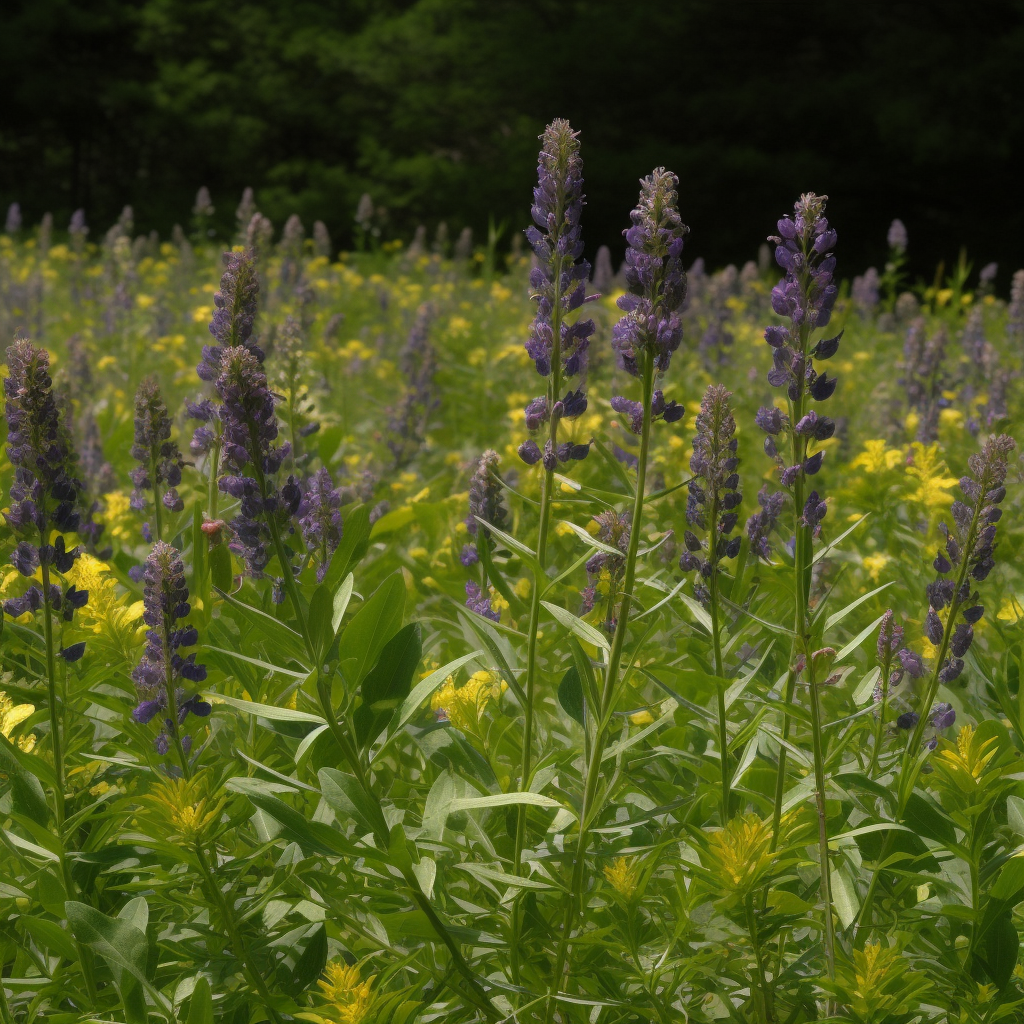


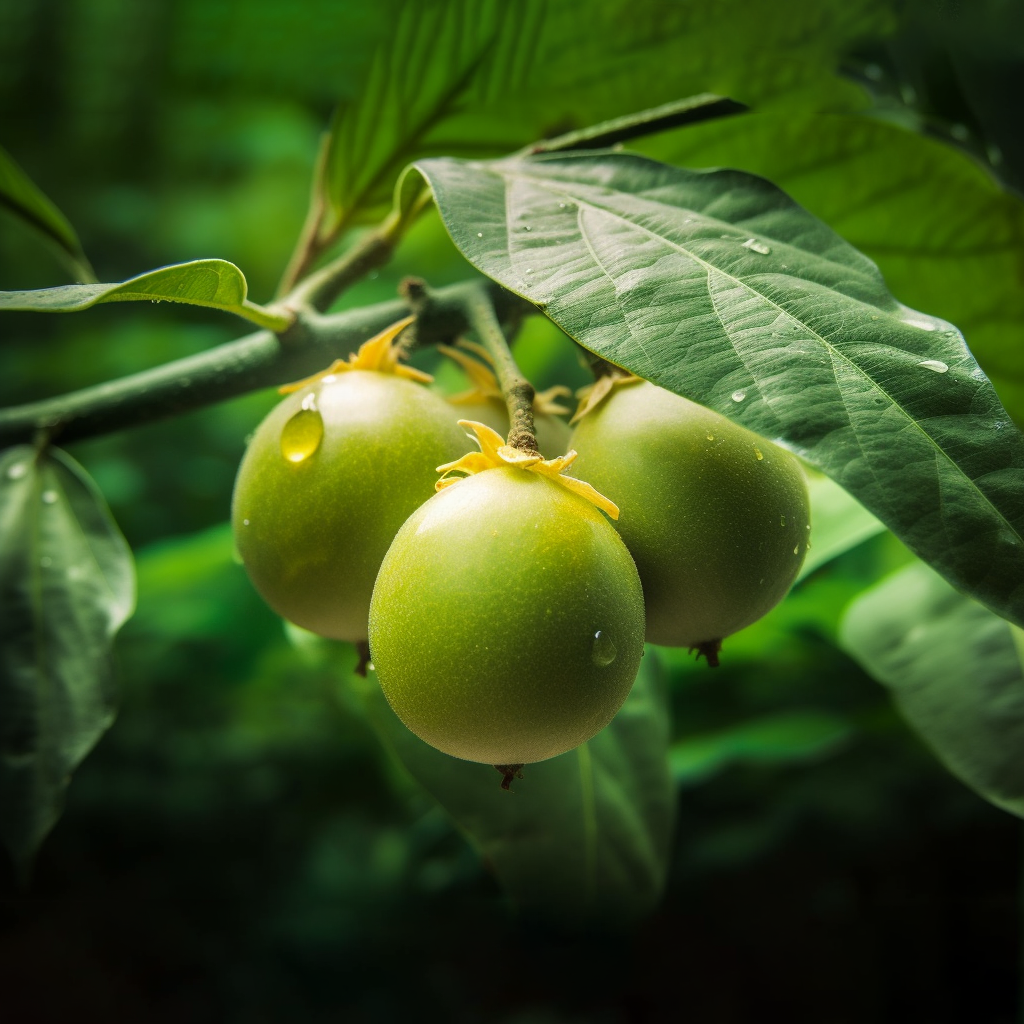

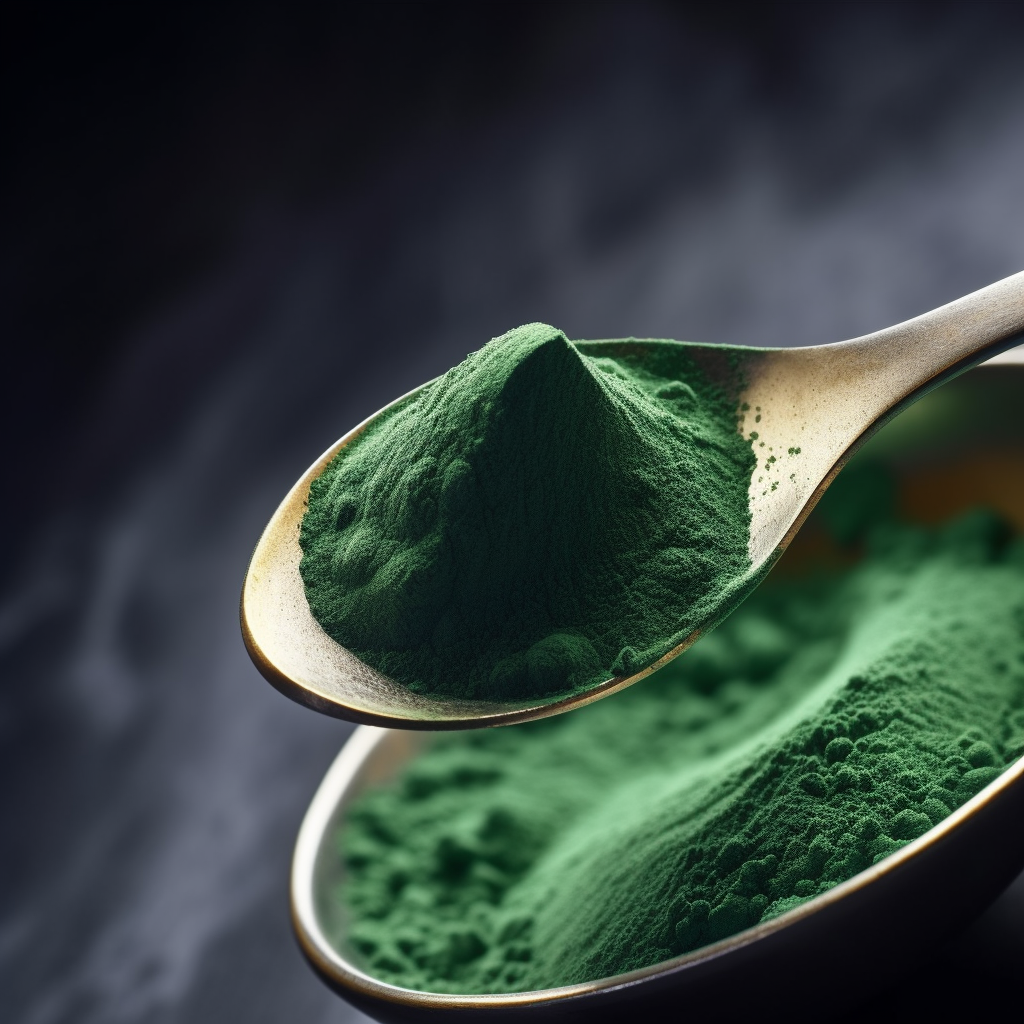

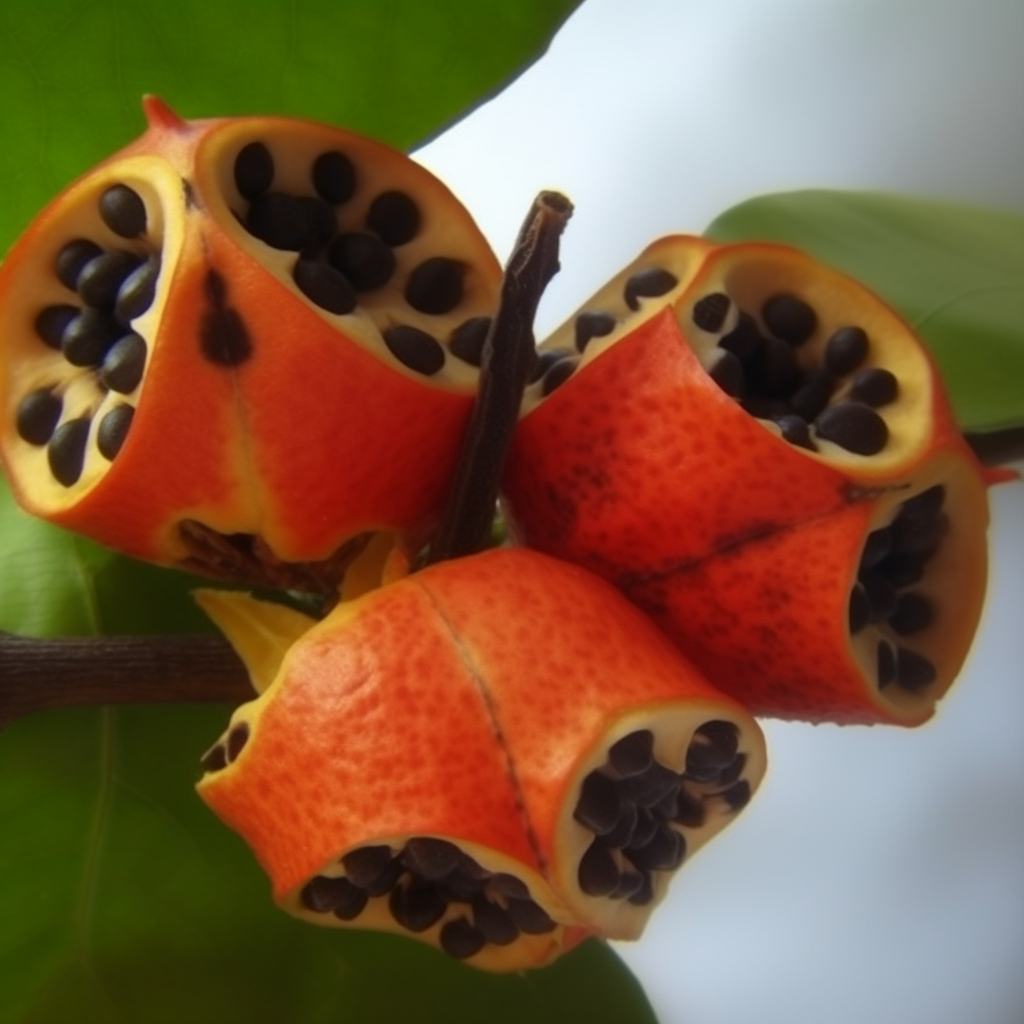

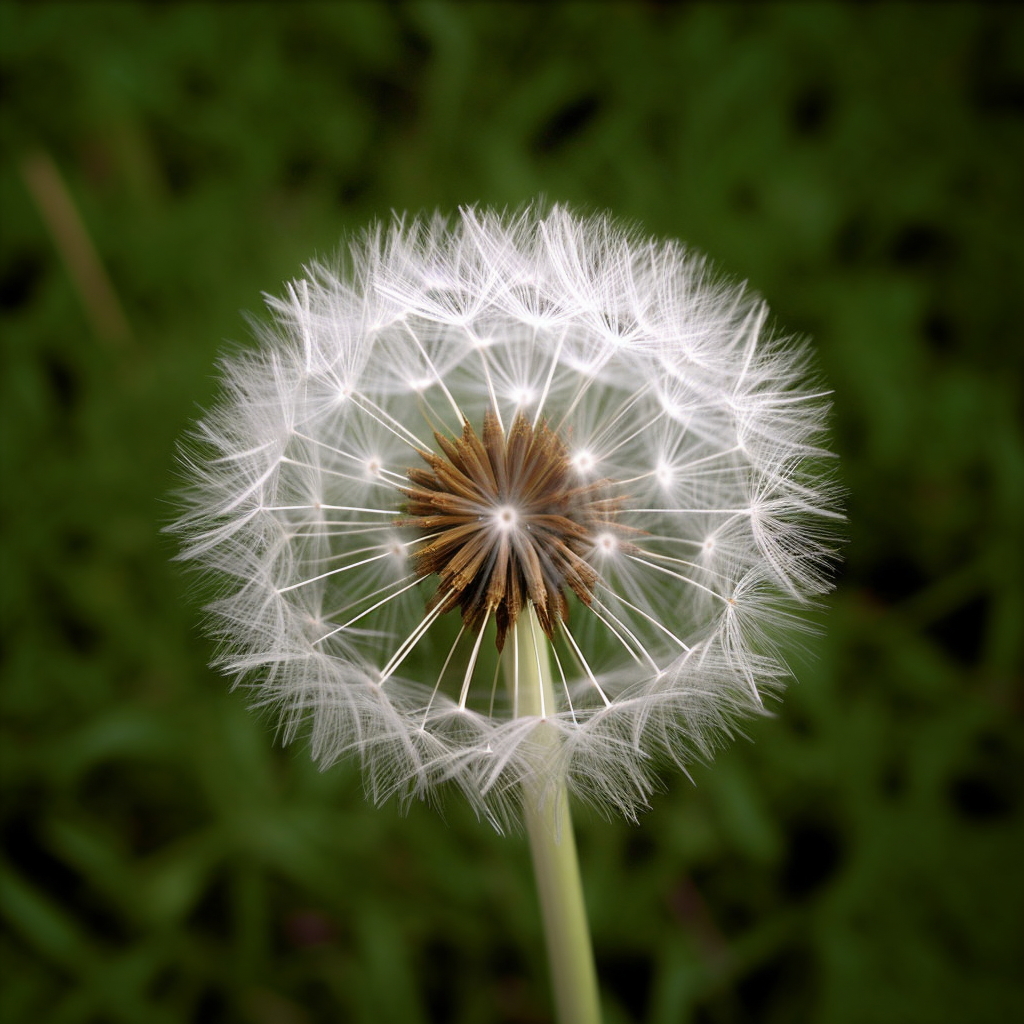
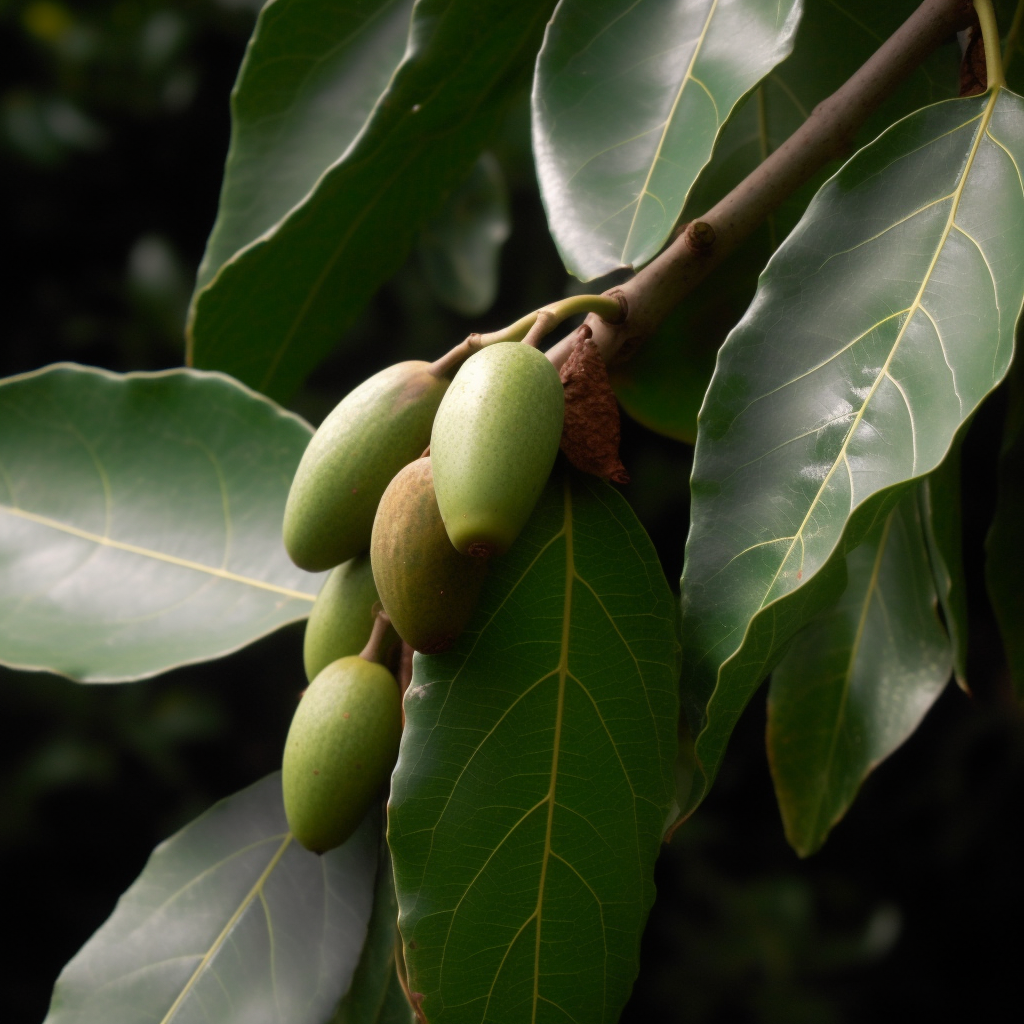
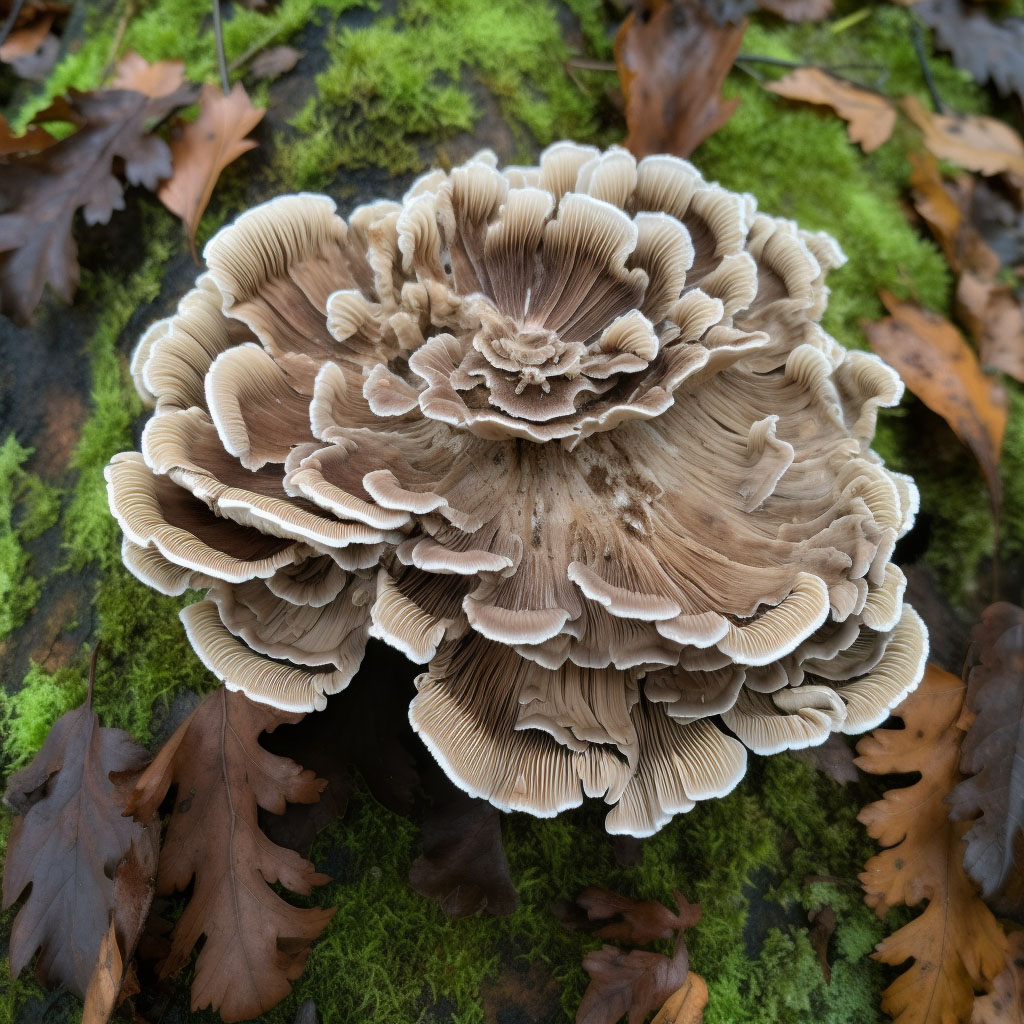

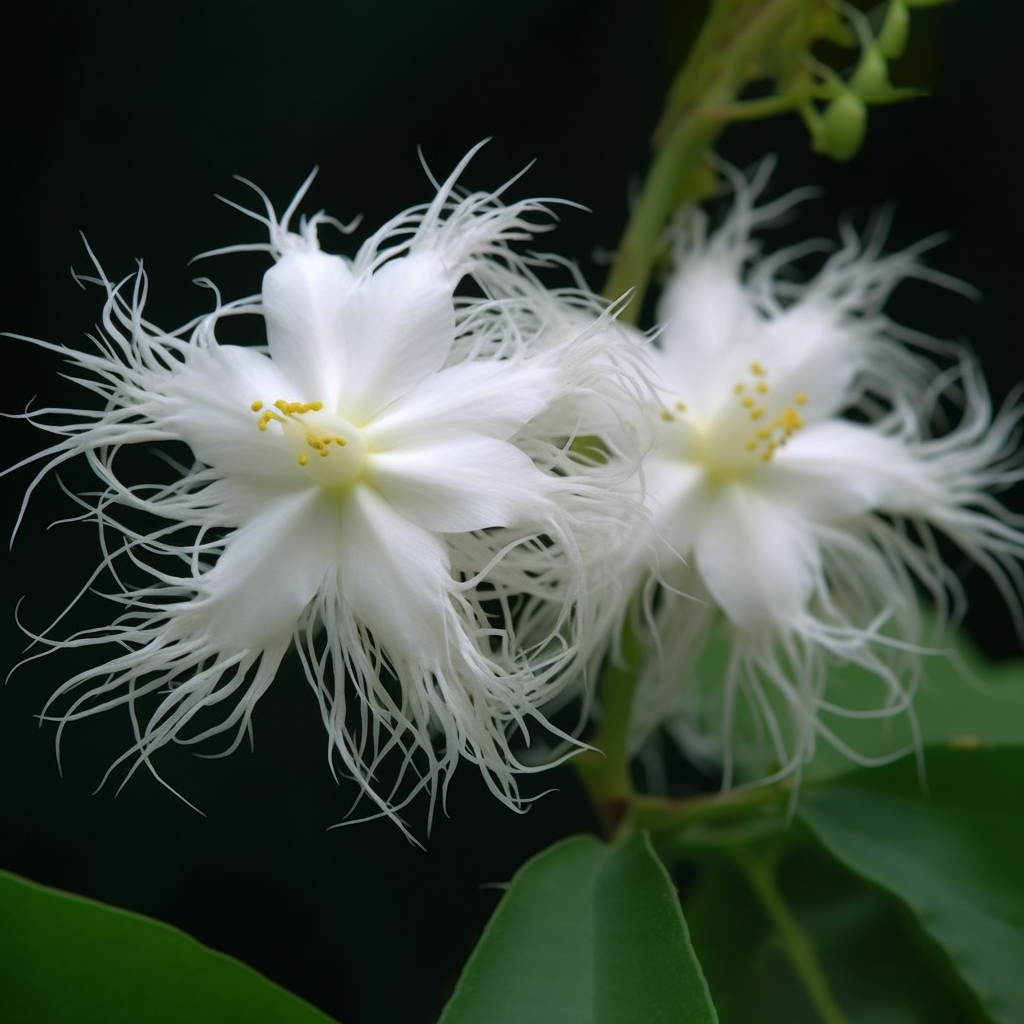

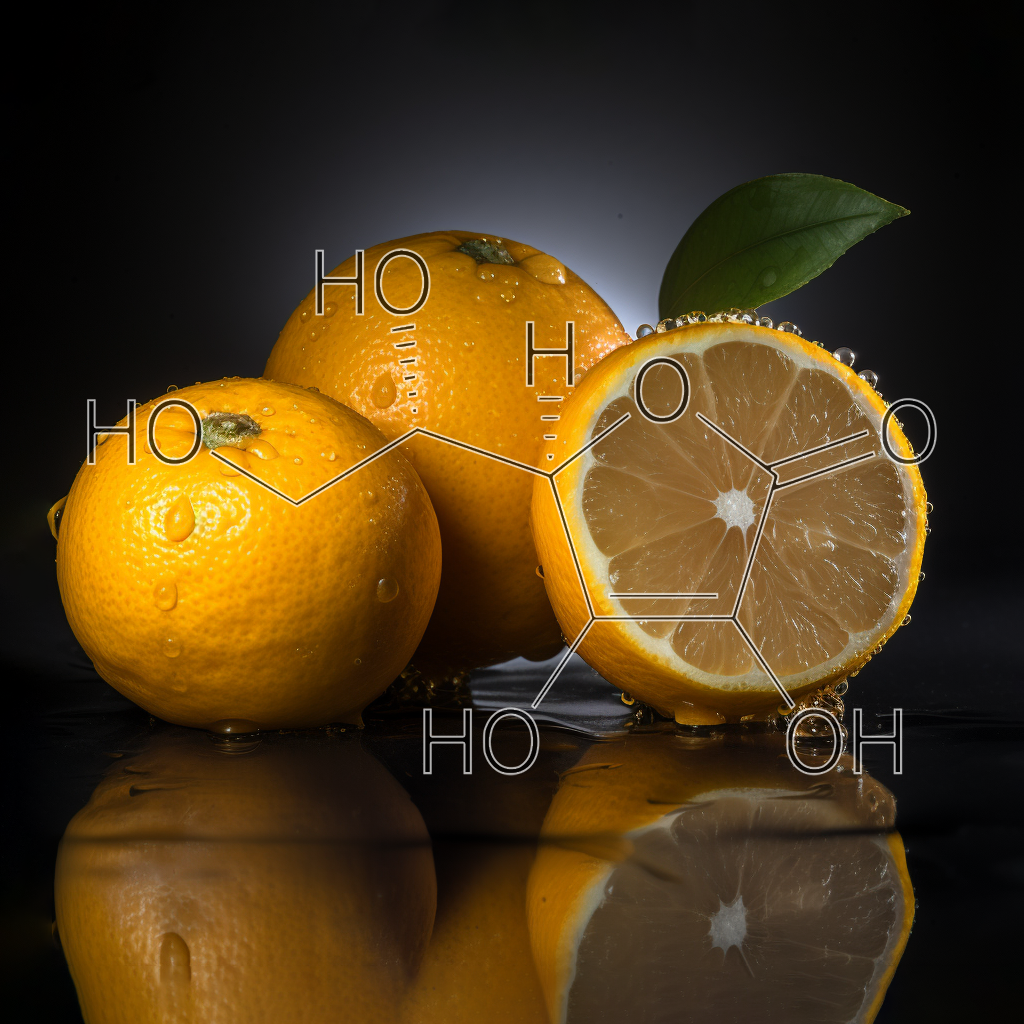
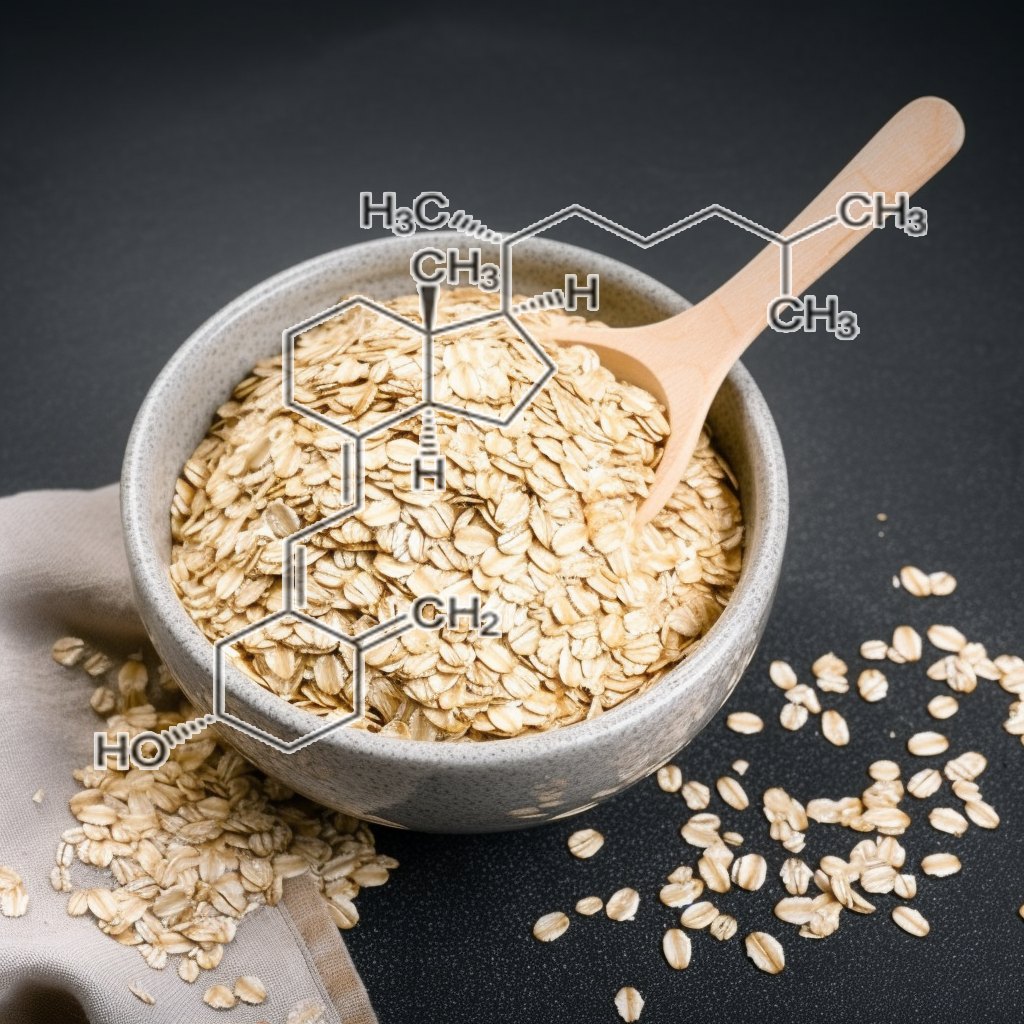
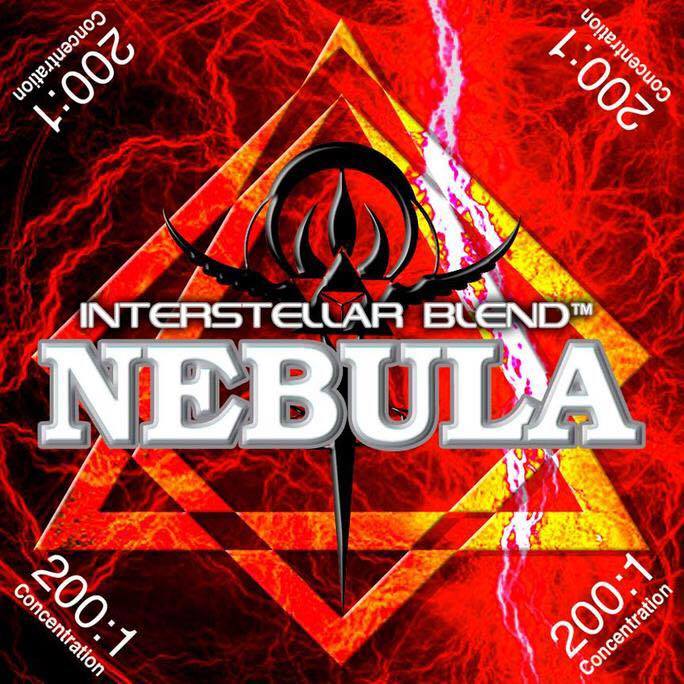
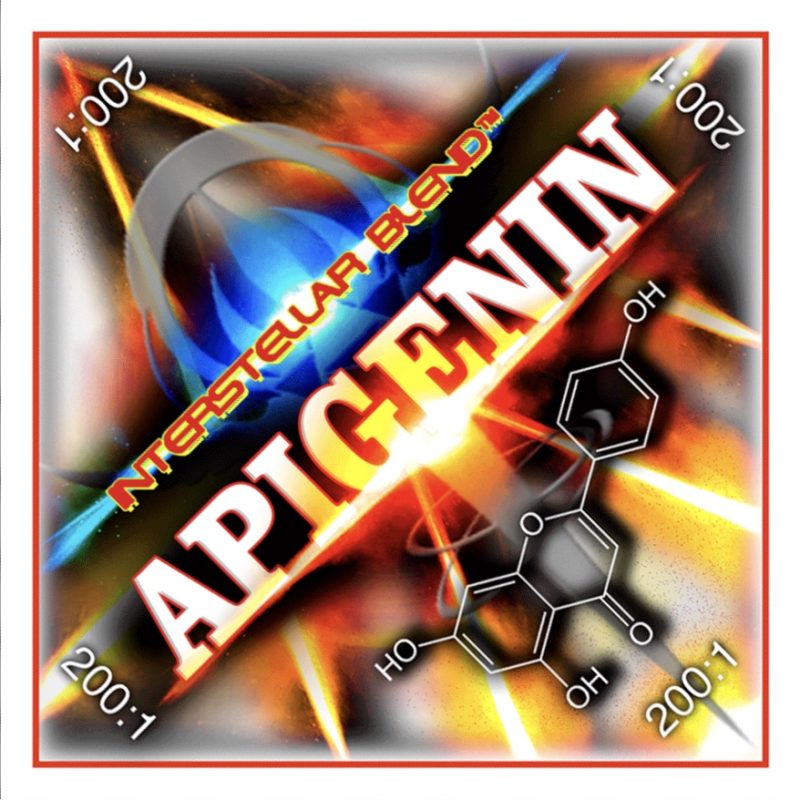
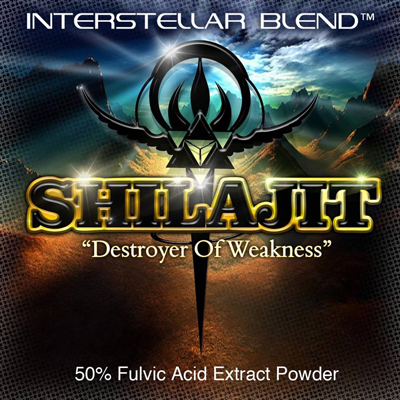
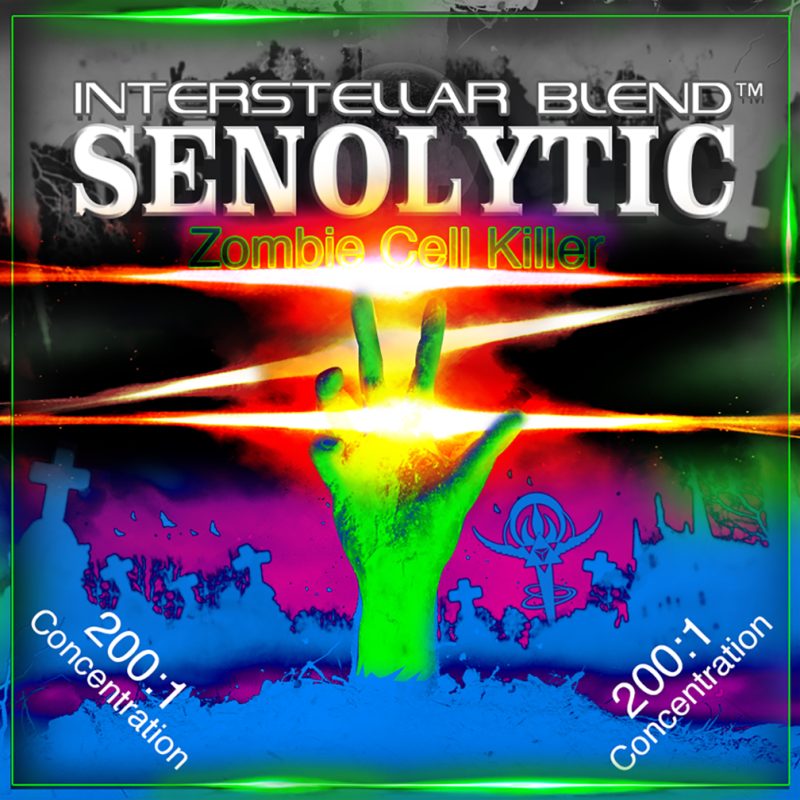

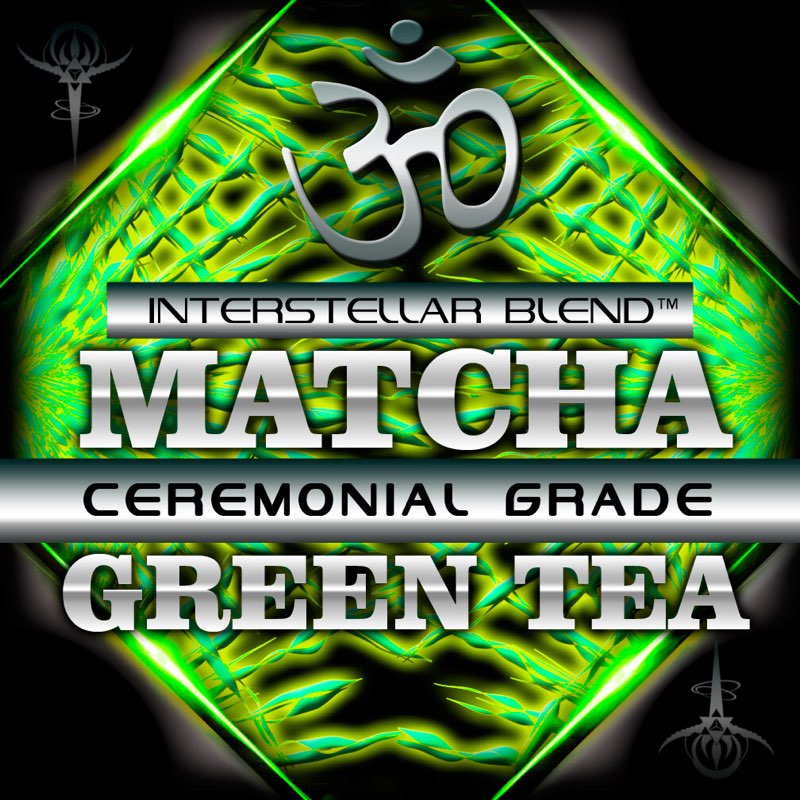
Rich Ryan –
LUNG POWER Review:
Like many, I got COVID plus variants several times during the Plandemic. I was taking several Interstellar blends (especially Victorious – Anti Viral) plus Chlorine Dioxide, so my symptoms weren’t serious. Honestly COVID was a piece of cake to beat if you’re taking the right stuff. If another Plandemic hits in the future, I’d definitely recommend 1/2 tsp of Victorious twice a day. It really works.
However, I did experience some decreased lung function after a few infections. I got out of breath easier during cardio. It felt like my lungs only filled up about 80% when exercising or running up stairs. I got a sample of Lung Power to try and figured why not start with a big dose? (Big doses of Interstellar make everything in life better) So I started doing 1/2 tsp of Lung Power at night. Within 2 weeks, I started to feel the difference. My Lungs felt relaxed and calm when I breathed deep. It was getting easier and easier to breathe over time. My lung capacity felt larger and larger. Within 8 weeks, I would say my Lung capacity had returned pretty much to normal. It erased the damage from COVID! Excellent!
I take around 12-14 blends from Interstellar on a daily basis right now, and those blends plus regular fasting and exercise has improved the quality of my life immensely.
Lung Power is another excellent blend from Interstellar! Definitely a keeper!
Simone de Waal –
My LUNG POWER Review
I am 57 years of age and have been a severe Asthmatic since childhood. I was diagnosed with COPD, which has steadily gotten worse over the last 10 years, with my breathing becoming more and more difficult and substantially labored. I also suffered from acute Sinusitis, experiencing the most debilitating sinus headaches, that would cripple me for days.
I spoke with Gavin and he recommended that I try the Lung Power.
From the moment I first took it, one month ago, I have had simply incredible results, just aMaZiNg?!
I started by taking 1/8th of a teaspoon first thing in the morning and within 15 minutes of taking it, I got relief from my symptoms. I could actually ‘breathe’ again and feel the phlegm and mucus drain away and disappear.
After two weeks, I decided to up my dose to 1/8th of a teaspoon, morning and evening…
All I can say is WOW.
The post nasal drip subsided completely, I have absolutely had no sinus issues, at all… My Inhaler use has been cut by 75% and the Elephant that had been sitting on my chest for the past decade, just got up and left… Incredible!
All in all the results have been absolutely Life Changing for me and I can not recommend this product highly enough.
I am so very grateful to Gavin and the Interstellar Crew for this outstanding, all natural Blend.
Lori –
🌟 Discover the incredible power of Interstellar Blends! 🌿✨
Last night, as I settled into bed, an annoying cough and tickle in my throat woke me up. You know, the kind of bronchitis or “allergy” coughs that occasionally creep up on you. Luckily, I had prepared myself for such moments with a couple of exceptional blends: Victorious and Lung Power from Interstellar Blends. 🙌
Without hesitation, I rose from the bed and mixed 1/8 of a teaspoon of both blends with warm water, then downed it in one go. Believe it or not, within a mere 20 minutes, I experienced a remarkable transformation. My breathing became clear, and the coughing vanished! 🌬️😮
These blends have become my trusted allies for situations like this, ensuring I’m ready to face the upcoming winter months when the cold and flu season takes hold. I owe a huge thanks to Gavin Robert McGowen for his expertise in crafting these exceptional herbal blends. He truly has a blend for every need! 🌿💪
Catherine OSullivan (verified owner) –
Lung Power:
I purchased Lung Power for my husband a couple of weeks ago, this is the time of year his asthma flares up along with other airborne allergies, my man of few words stated this morning it’s working and he’s breathing easier.
I prepare the blends for our coffee so for a couple of days I didn’t tell him I added the new Lung Power I also decided to try it out even though I don’t have any lung issues, here are my observations.
Husband: breathing is easier, not clearing his throat or blowing his nose like he used to, sneezing this time of year is less, hasn’t had an asthma attack this season and the best part for me is his upper respiratory bodily noises have lessened 🥳
My experience:
I thought my lungs were fine but I immediately felt a clearing of my sinuses and airways, I have become more aware of my breathing and have started deep breathing exercises on a daily basis. Winter season is arriving soon and Lung Power has been added as one of our regular blends!
Thanks Gavin, Catherine O
Dylan Cobb –
LUNG POWER review:
This blend is absolutely incredible! I am a carpenter that is used to breathing in saw dust and other debris throughout the day. I was even exposed to asbestos when I was doing demolition work at a house a few years ago and I always felt like I might have done some damage to my lungs. Regardless if these foreign materials have effected my lungs in any way, I definitely noticed immense improvements in the strength of them after taking Lung Power for only a few days!
It feels as your lungs can hold so much more air and that they can utilize more oxygen off shorter breaths. I noticed that my sense of smell has enhanced tremendously and has been increasing the more I take it. I wanted experiment with different activities that I figured would enhance these benefits. One of the things I did was to go into the steam room with eucalyptus after taking Lung Power. The steam room in conjunction with Lung Power was absolutely amazing! Both work synergically and may cause you to cough up all the crap you’ve been breathing in!
I also used Lung Power in conjunction with raw garlic, which also worked synergically together and enhanced the effects of the blend. With the amount of debris, foreign material, and polluted air that we breathe in on a daily basis, it would be wise to incorporate this formula into your regimen. Especially when you consider that lung cancer is one of the top causes of death in the world! Don’t second guess yourself, you only get one pair of lungs in this life!
Tonia W (verified owner) –
I’ve purchased many of Gavin’s amazing blends but I really have to talk about Lung Power. I originally purchased the sample pack, then the large pack because of how well it worked.
I’m not sure what was going around but my husband and I both had a cough that seemed to just appear out of nowhere…his was worse than mine (probably because I take the blends😁).
I was tired of hearing him cough so I whipped up the Lung Power in some grapefruit juice and said, “TAKE THIS”! He did and he barely coughed that night.
After taking other meds to no avail he continued taking the Lung Power on his own as he saw it worked.
Ironically he’s worked in the pharmaceutical area for years, so BAM!
My experience with taking the Lung Power is my cough subsided and I could feel the mucus breaking up and clearing out.
We’ve both had Covid according to the tests and have had an off and on cough.
Lung Power is the best if you have any respiratory issues. I’m also pairing it with Victorious.
Gavin, you’re THE BEST!!
Jeremiah Holguín –
LUNG
I respectfully preface that I am a real person and if you join the telegram group I will talk to you ad-nauseam about these products: I stand by the honor of my very word. 11 months ago I nearly died. I experienced brutal chemical exposure that almost killed me and completely bricked my neurological, cardiovascular, hormonal systems, REM shot immediately that effect alone nearly drove me crazy it took the fullest extent of my knowledge base as a regenerative medicine consultant to keep myself alive. im 29 years old and have worked DEEP into detailed empirical studies of the somatic experience regenerative medicine since I was 16. By 20 I was conversing and being mentored directly by Ph’D’s and MD’s; I say this context because For me It was life or death back then in another, just as catastrophic way.. it’s a very personal story and if you hang out in the telegram and get to know me and I’ll tell you that one if you really want to know. But this experience really gave me the opportunity to really test the full gambit of interstellar products which I had already been using for about a year and a half prior: as close to 22/2 as often as possible / 88/8 on a fairly regular basis.
The chemical damage occurred within 3 breaths of entering into a room I had no prior knowledge would be full of off gassing chemicals from containers that had been stored in the room while we were away— It had been 5 months since we had returned to this job site. My lungs and heart incurred immediate damage it was quite catastrophic and within 48 hrs my lungs and sinus were full of mucous, that eventually got infected, and it led to pneumonia. It was quite intense to say the least.
I am very happy to be alive …..
…..and this is the seriously short version of this initiation. It’s truly been the most extensive test of my medical training that I’ve ever been in. i actually took a bullet too for context: I had been asked two days in a row very last minute to show up on this particular day to help but my schedule is booked months in advance. After the second call I could say no, and I changed my schedule around. if I had not done that, my boss, who is a 76 year old woman, and her 78 year old business partner would have been the ones to walk into that room. A catastrophic thought but there was no getting around showing up for work the day there were delicate repairs to a public installation we’d done that had to be amended.
So I understand that there is a deeper meaning to this all and the fact that my skills got tested so extensively I have been changed for the better on a deeply spiritual level in a way I could never convey through the text on this screen. My work quality and caliber of intent evolved in a positive way because I had to reach so deep within myself to keep going. It’s important to know that my MD lives down the street from me, and he has also mentored me directly for 8 years. I know how to administer medical care for myself. Mindfulness is actually my longest kung-fu practice and now I can really stand by my knowledge base through and through no matter who you are. I swear on my honor I will be your Greatest ally to the Greatest extent of my capacities if you believe in resonating with the fire of life as potently as me.
so with all this important prefacing context being said:
the Lung blend works
I used to literally SUFFER if I was around someone smoking.
Now it’s no problem and I have recently began doing tiny amounts of sprinting again.
Thank you Gavin and The Entire Interstellar Team!!